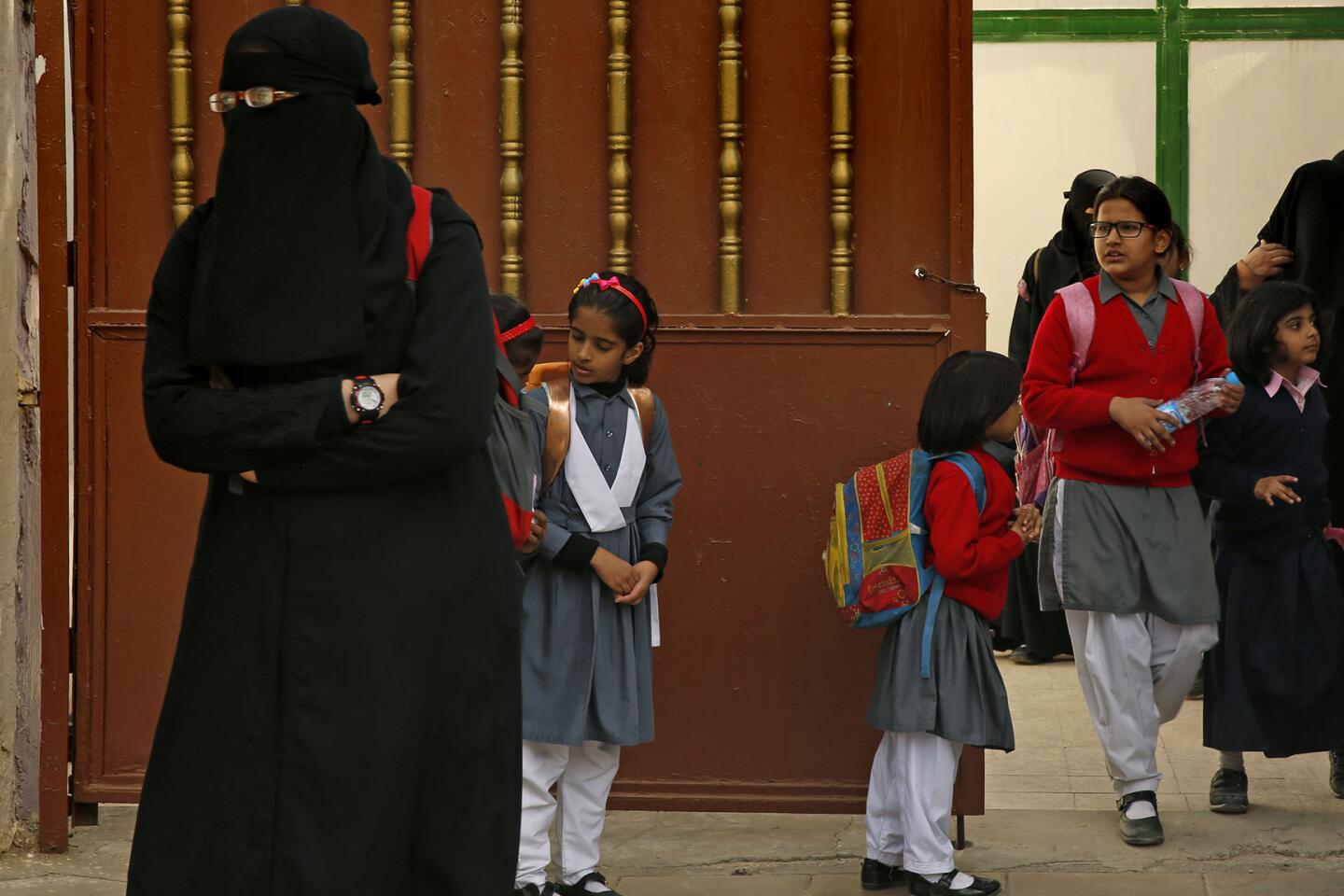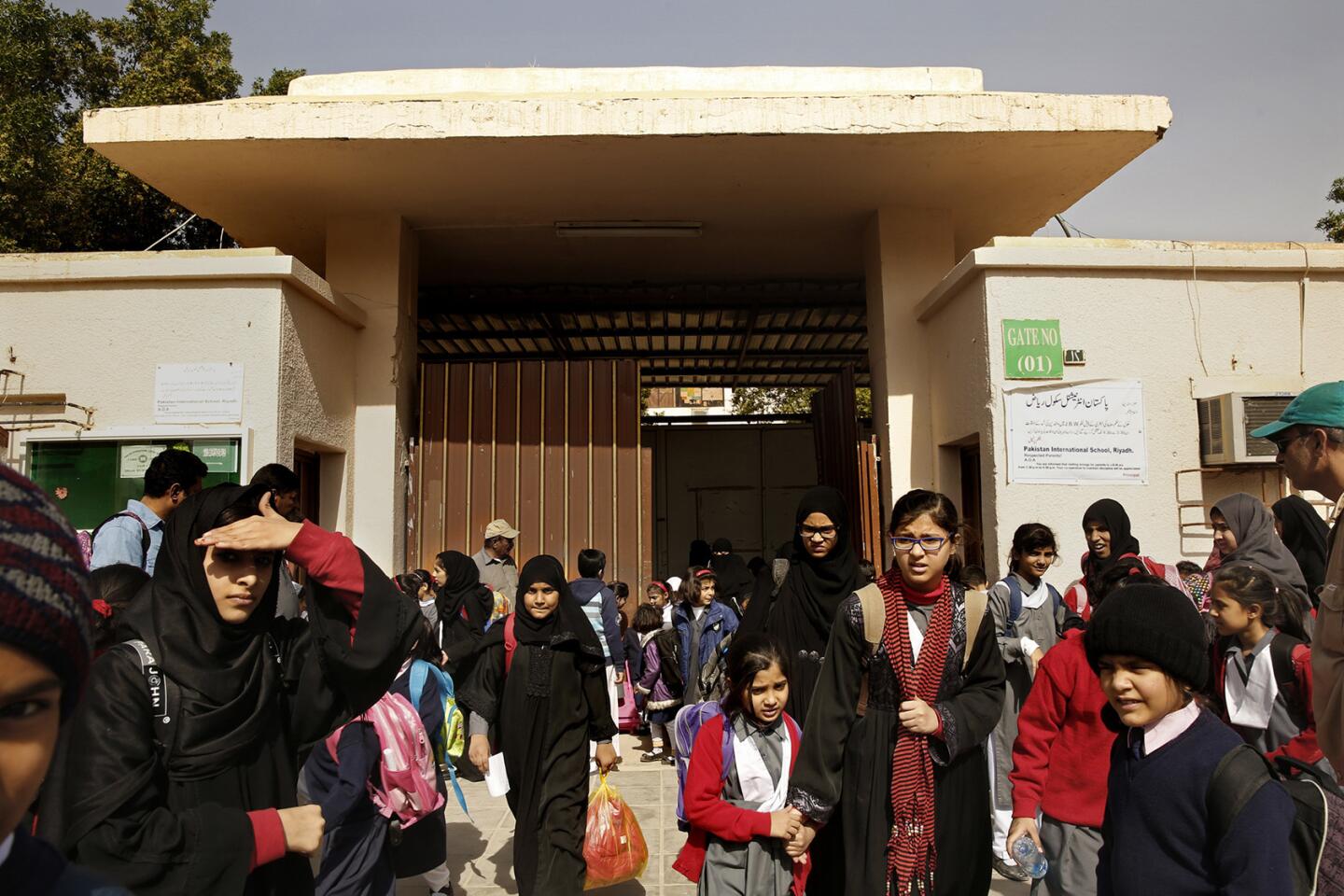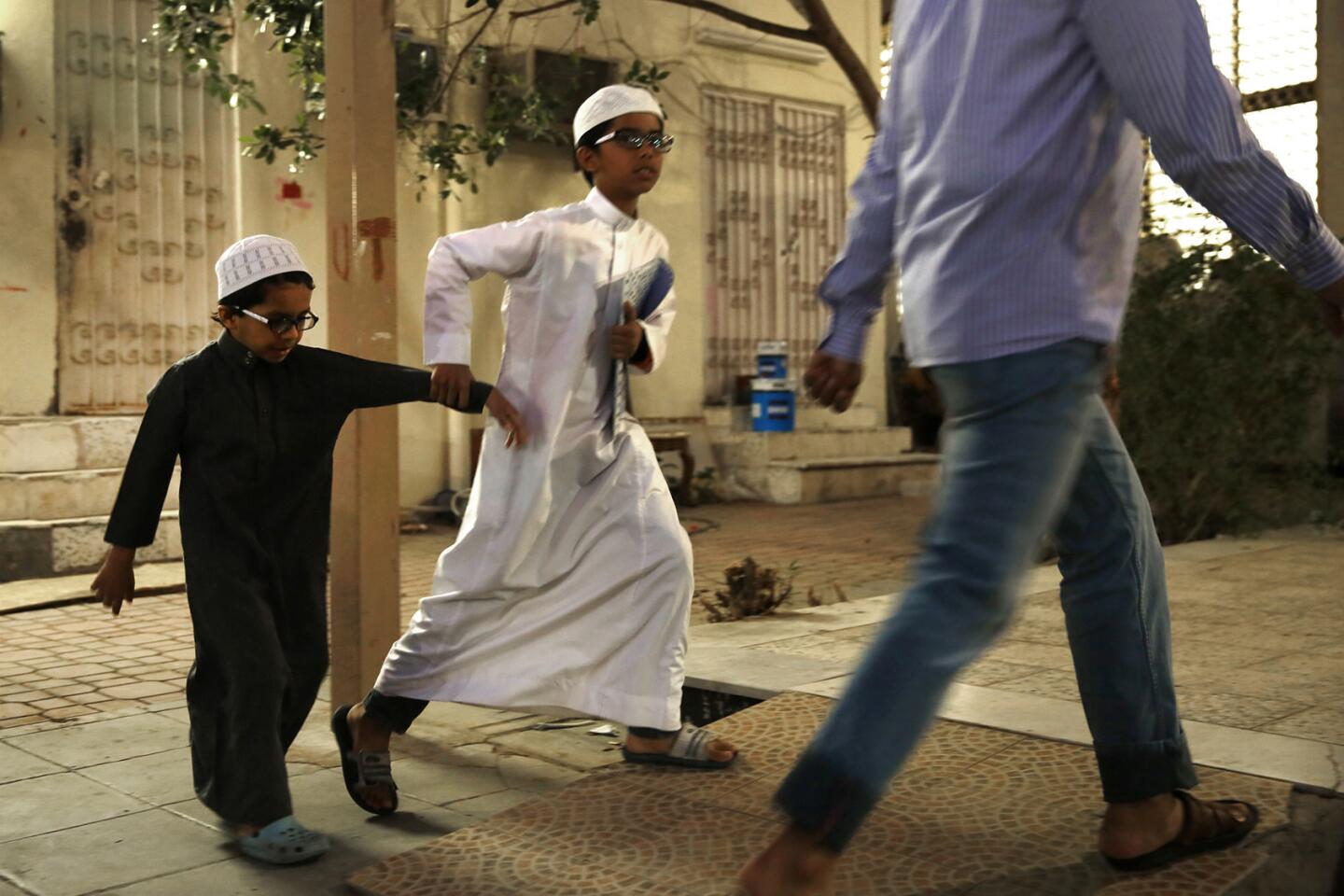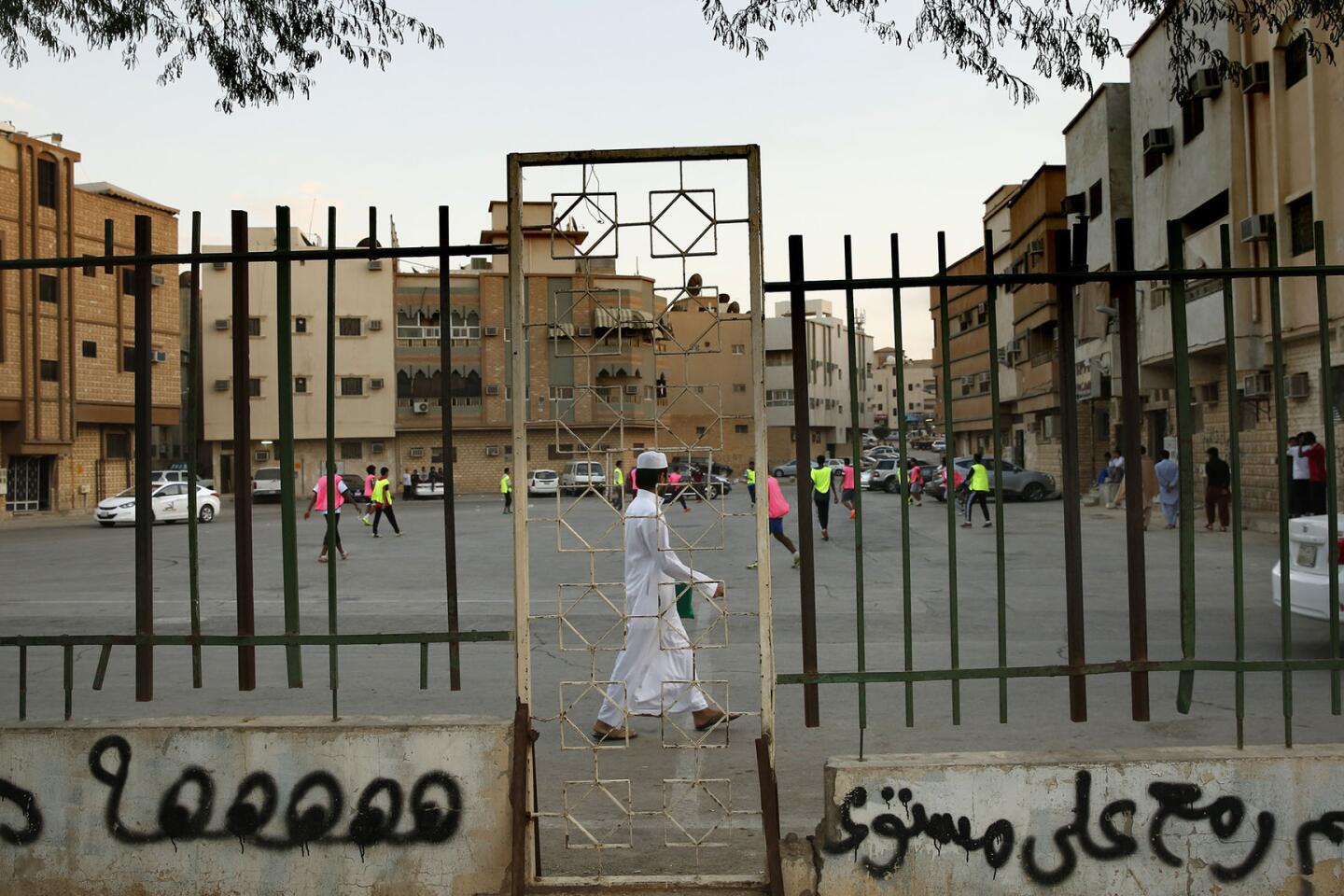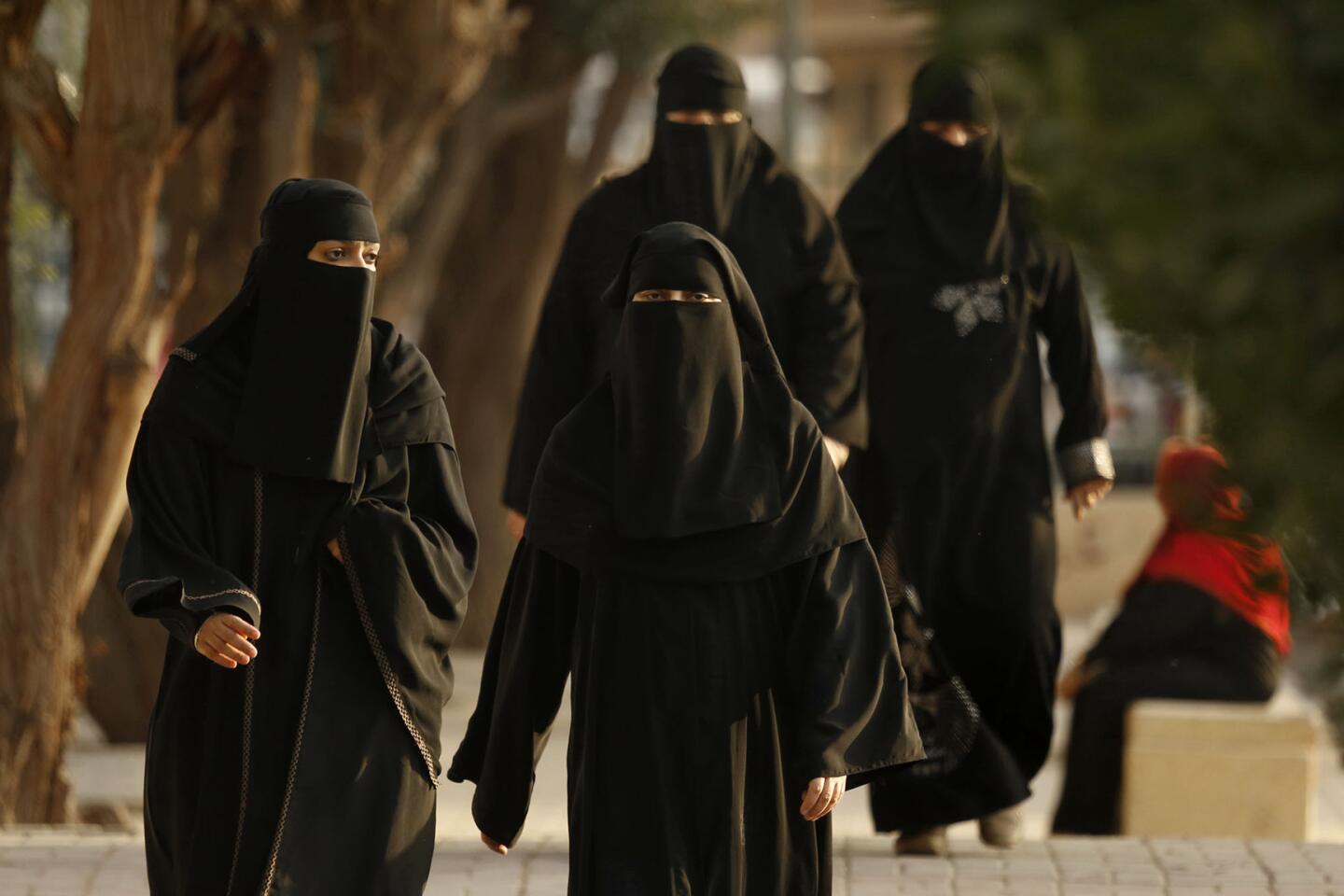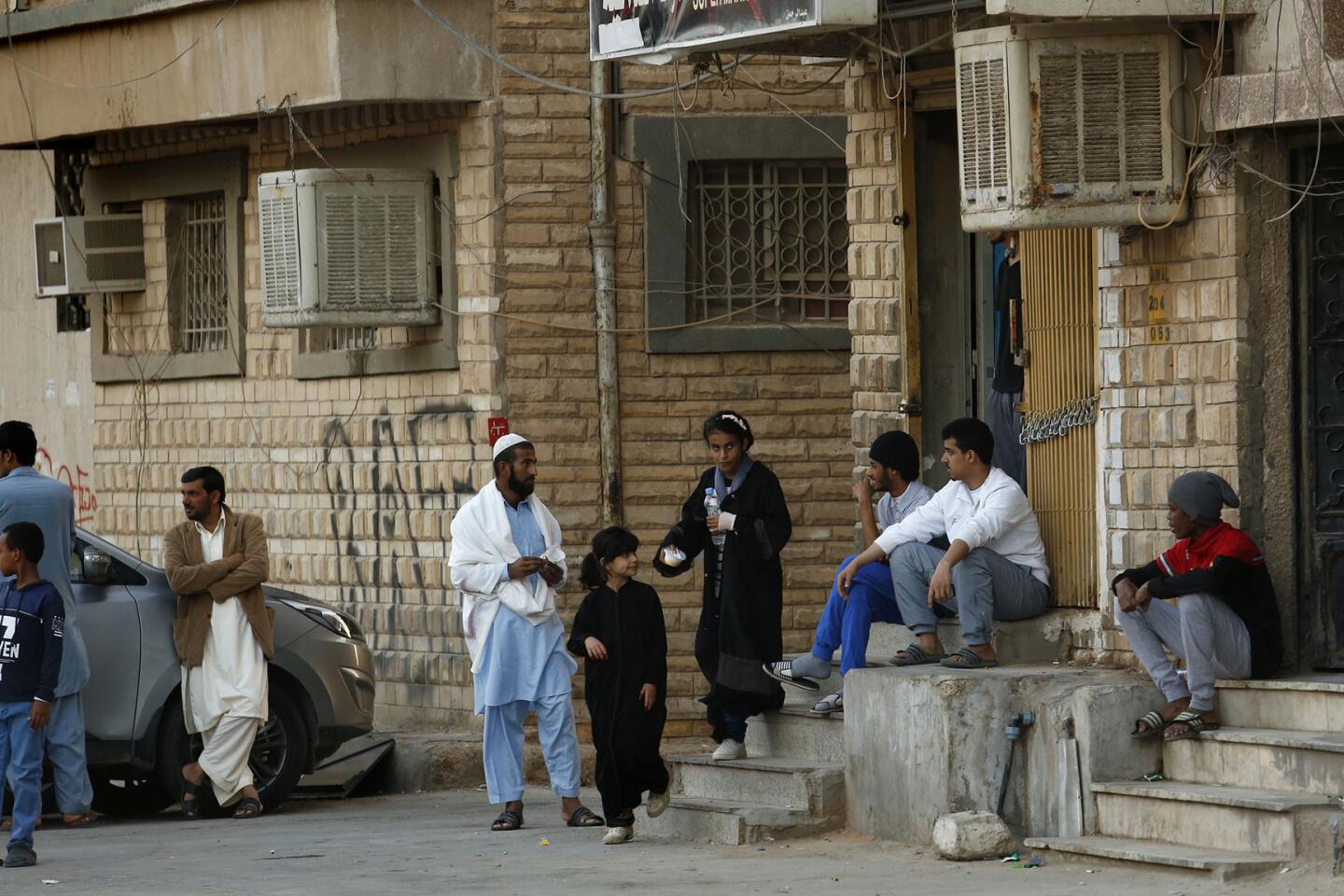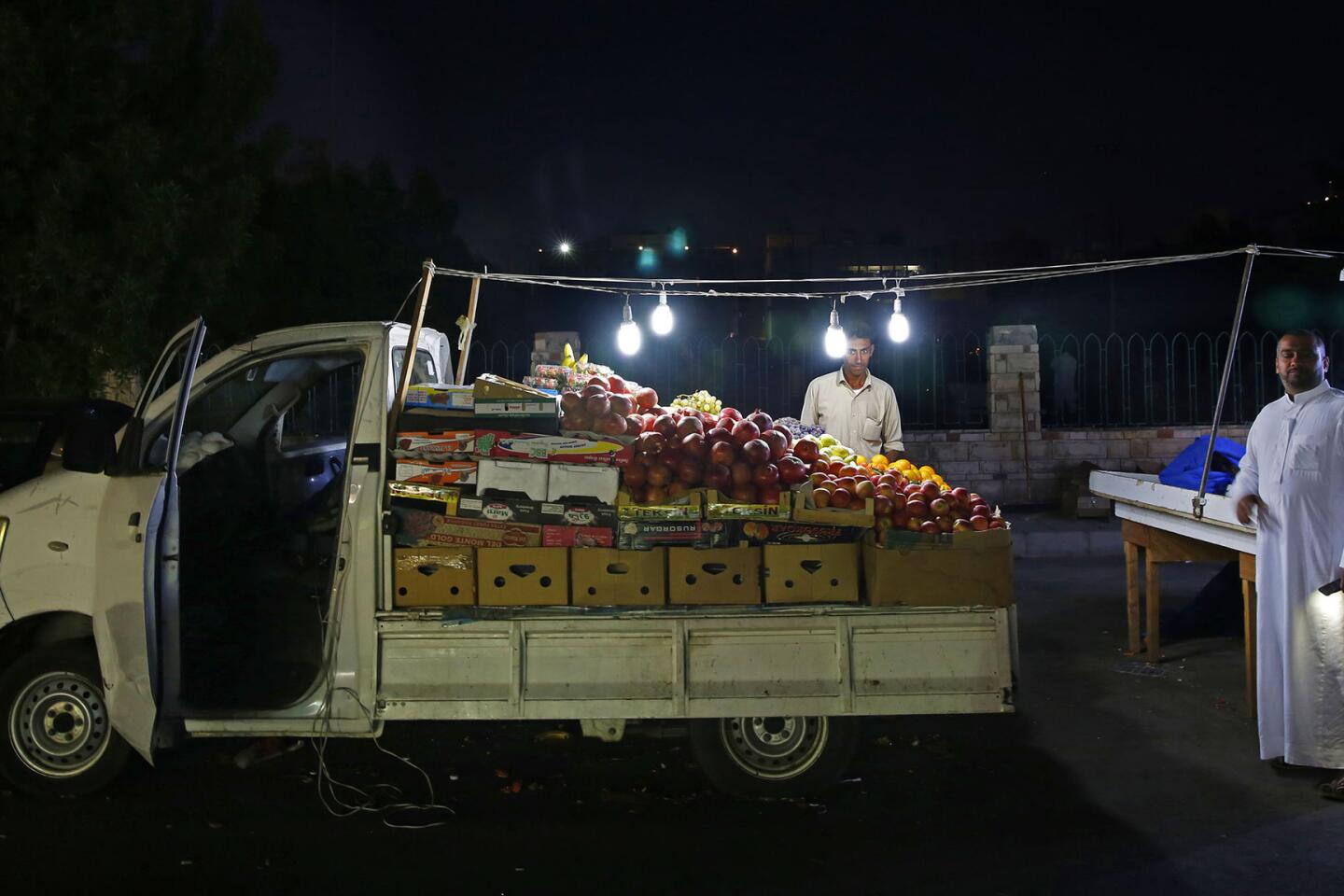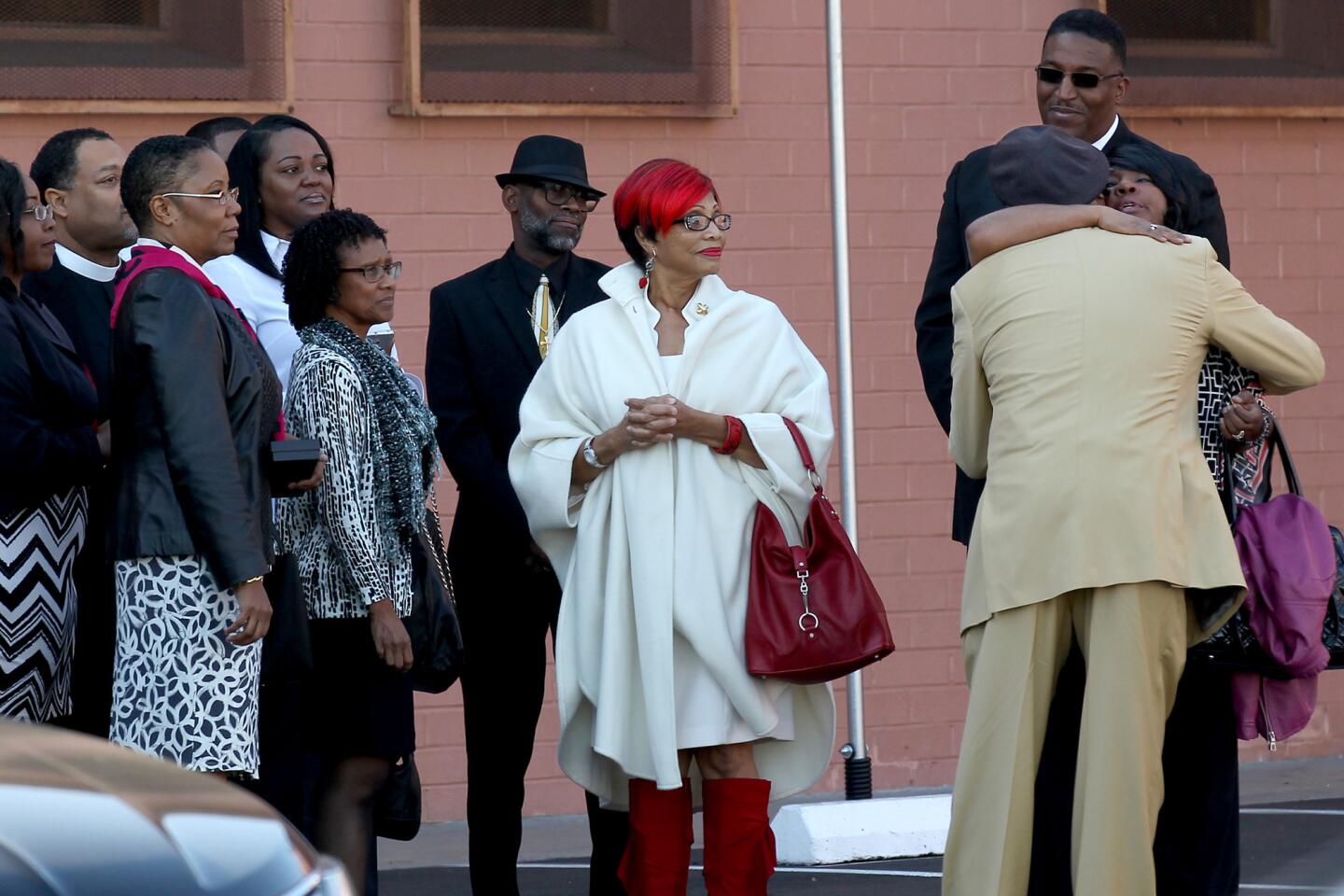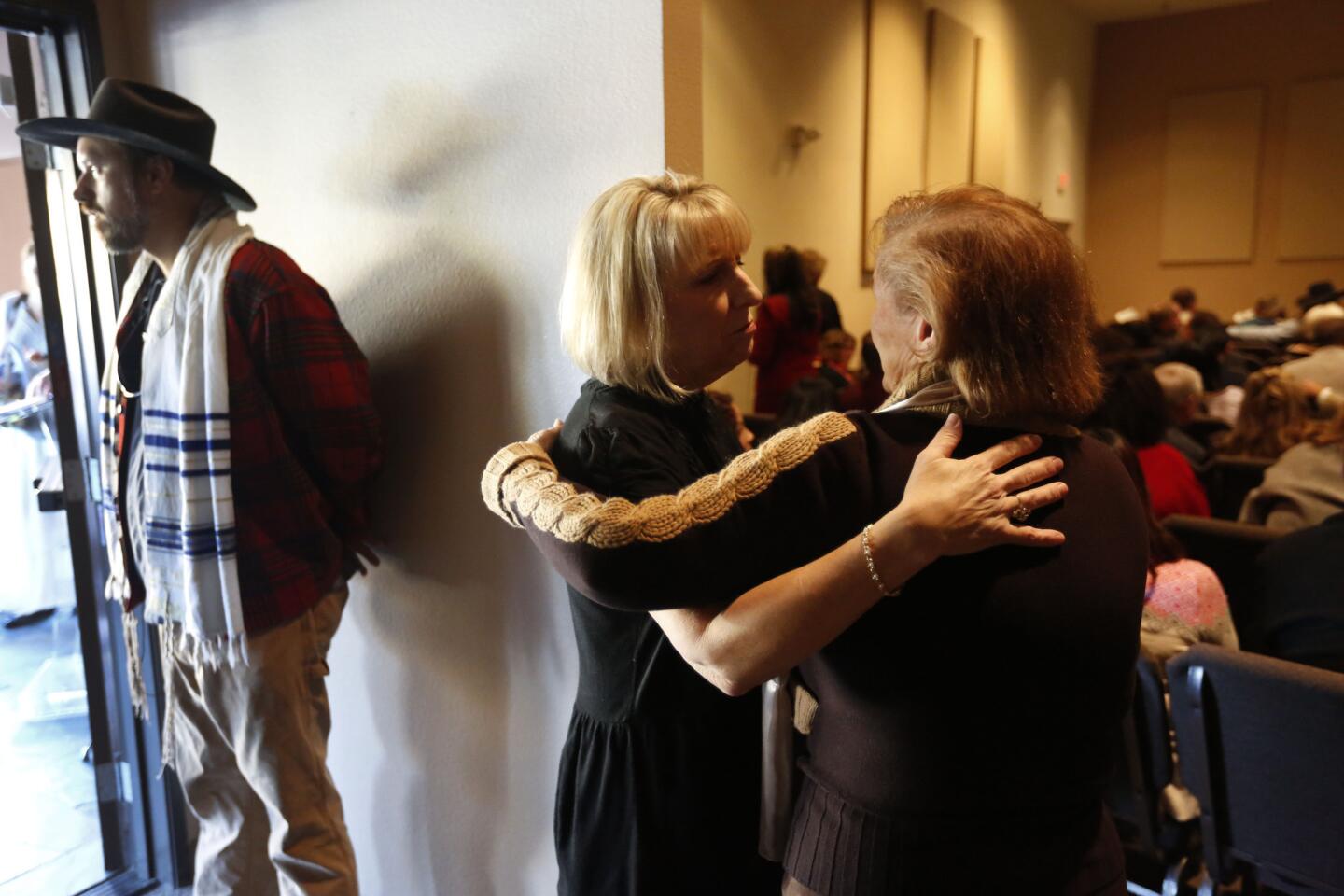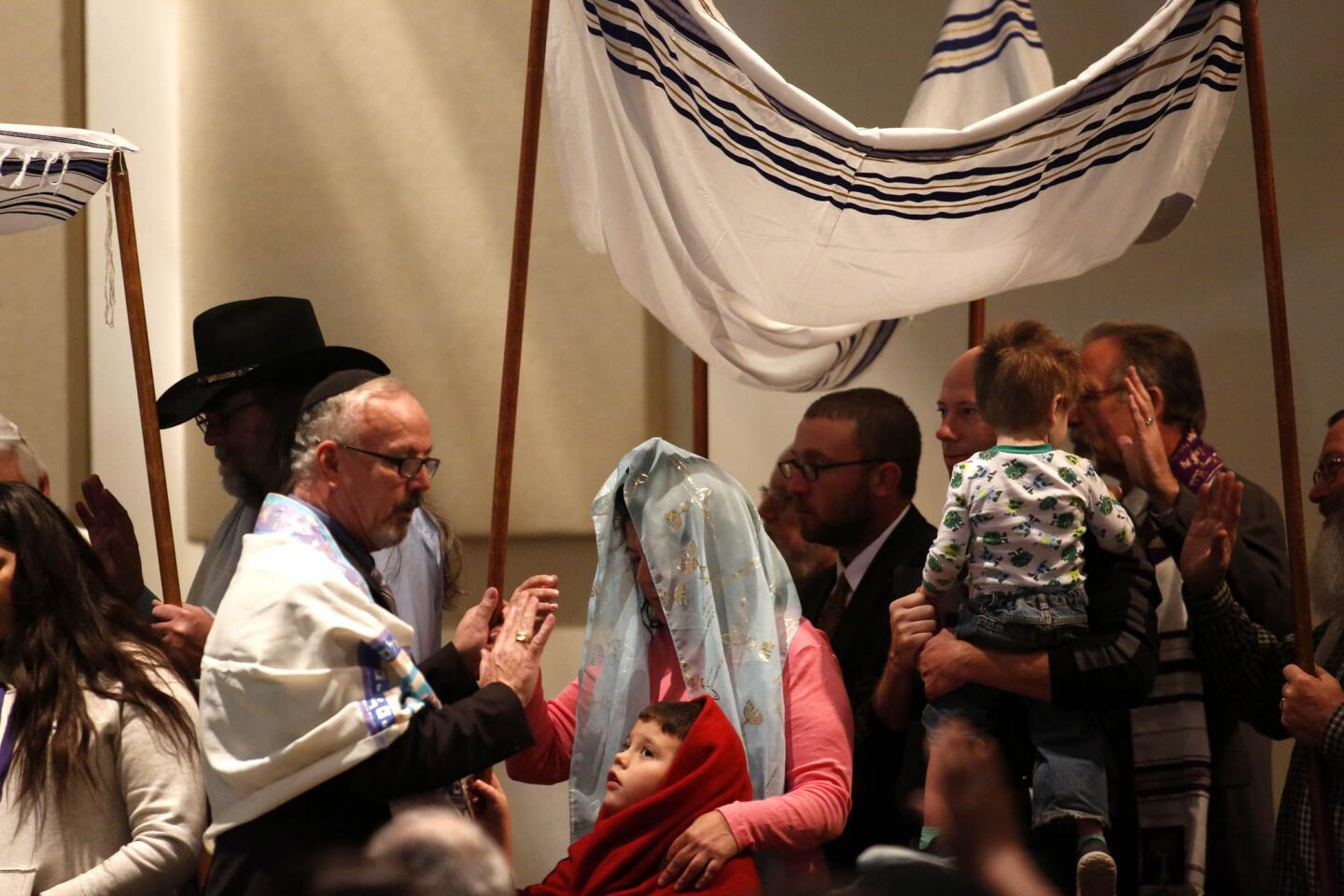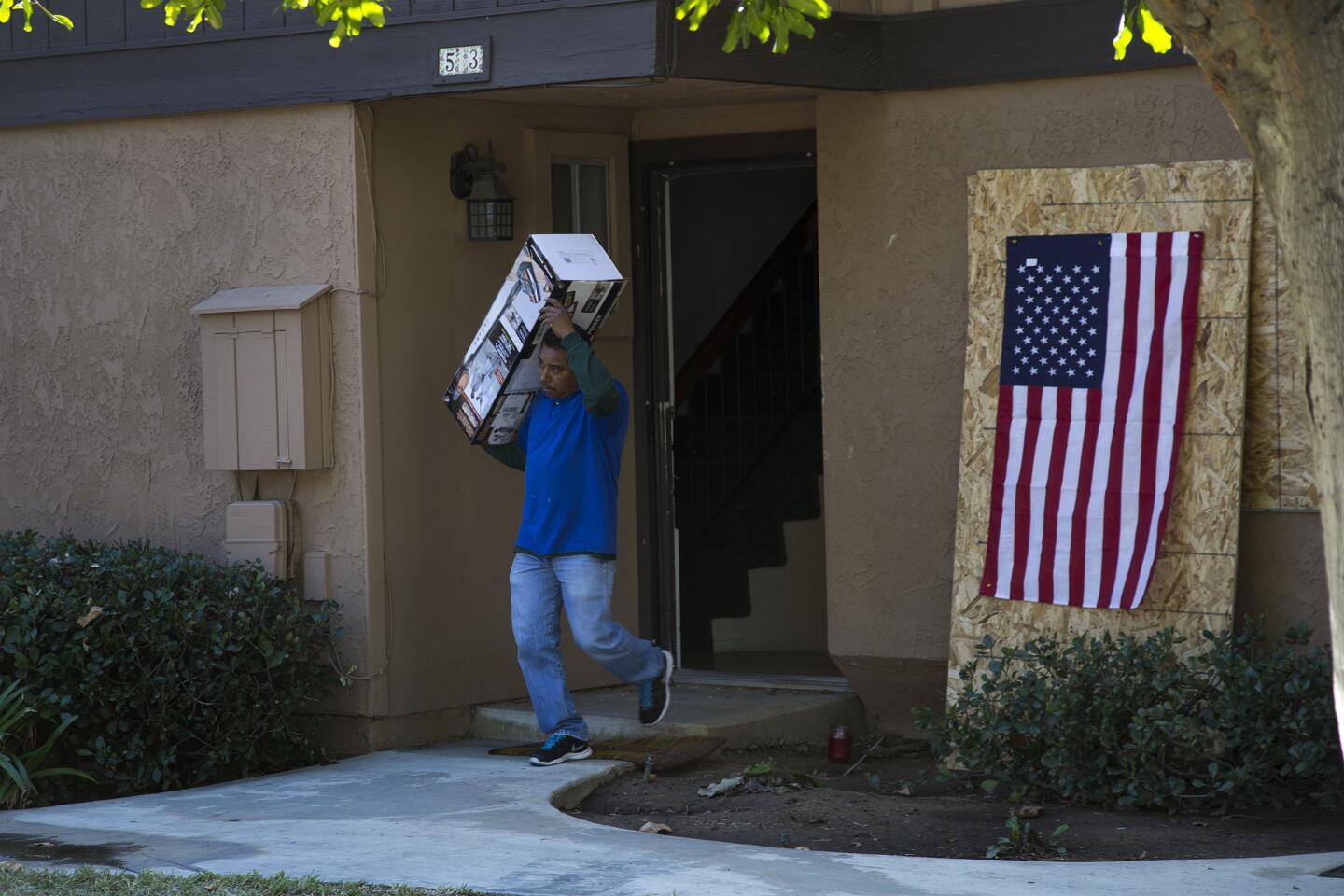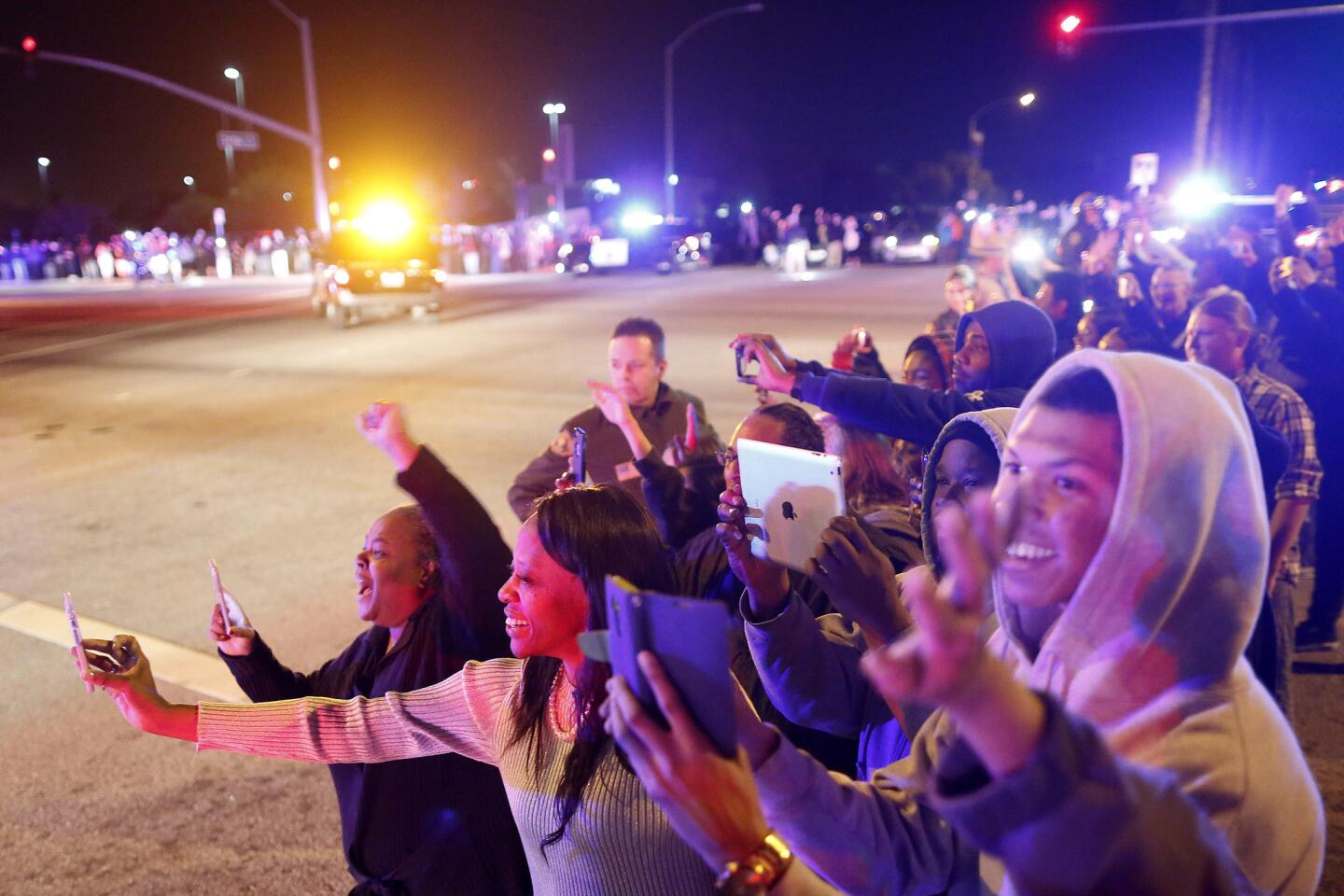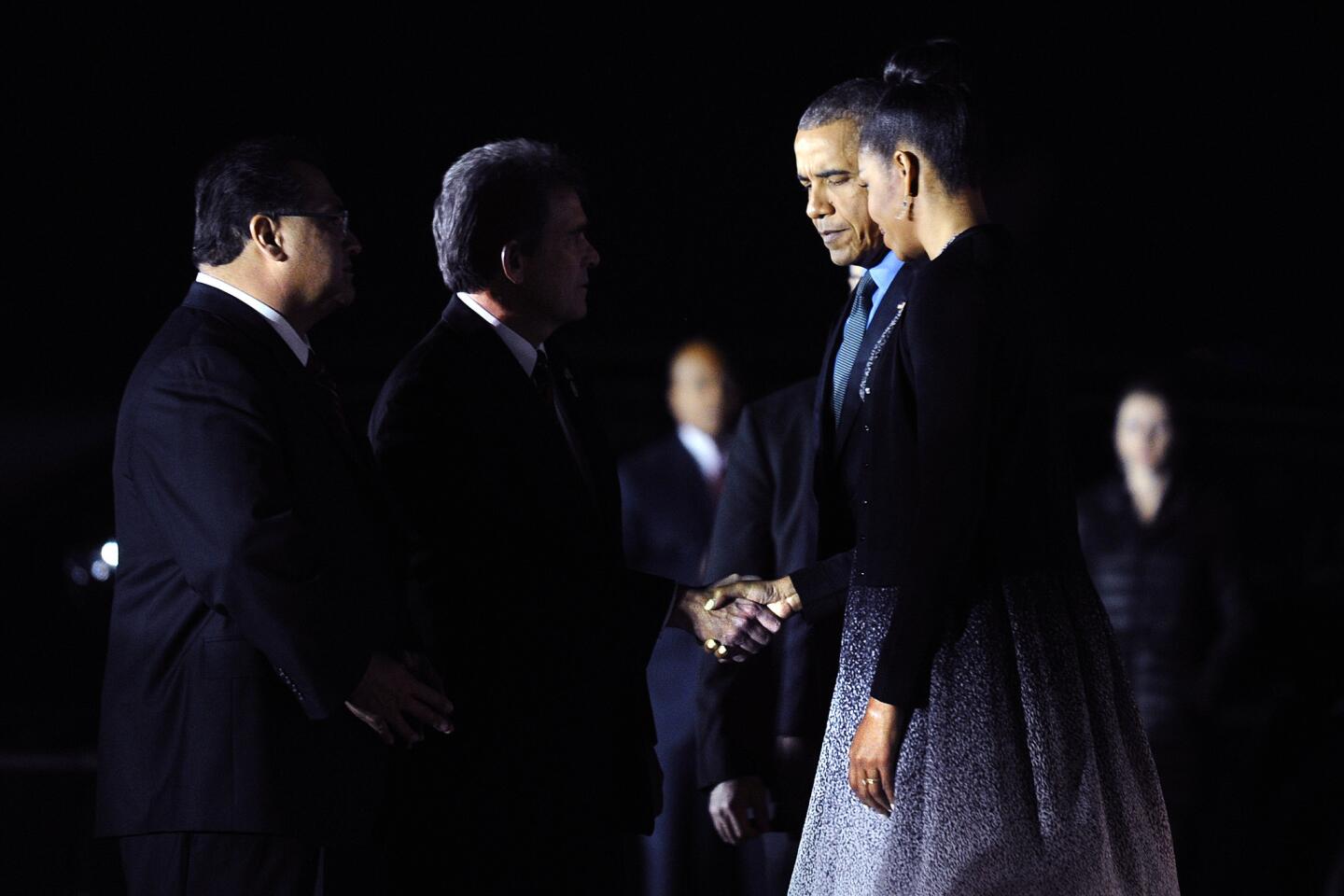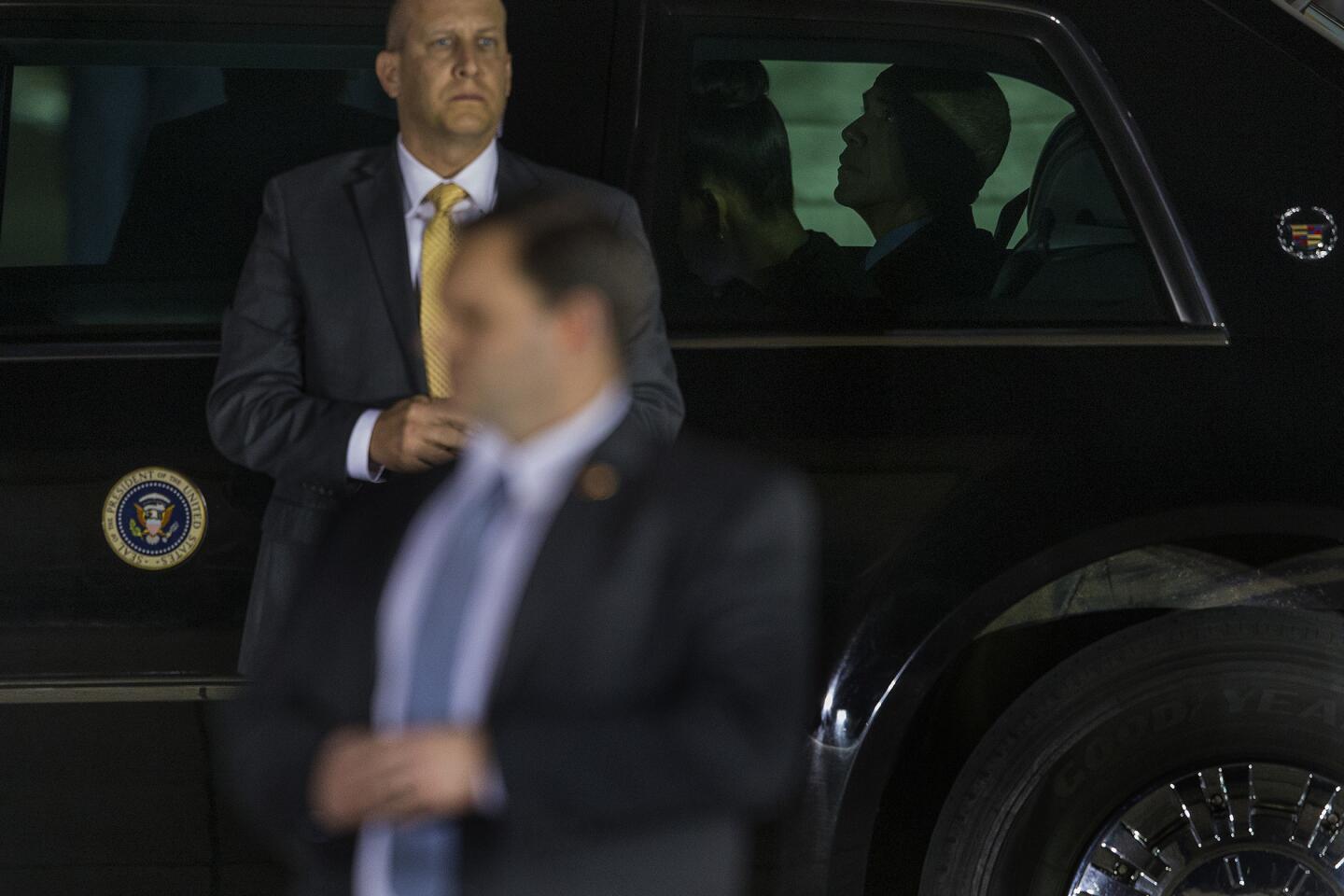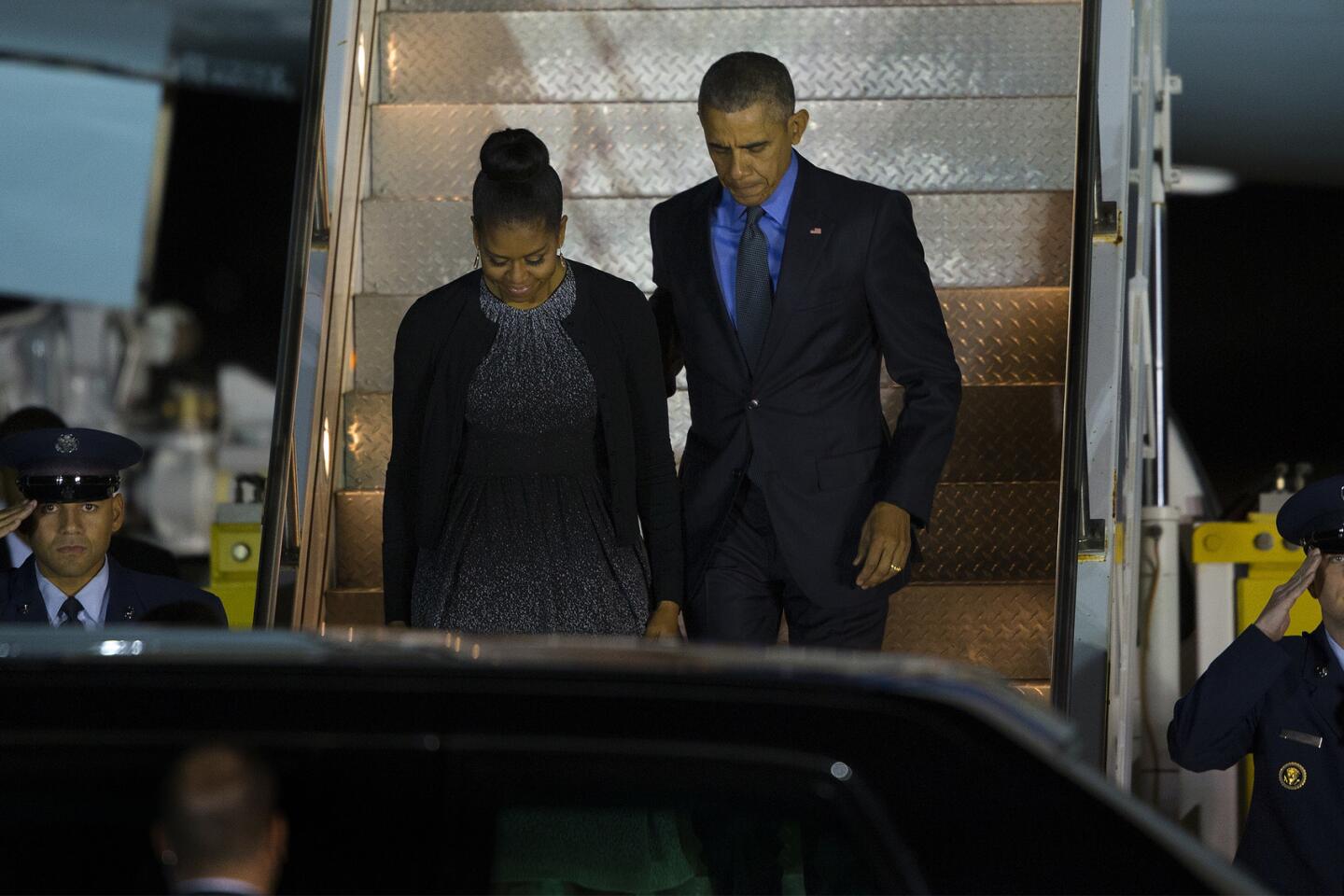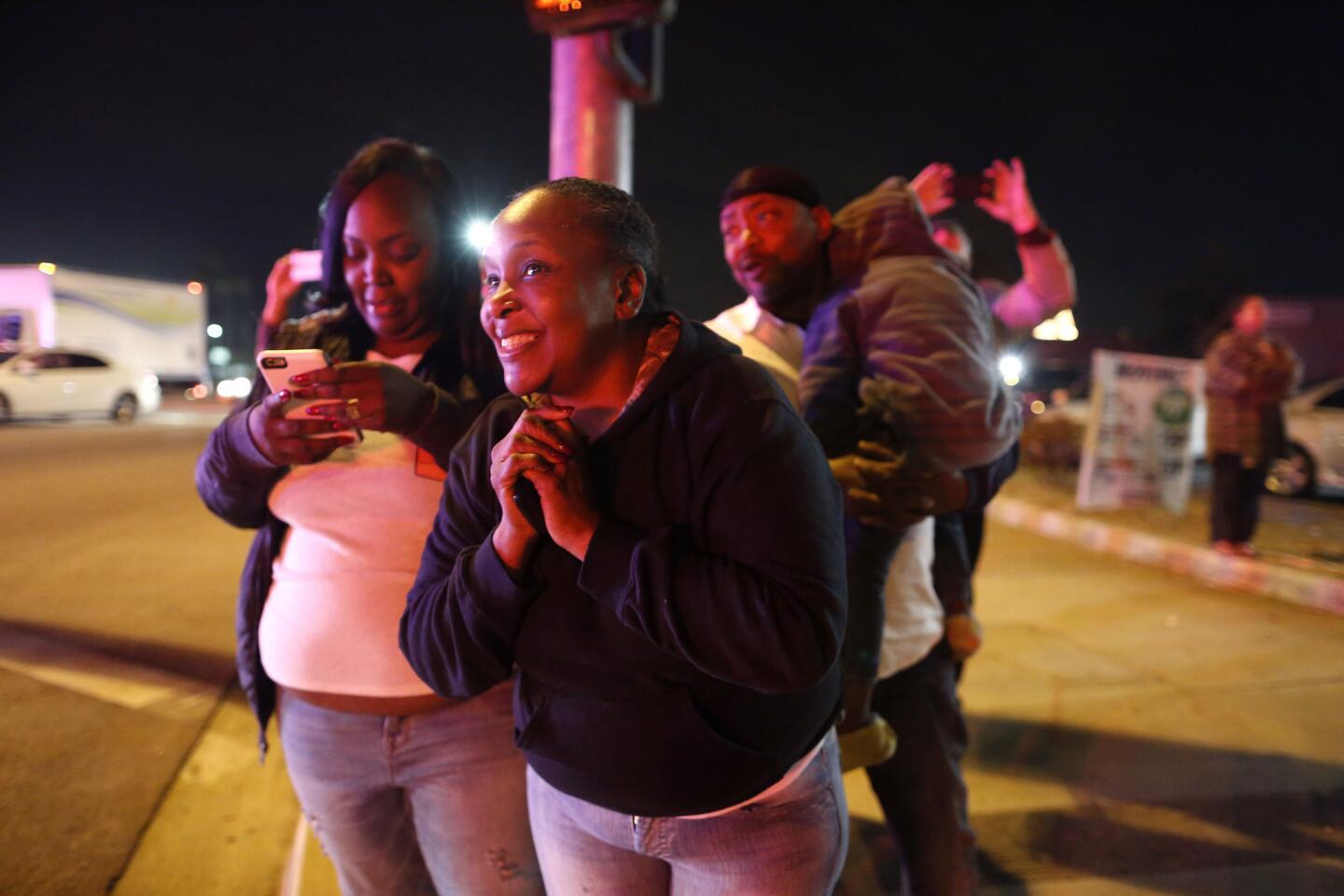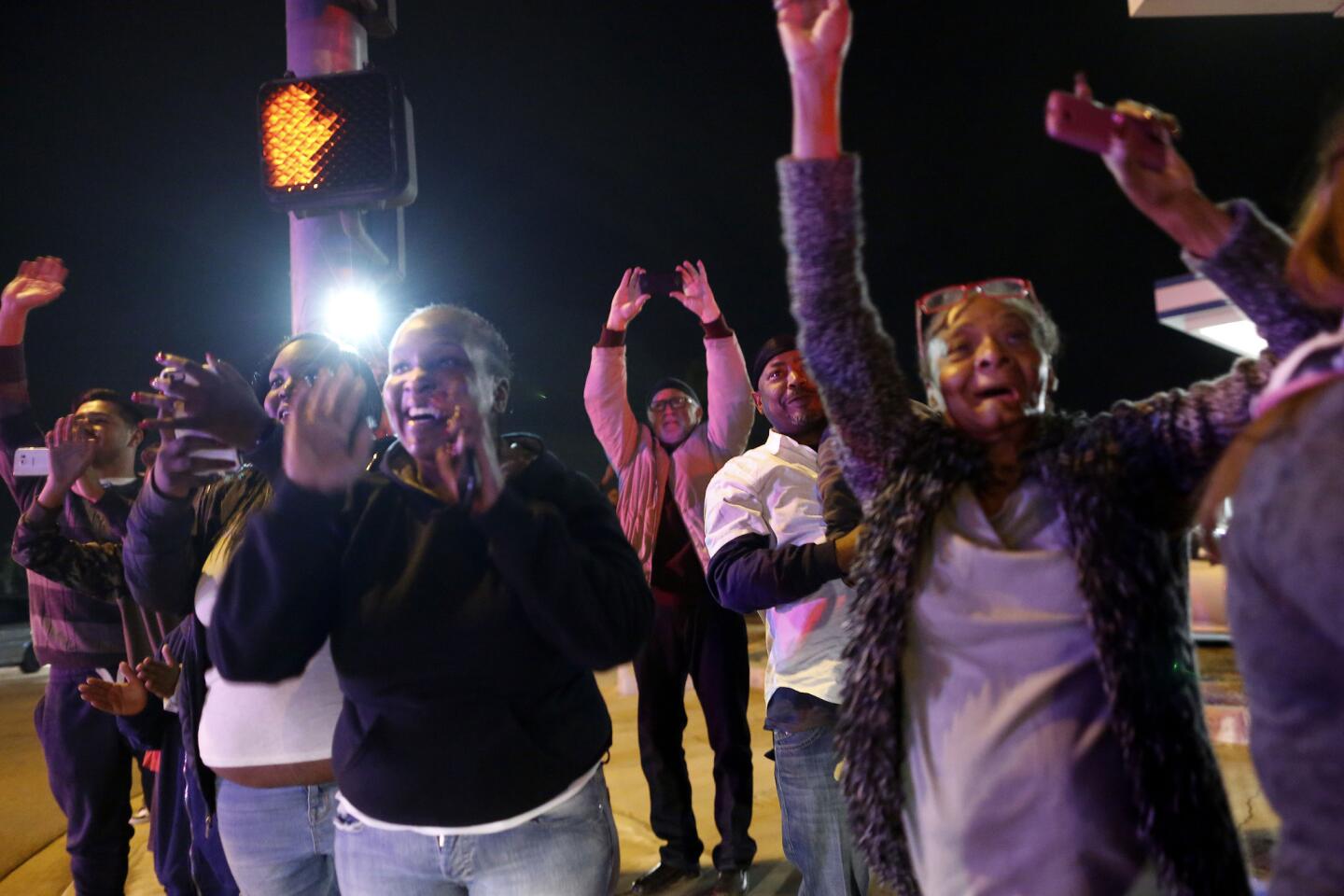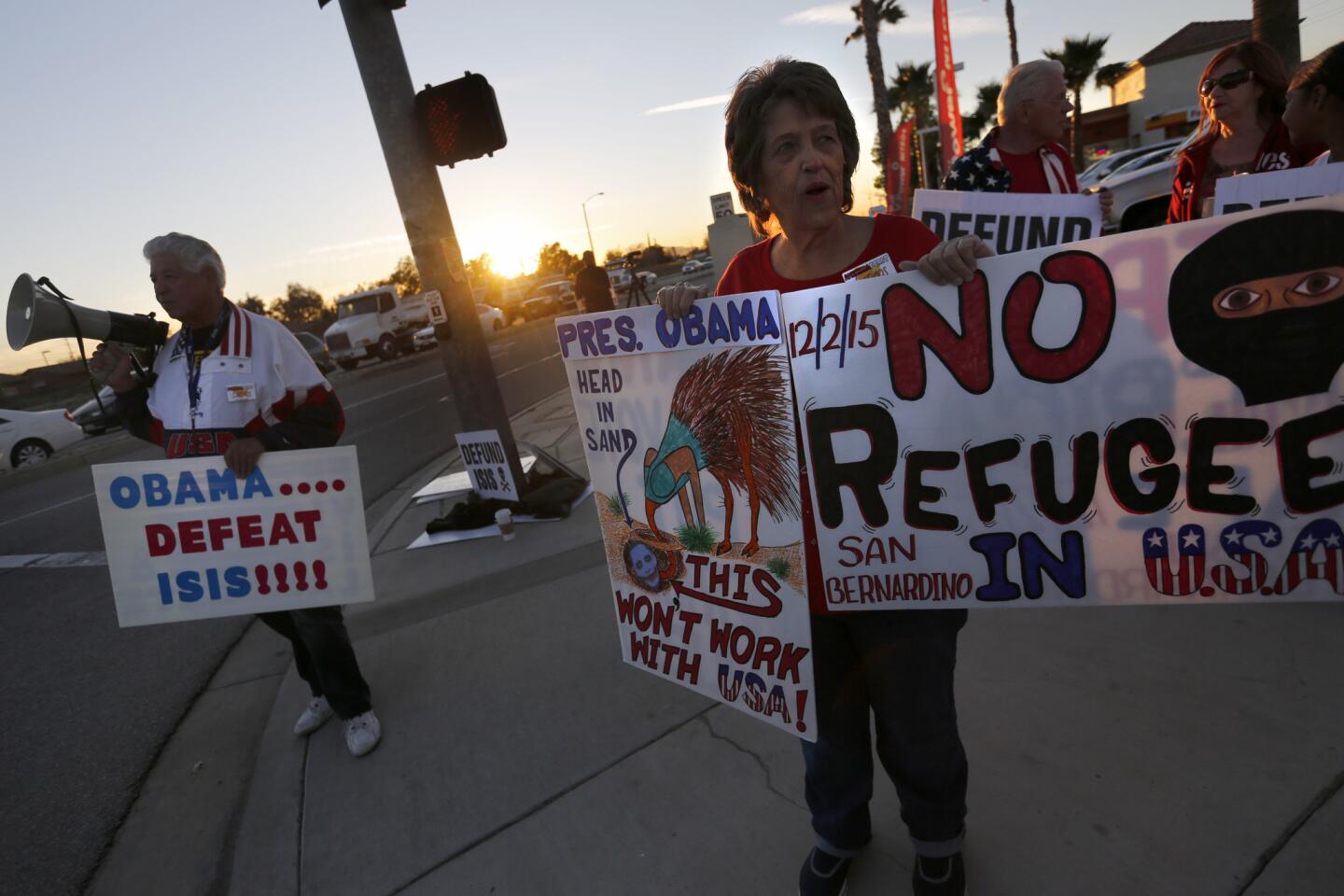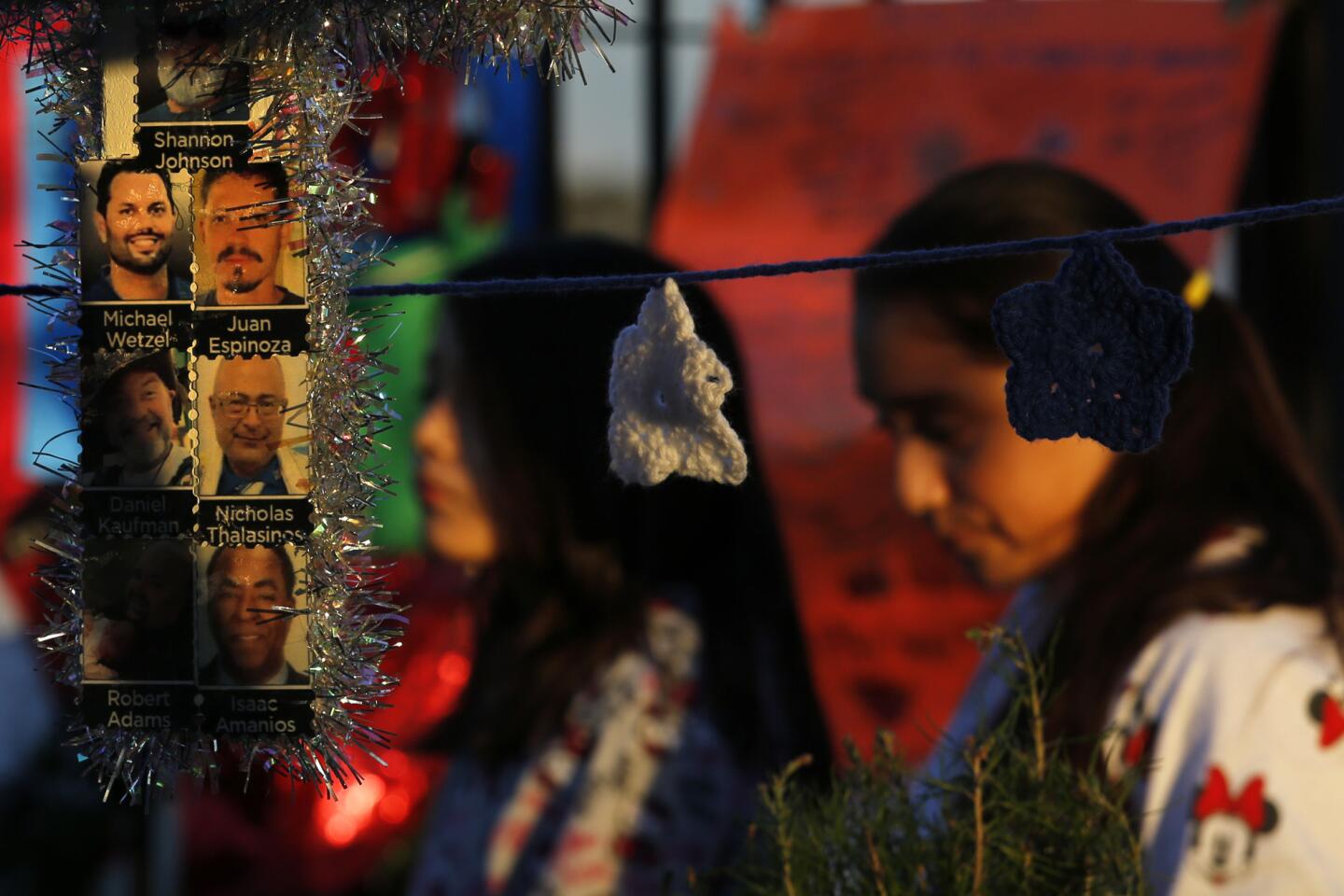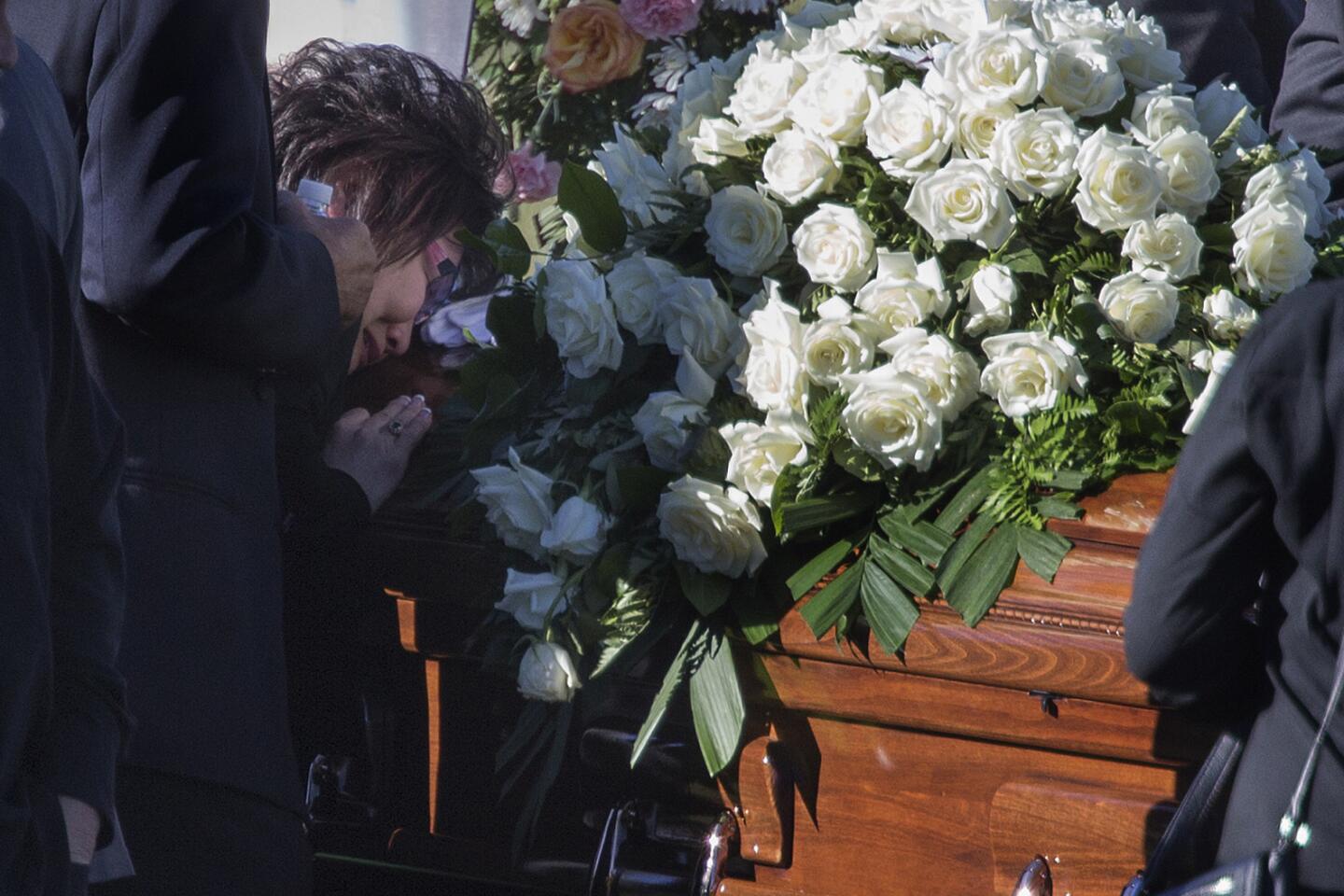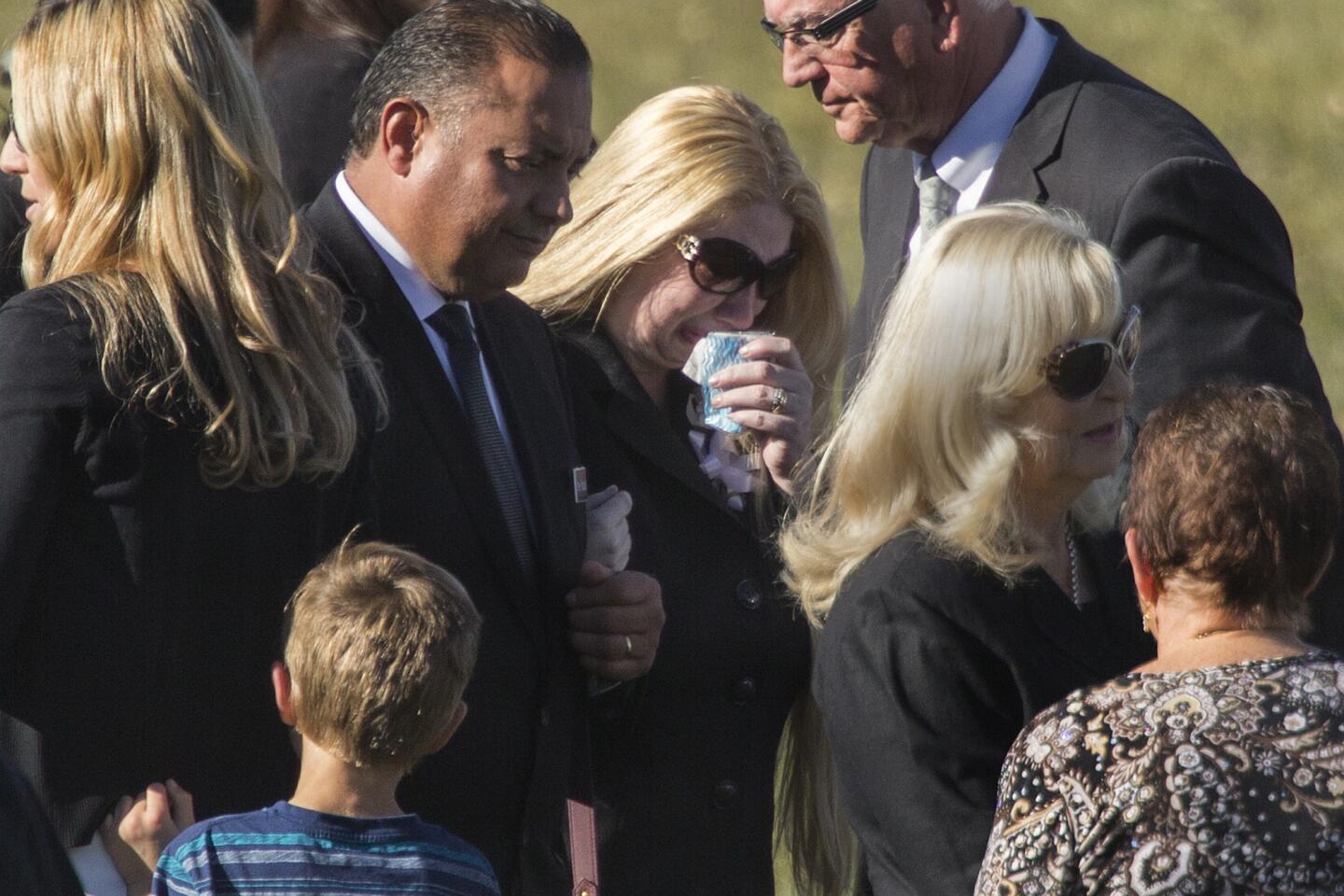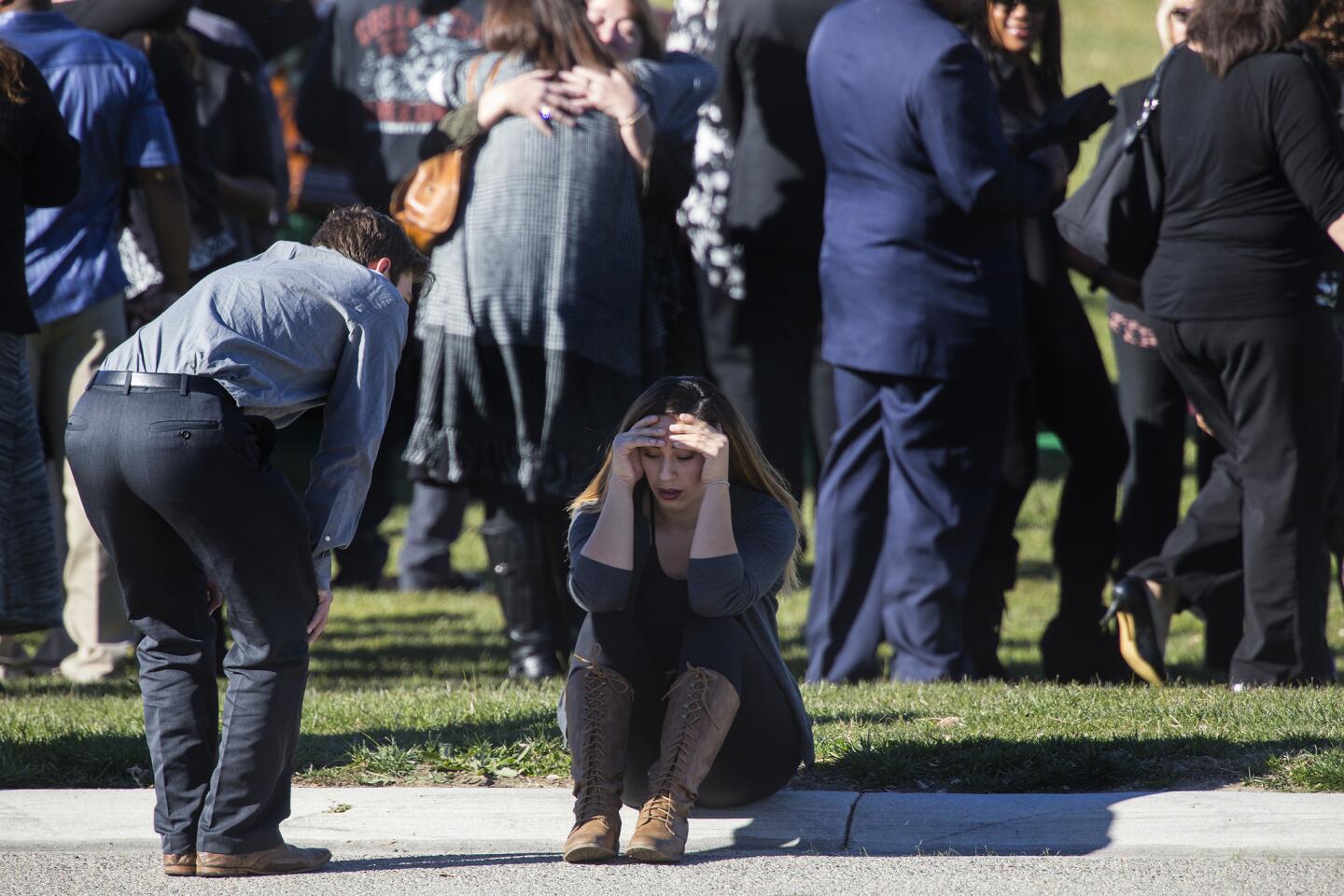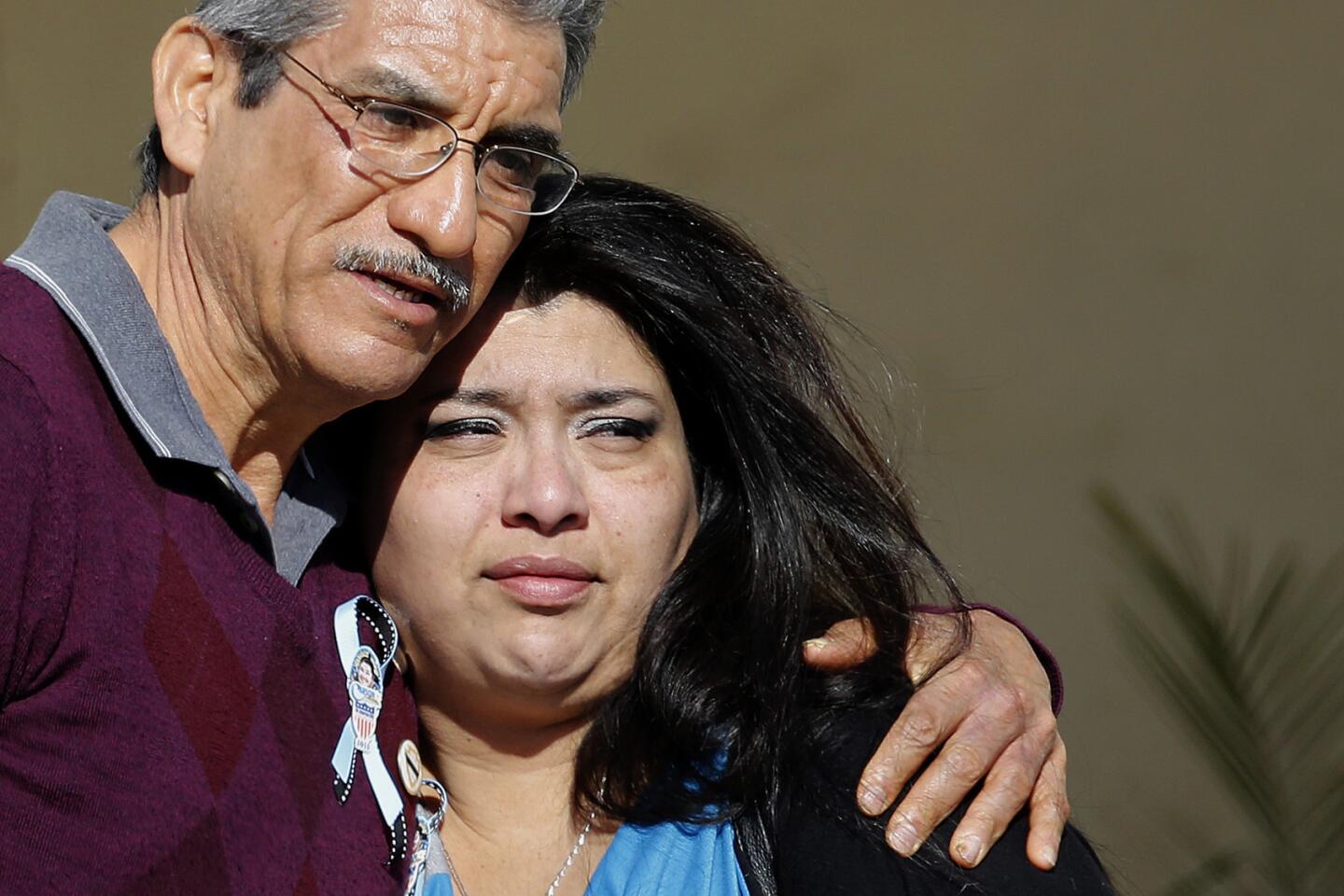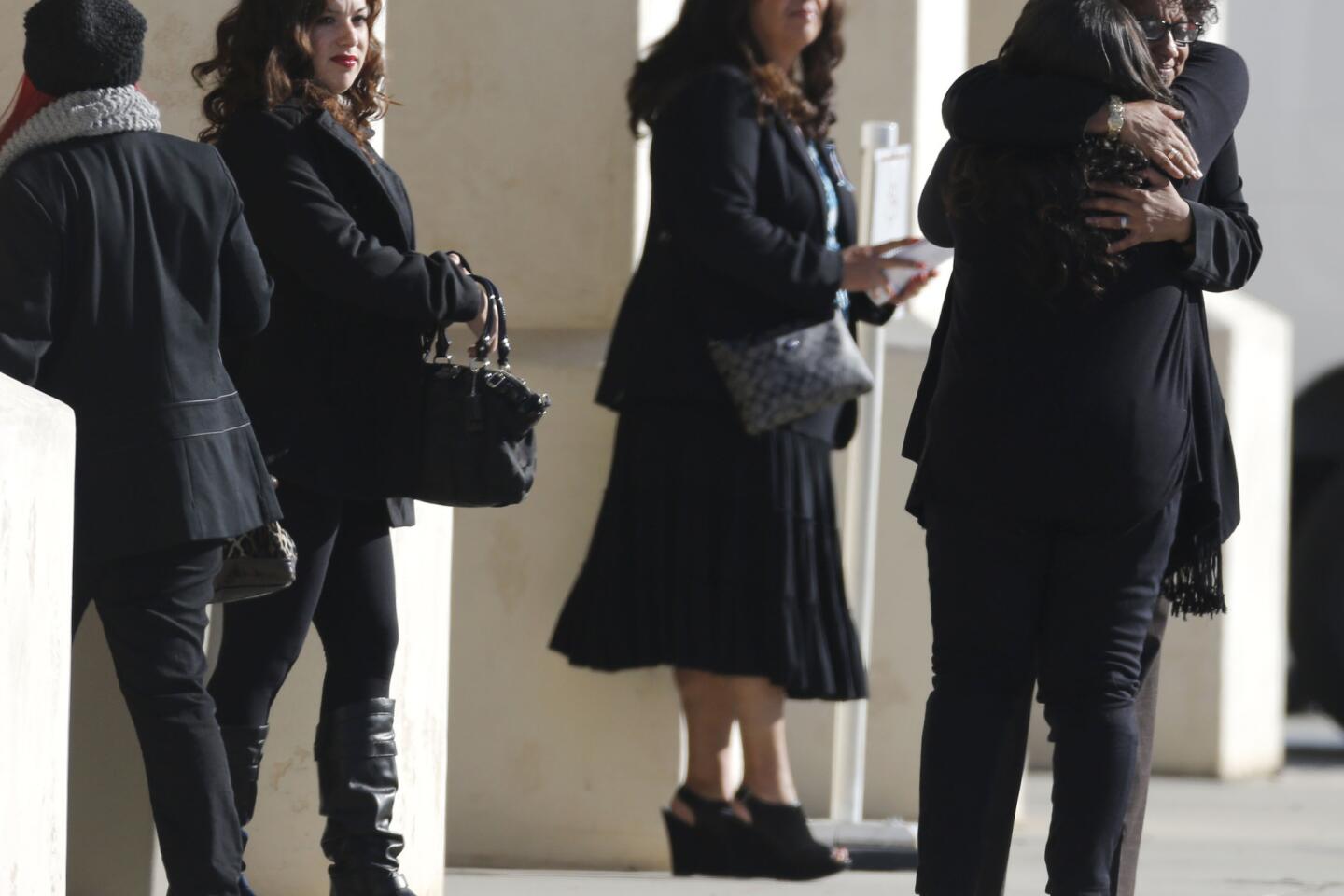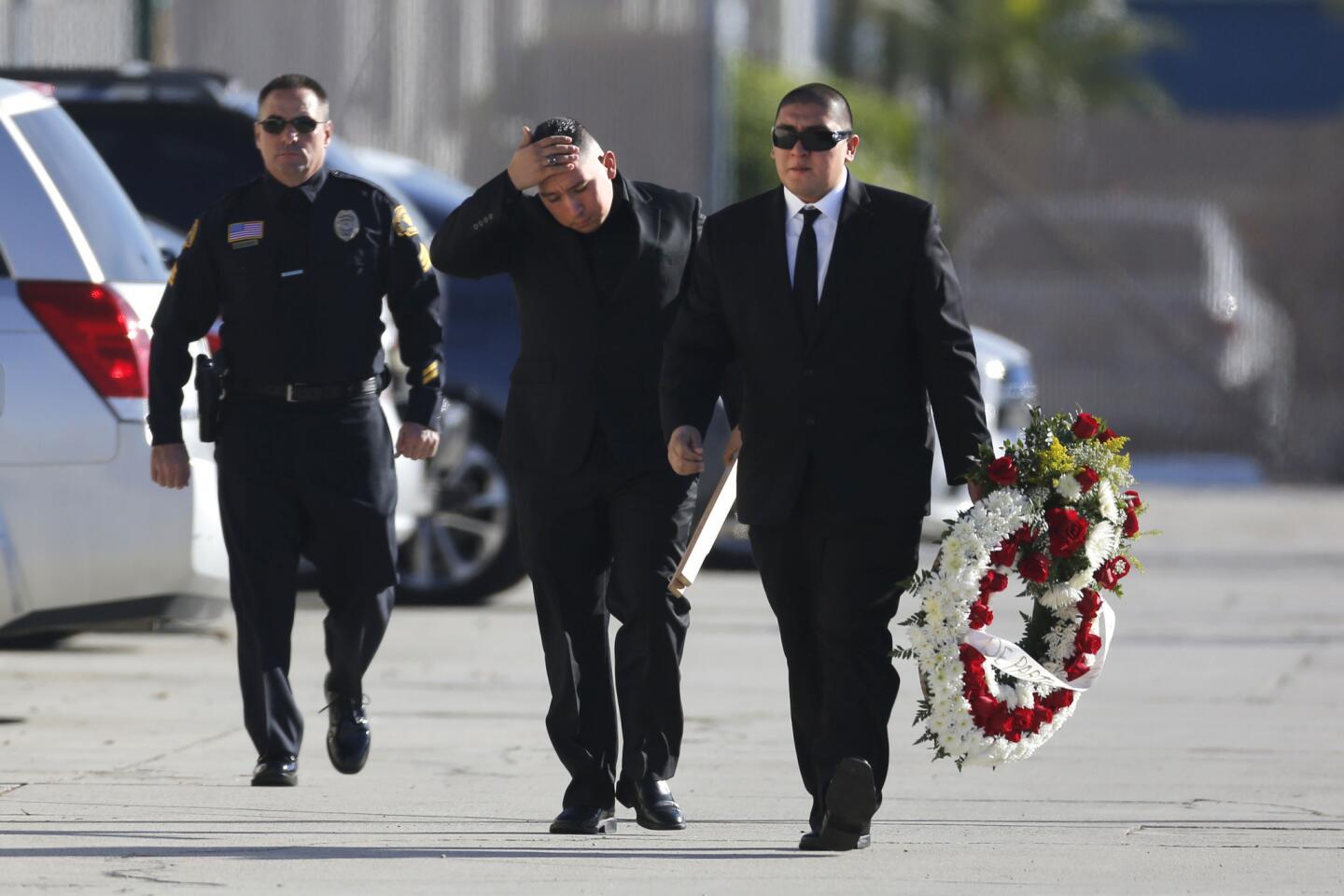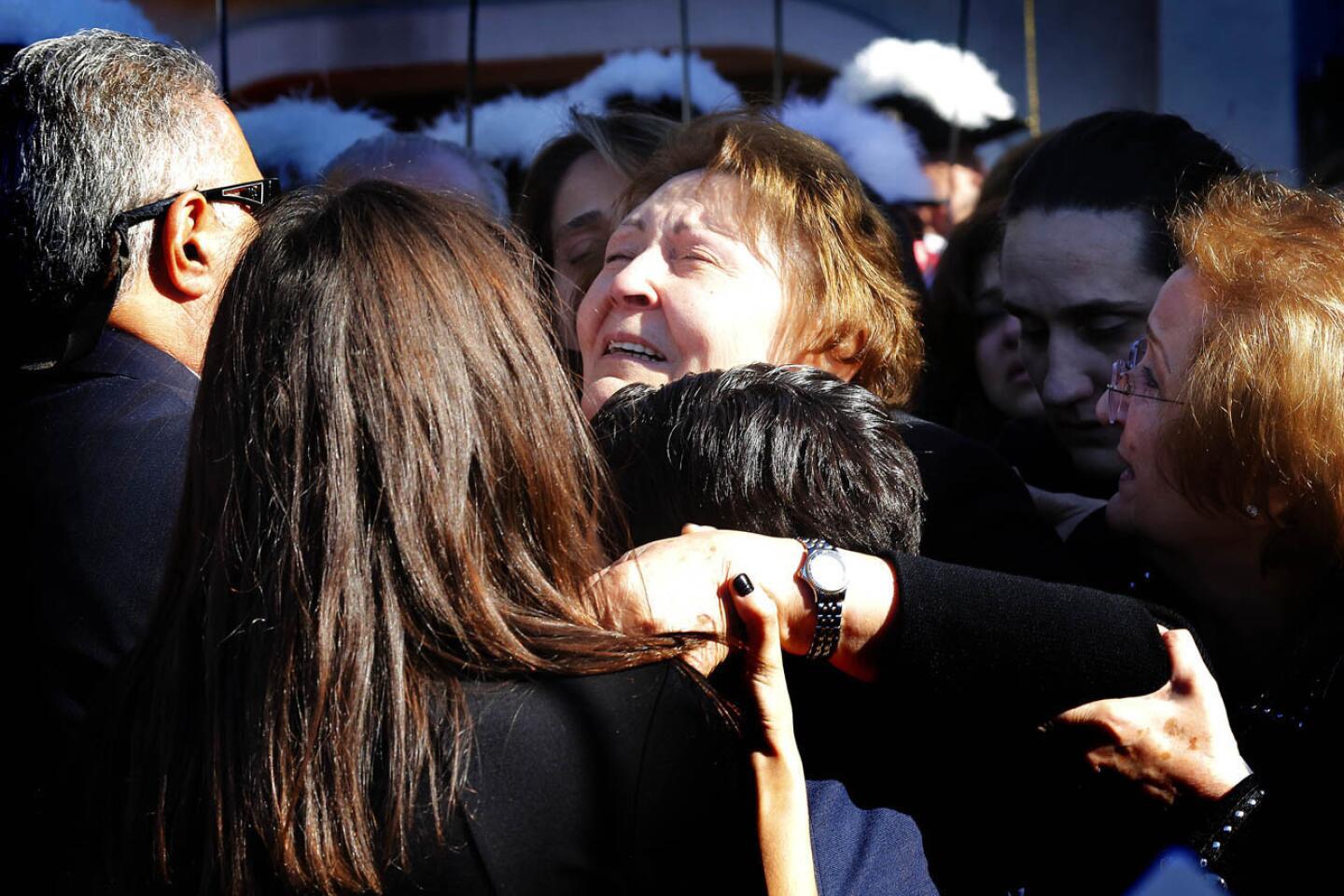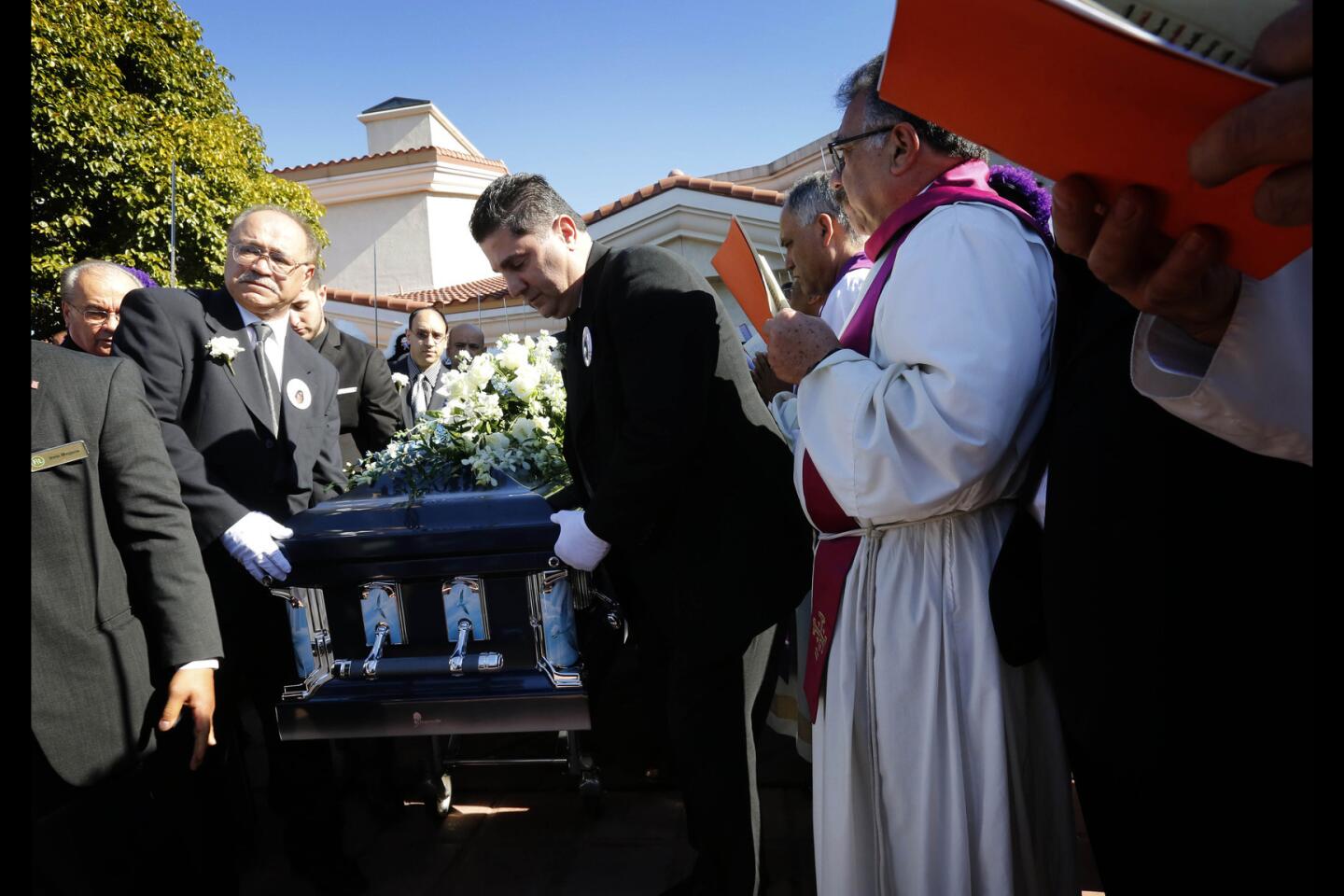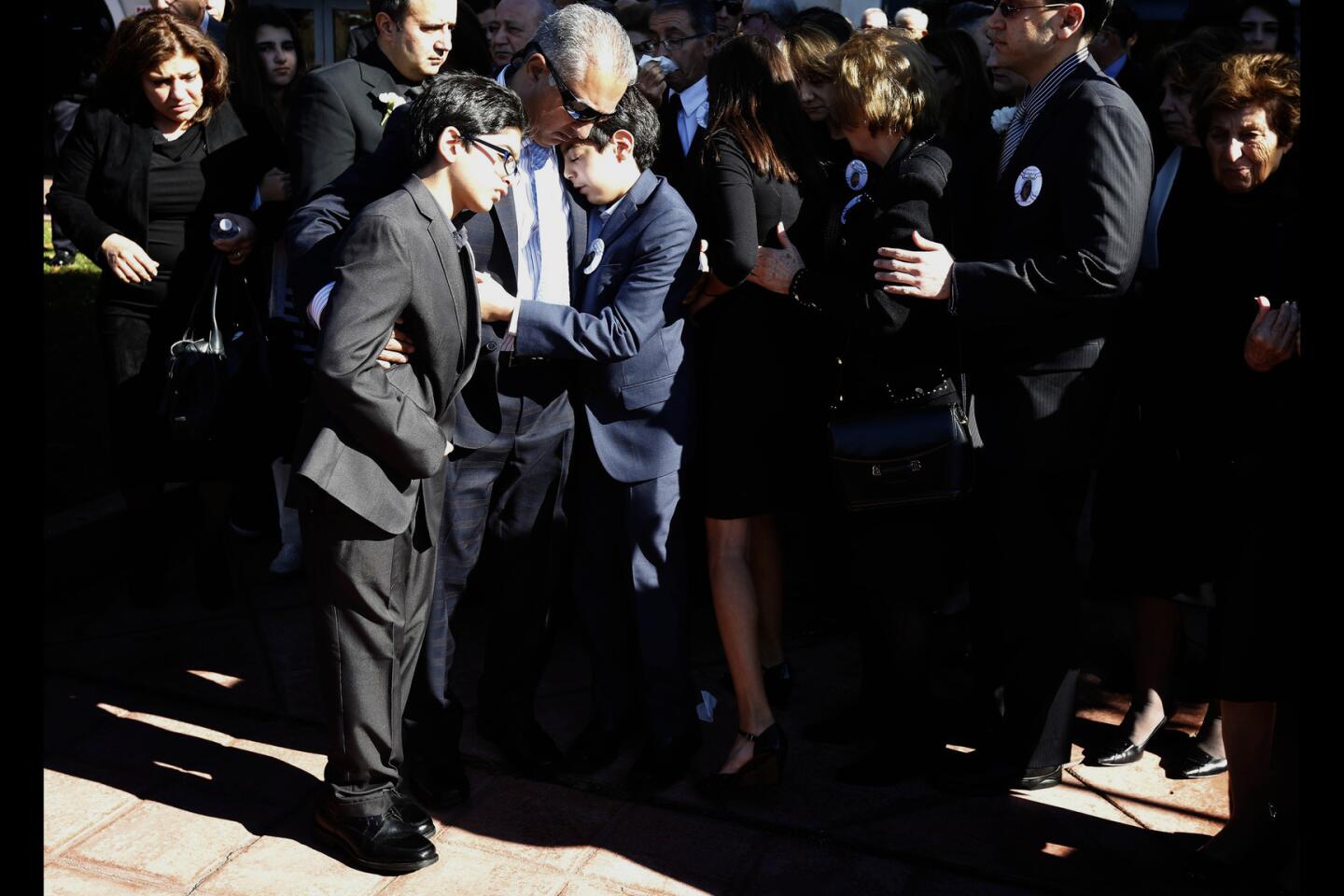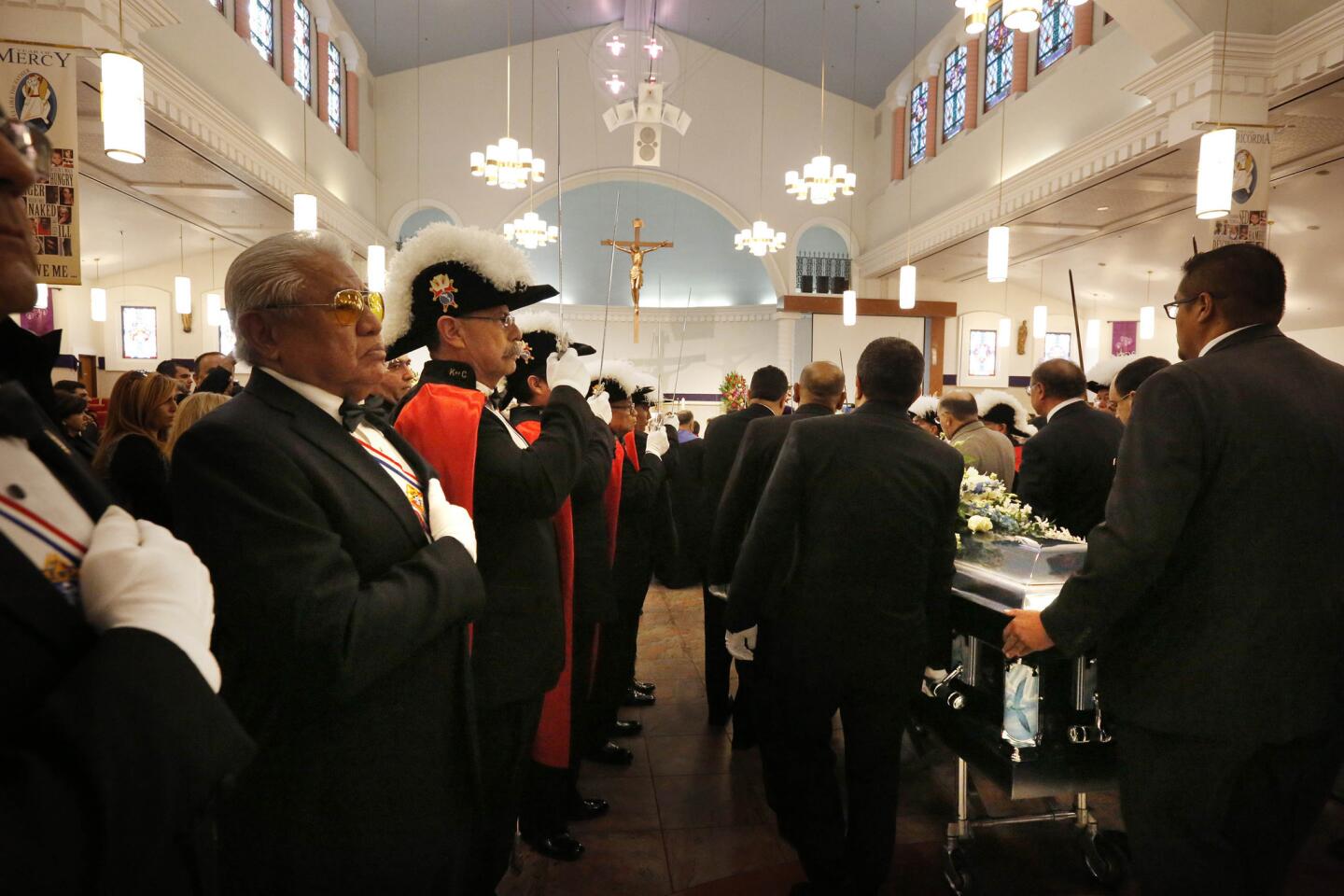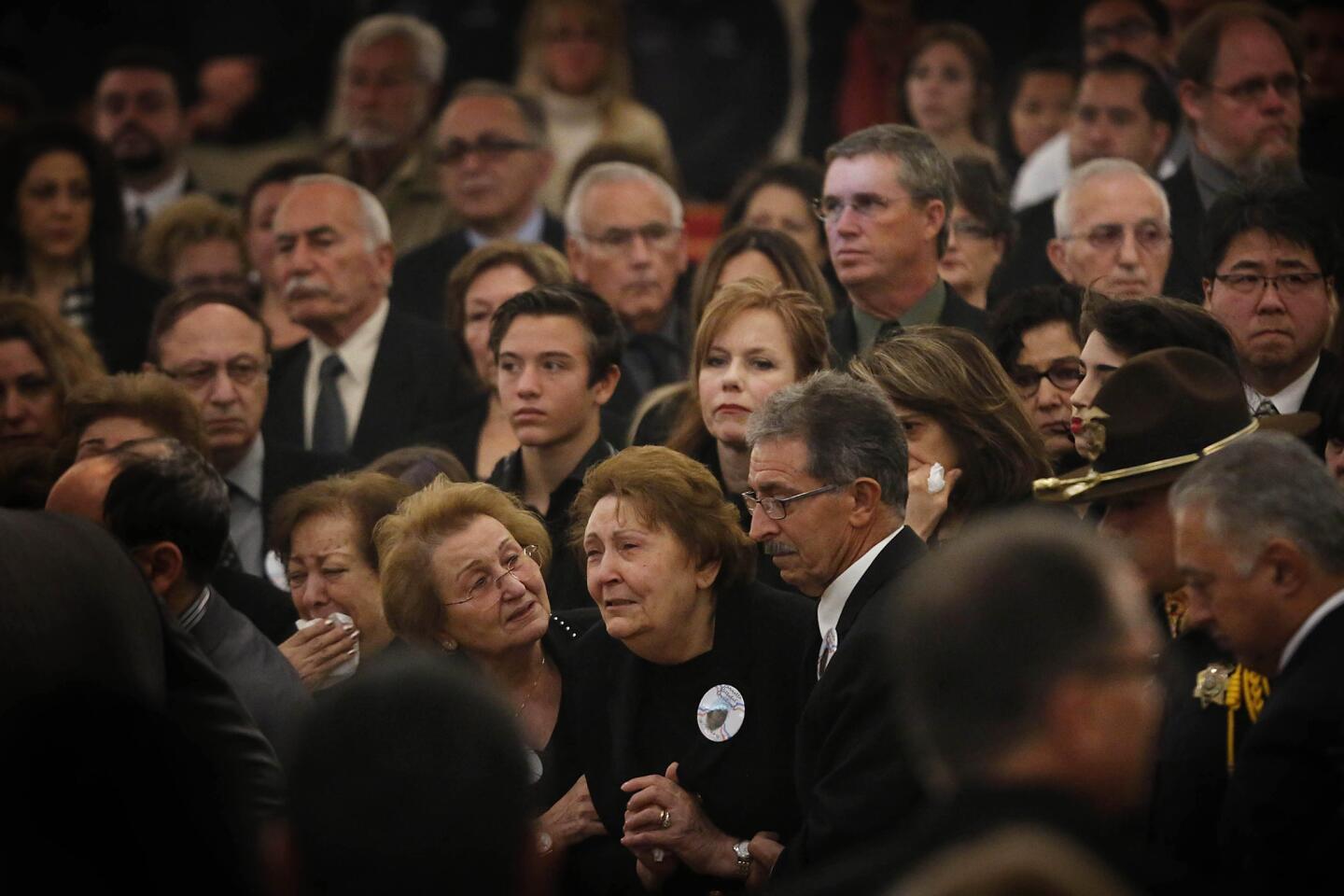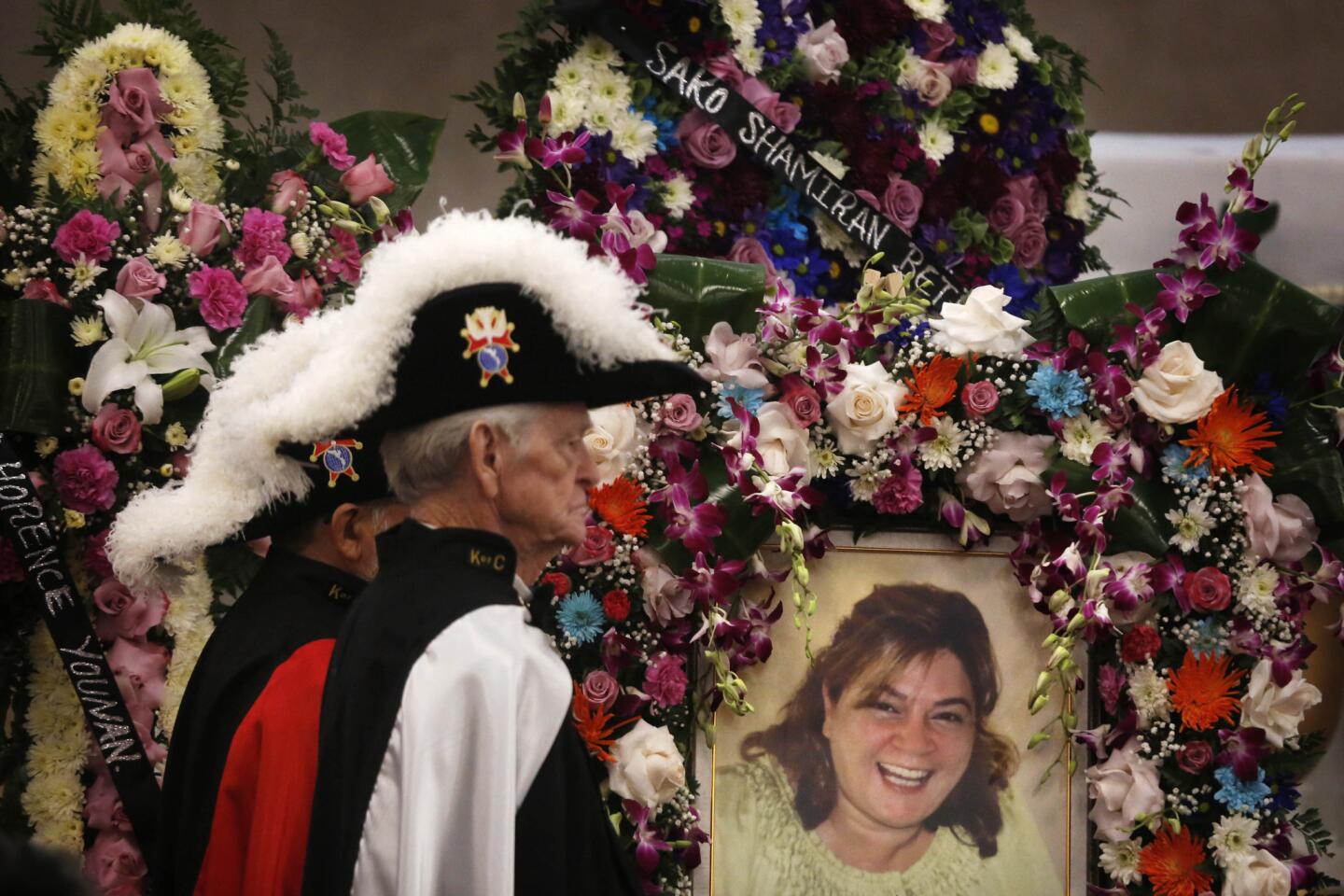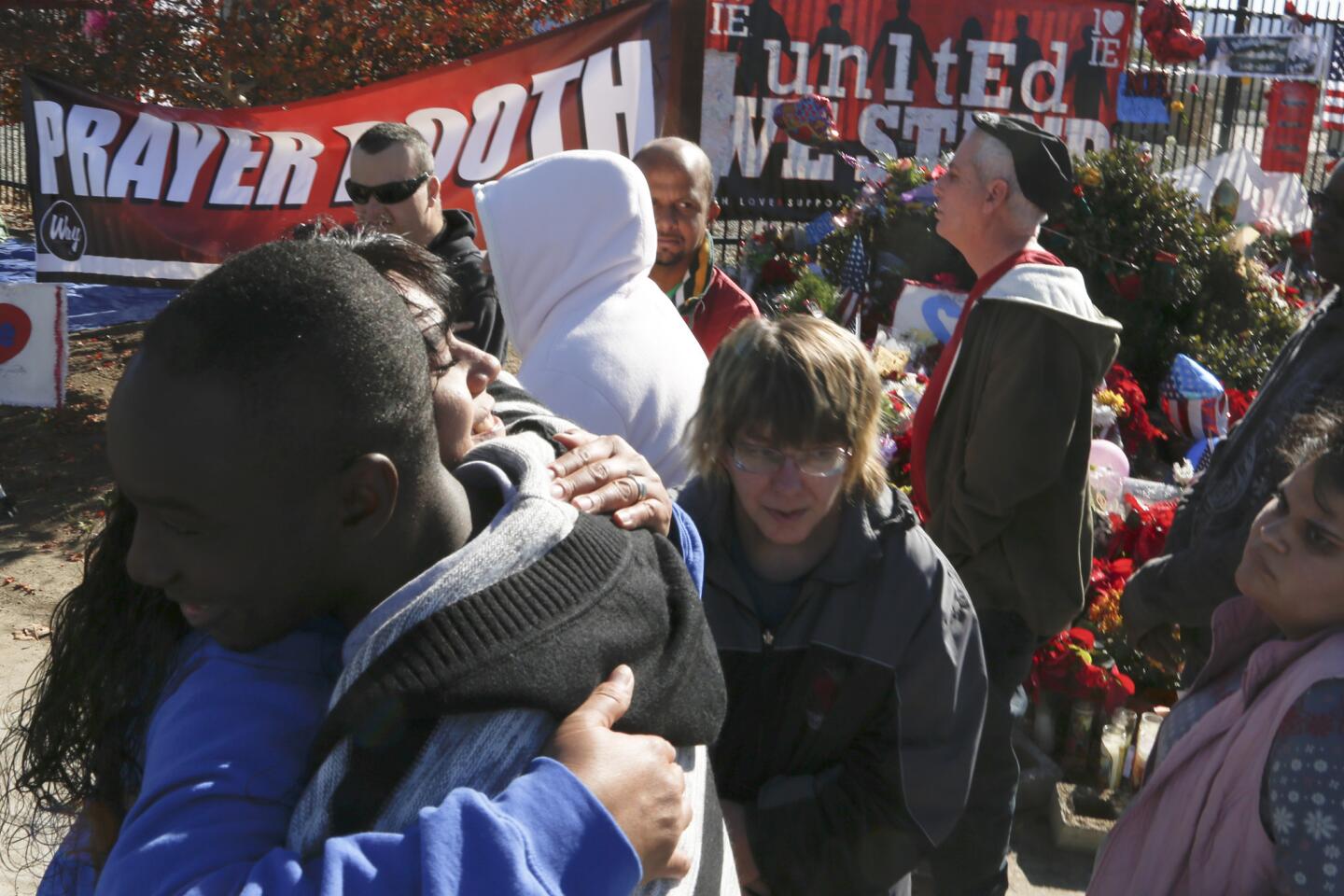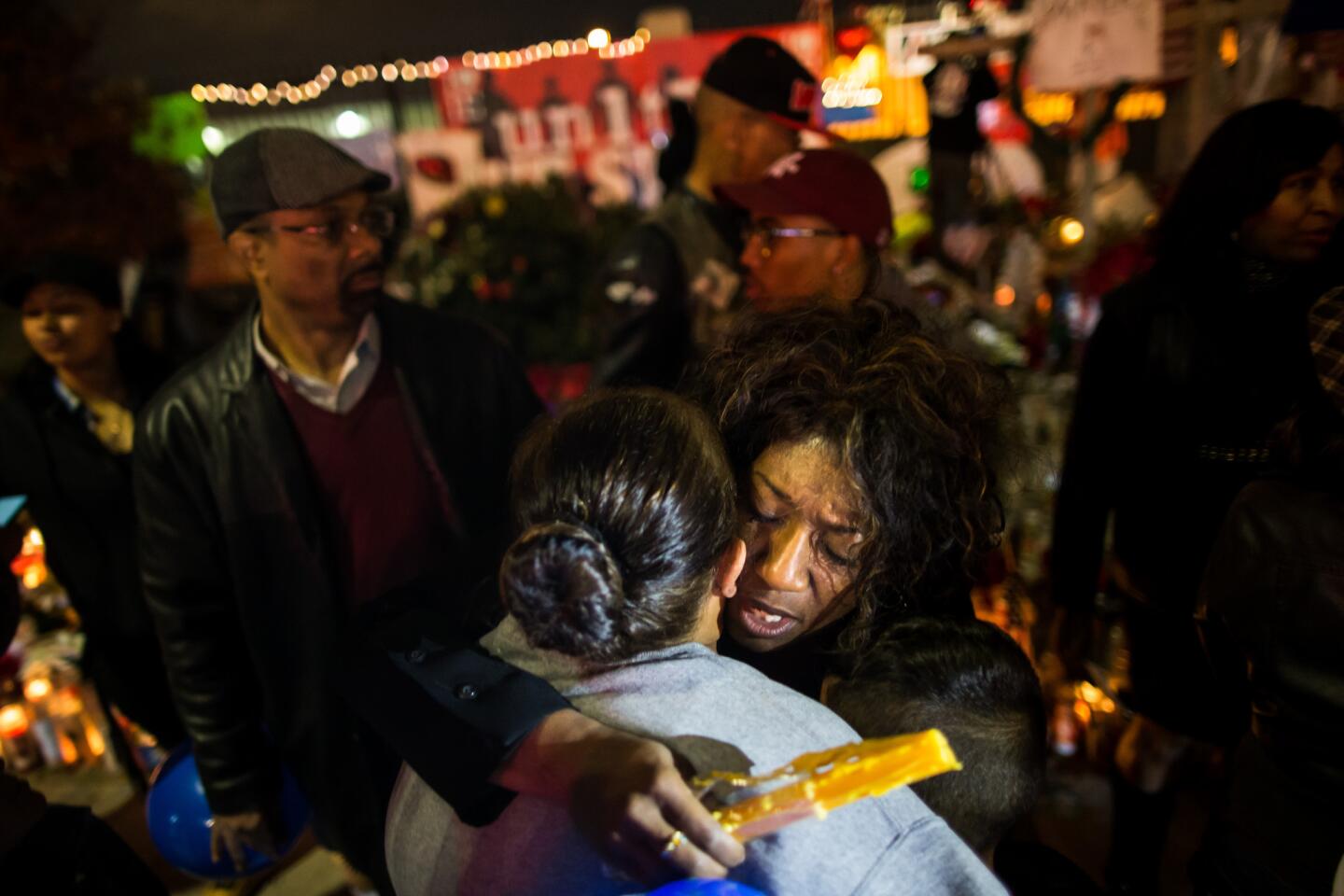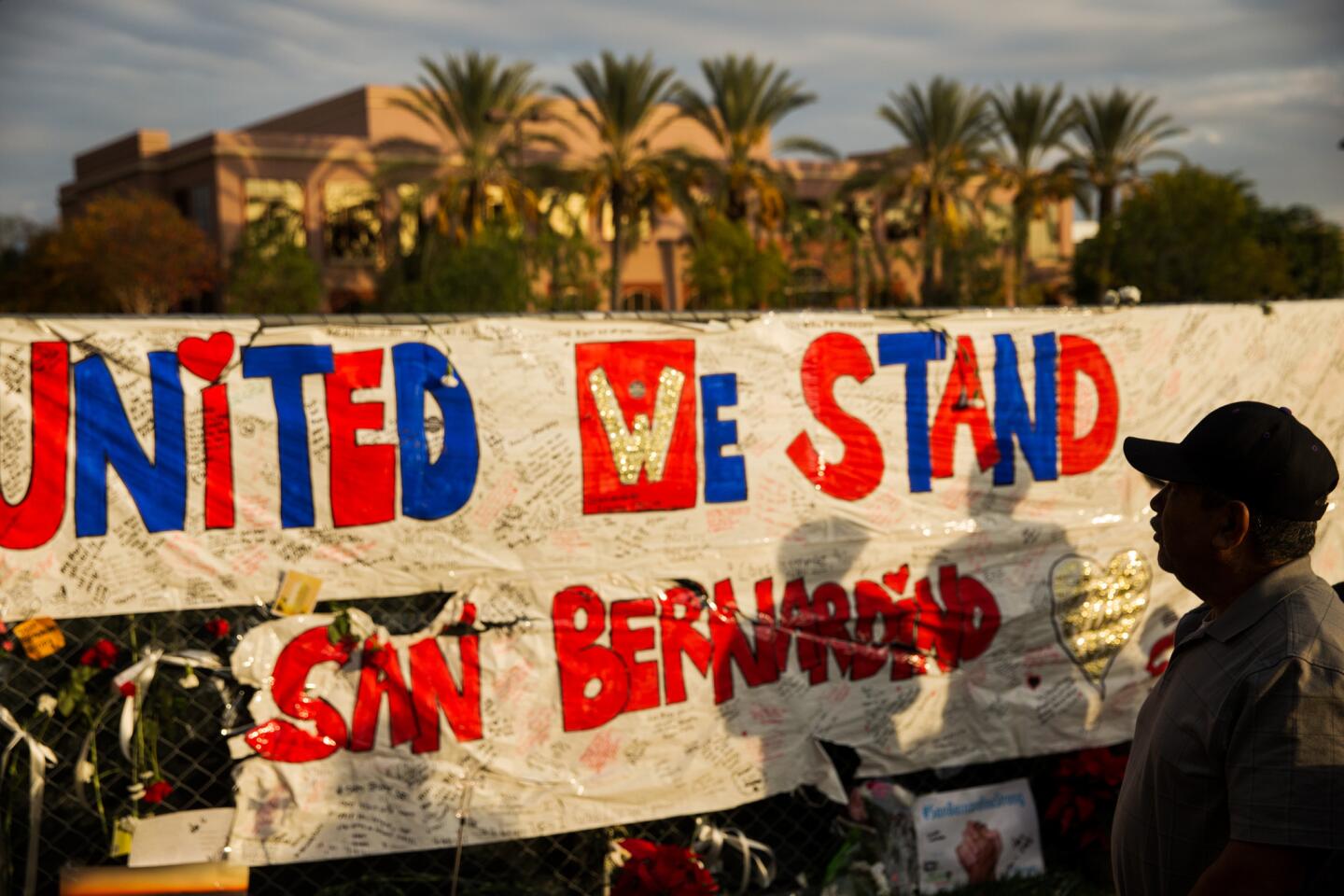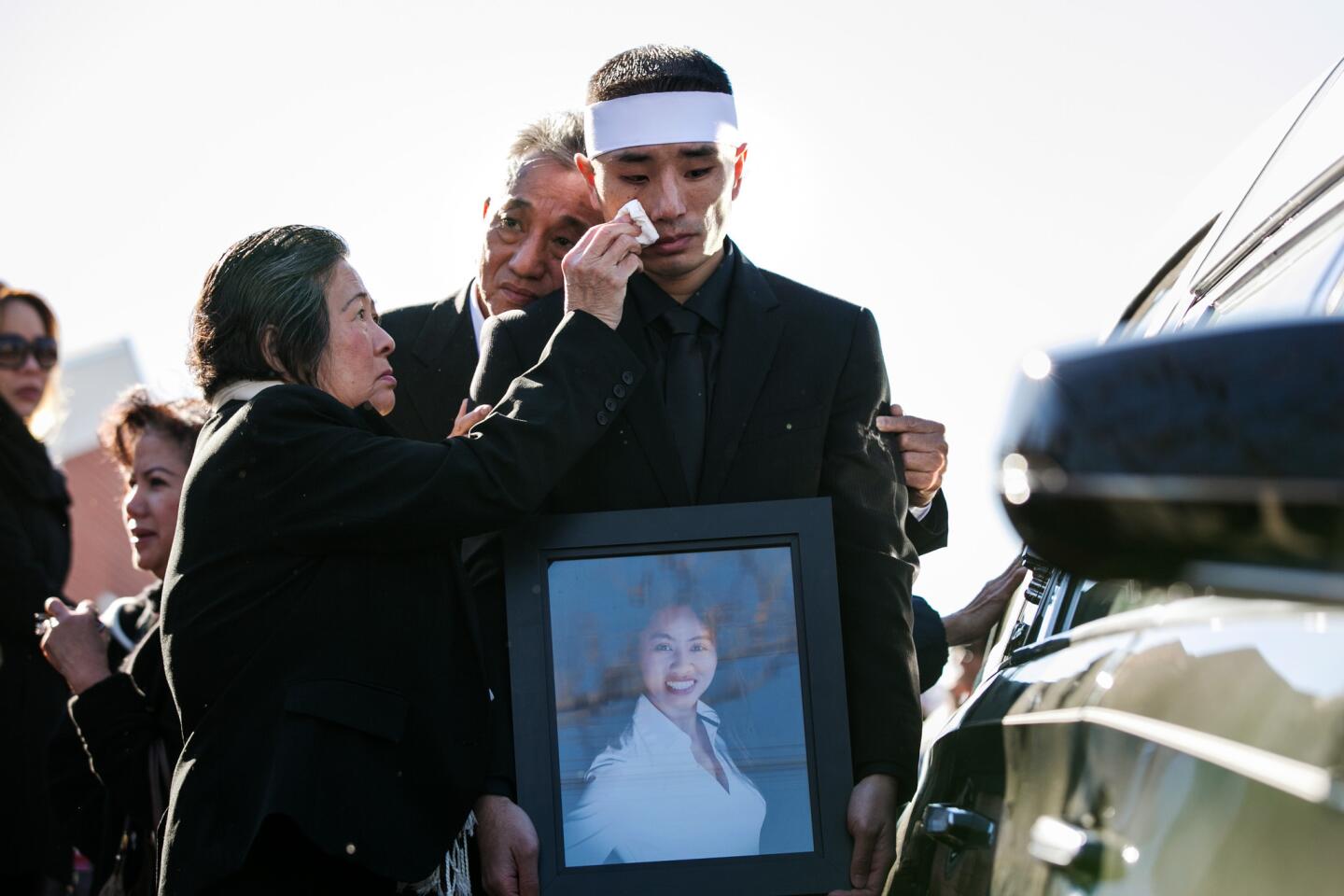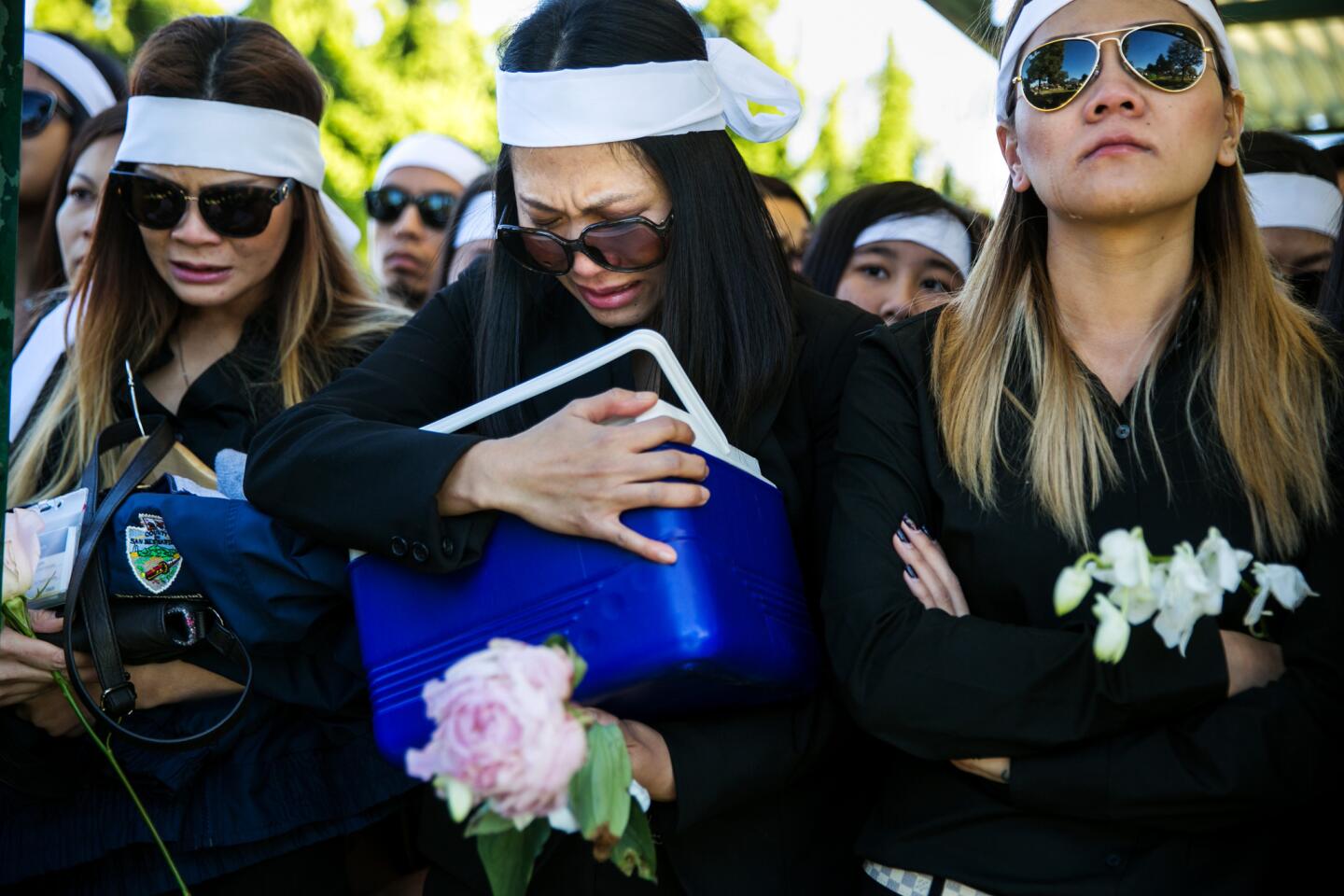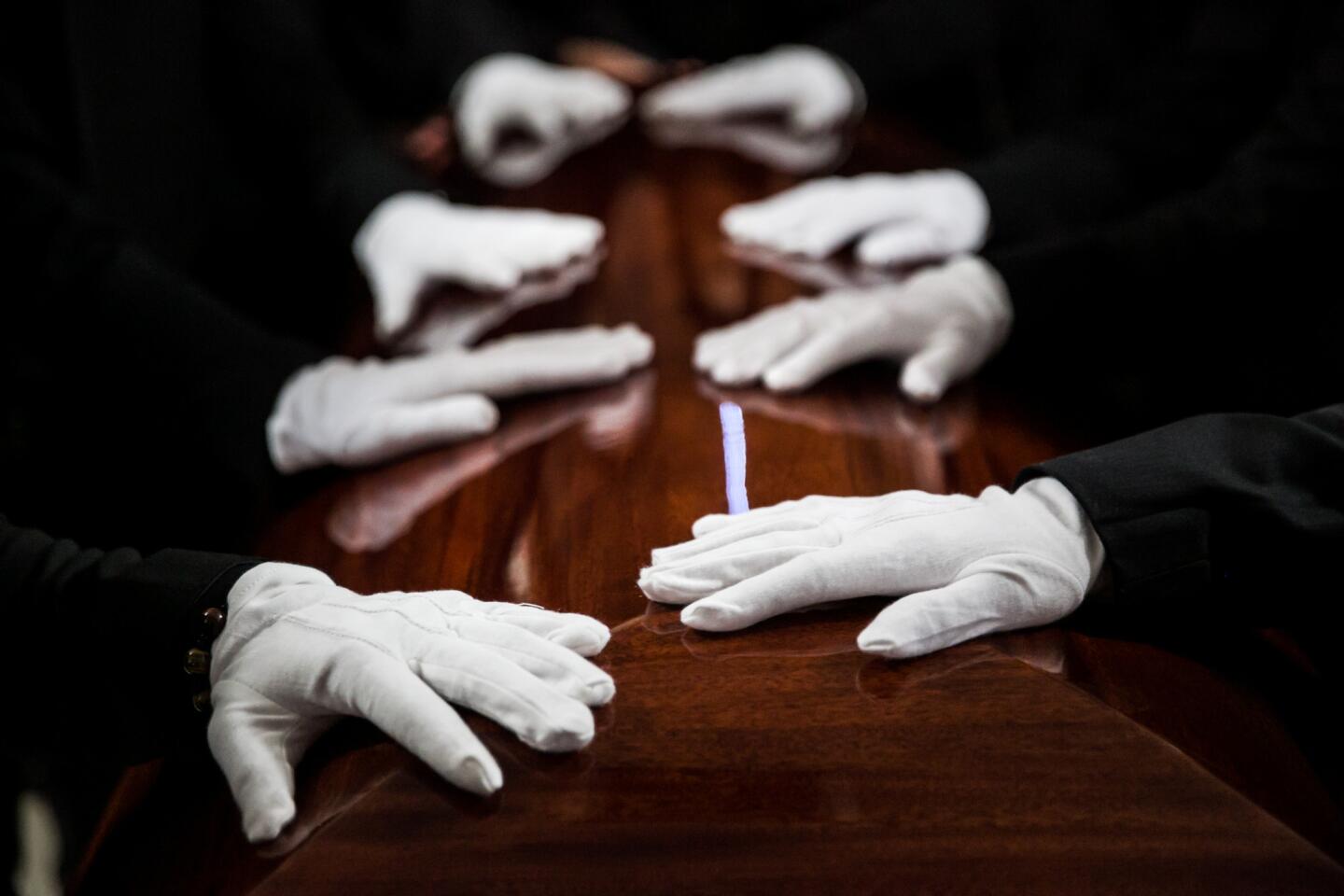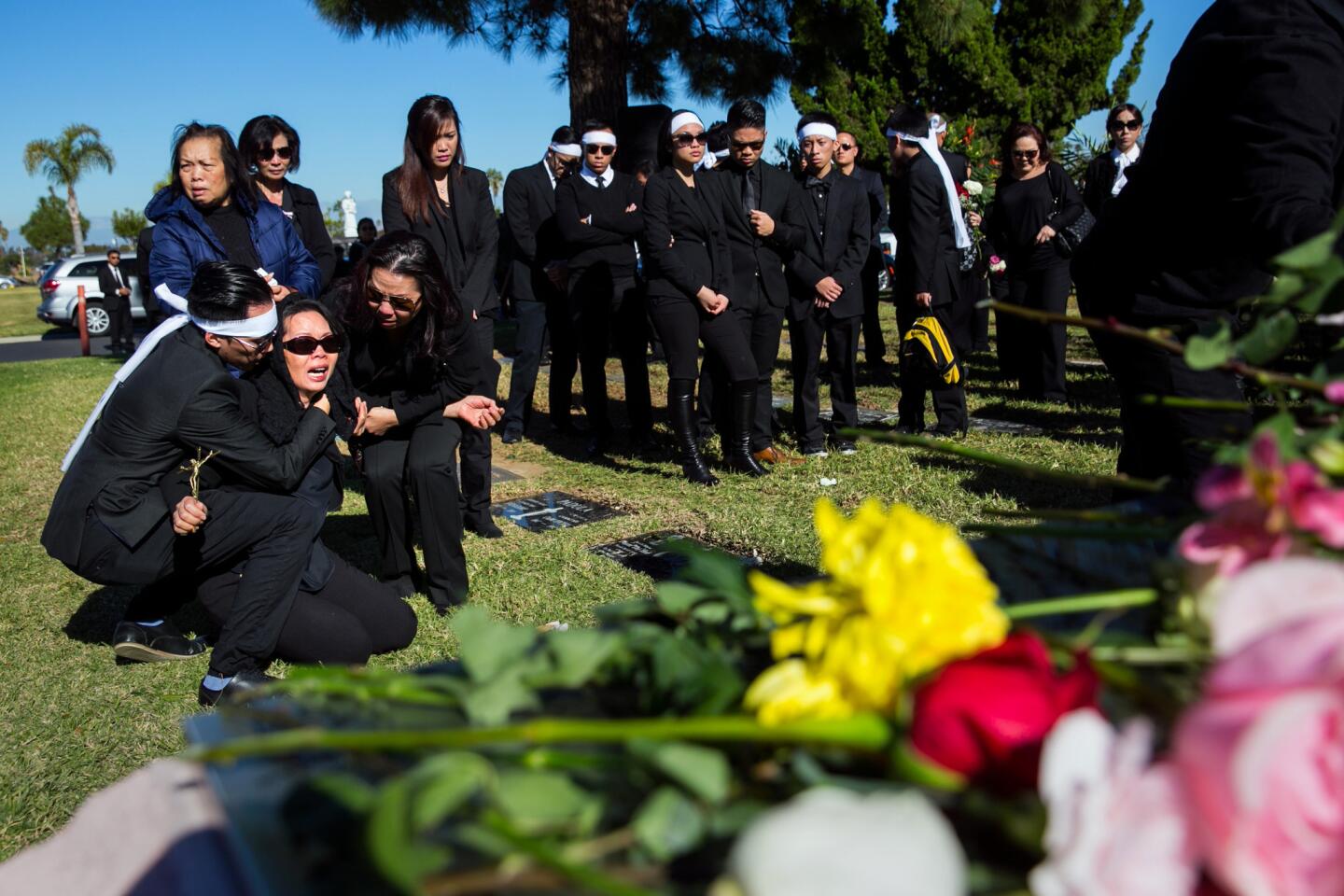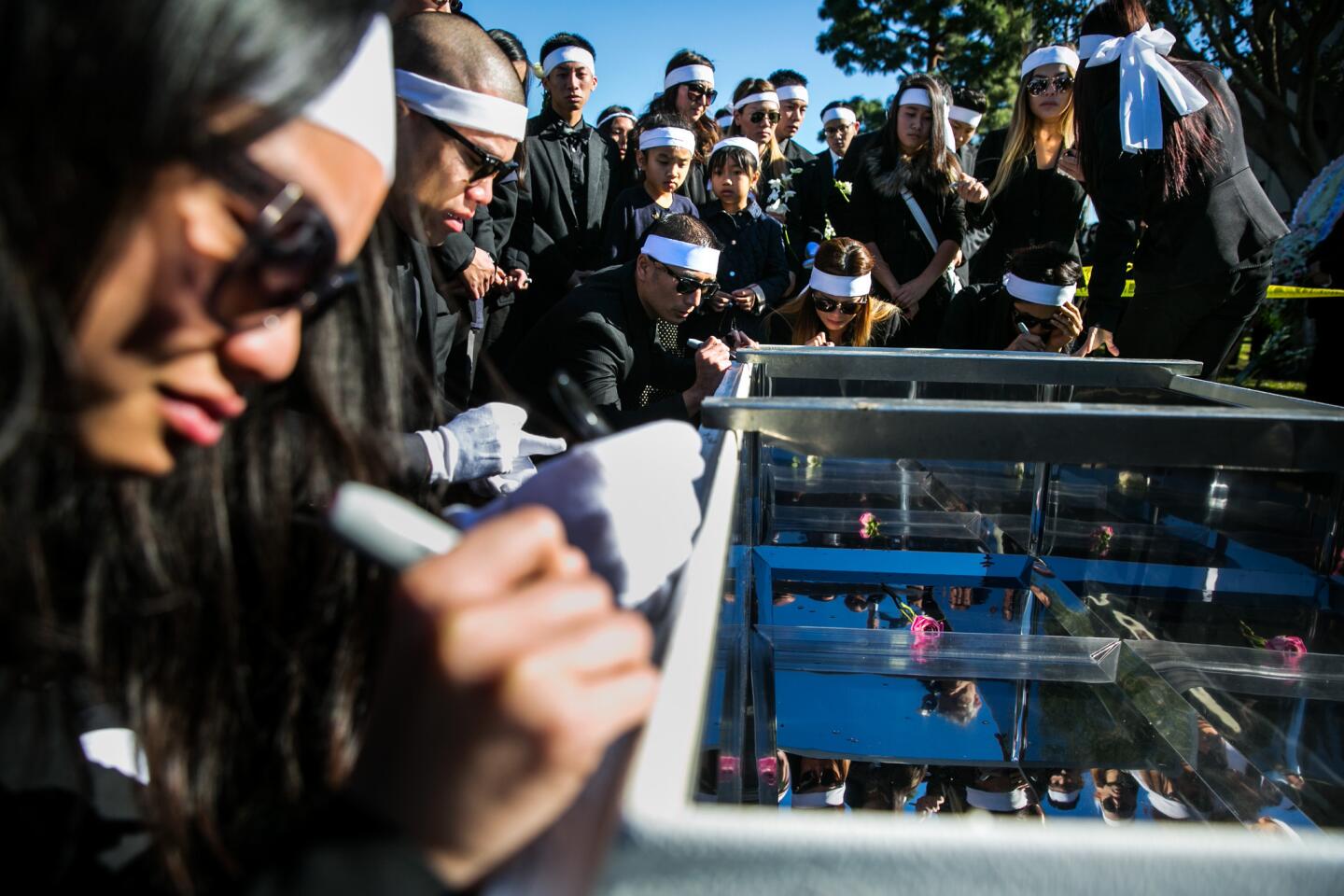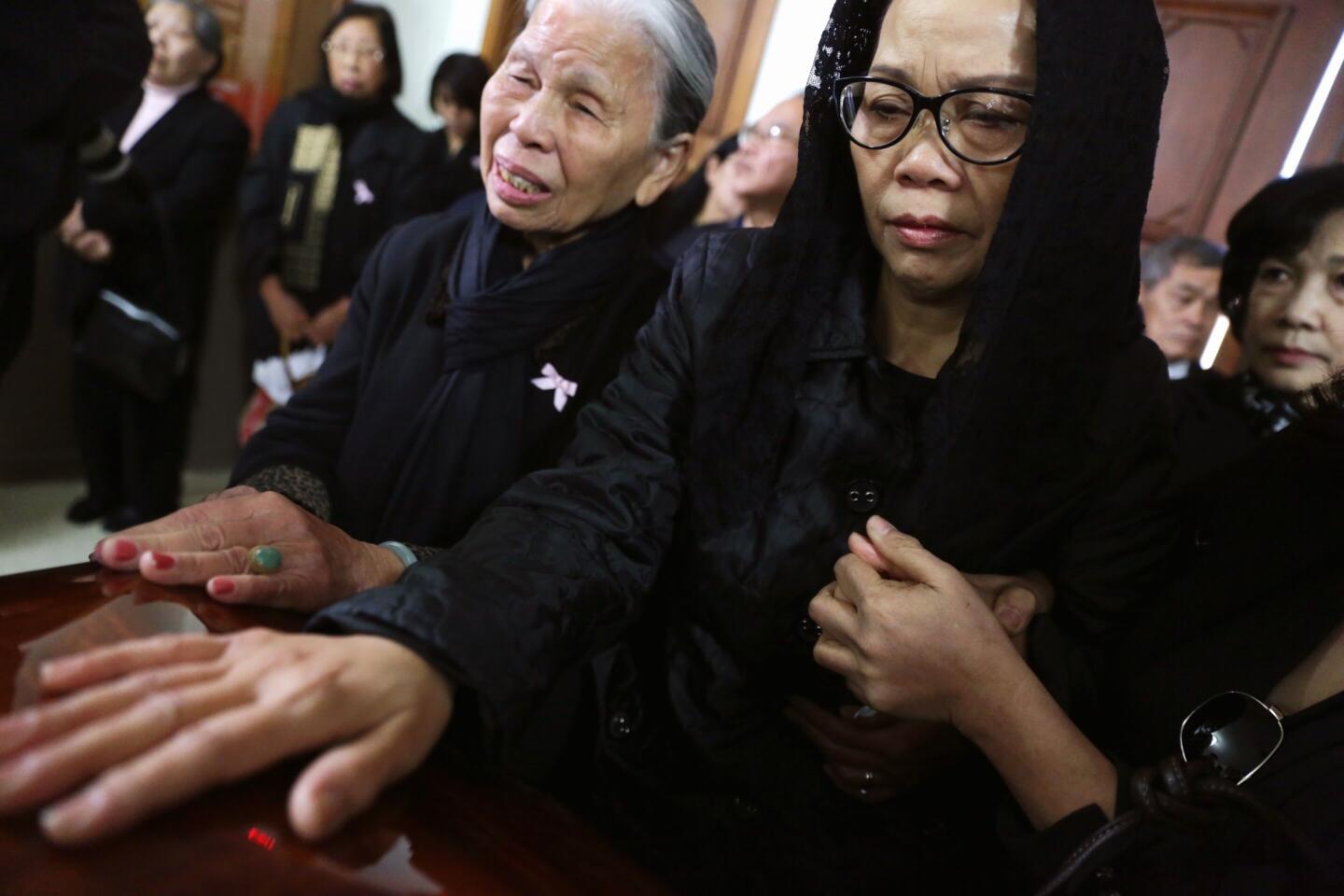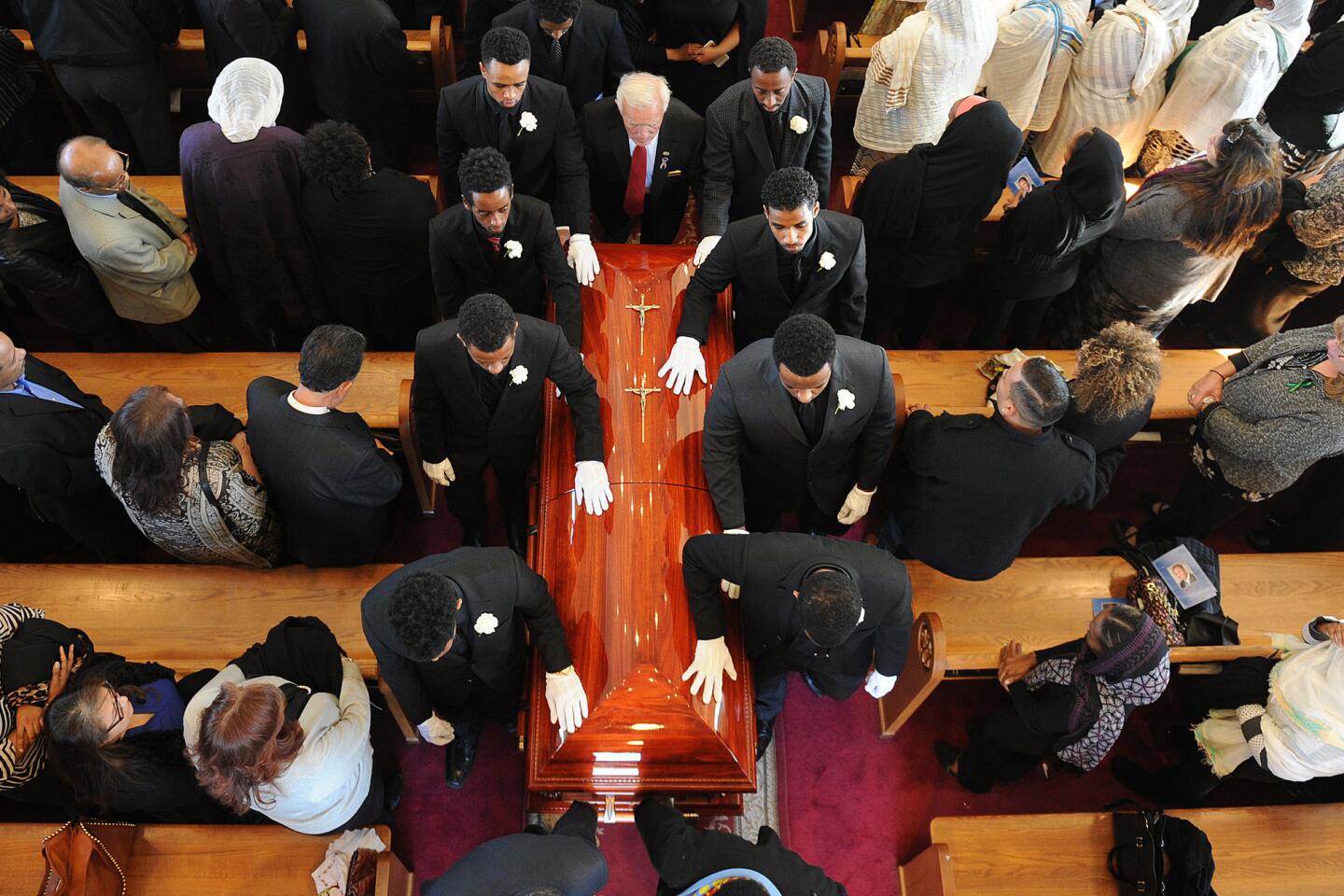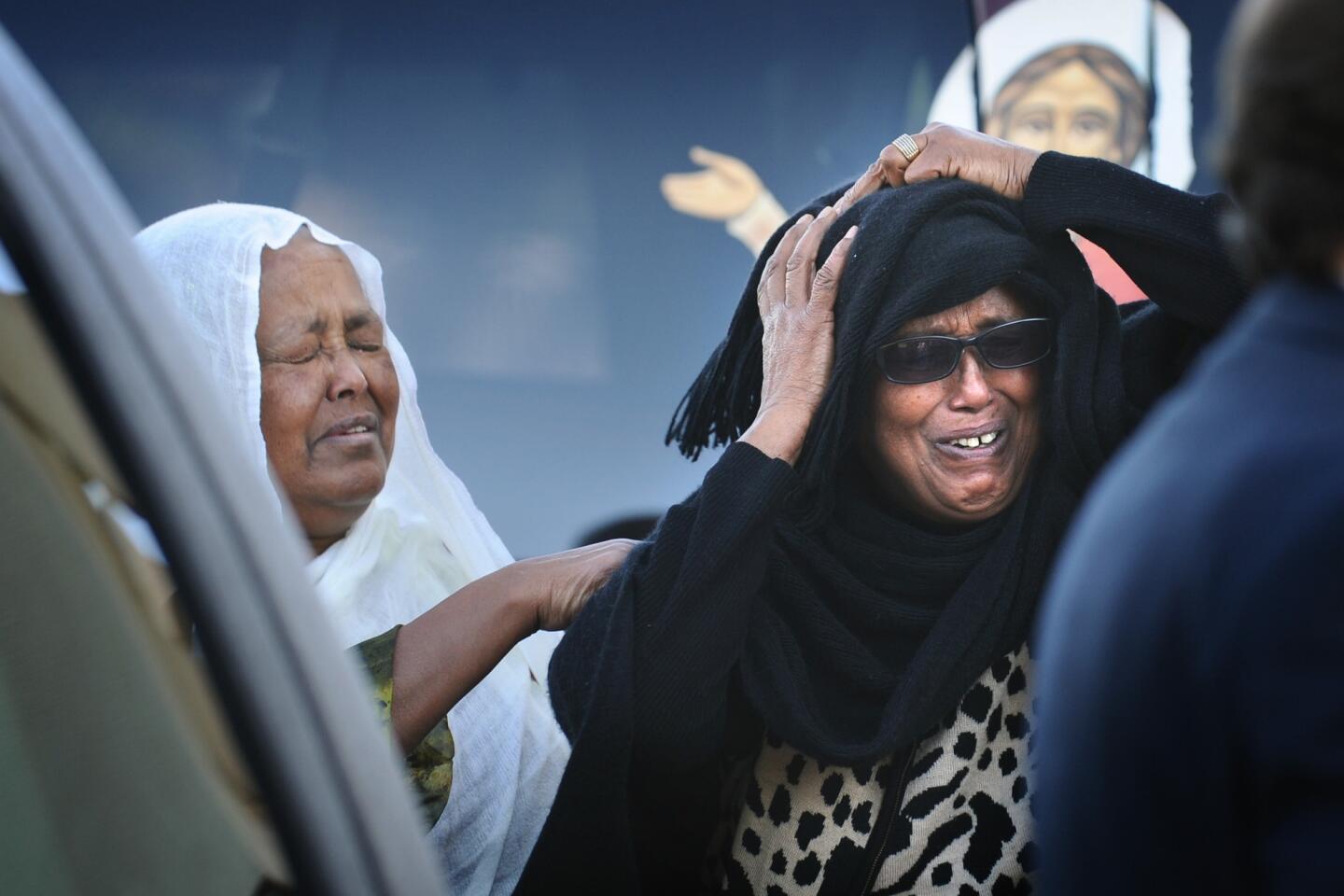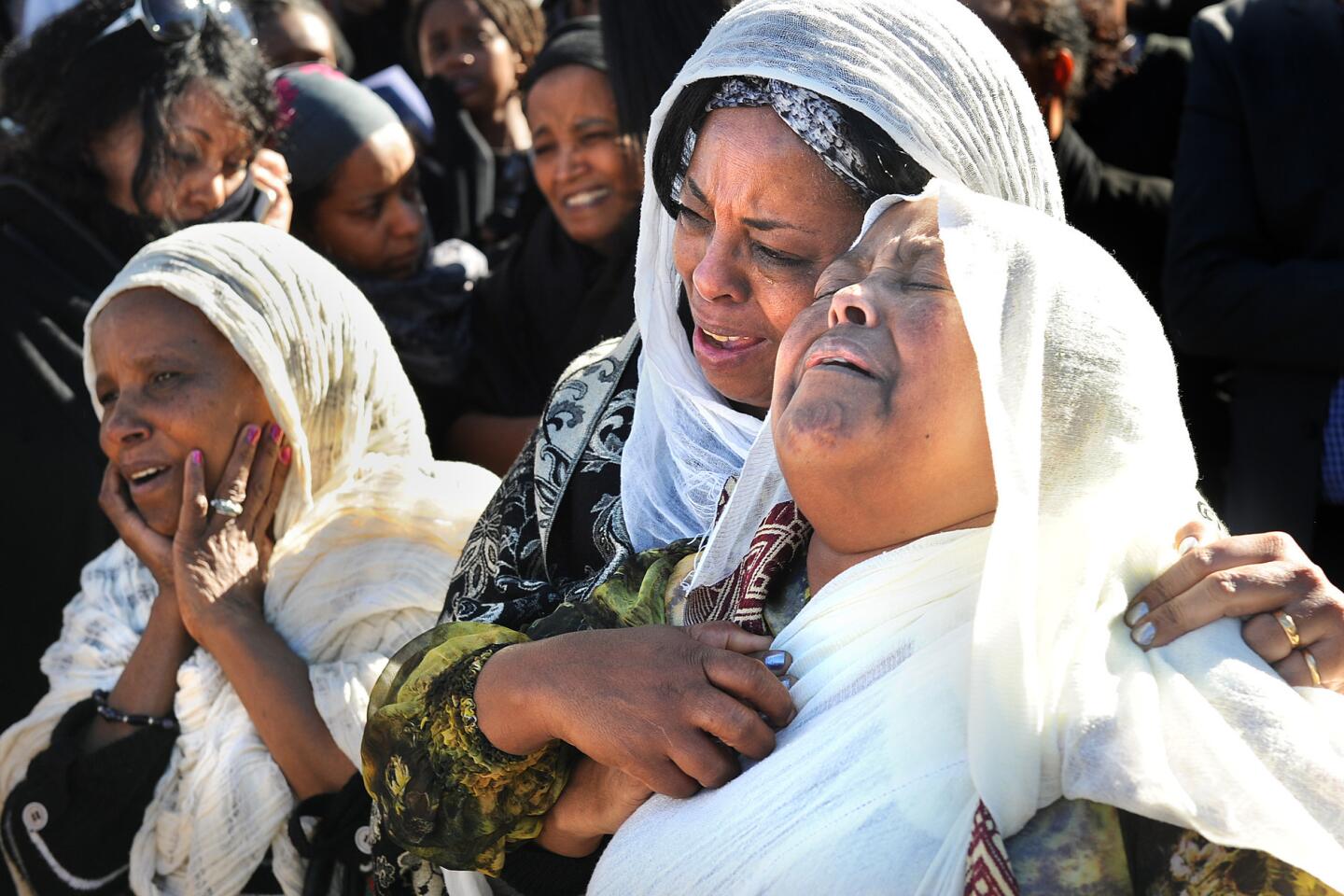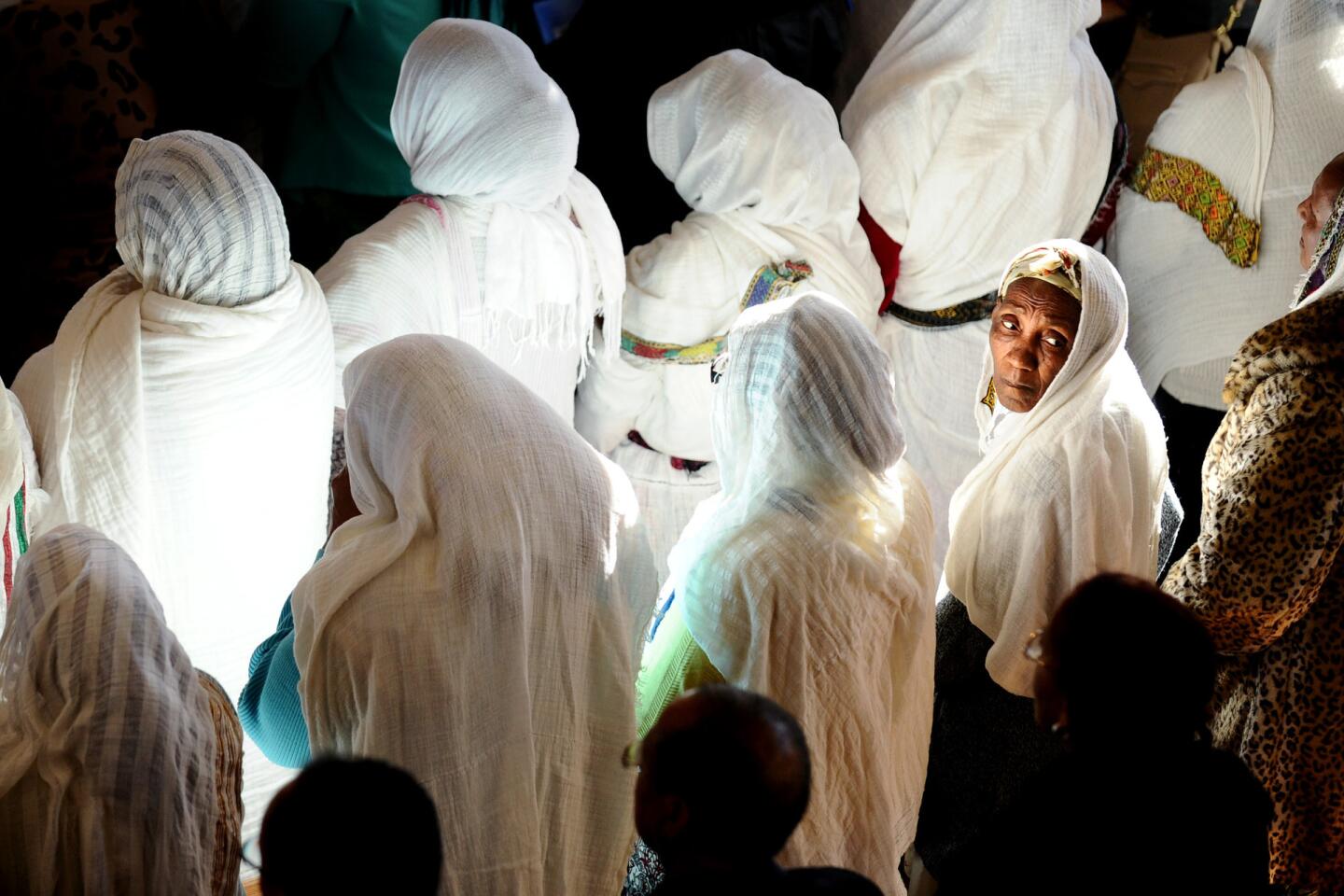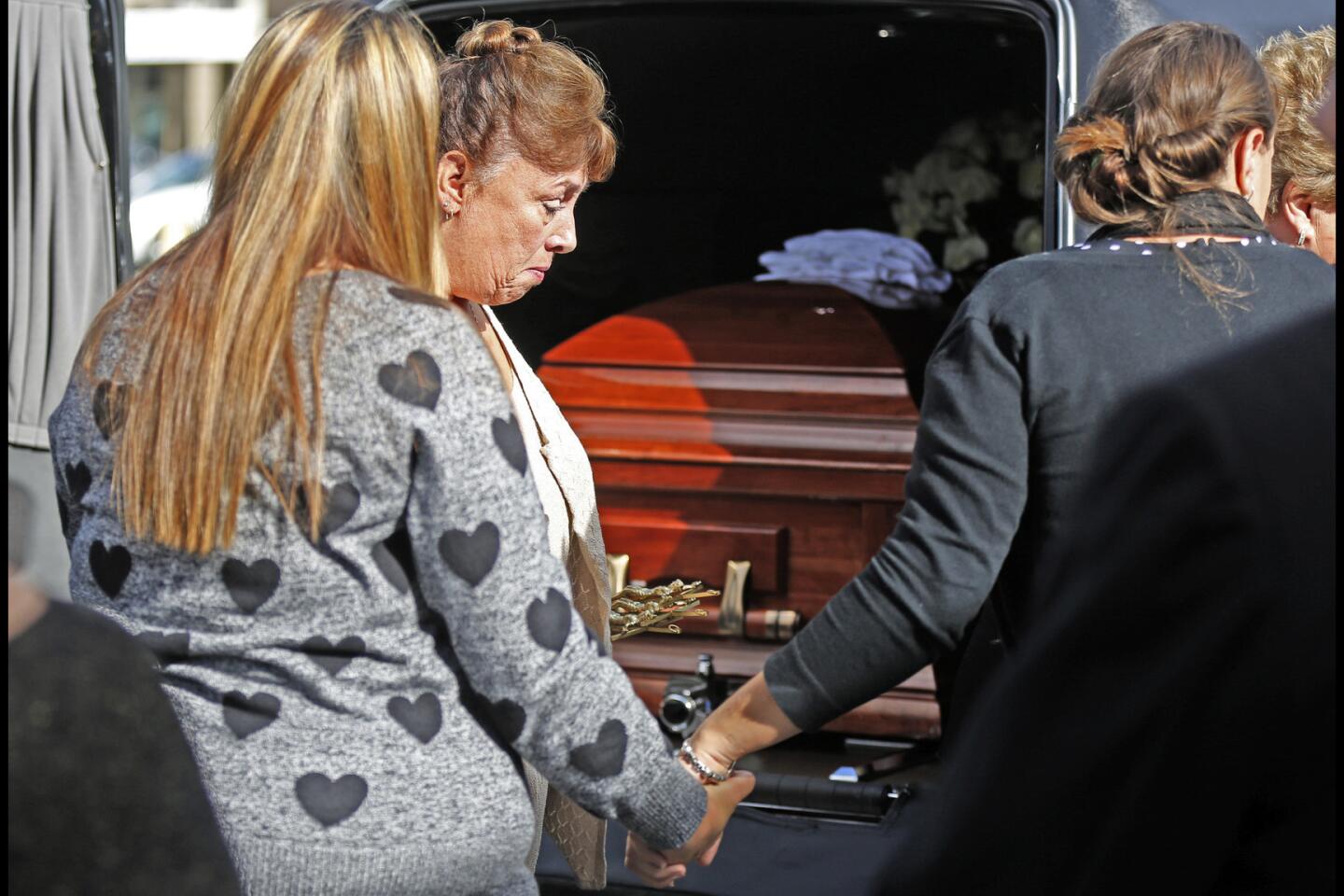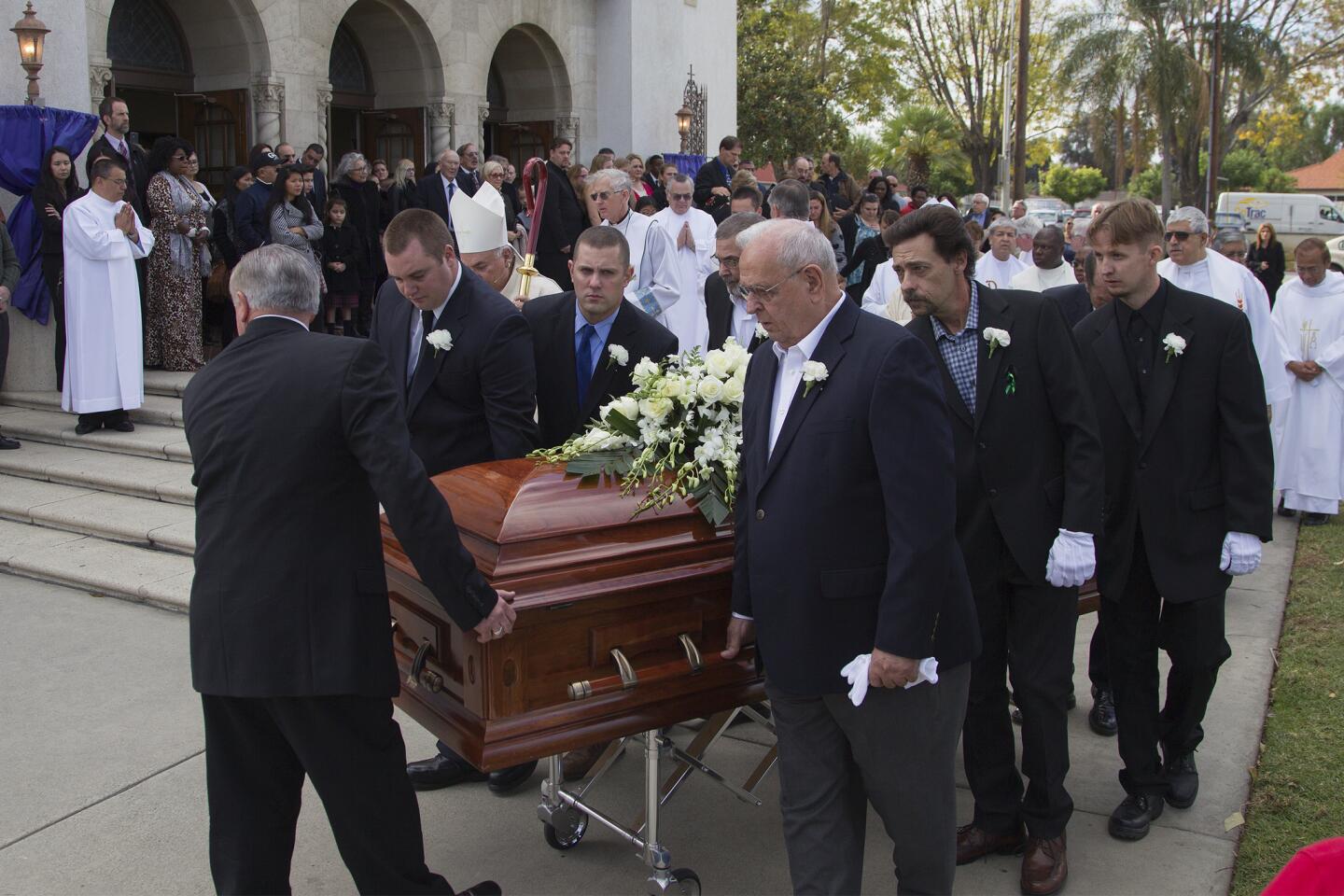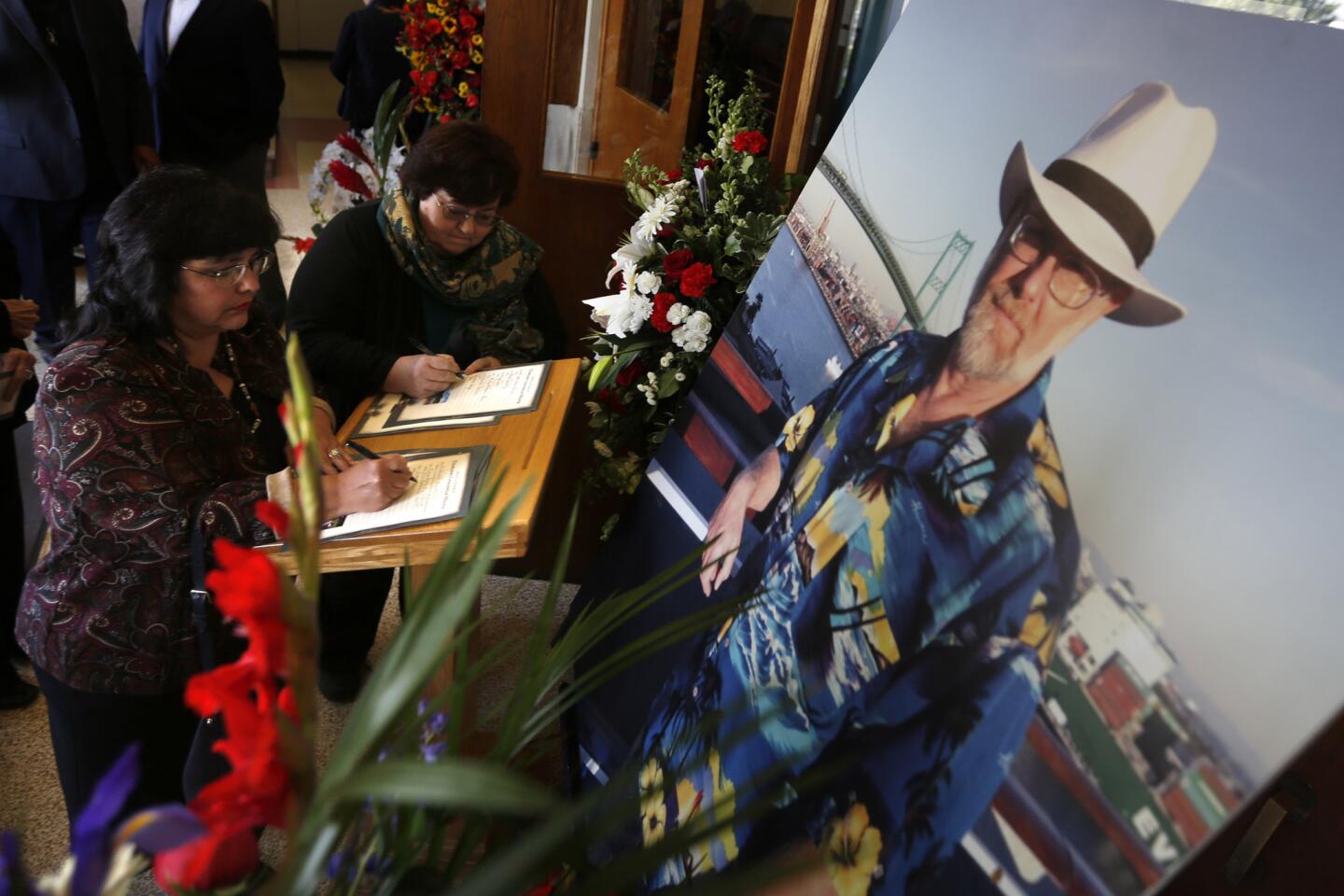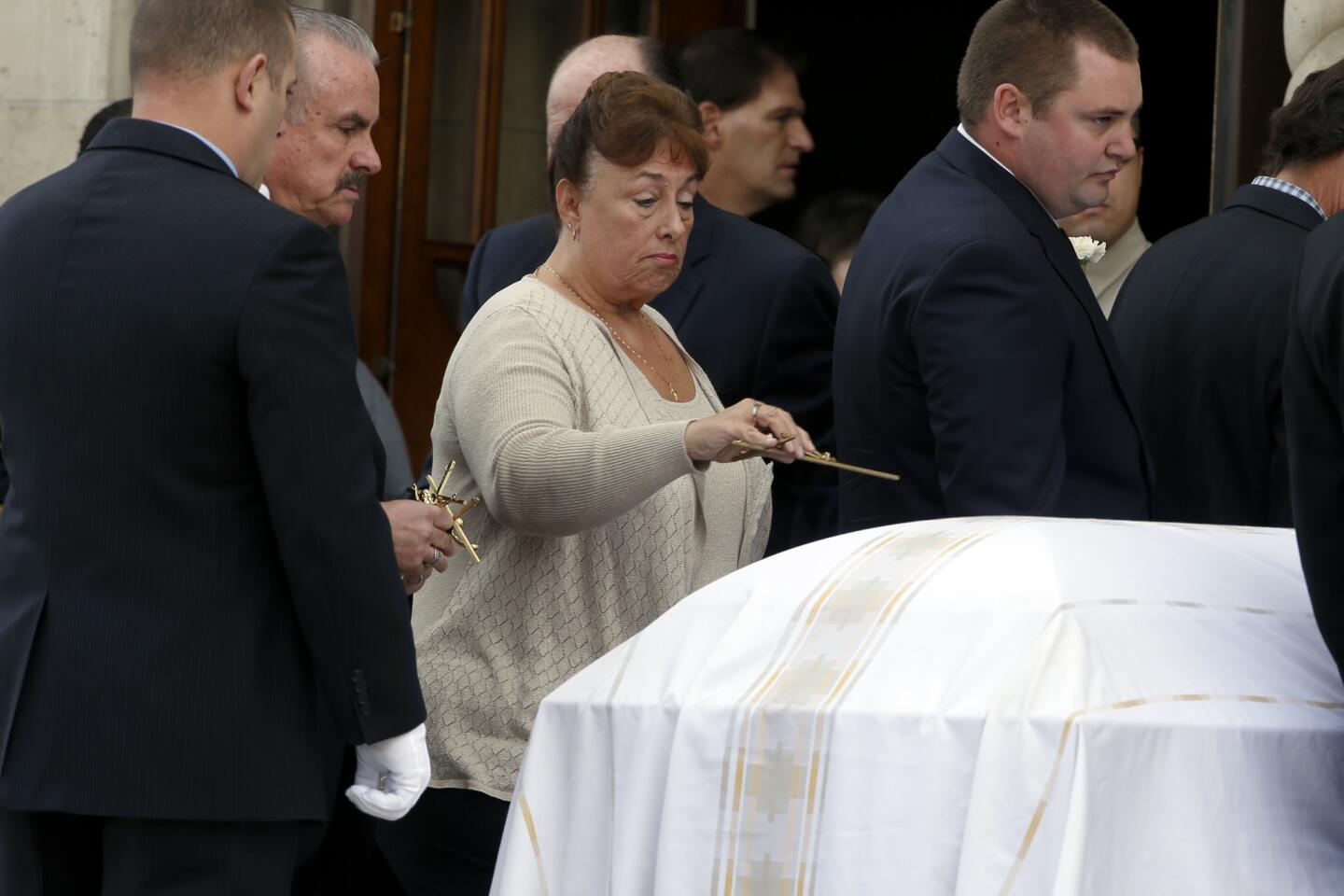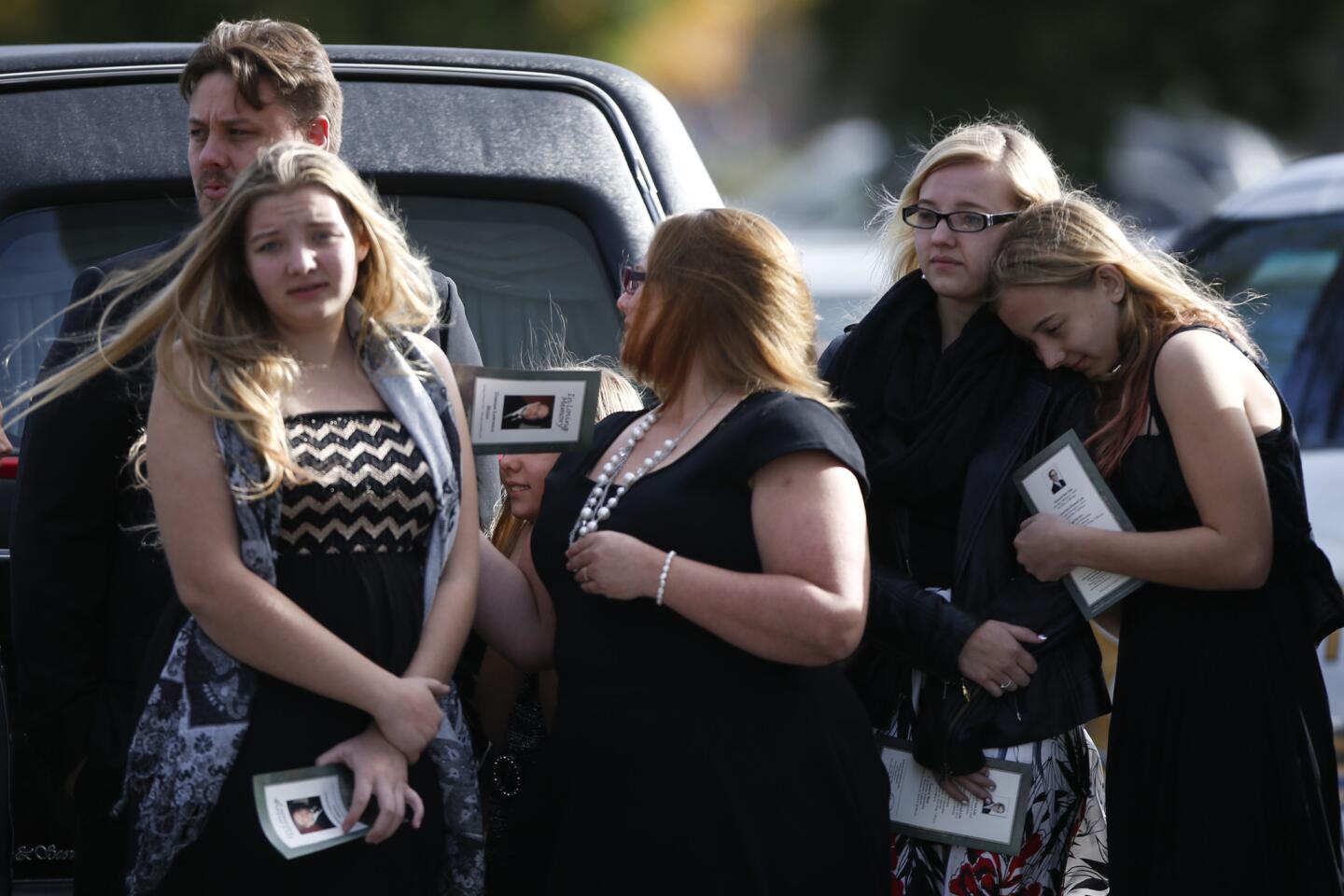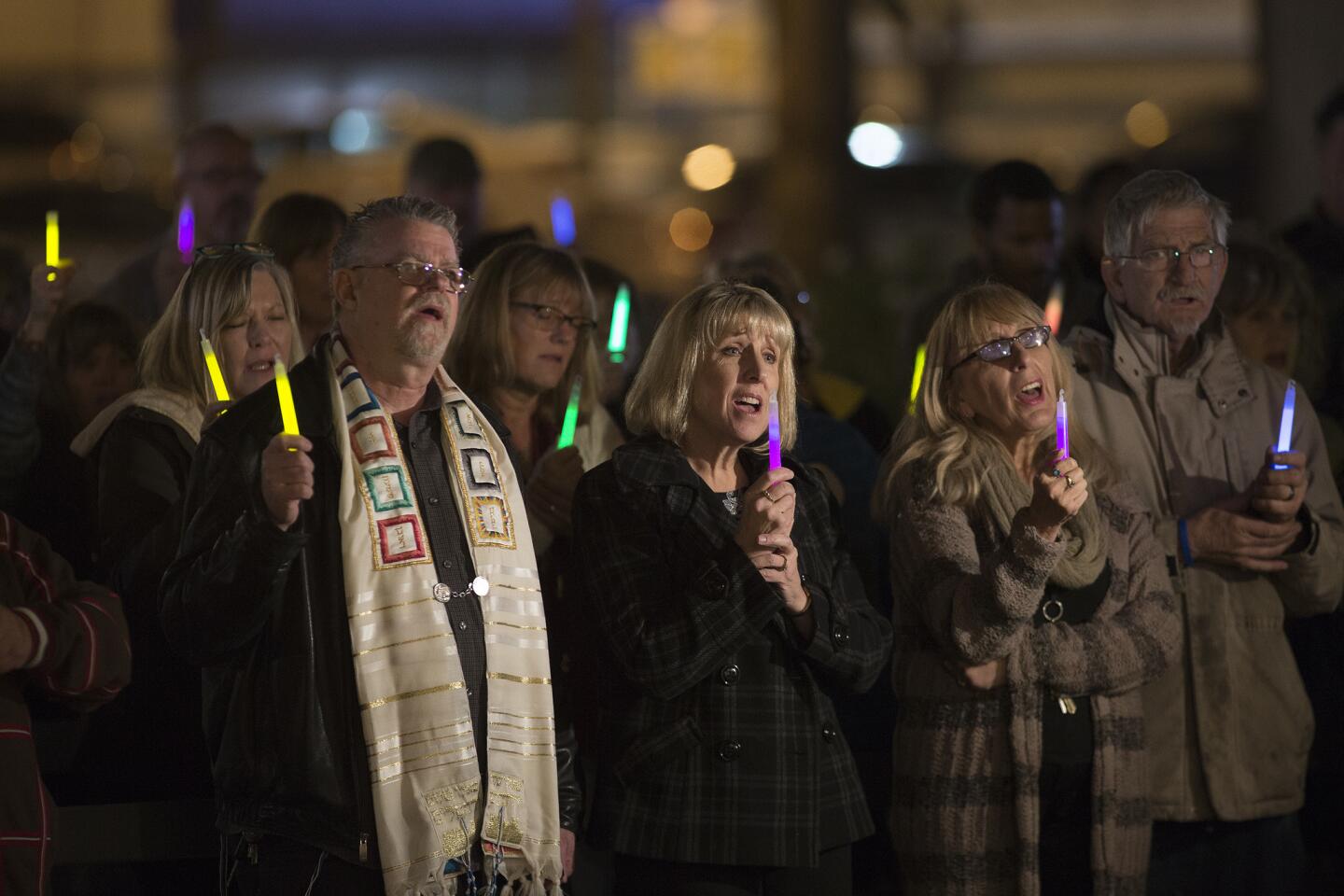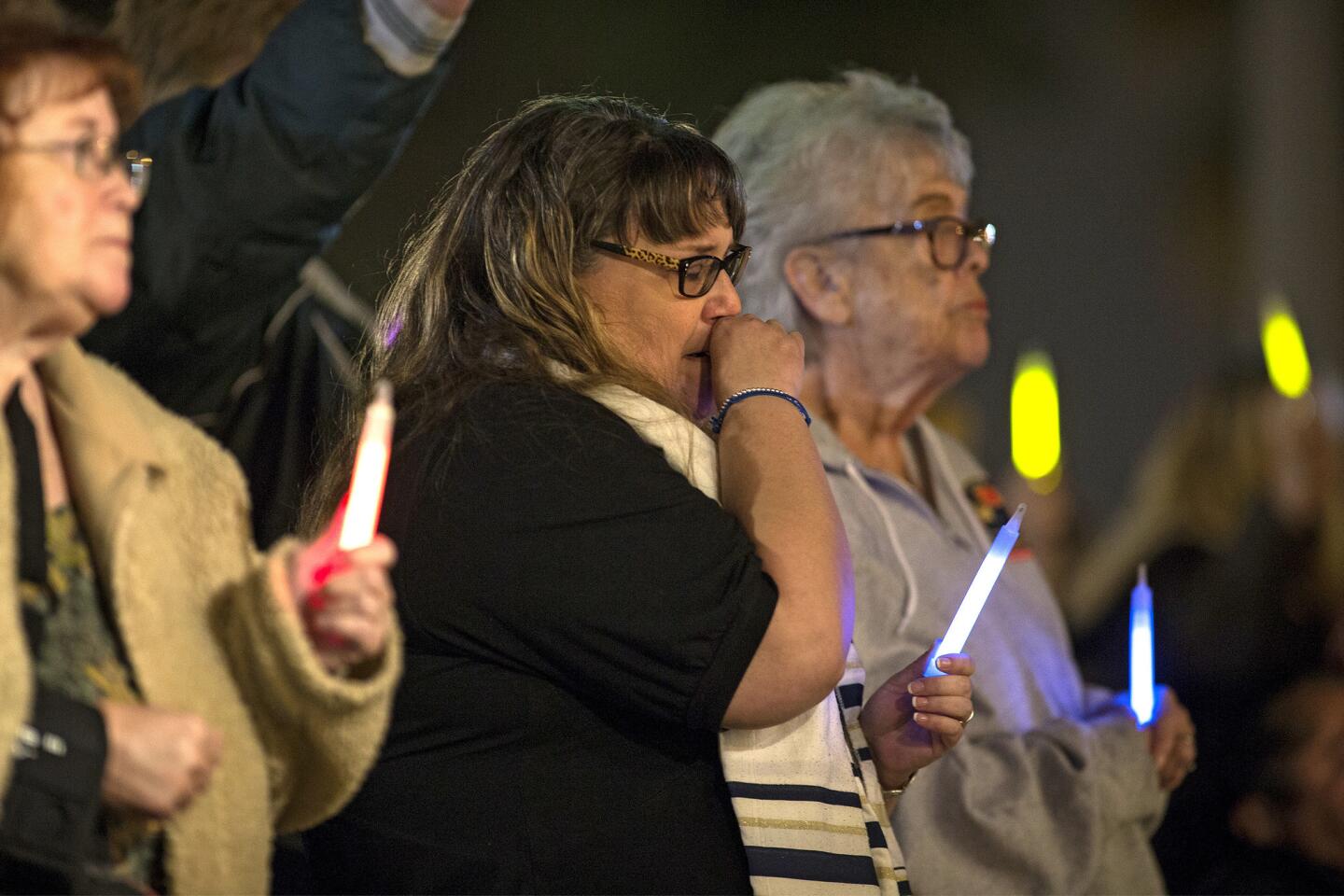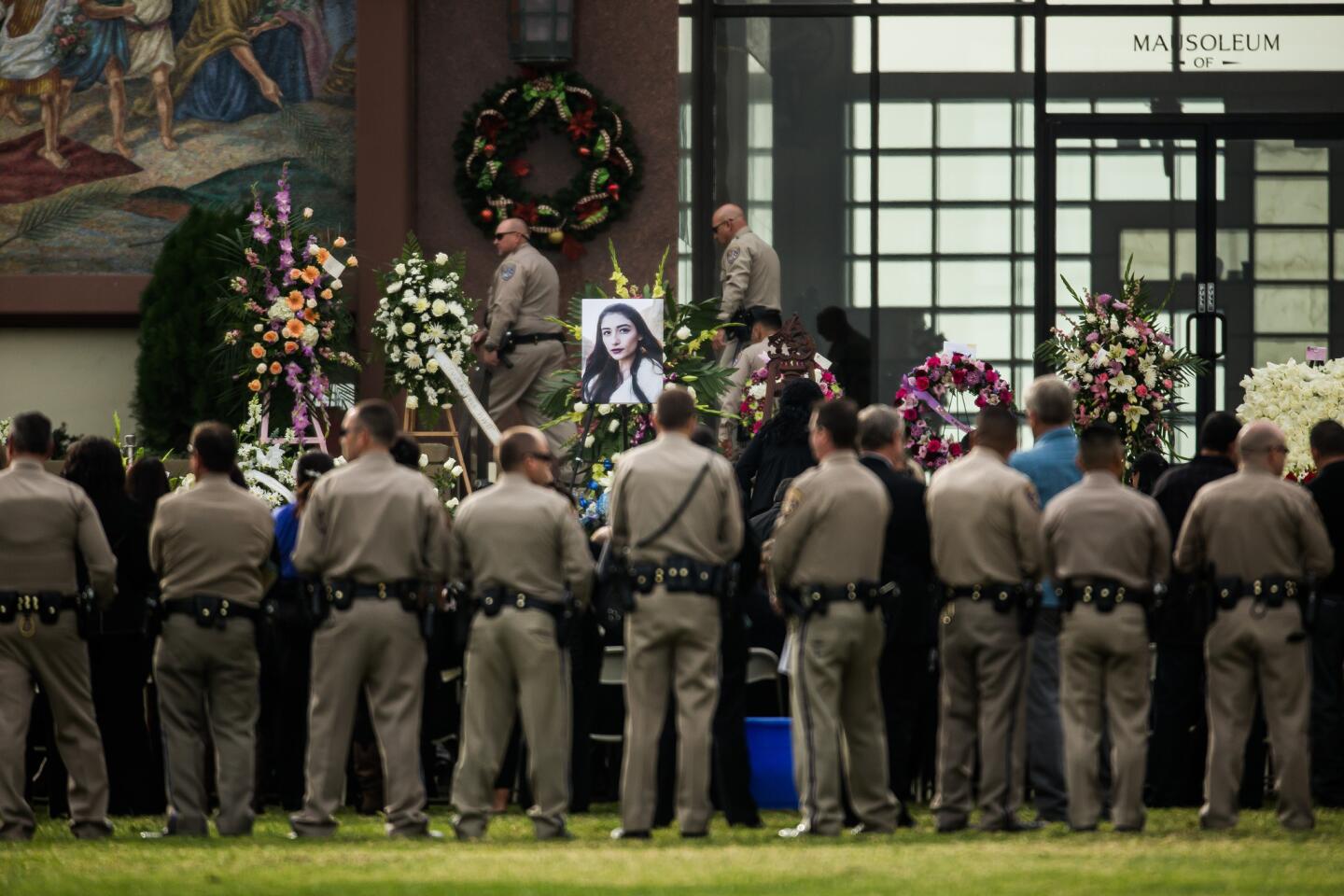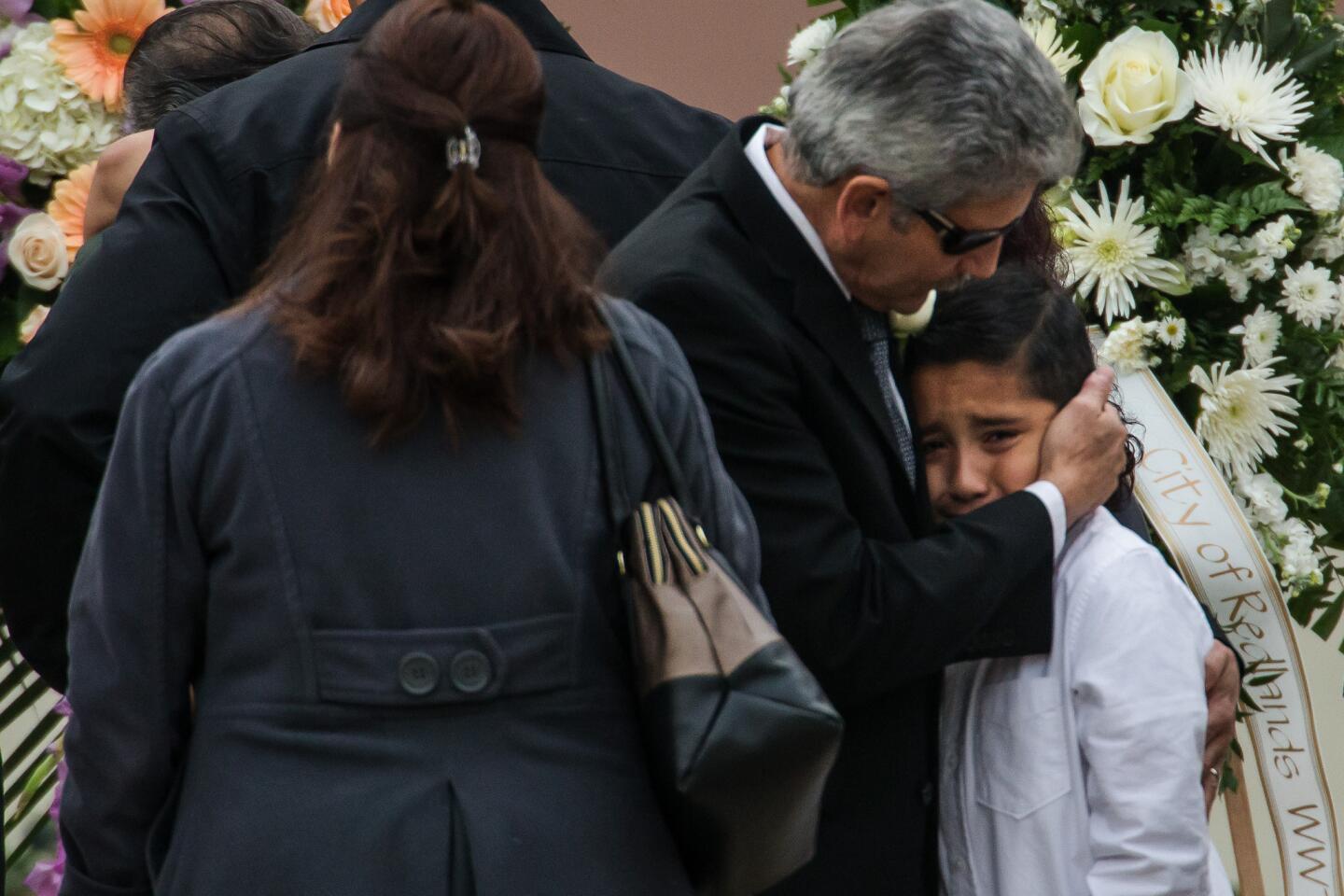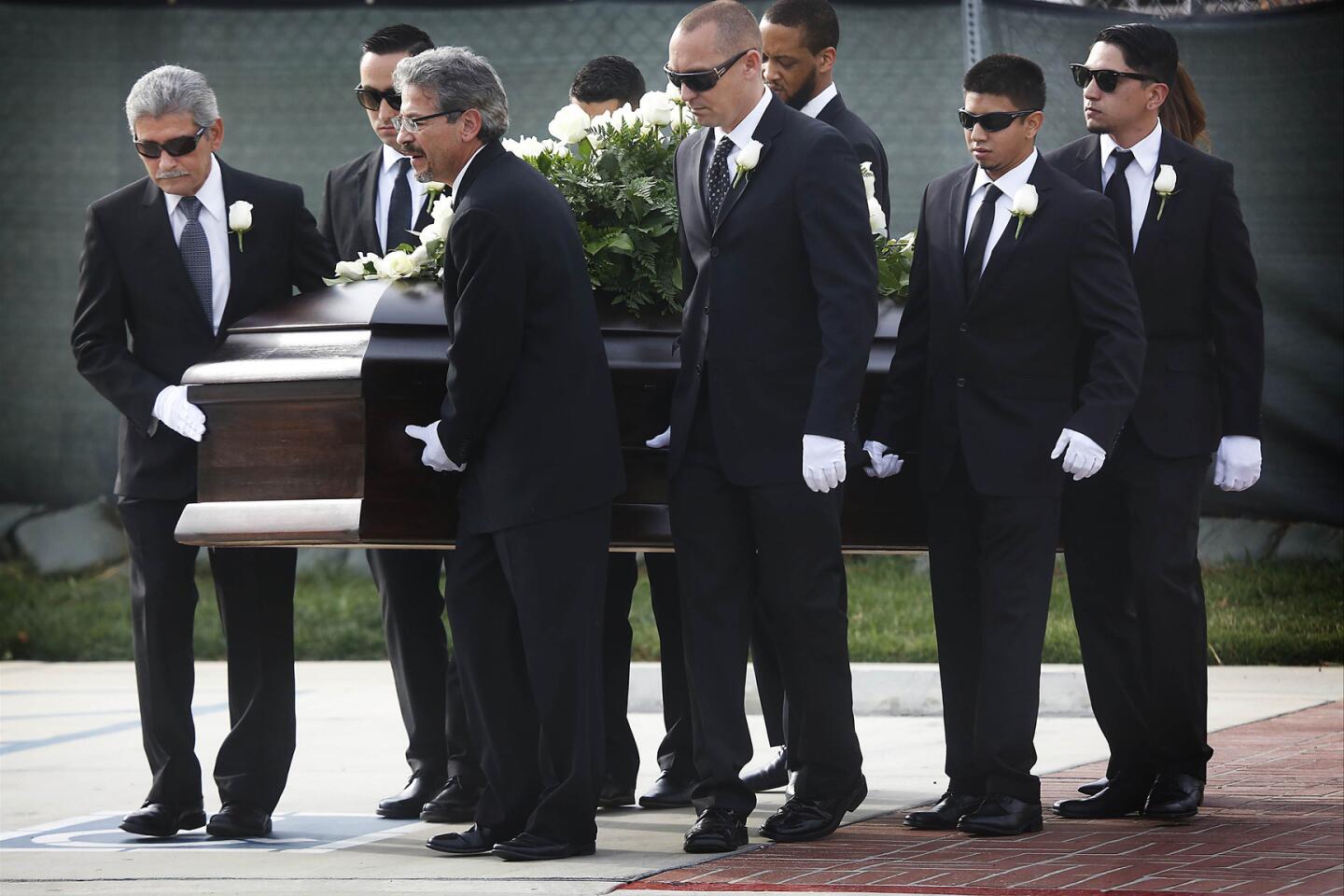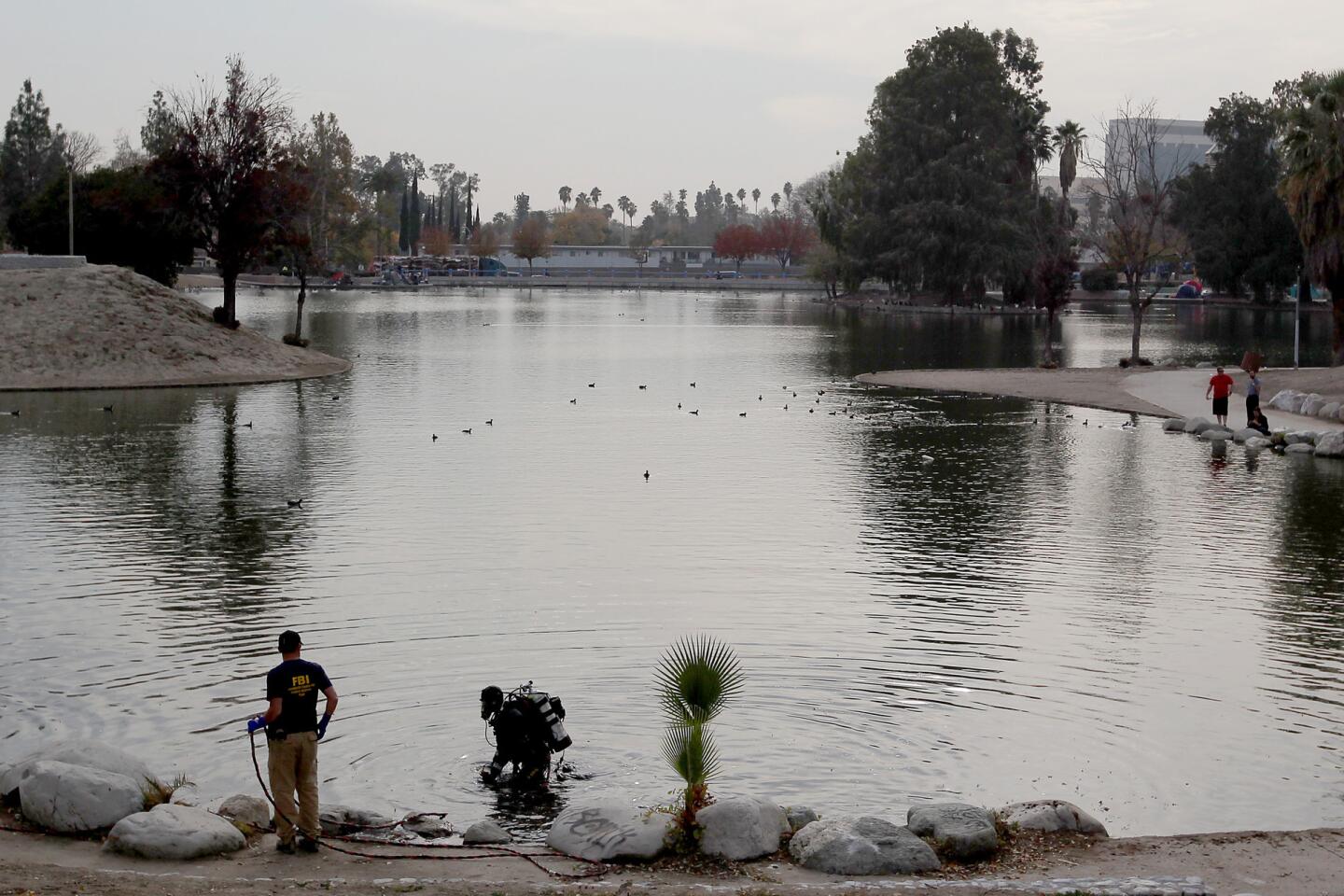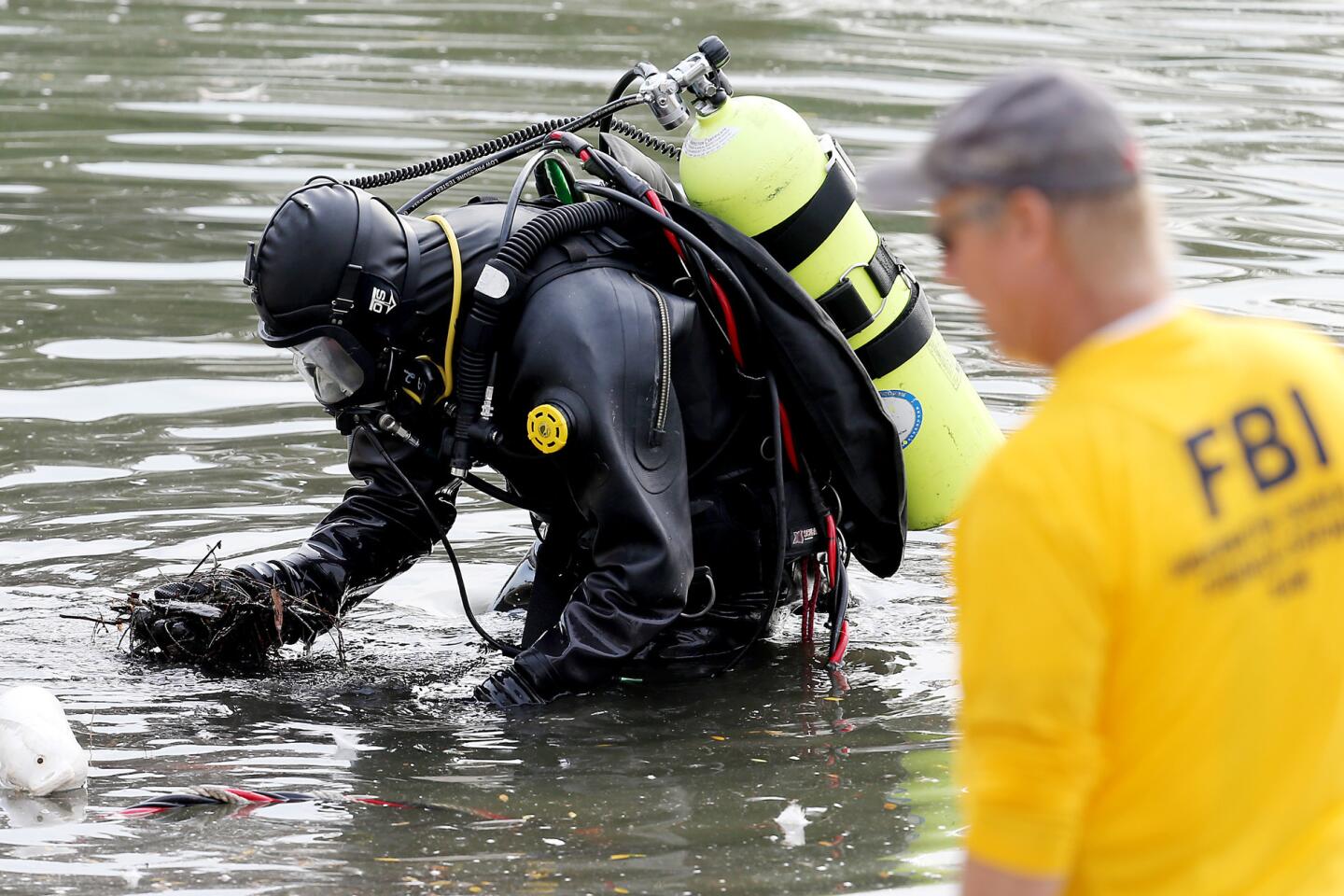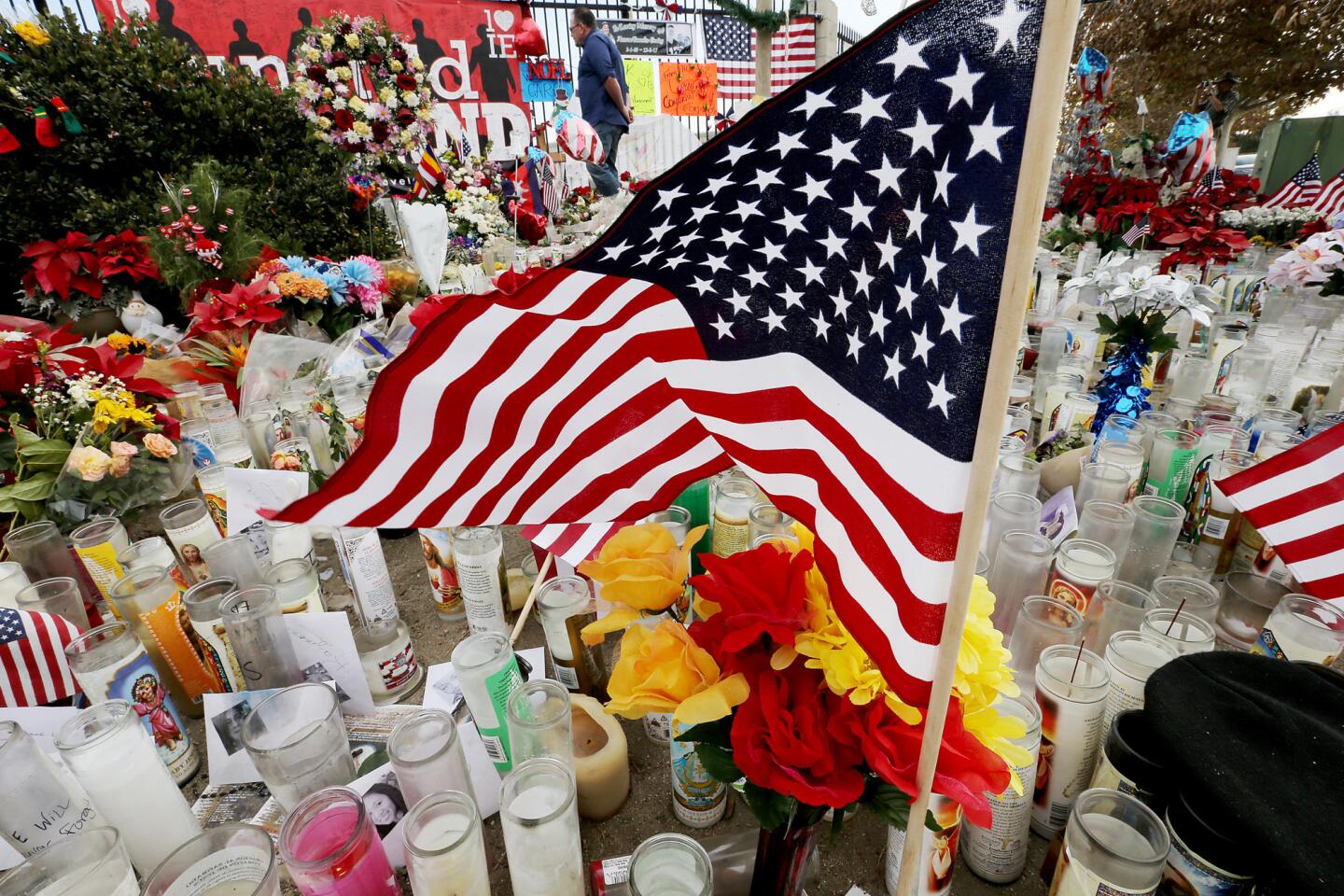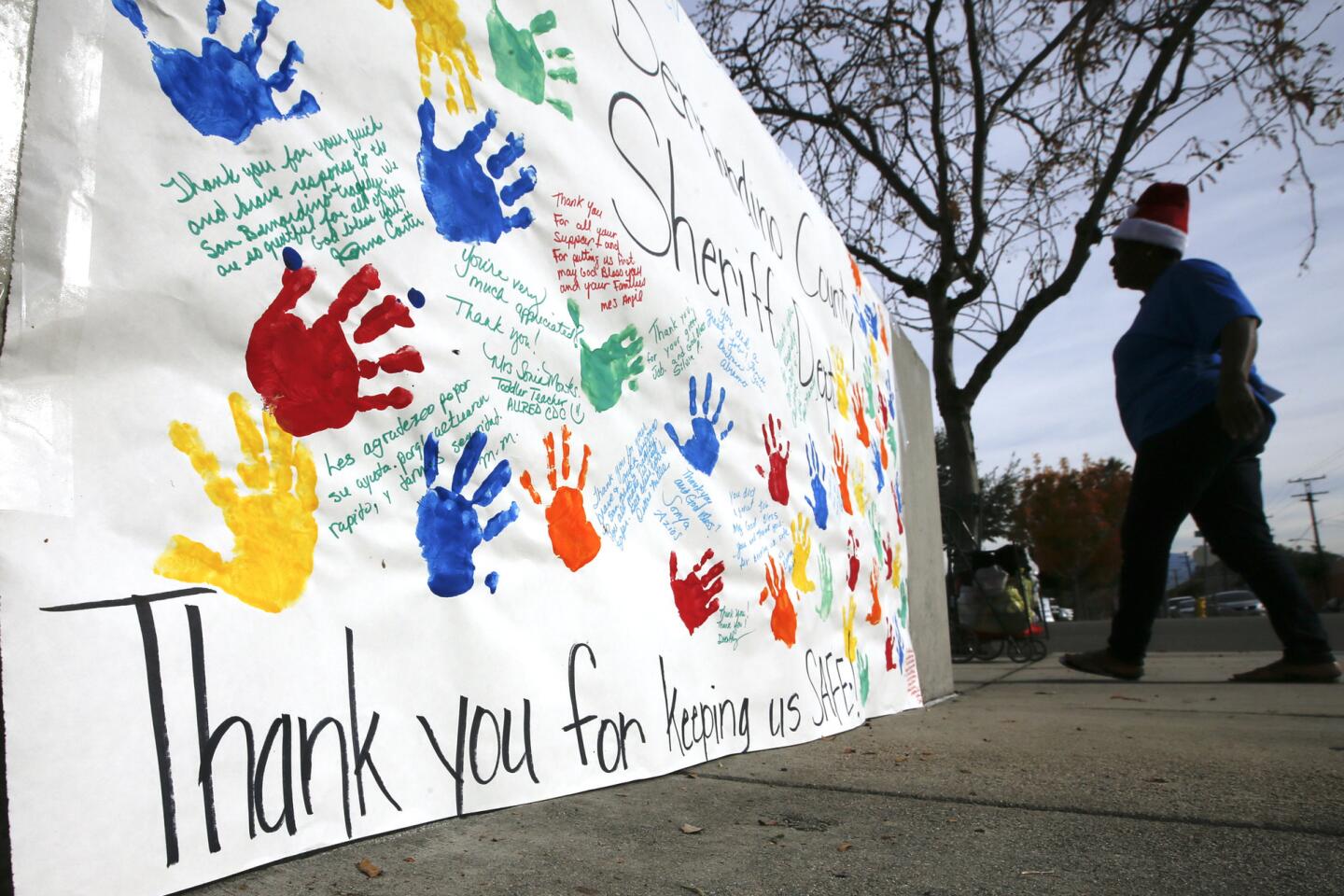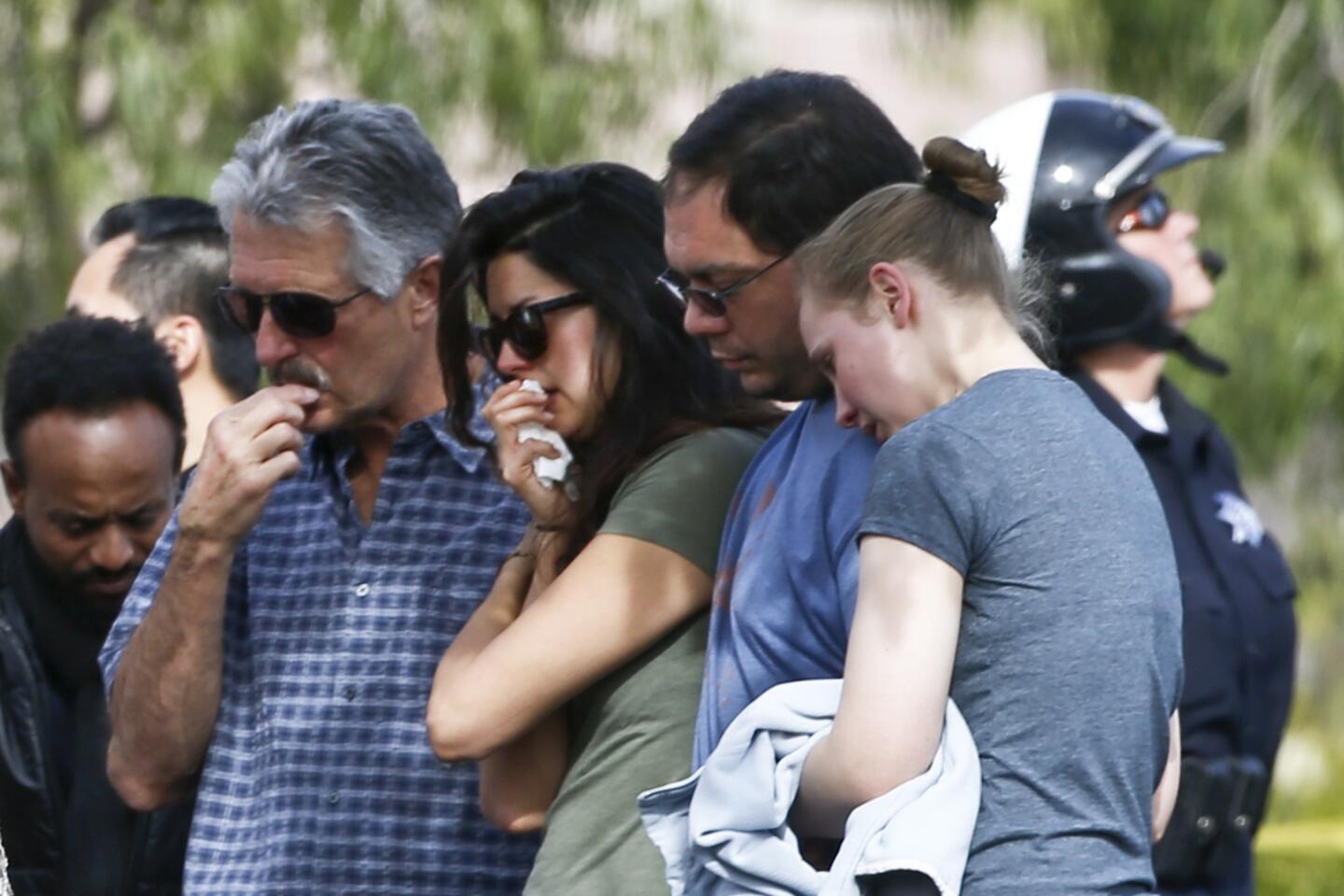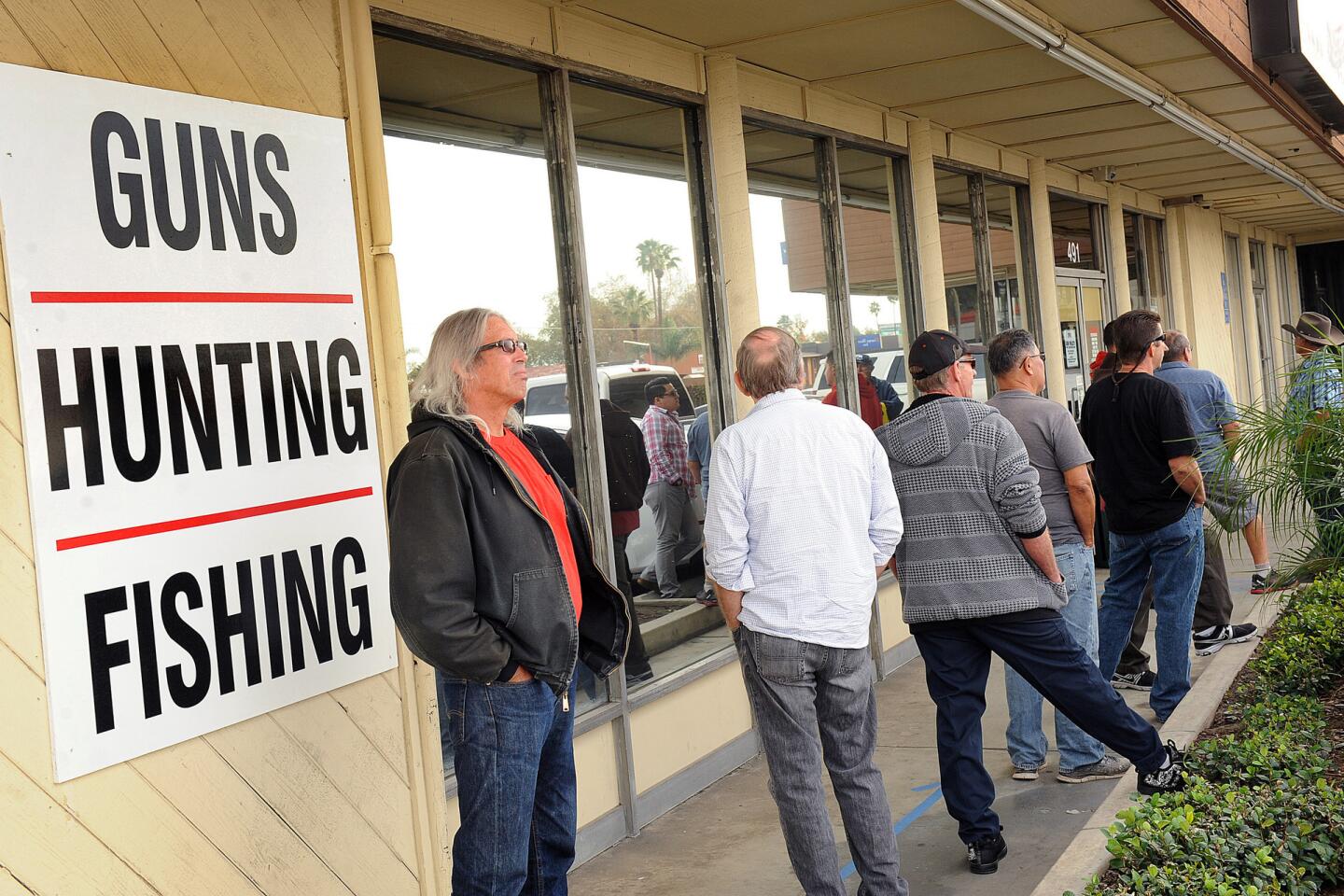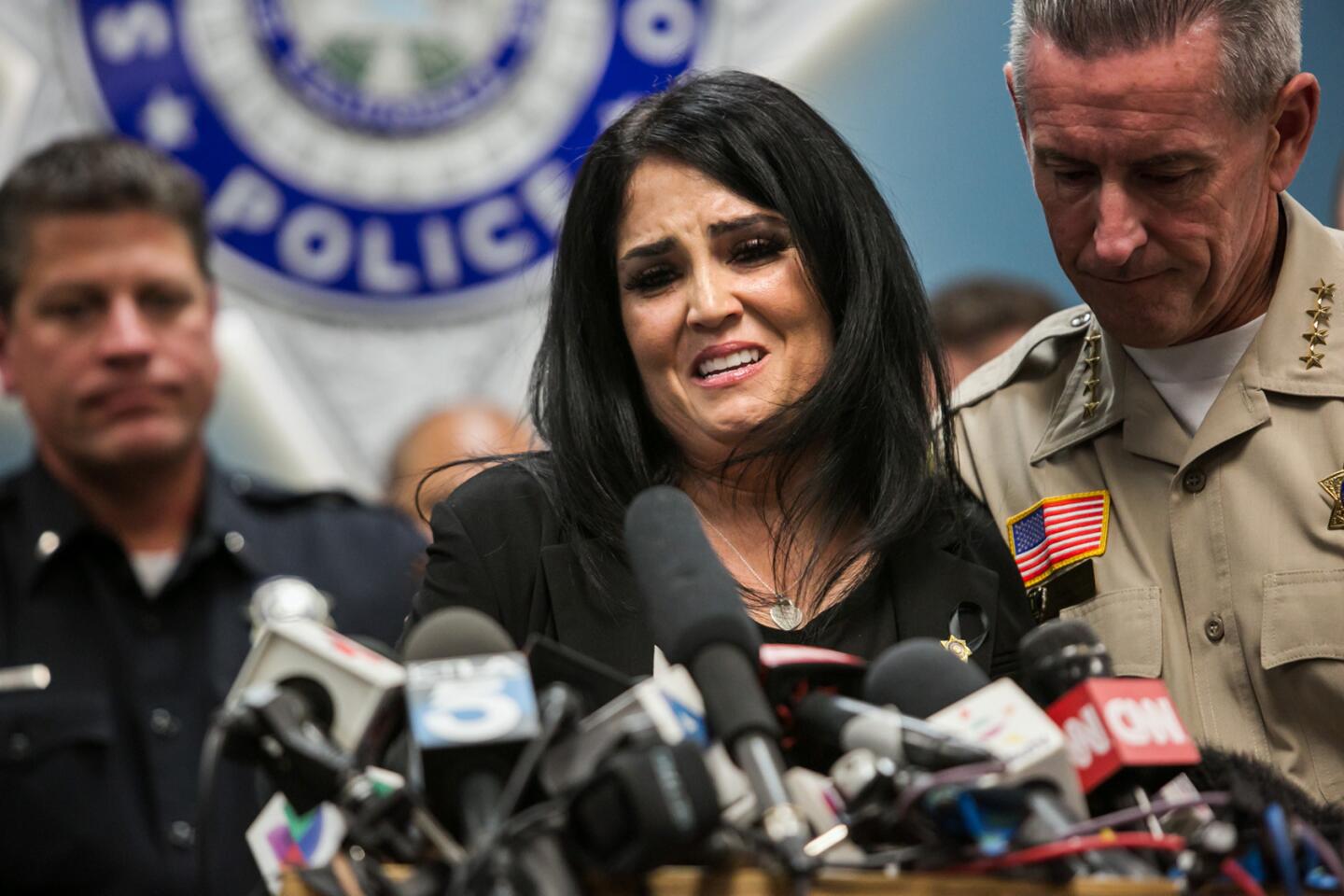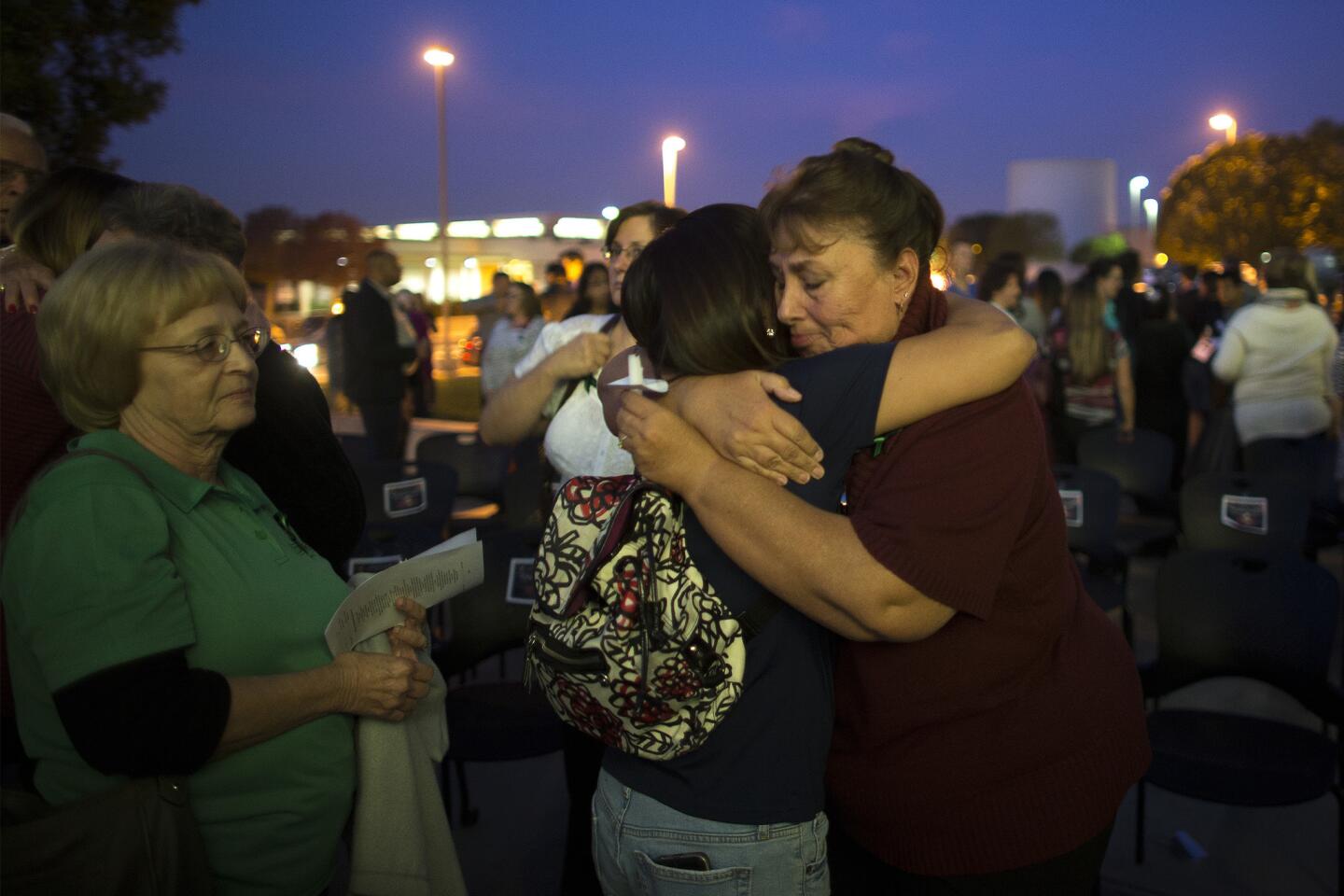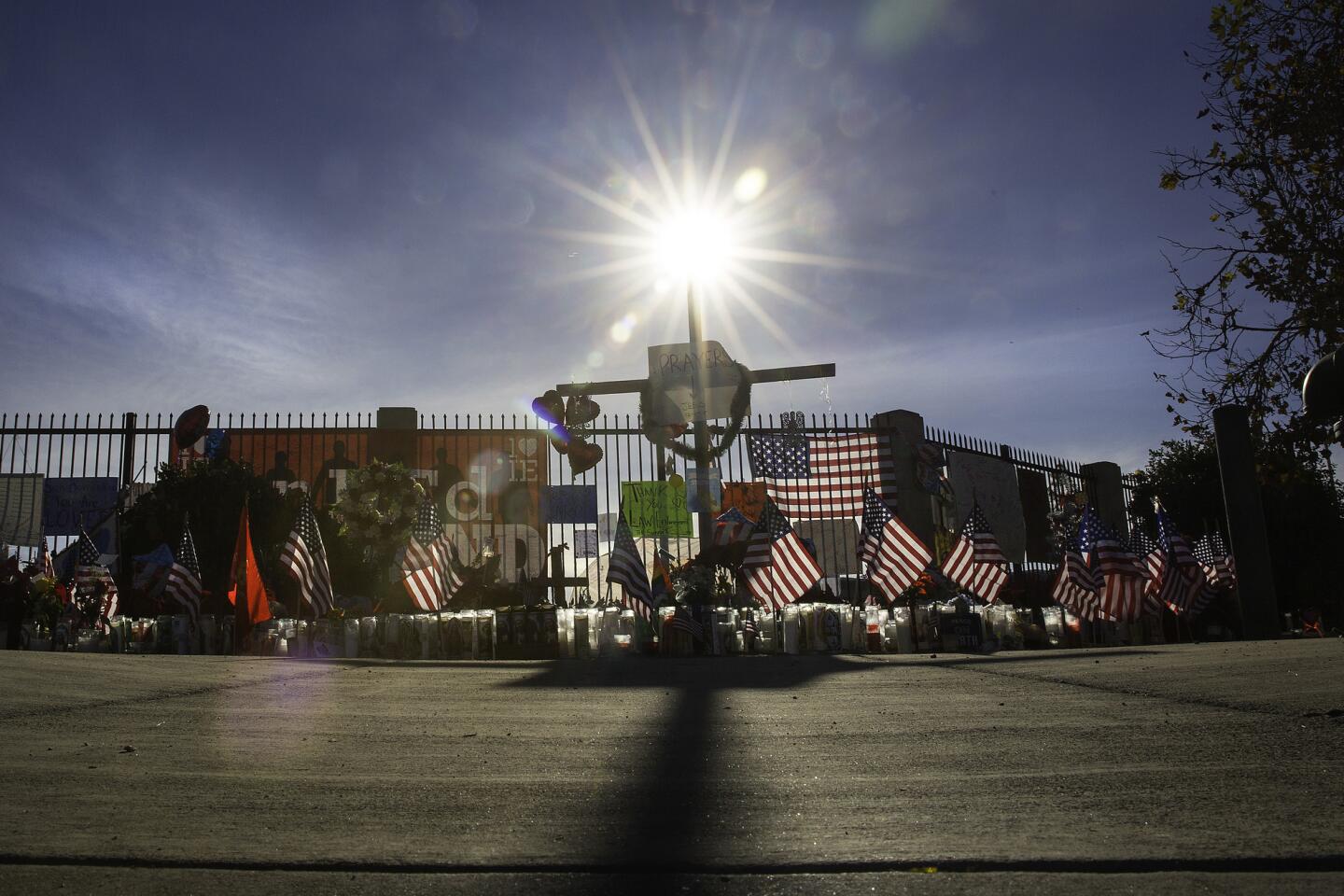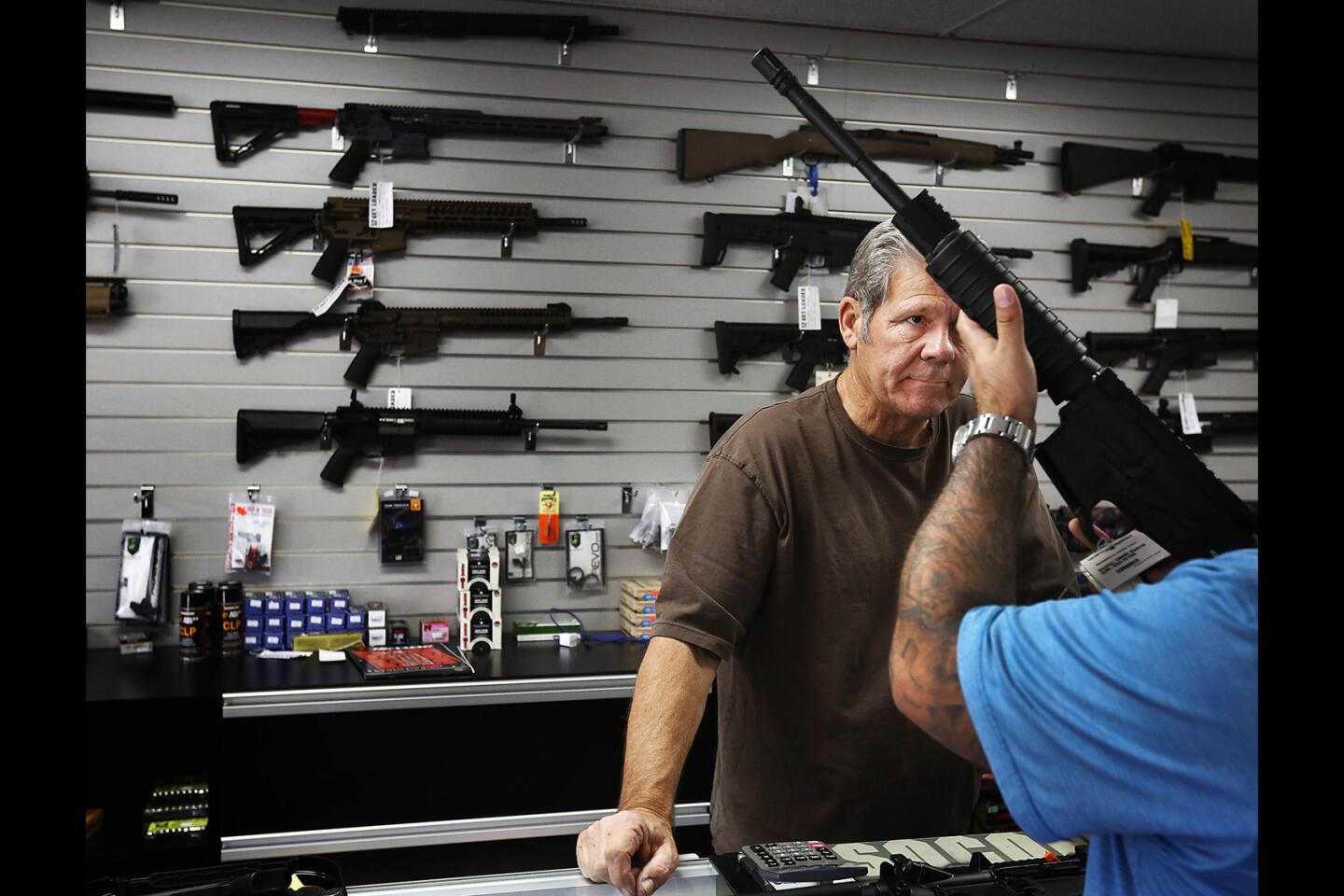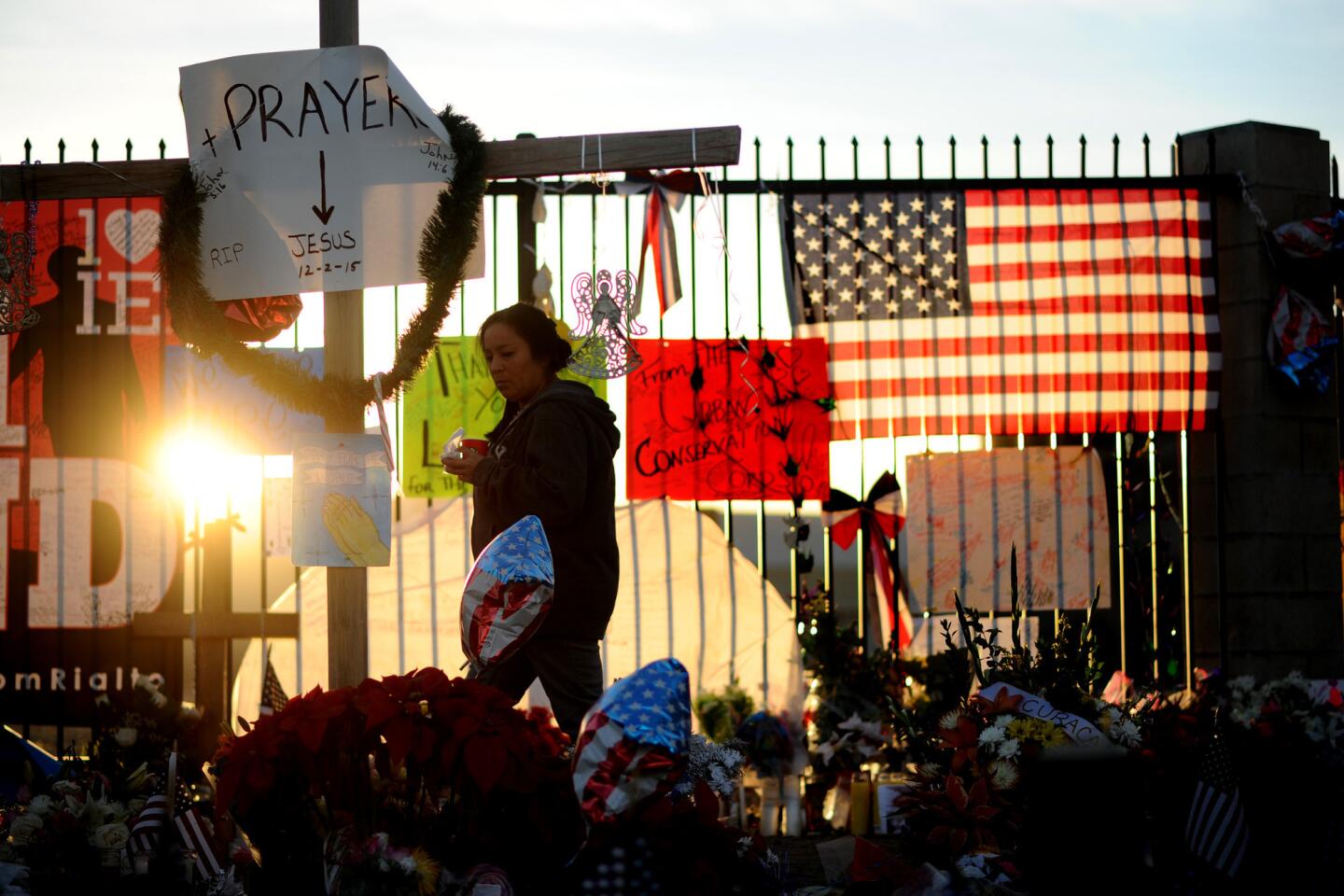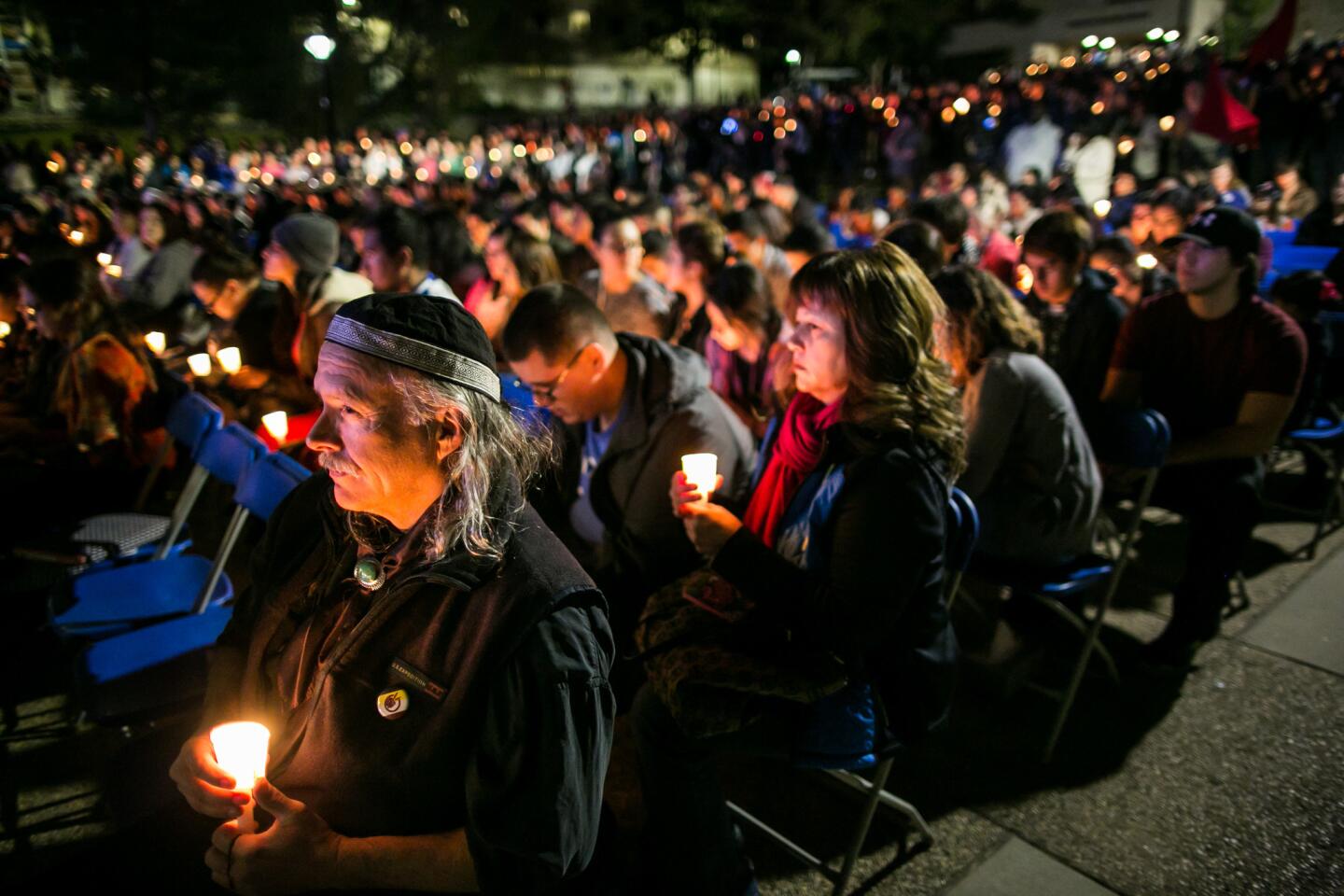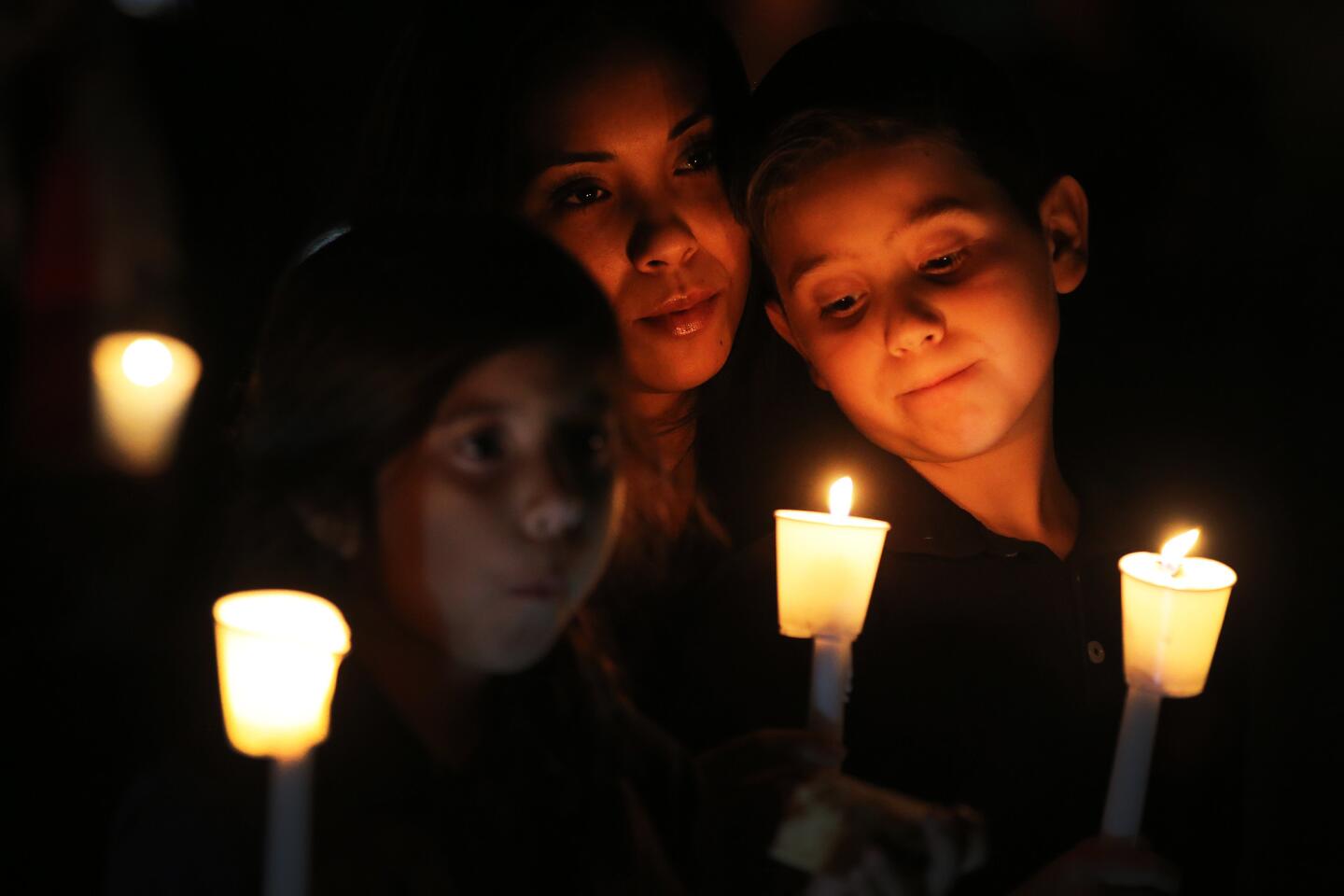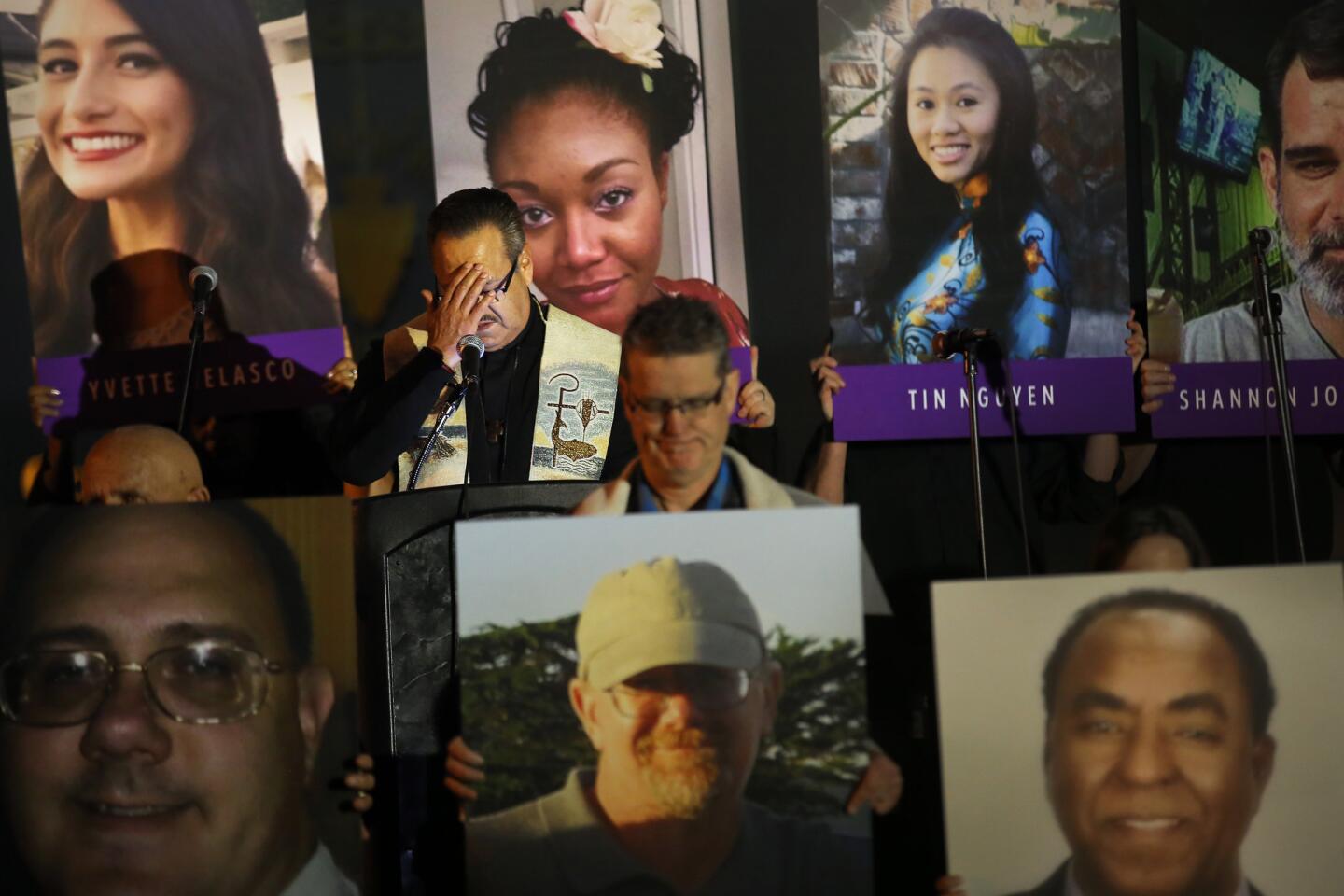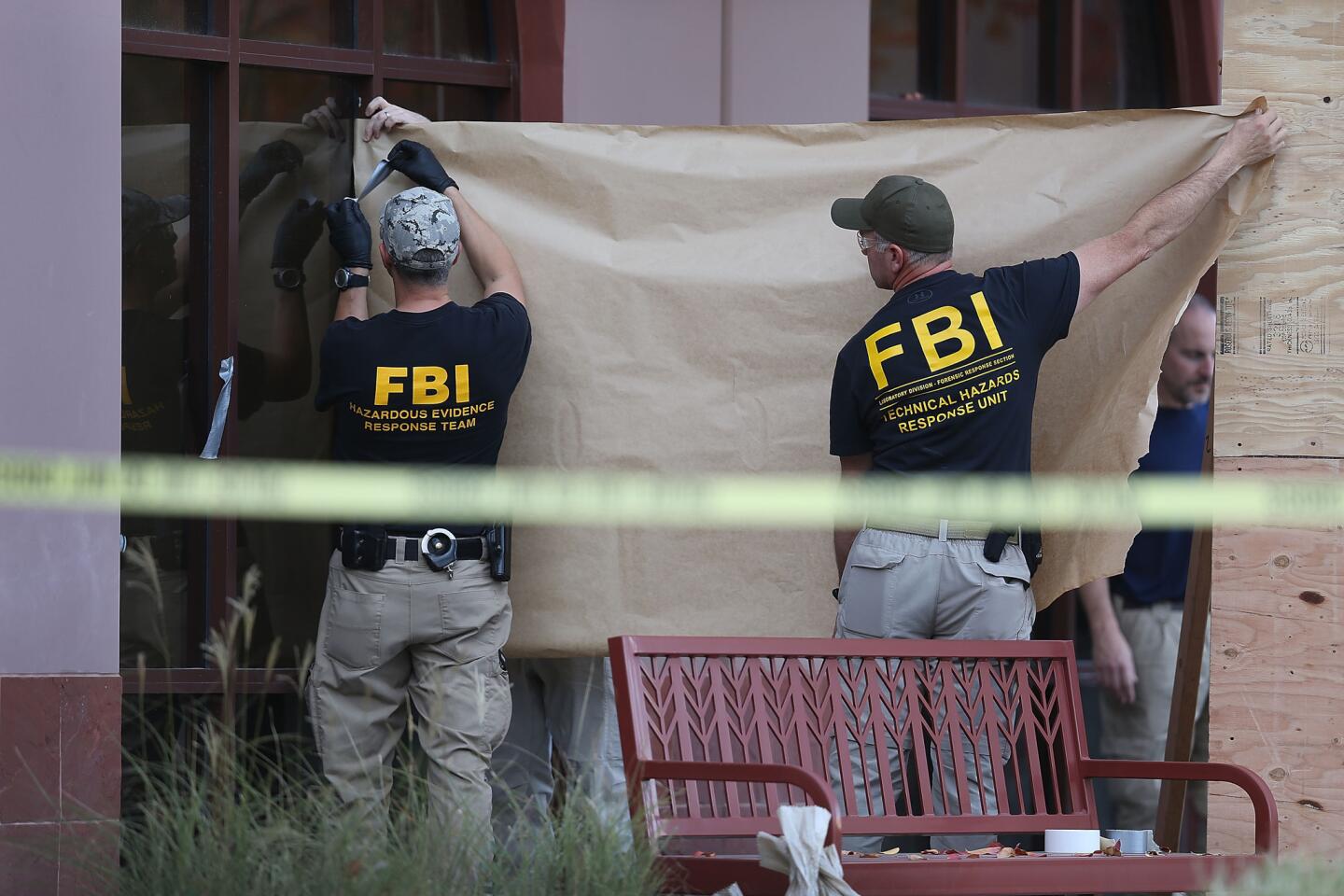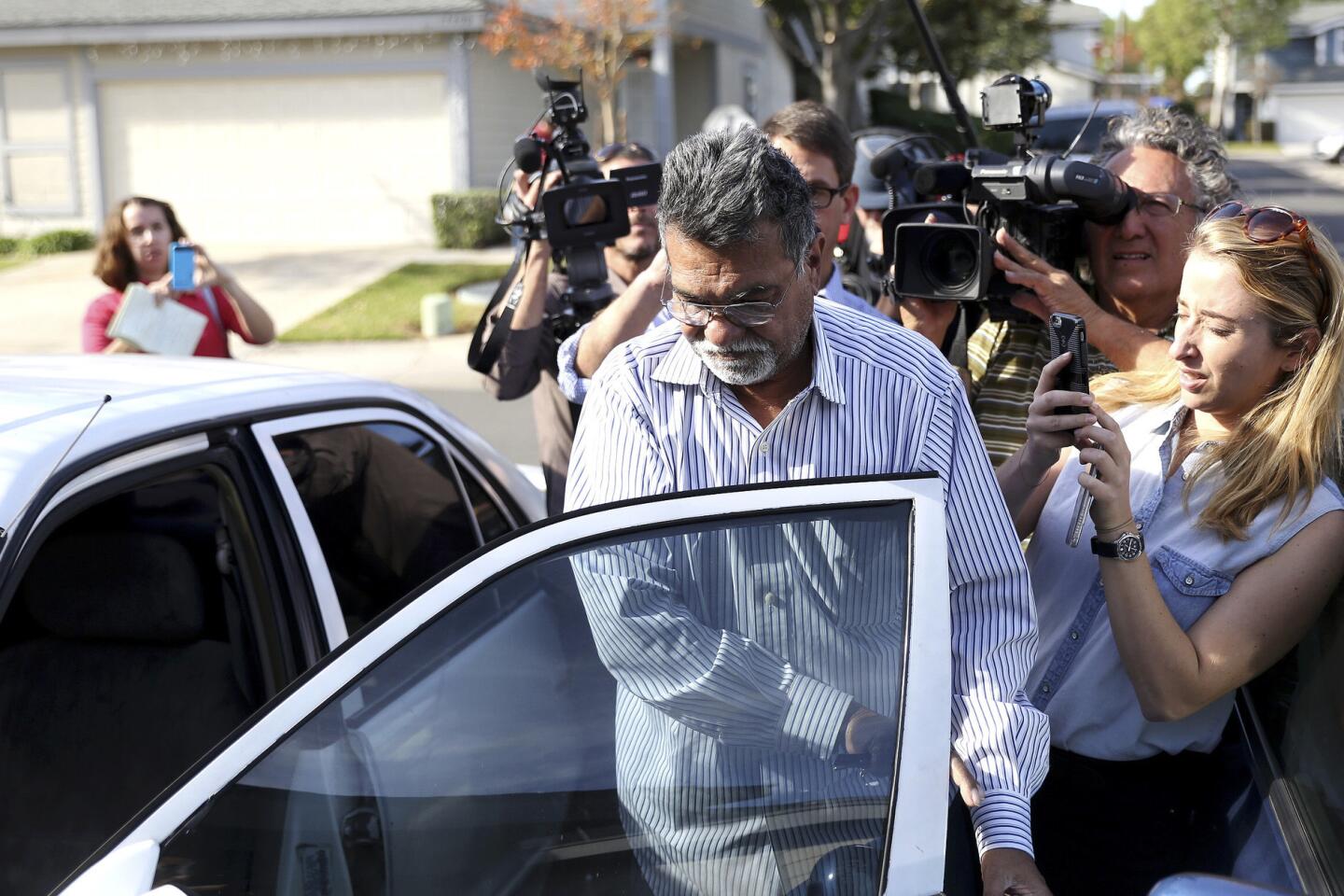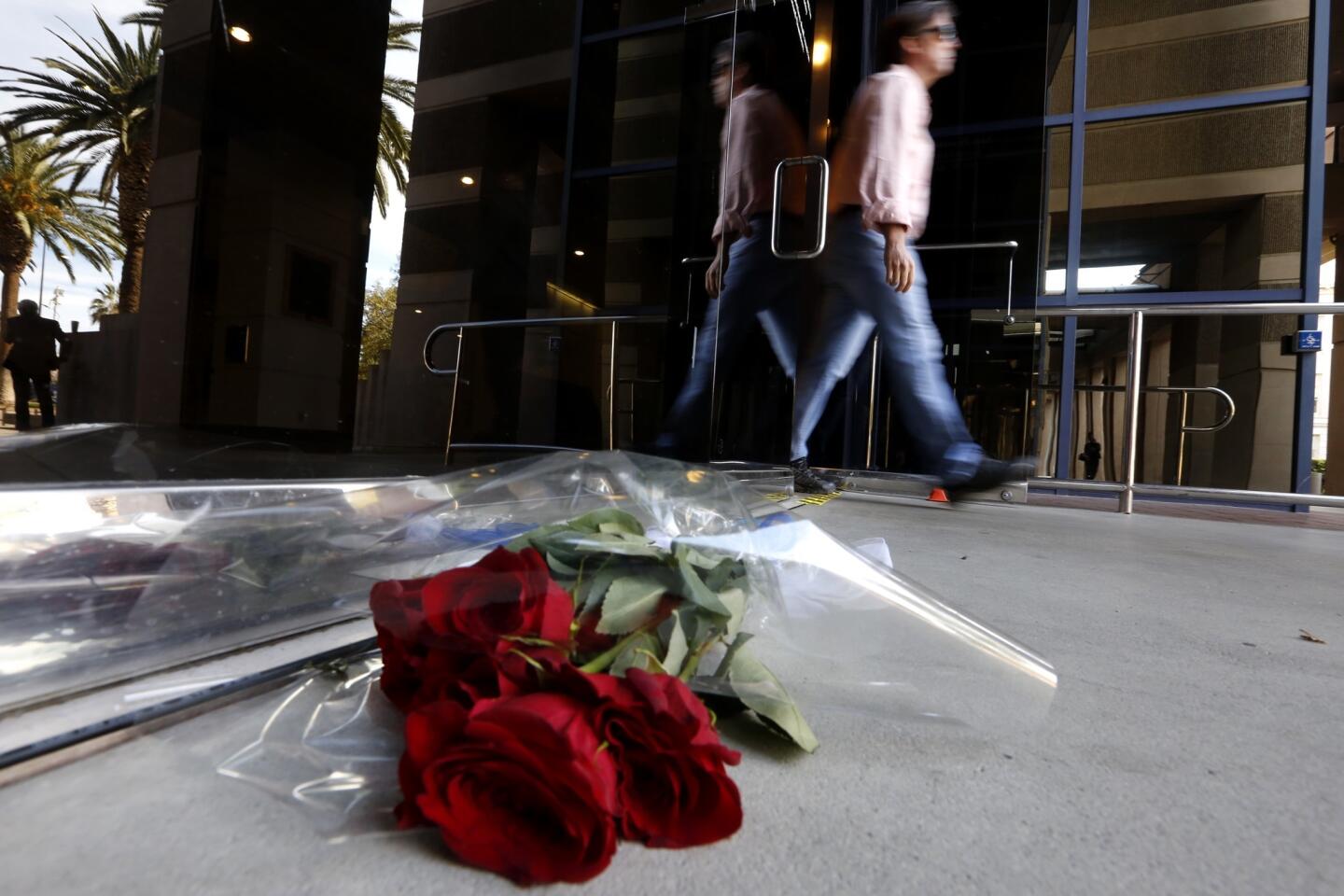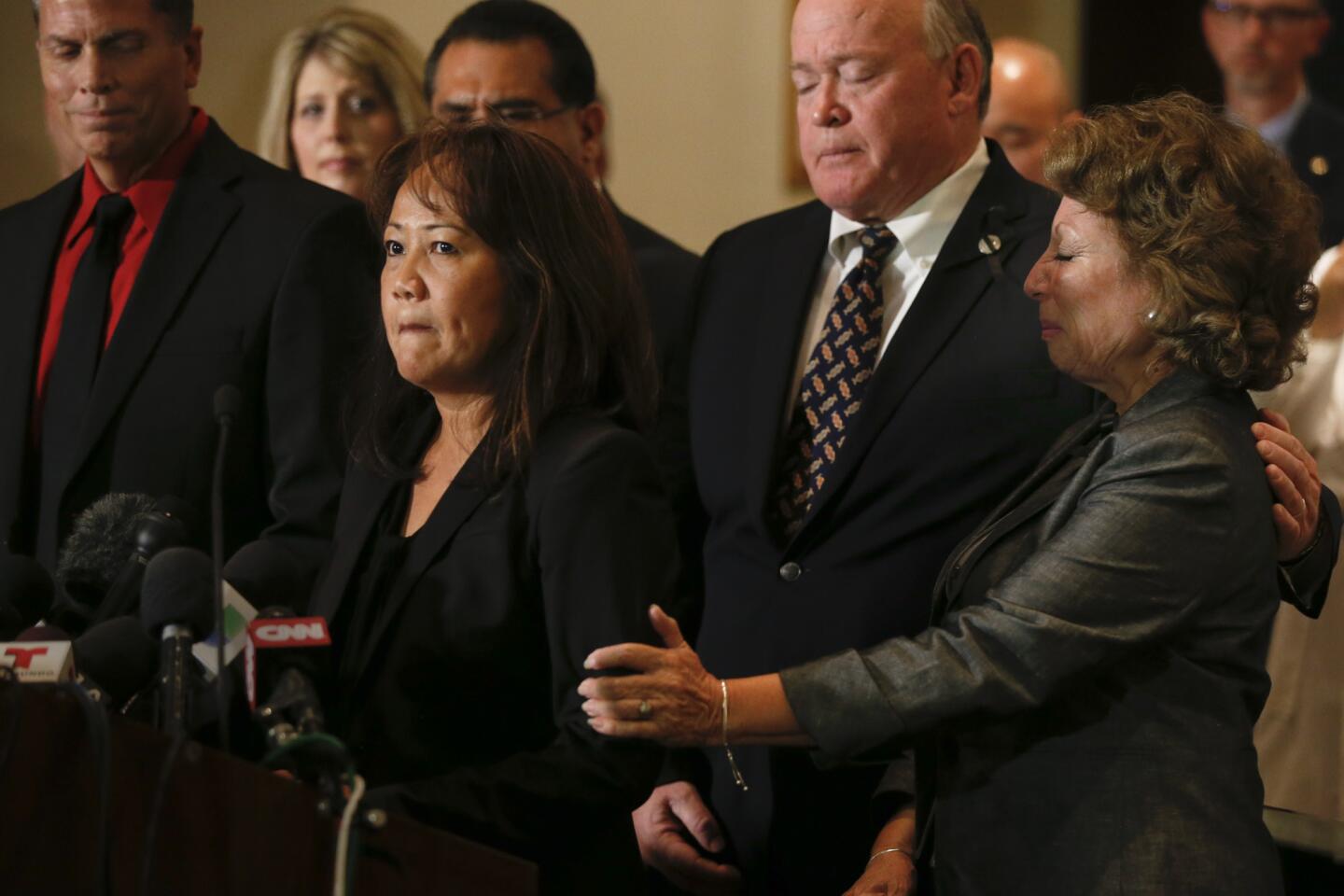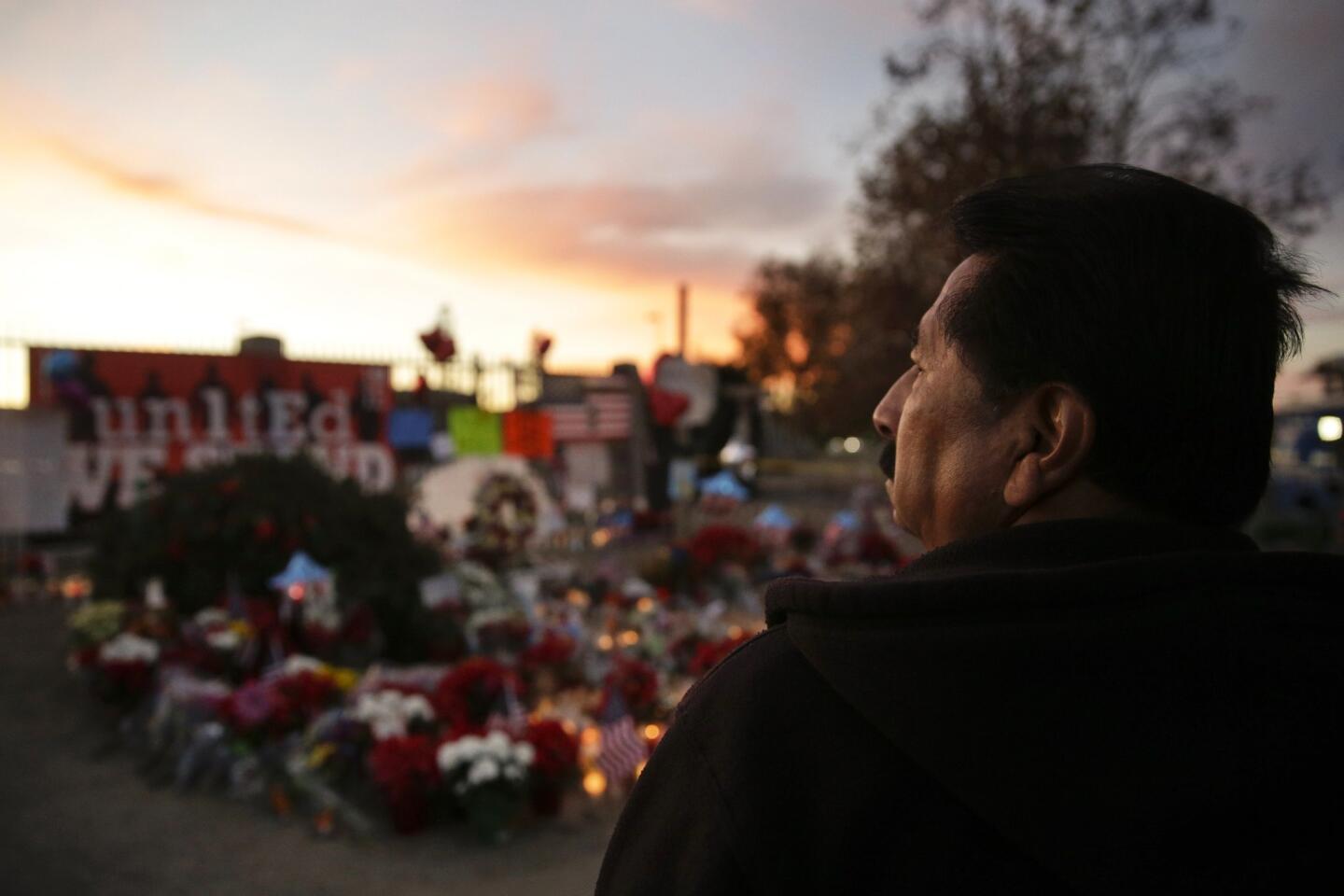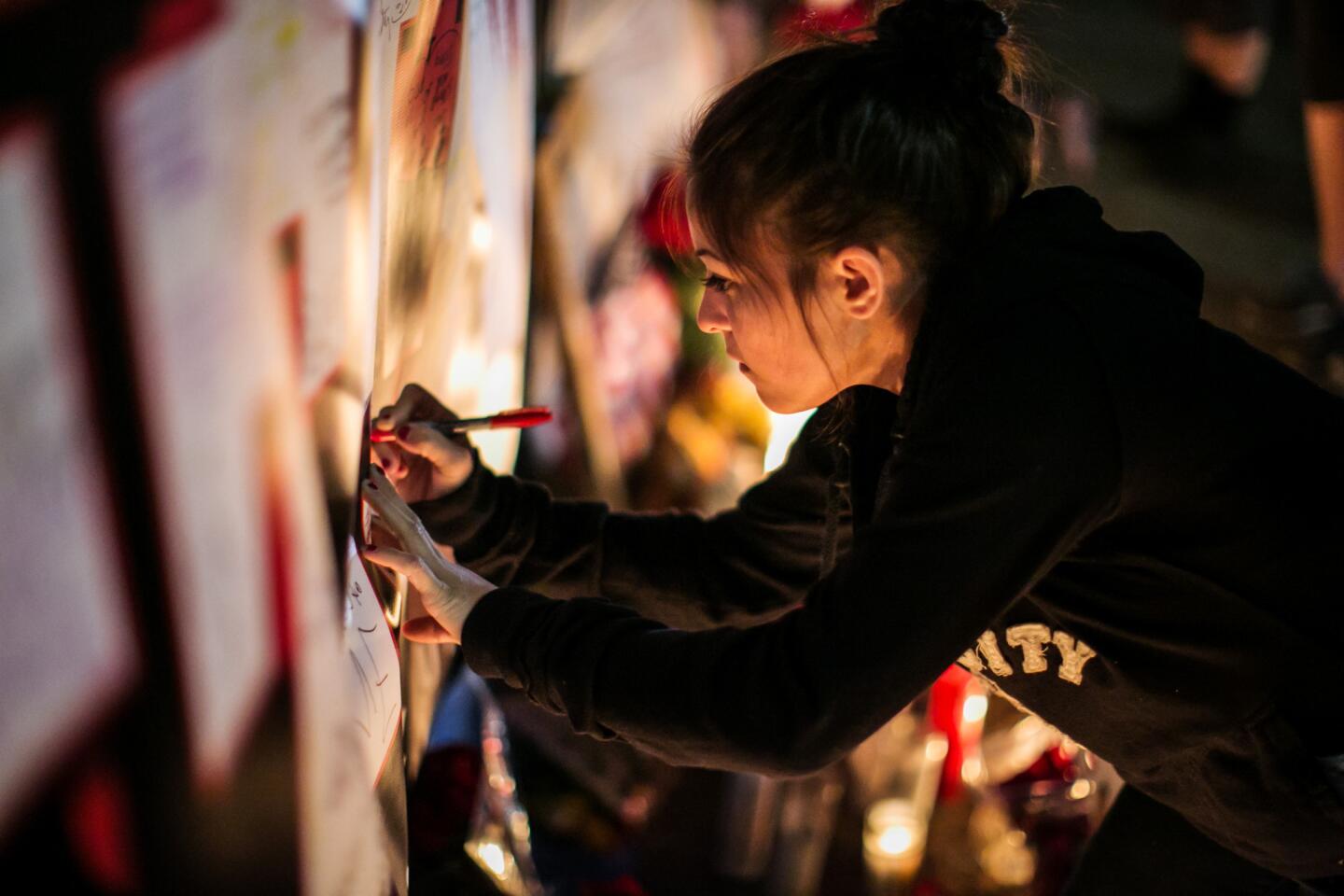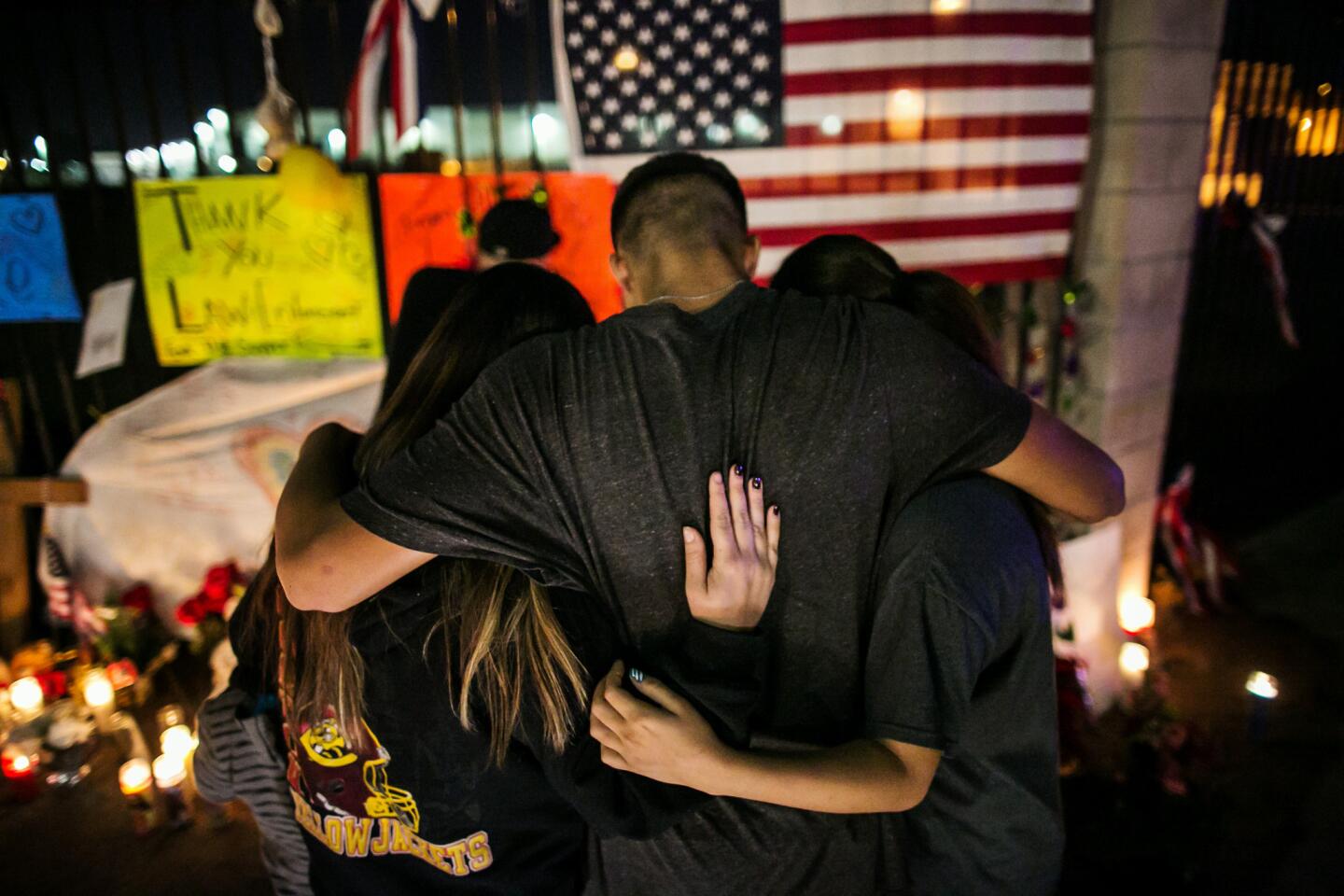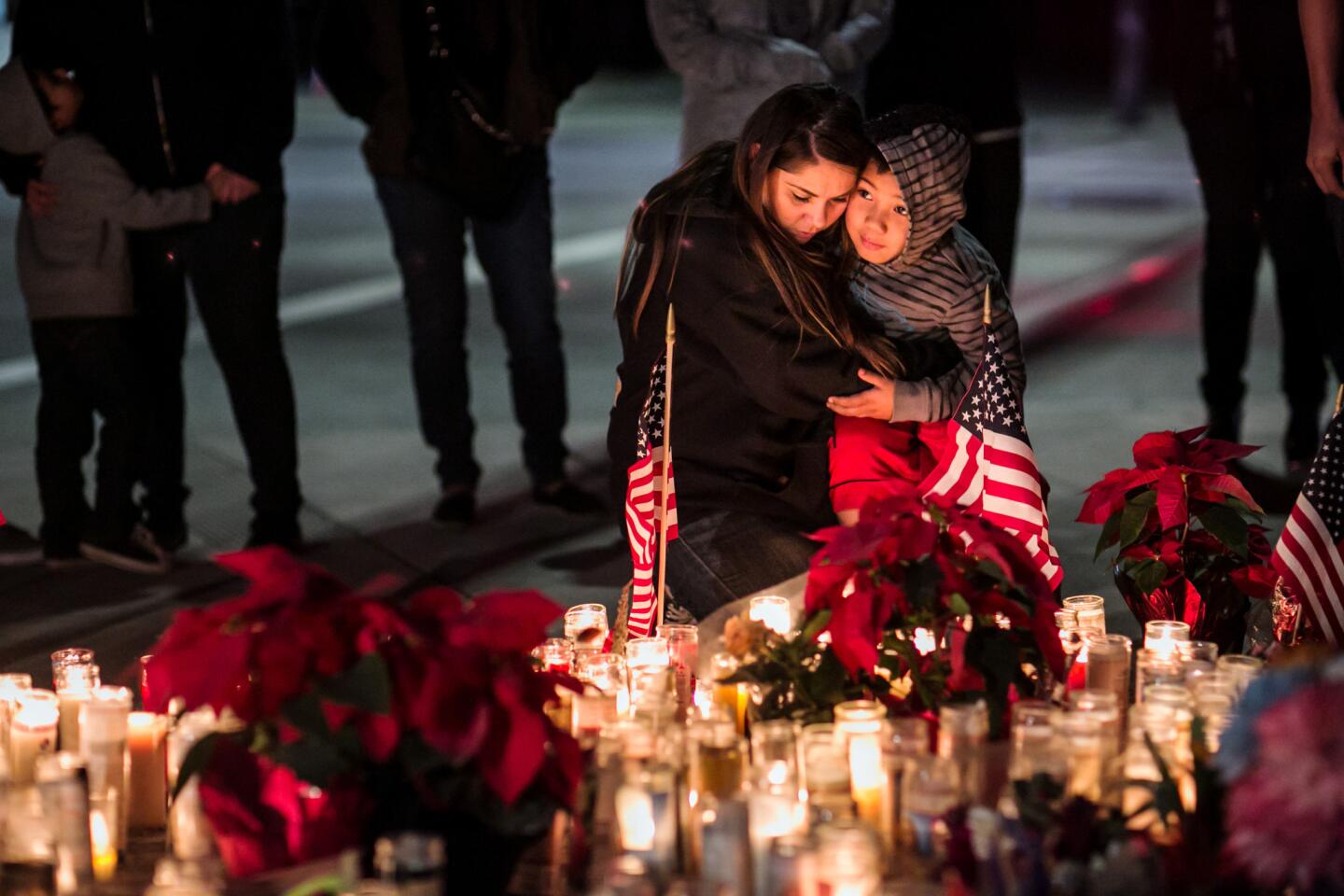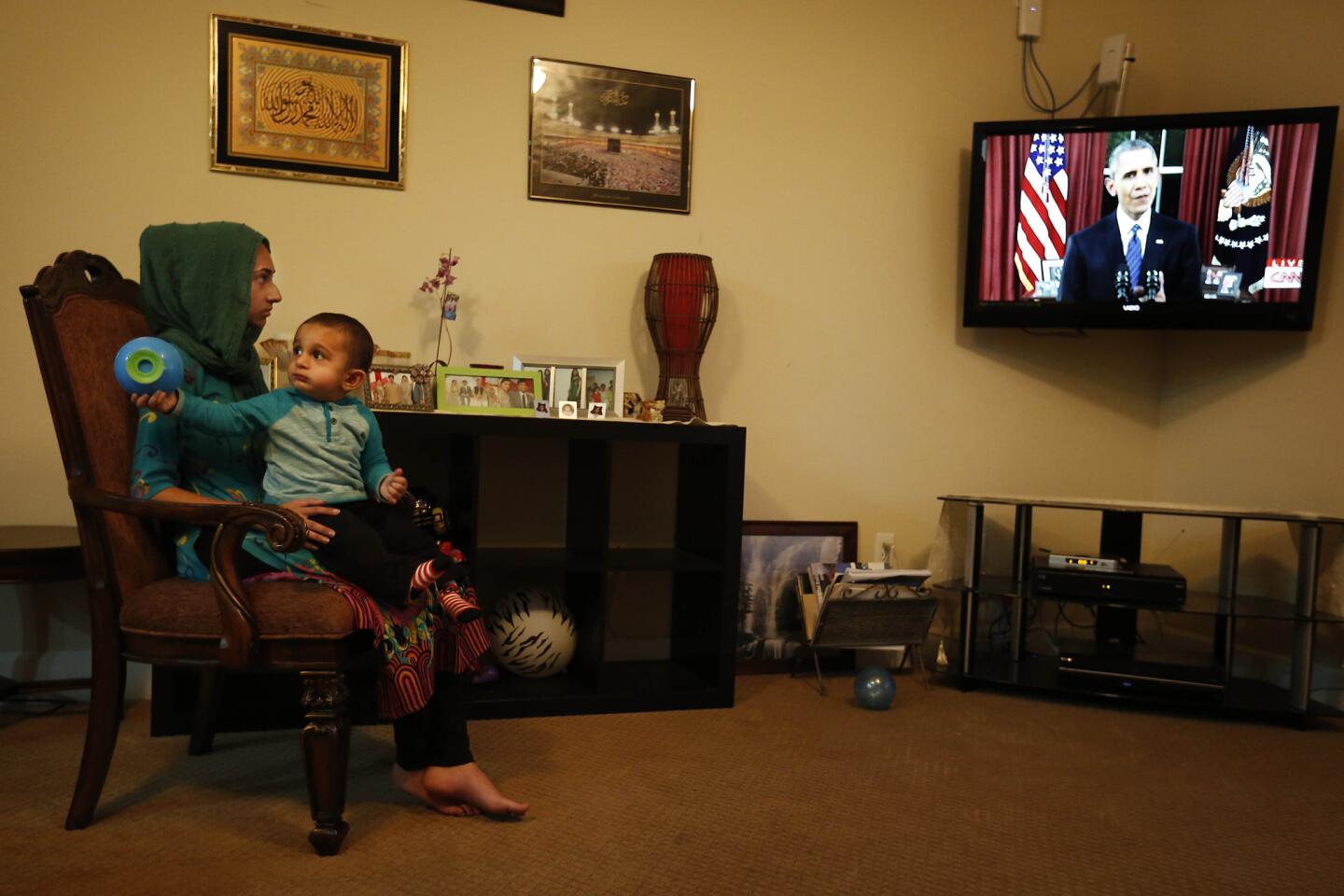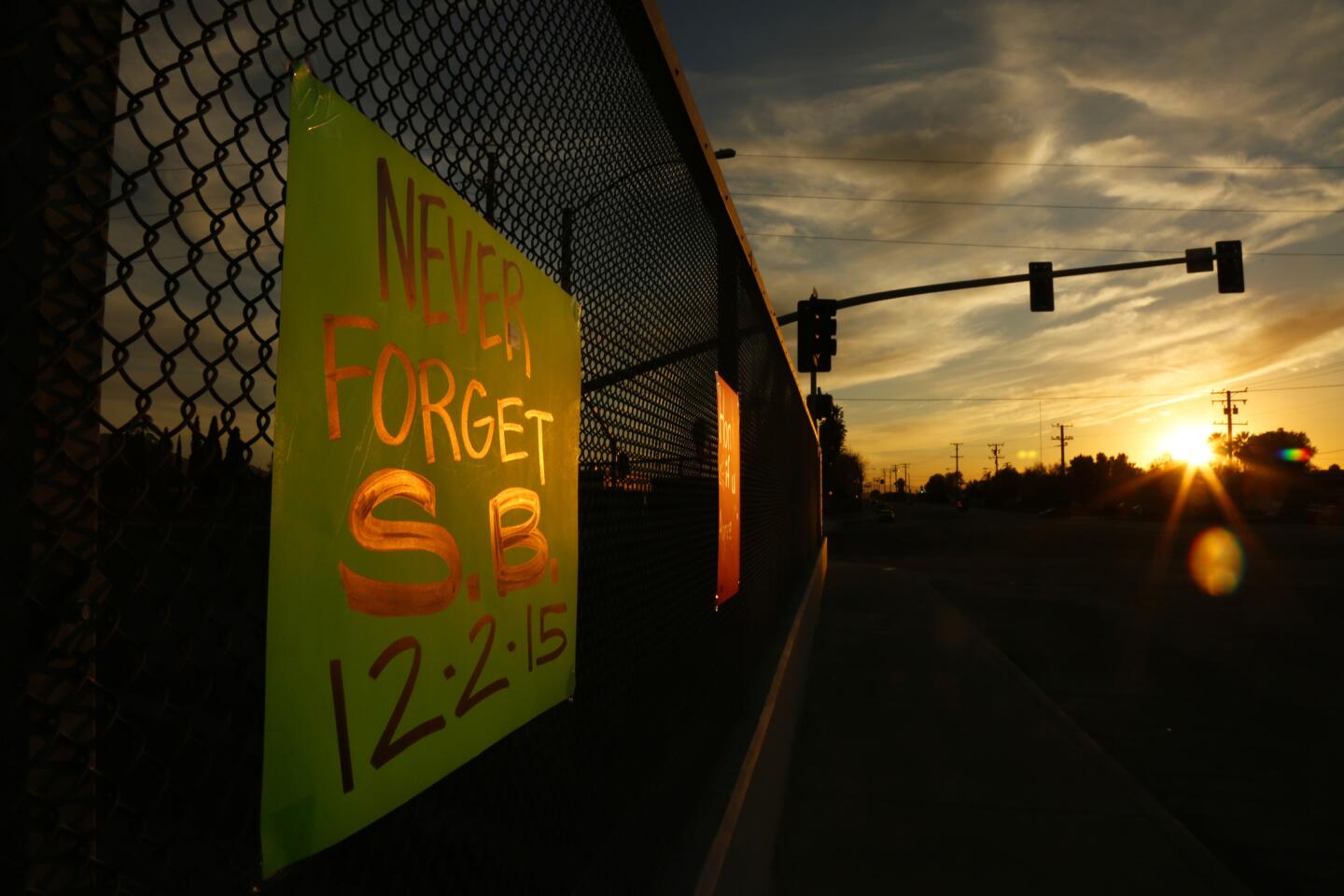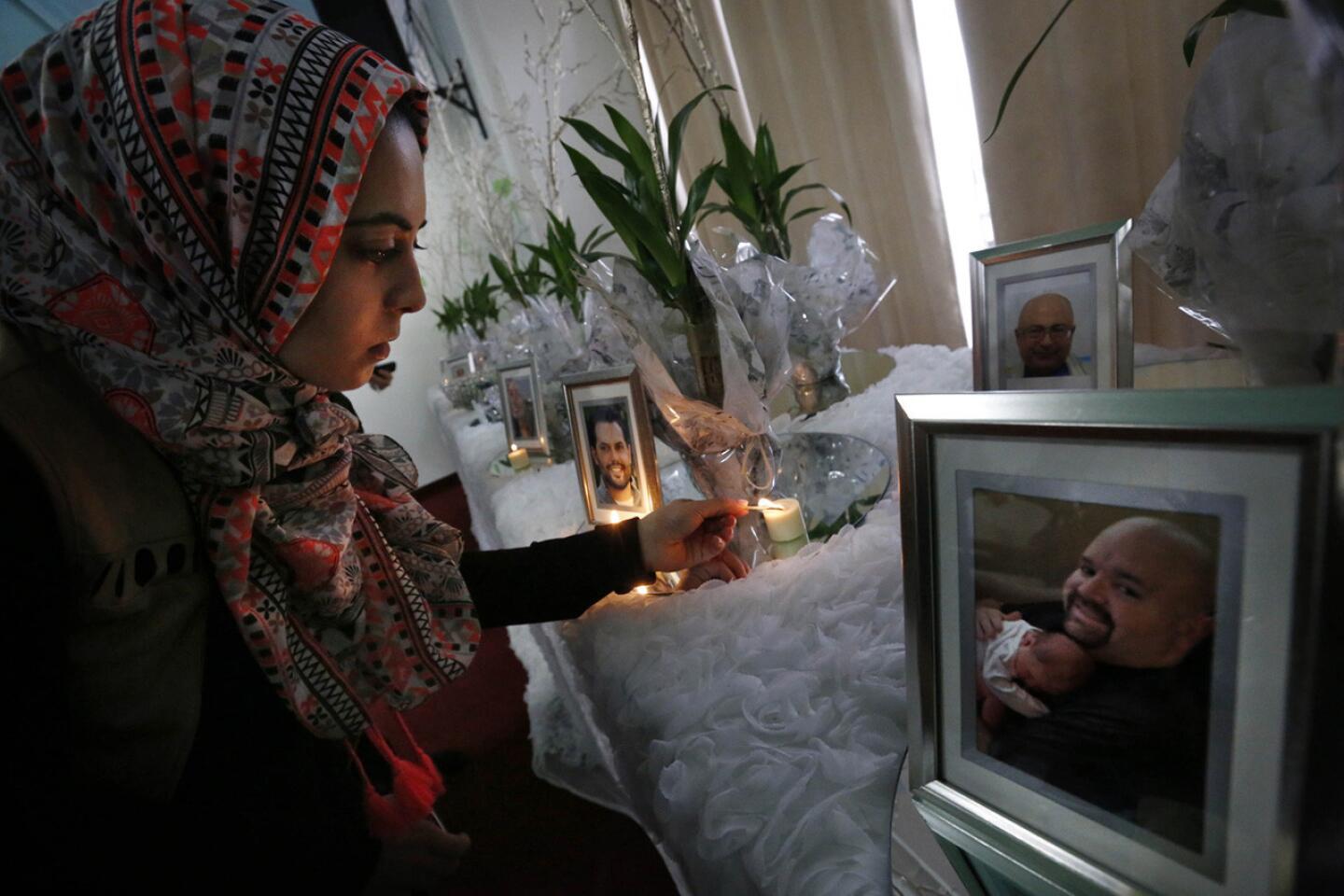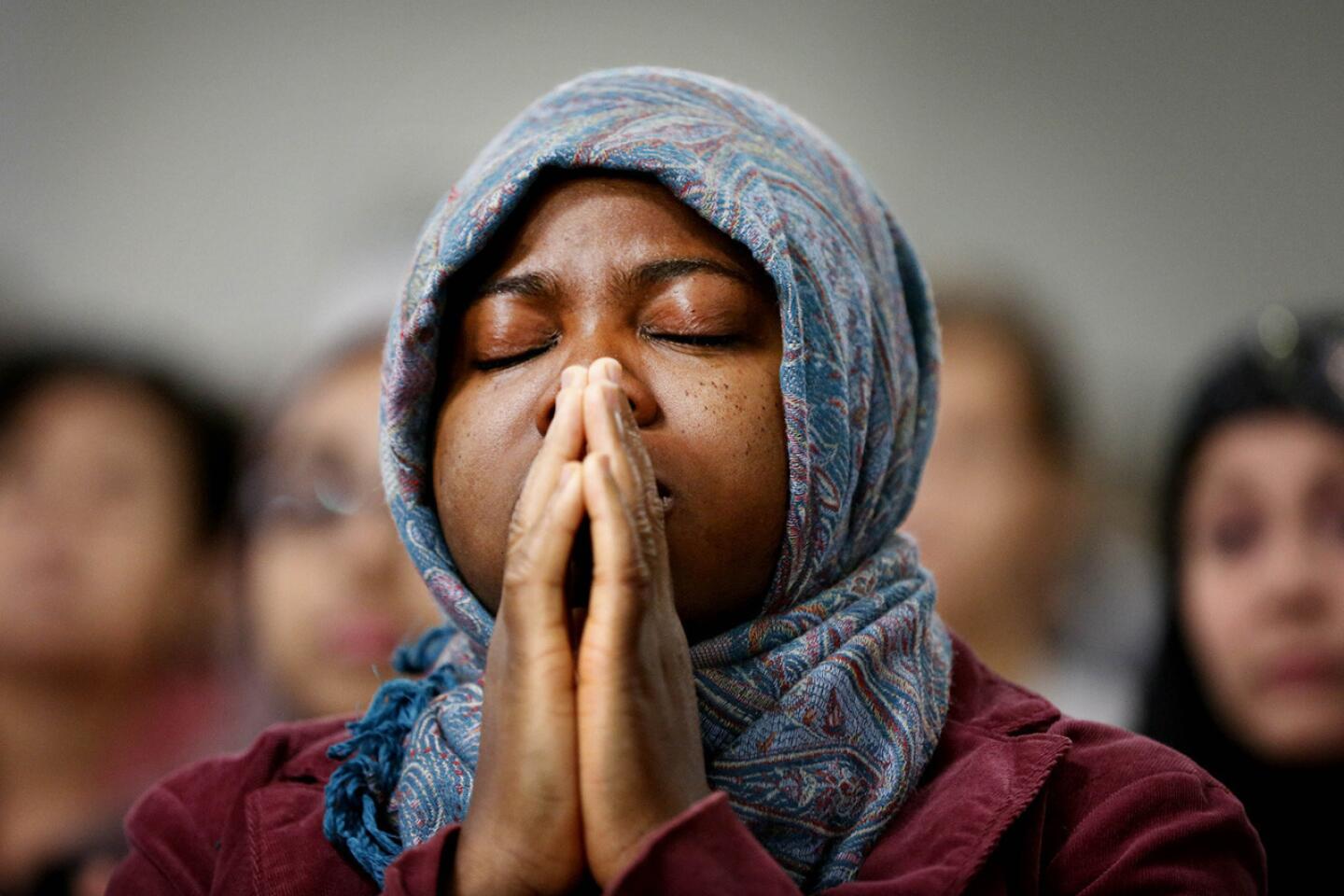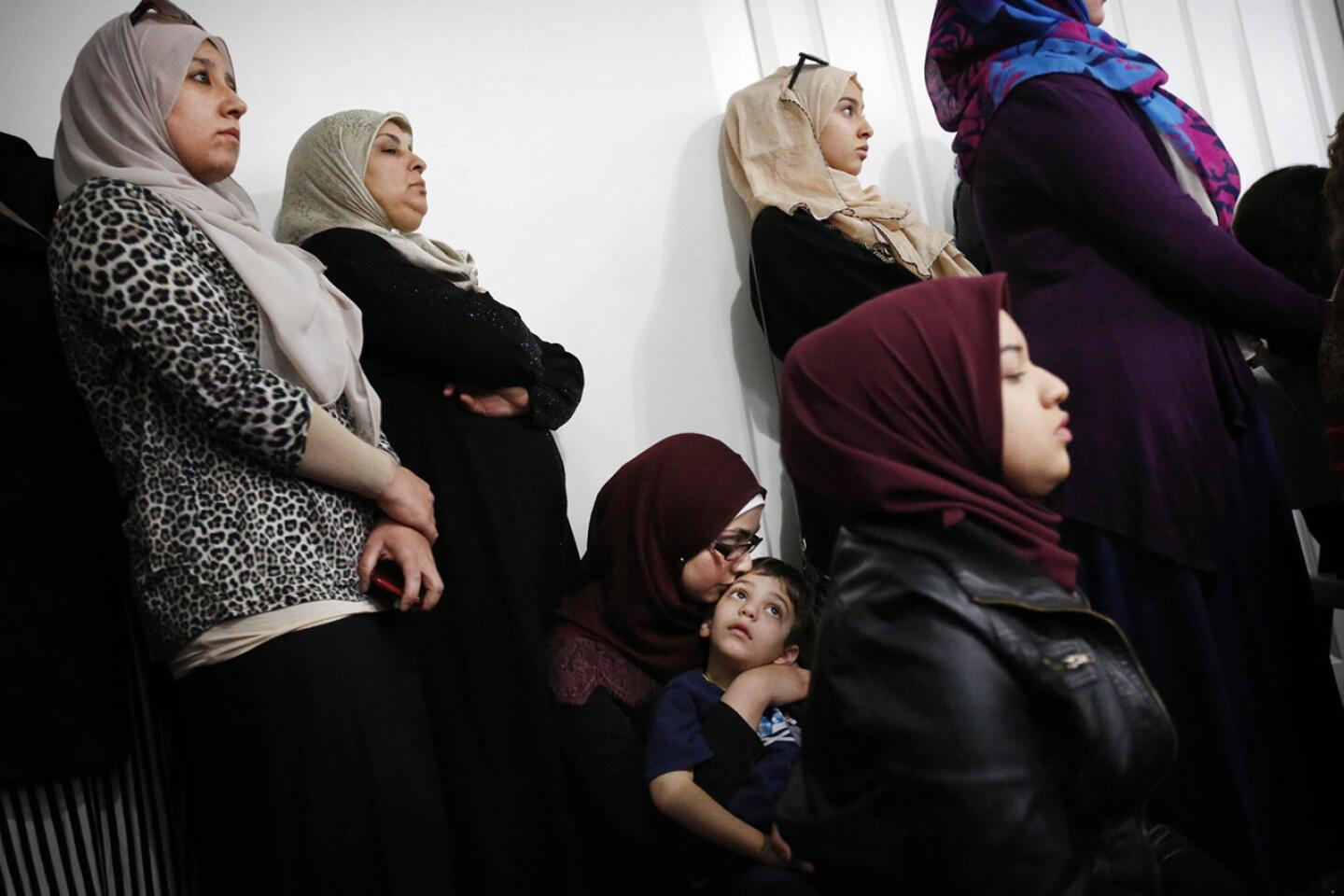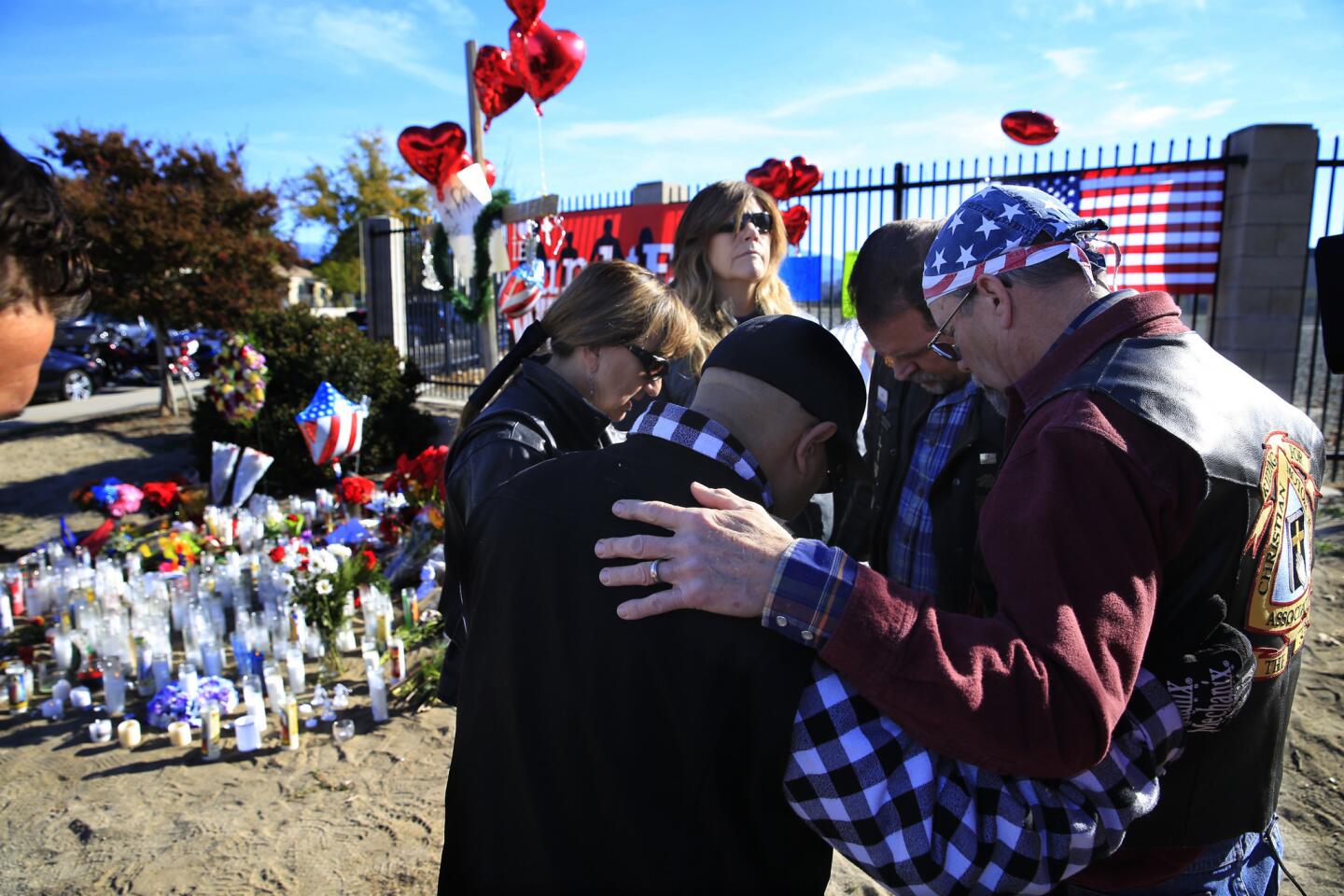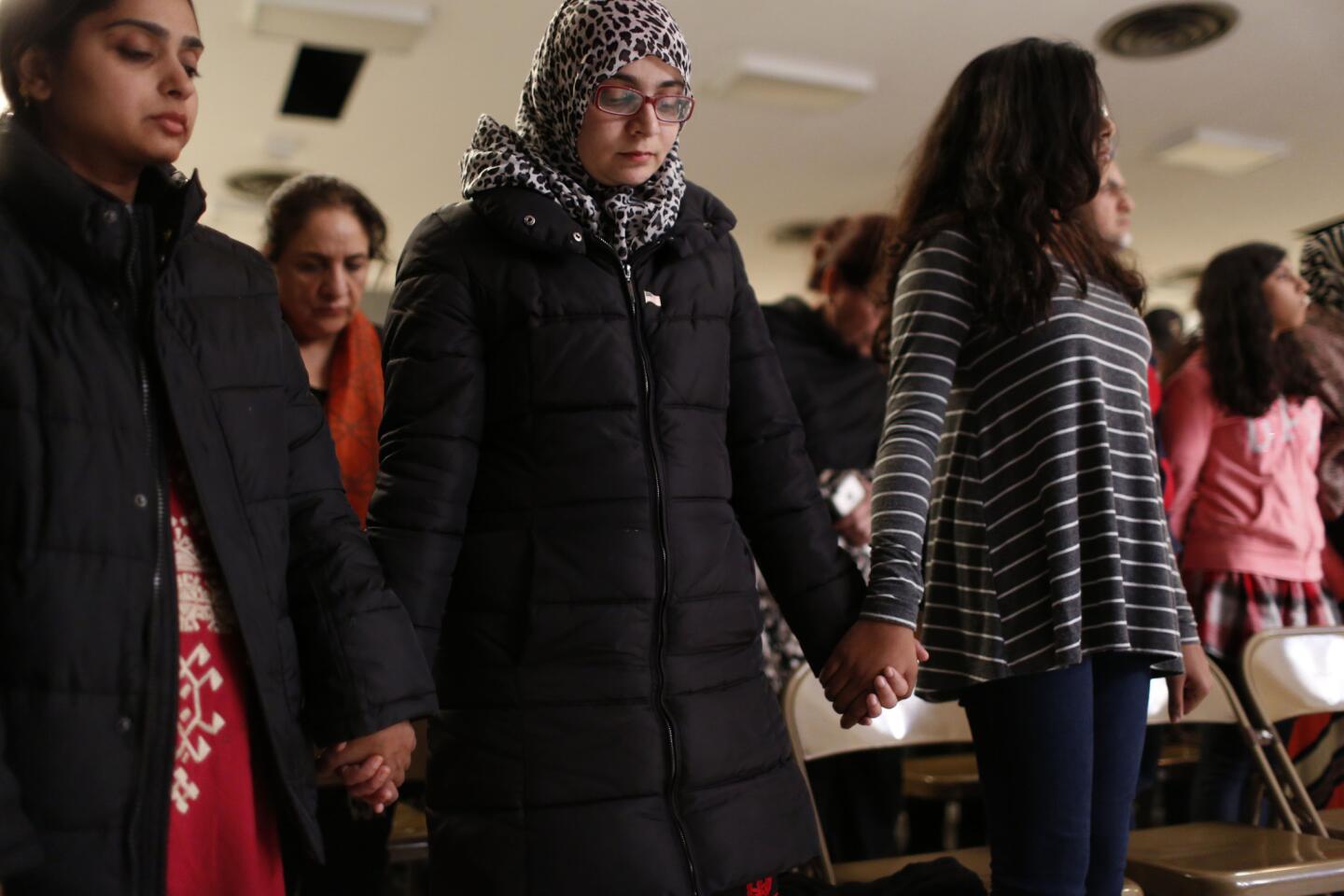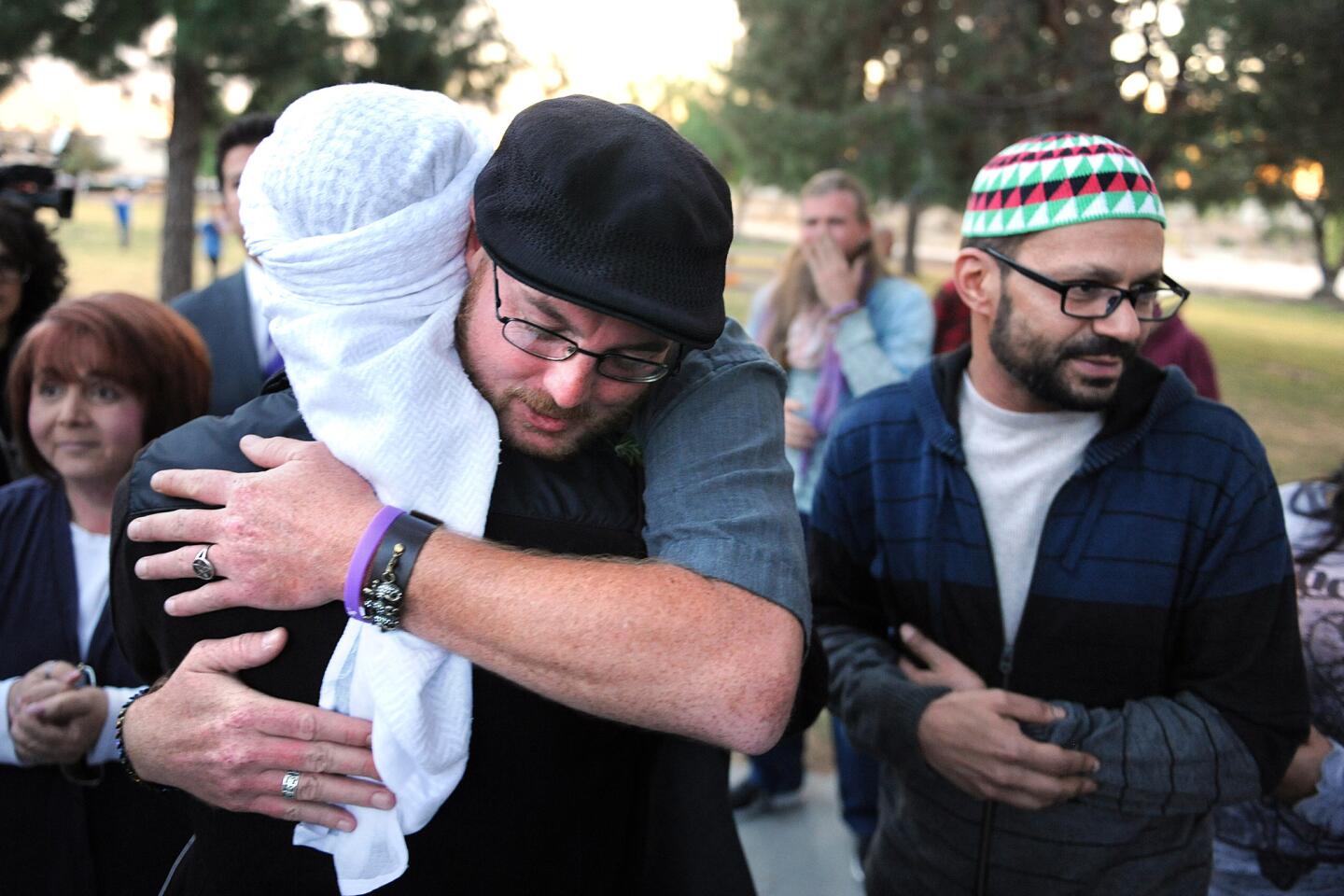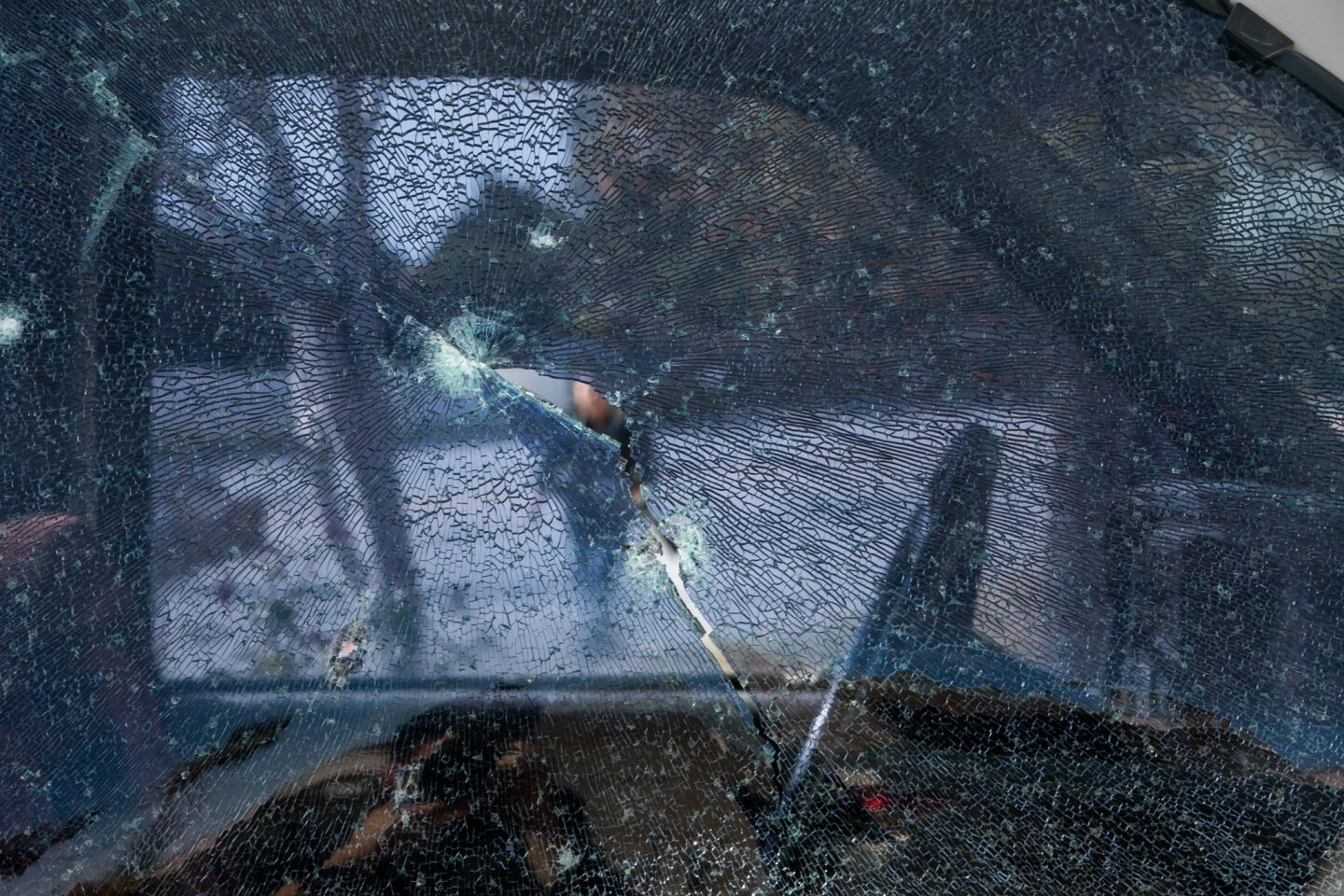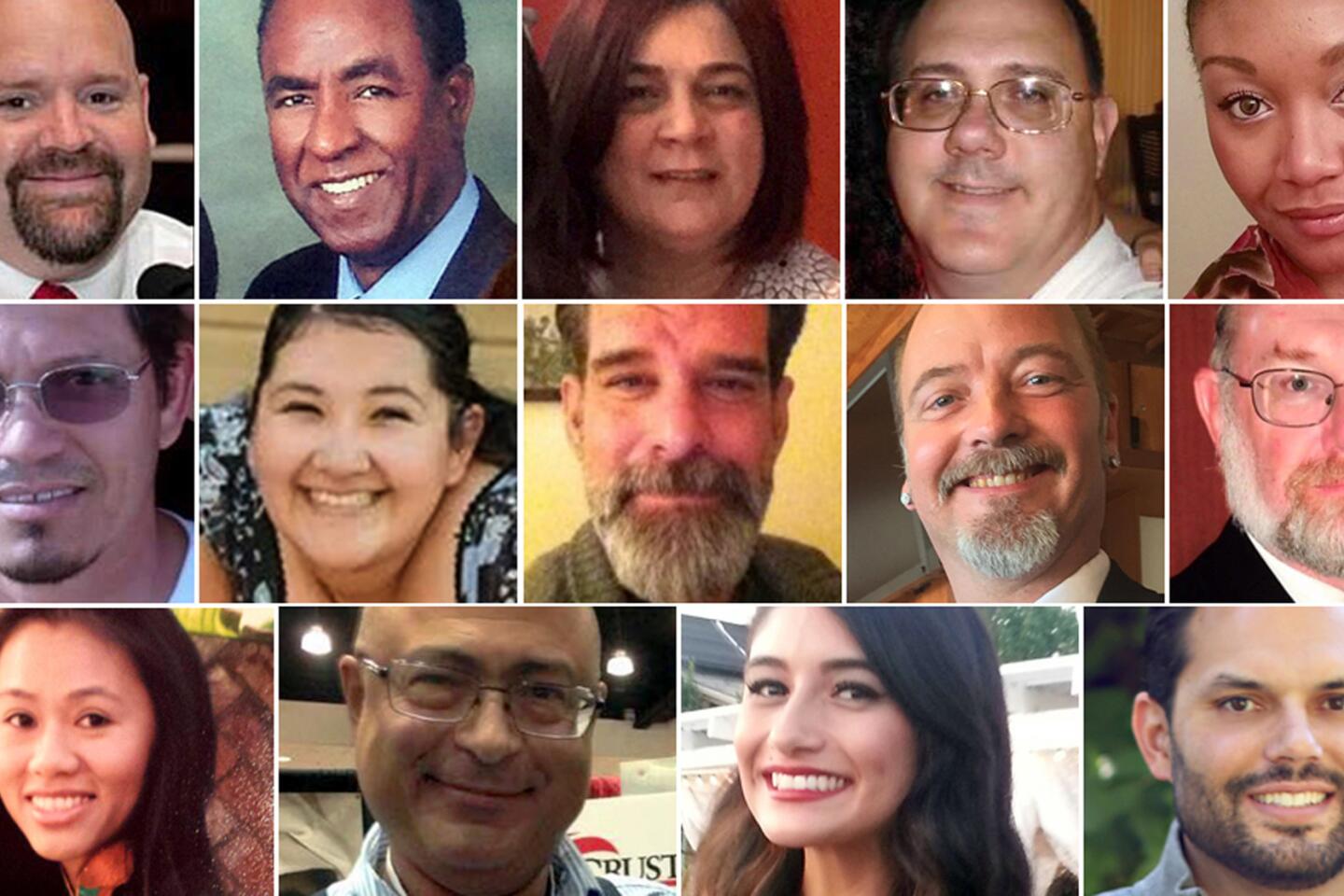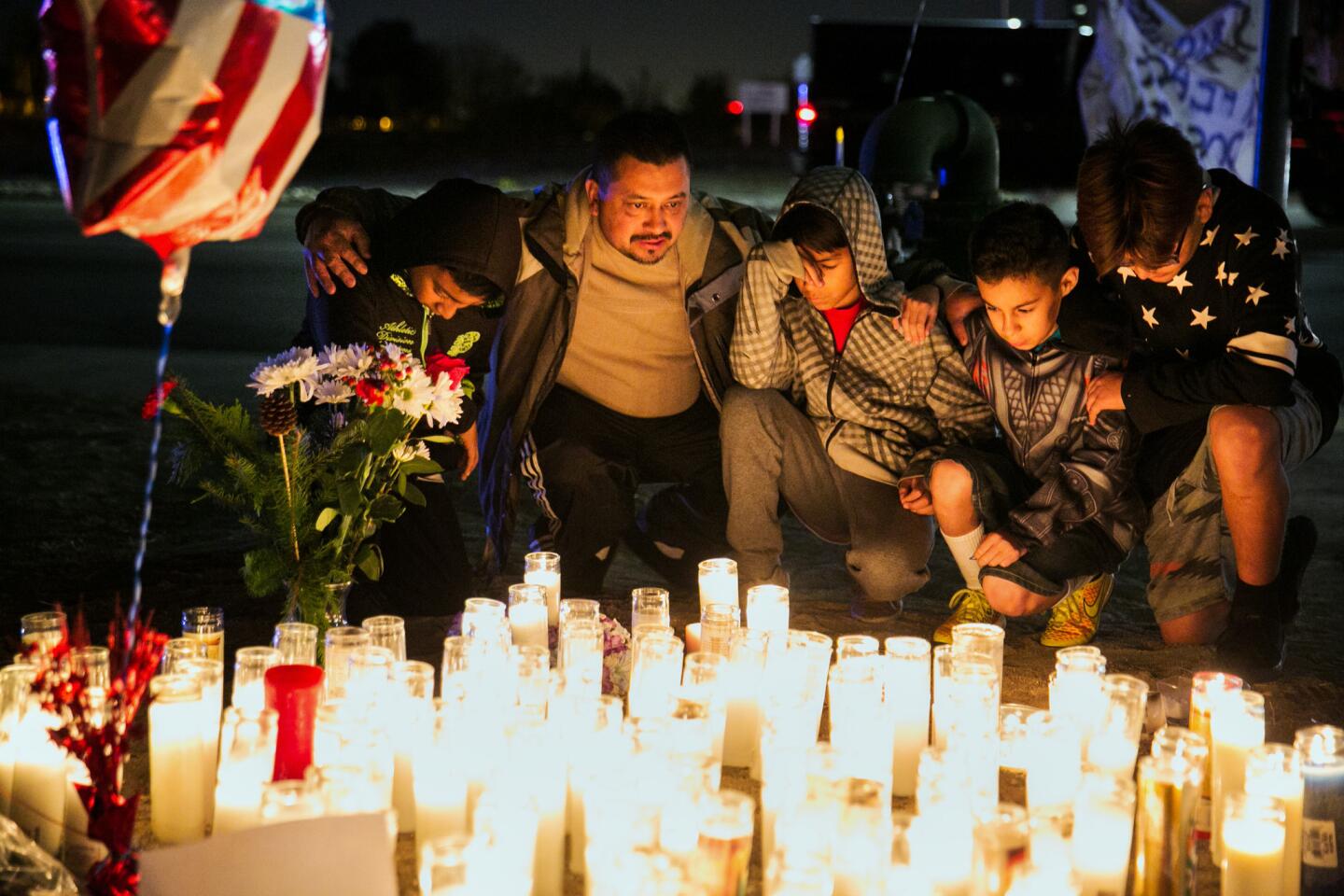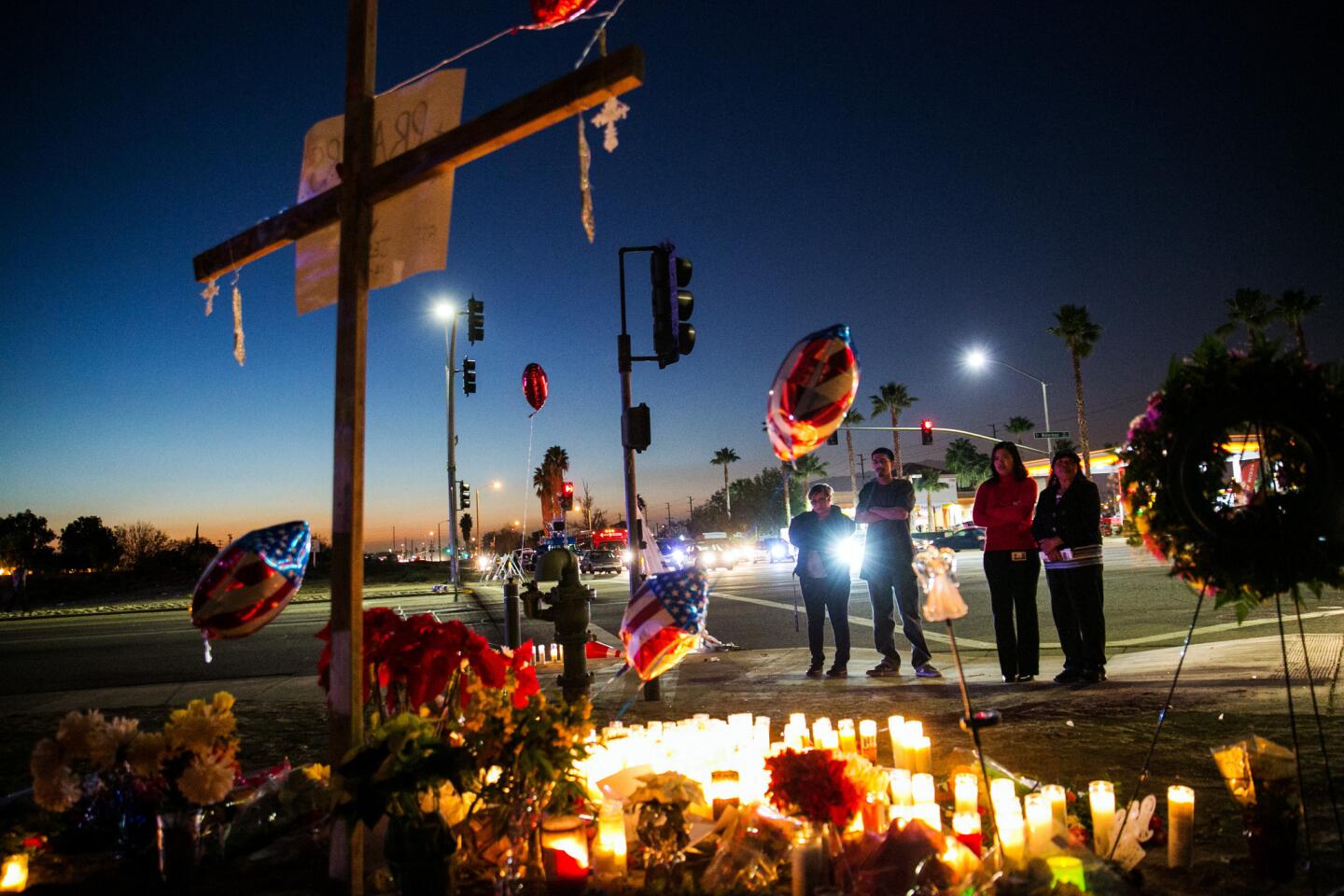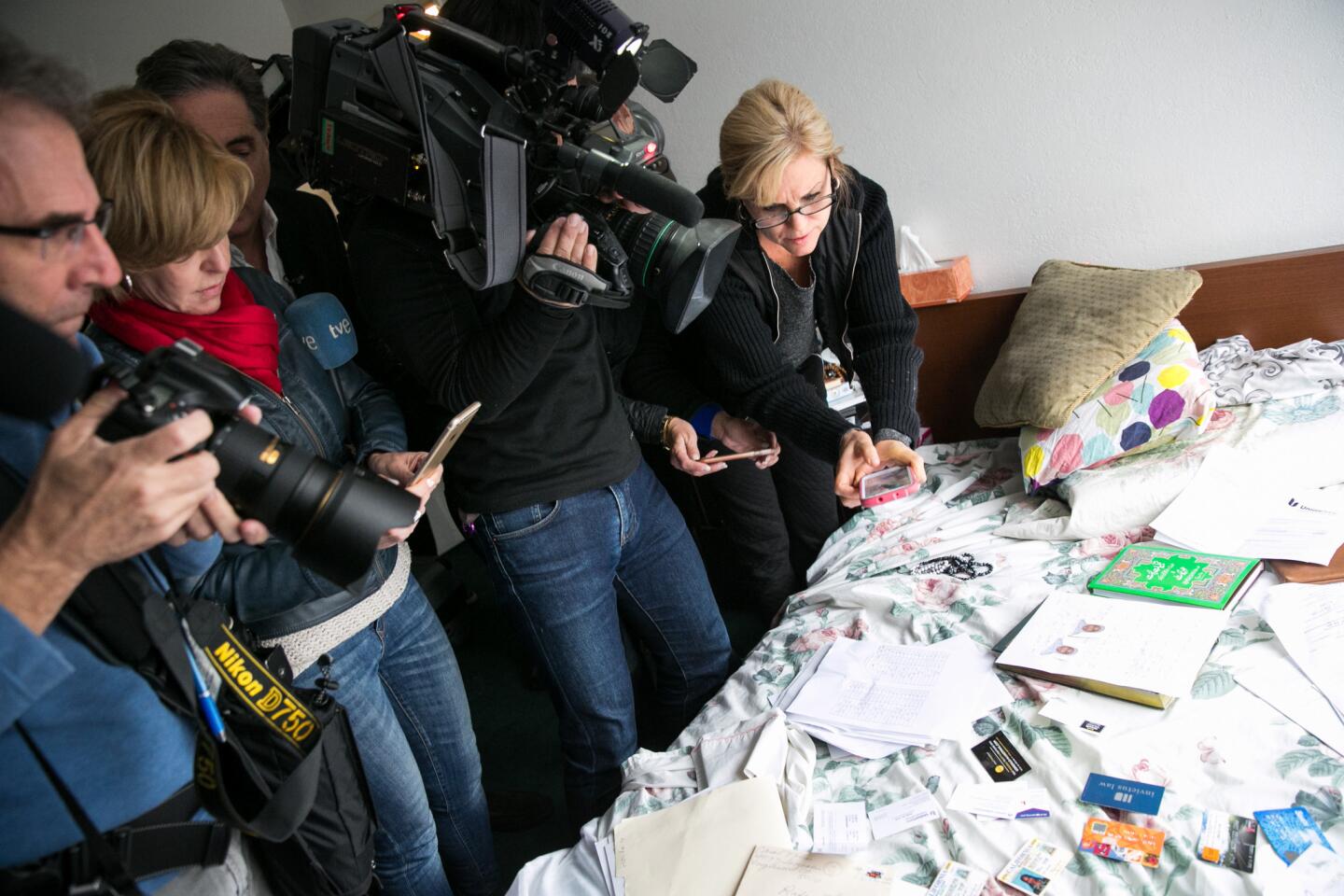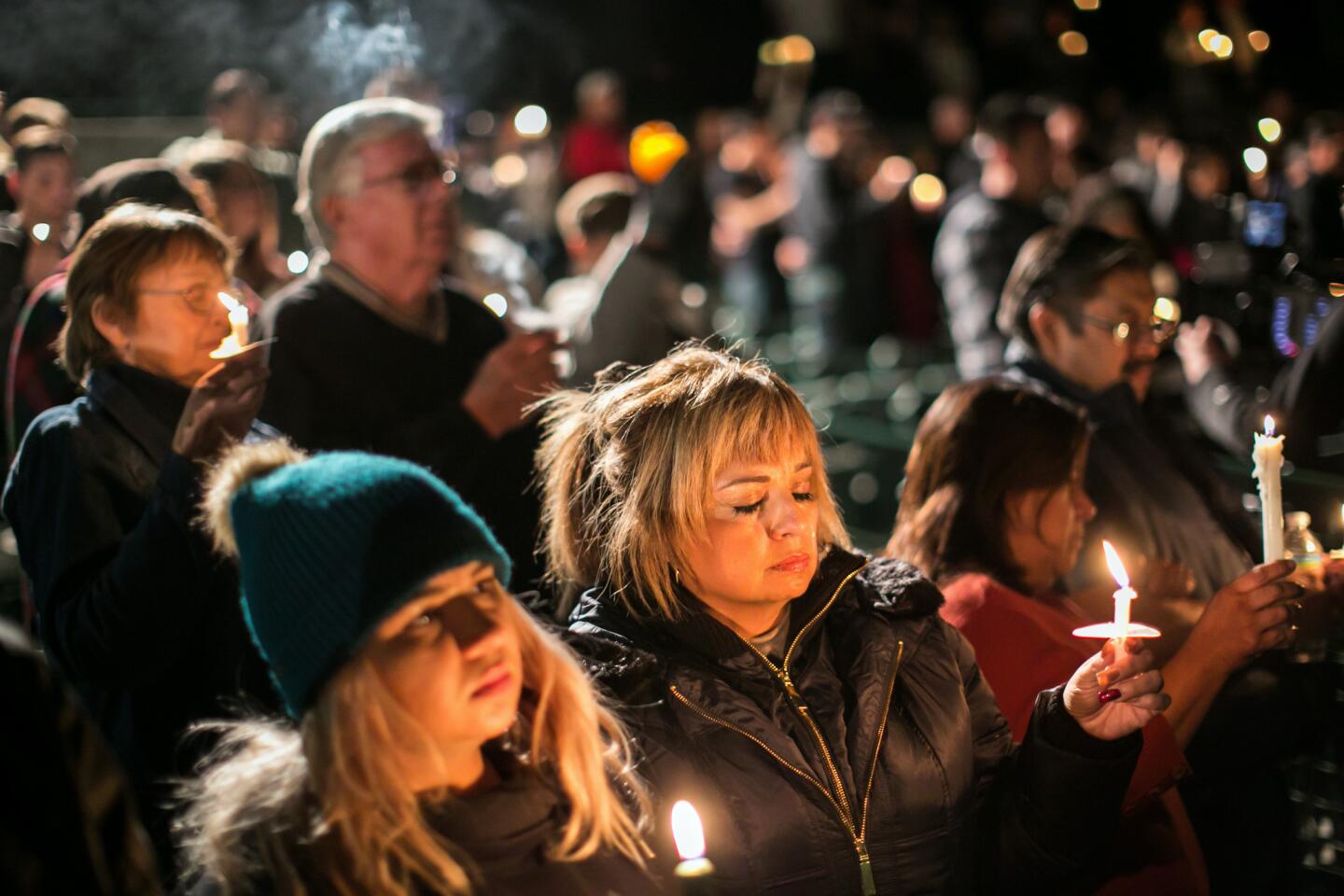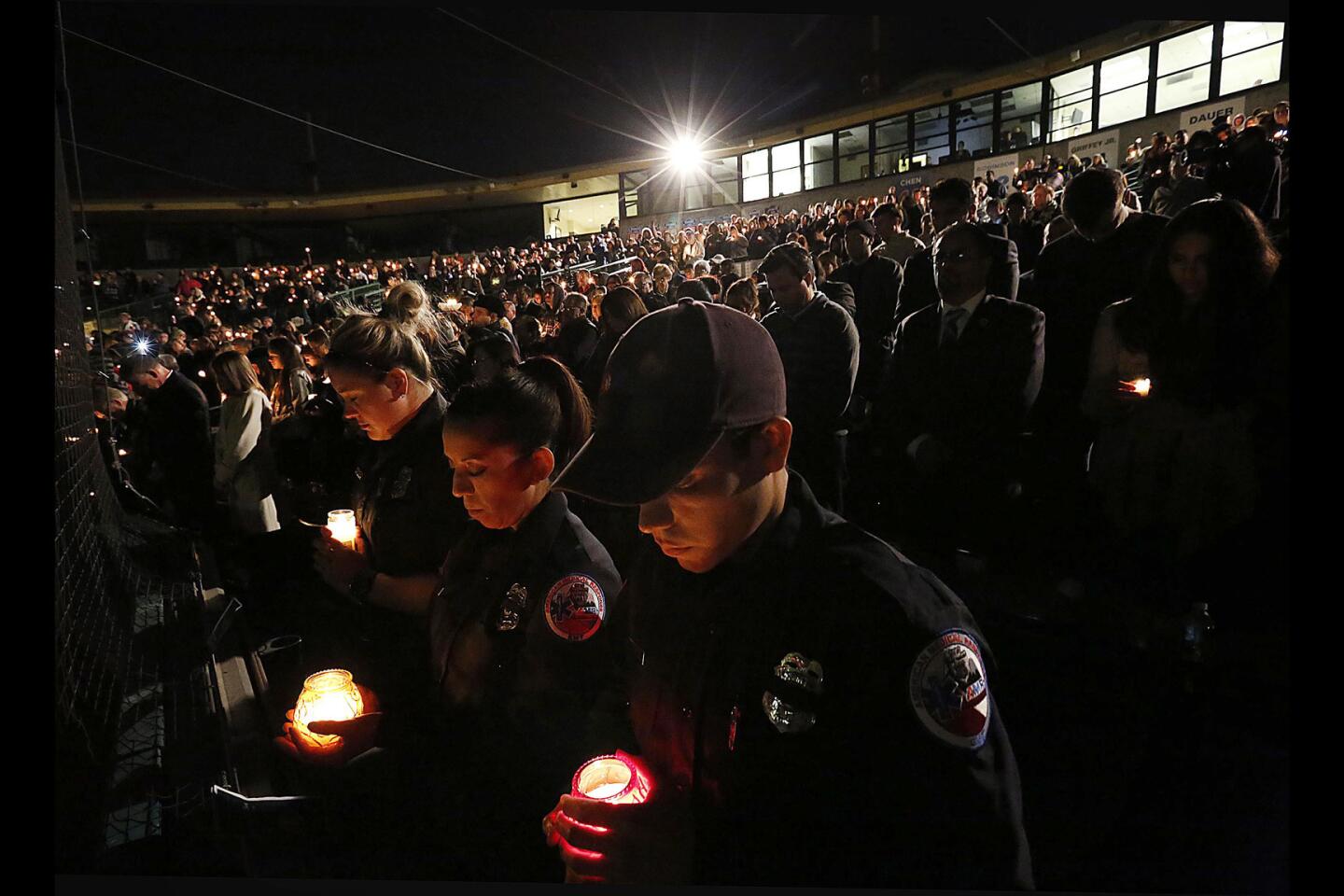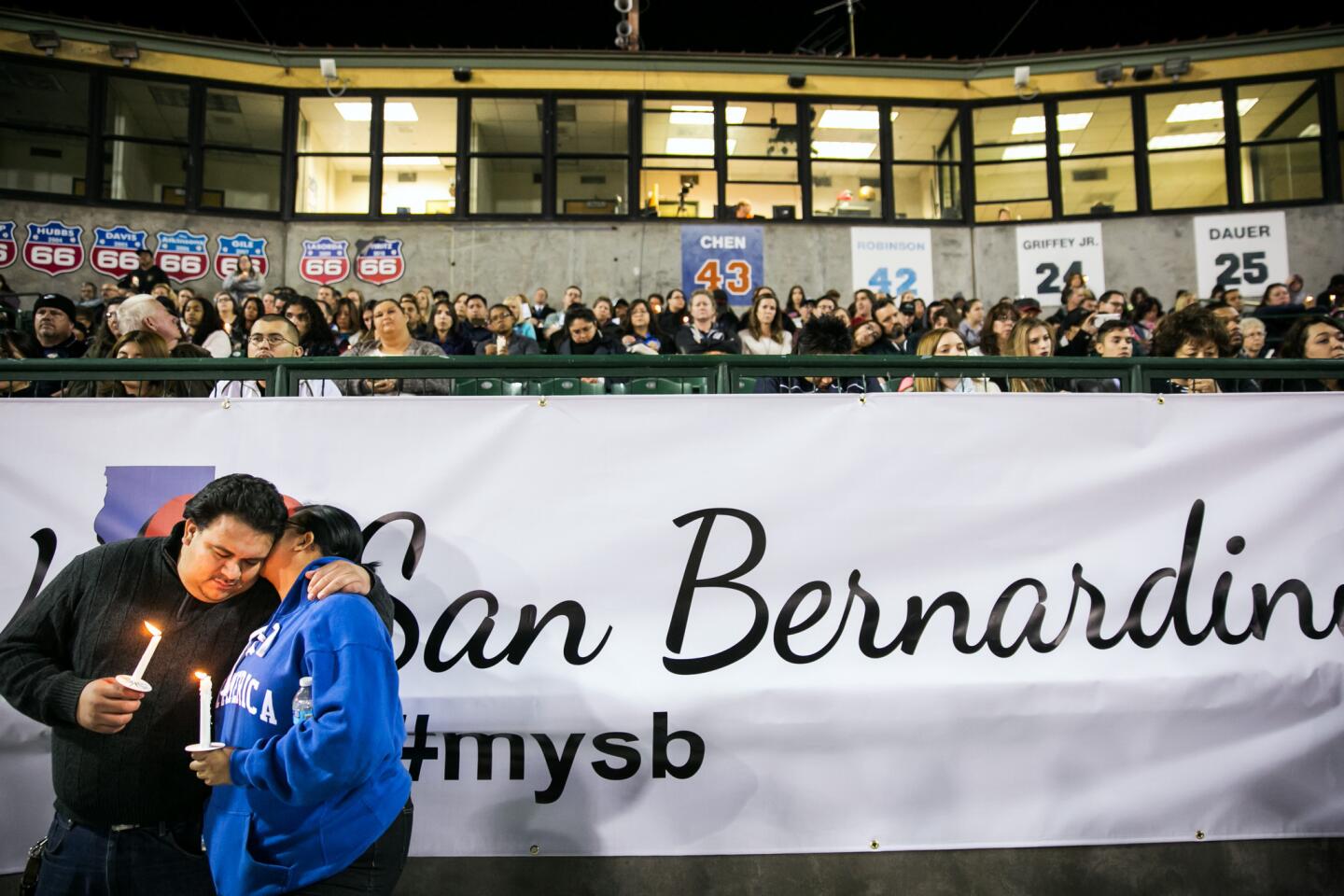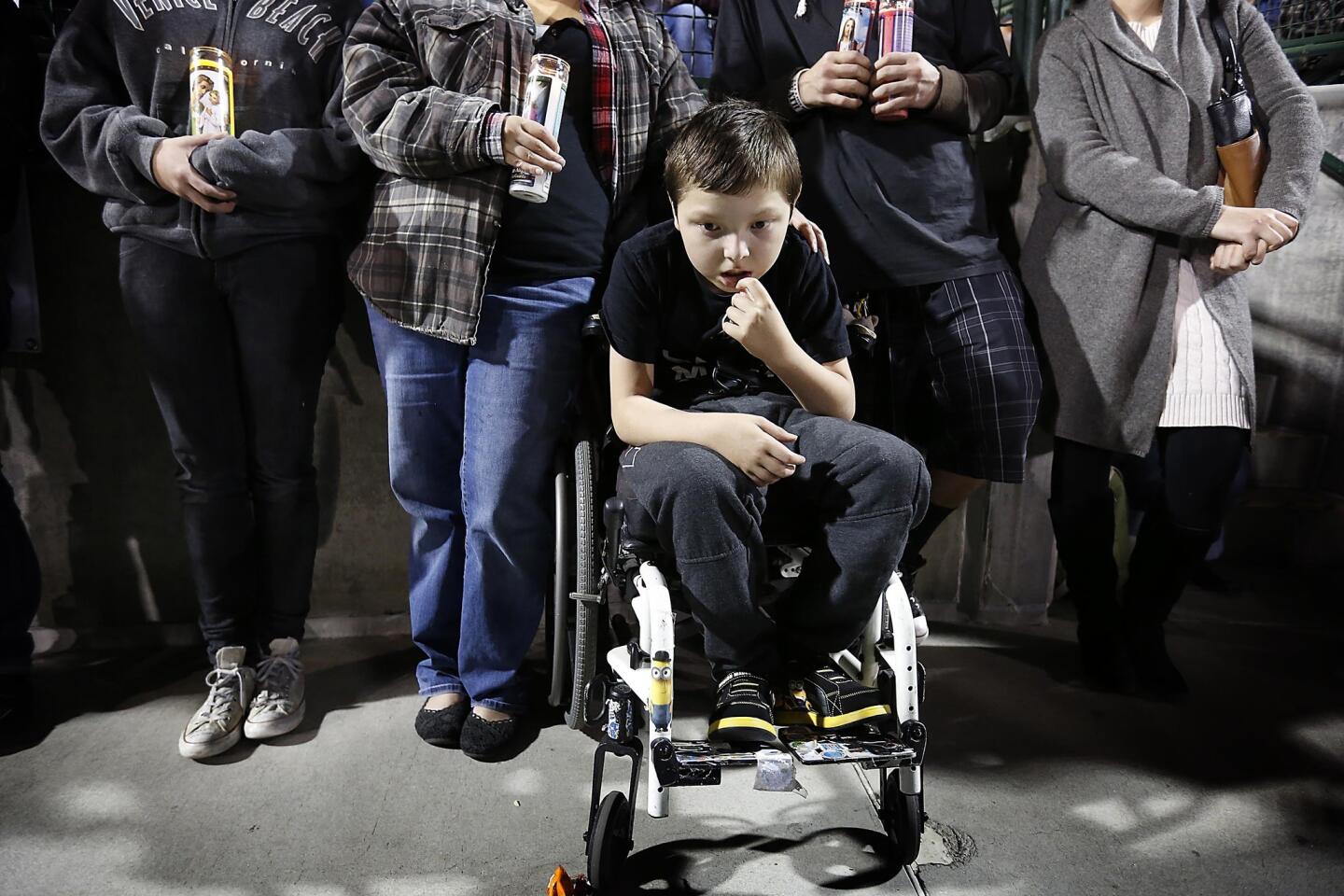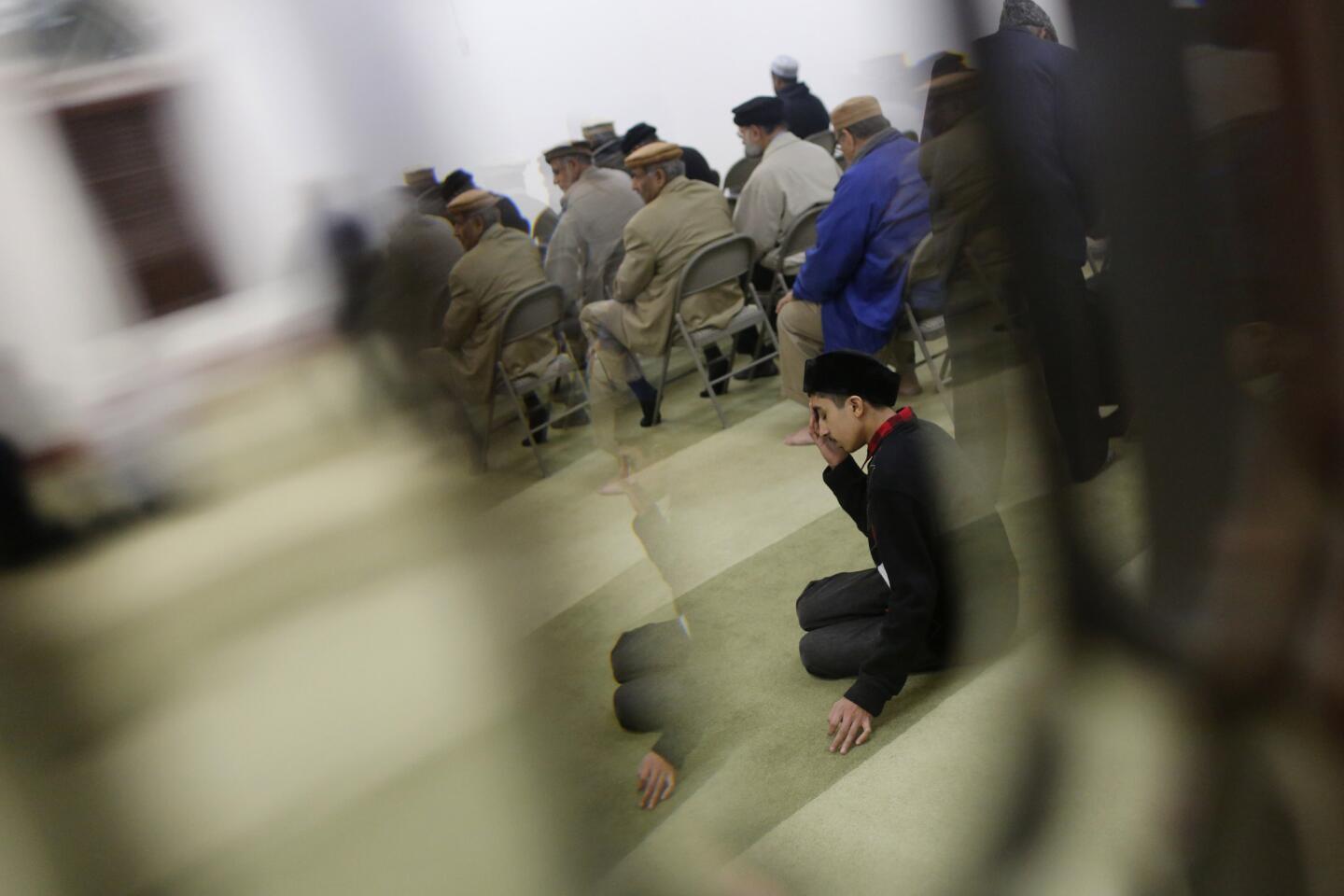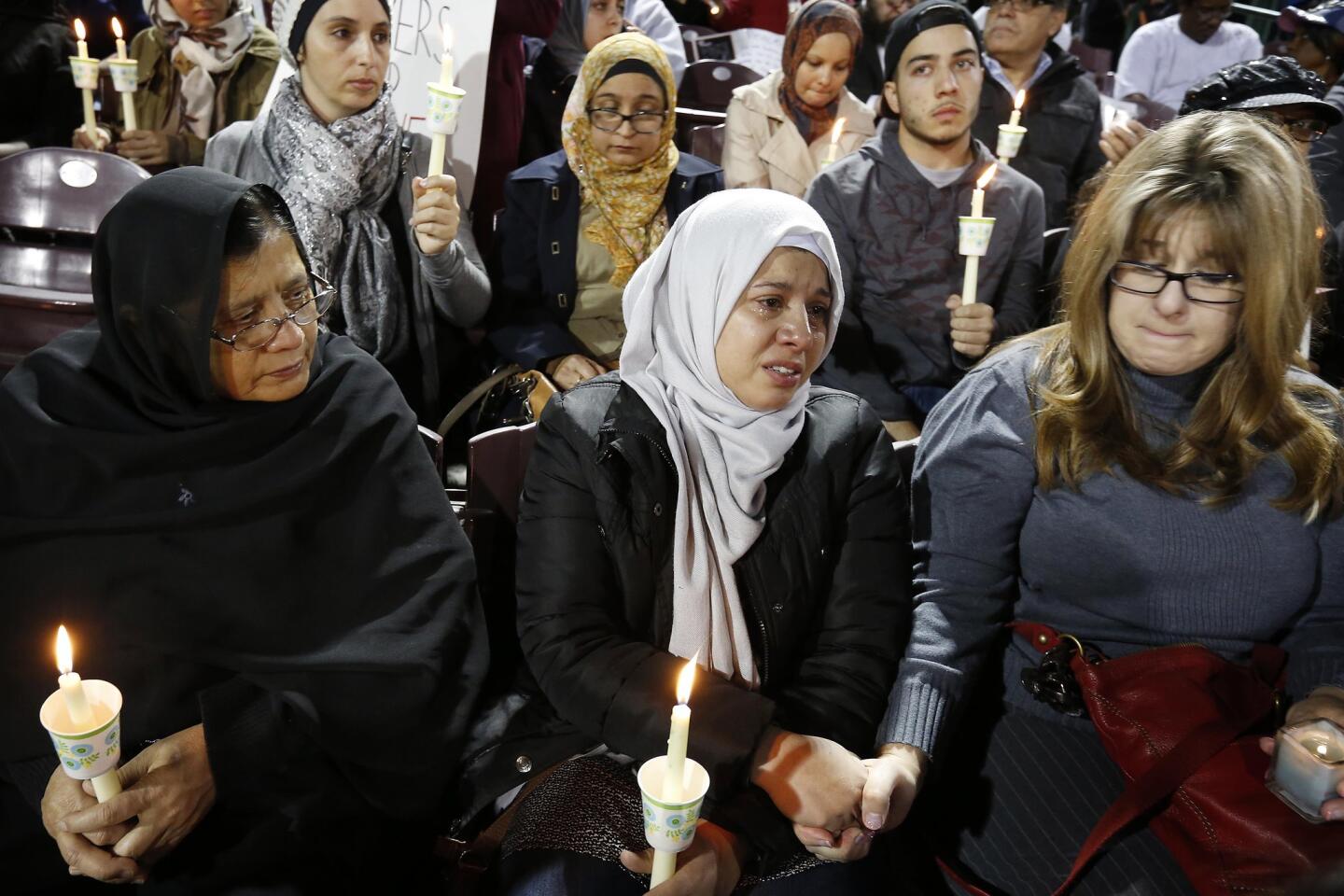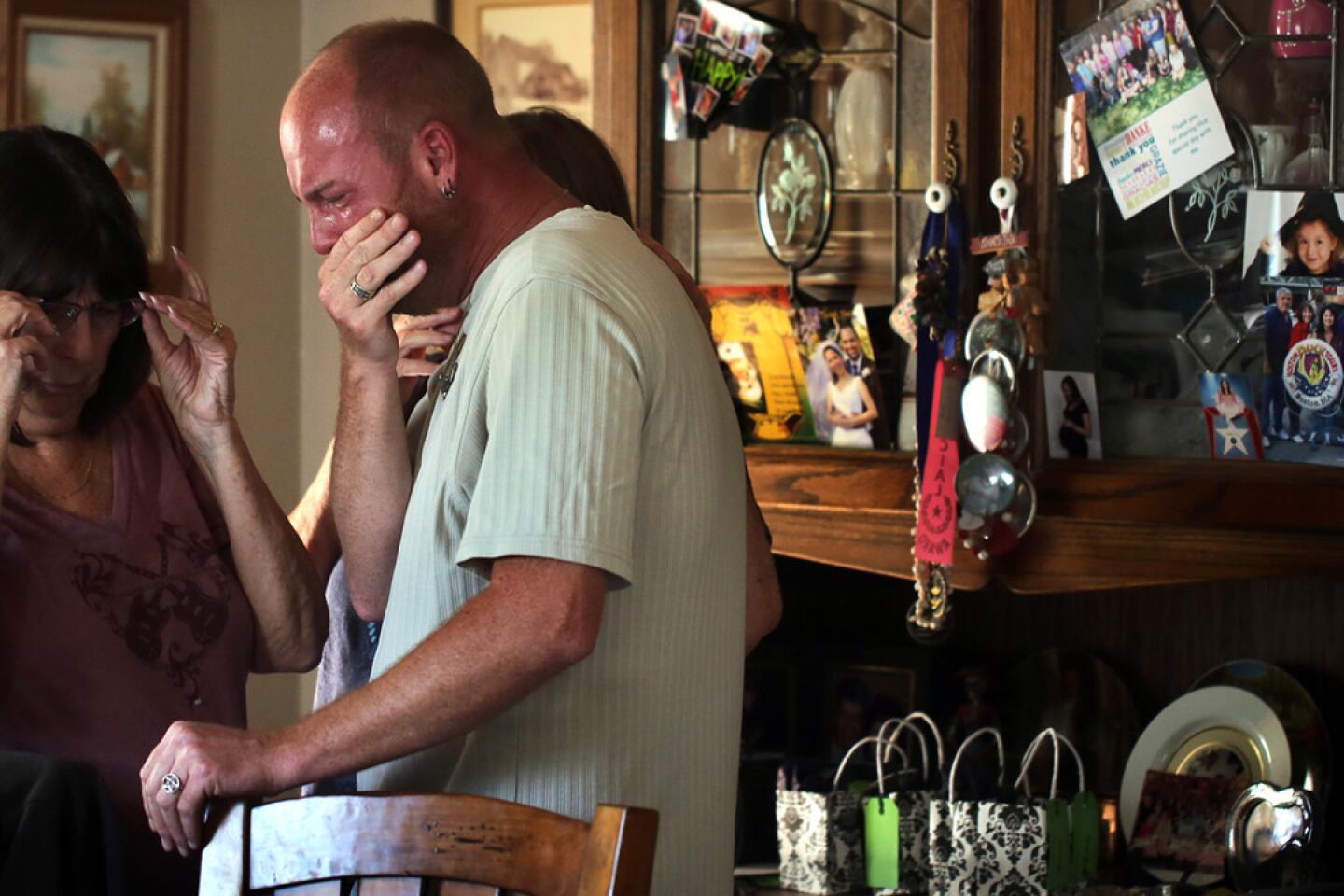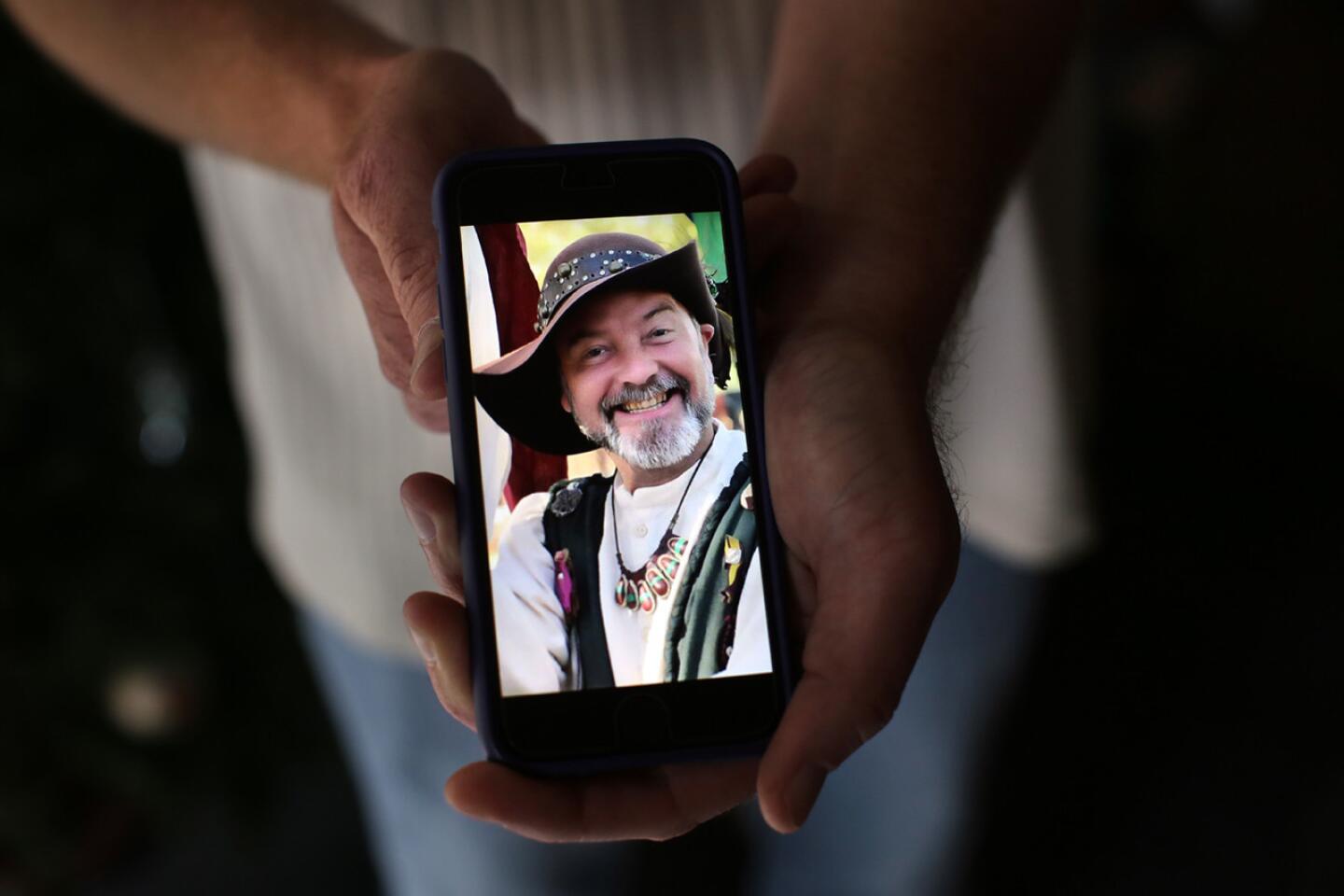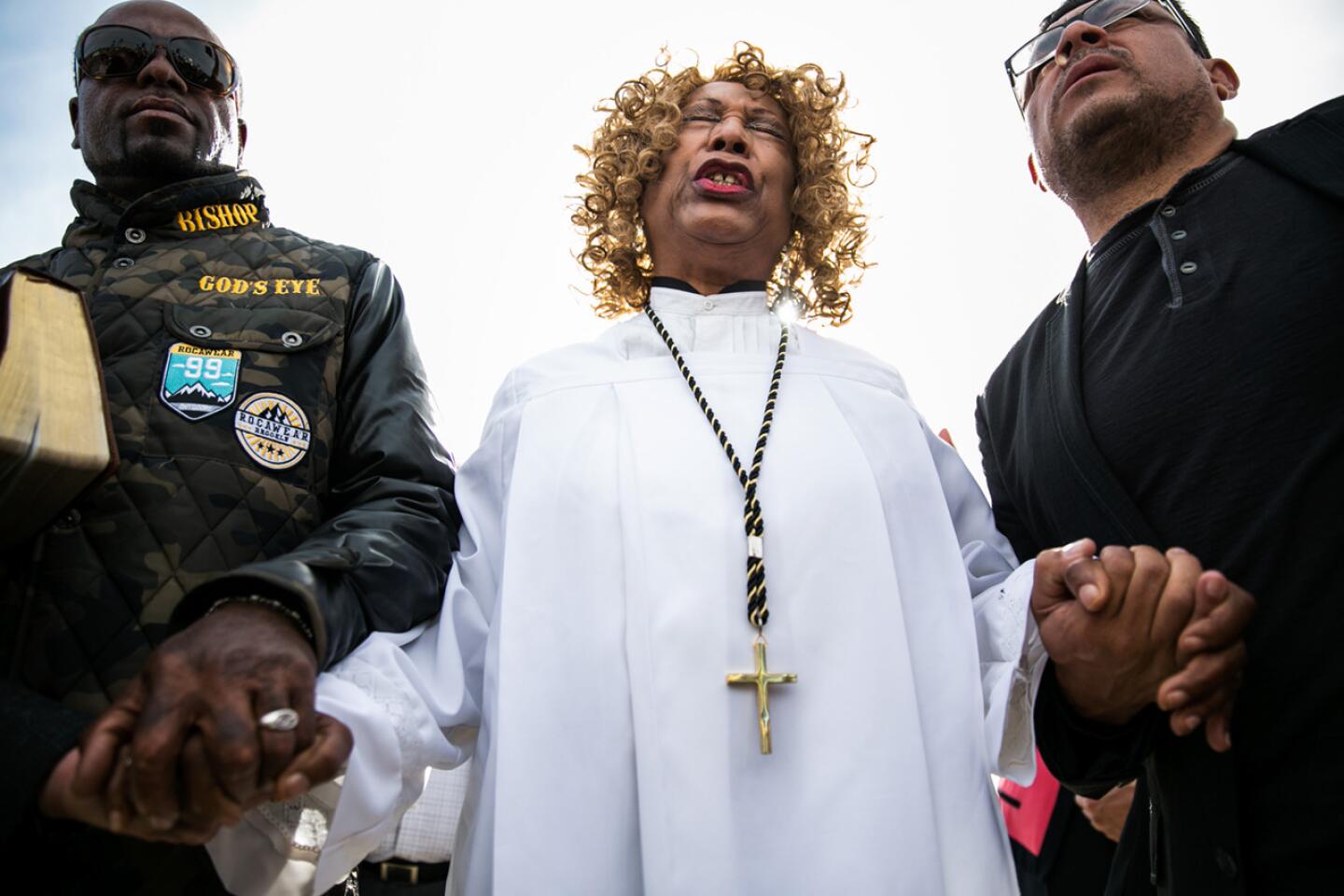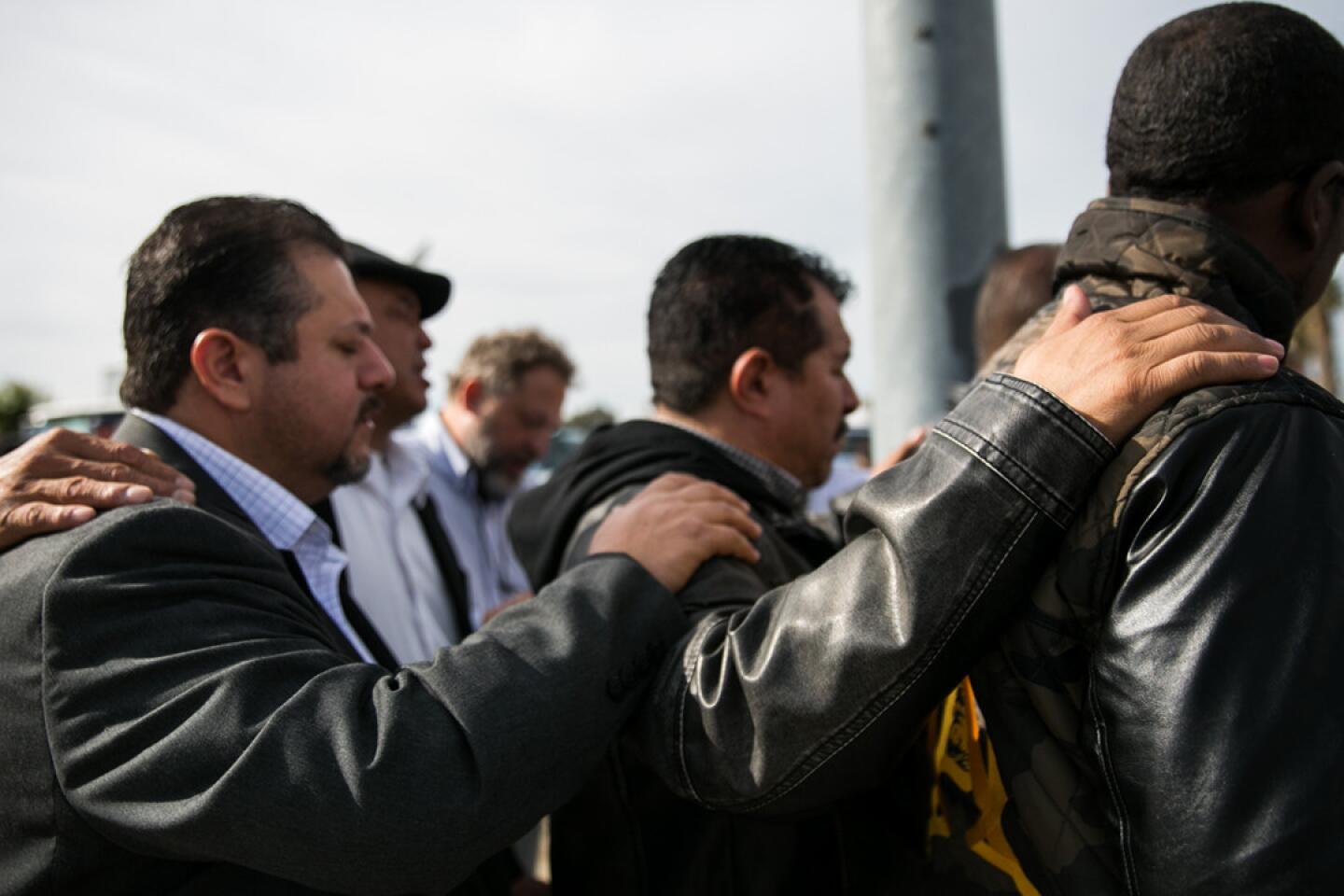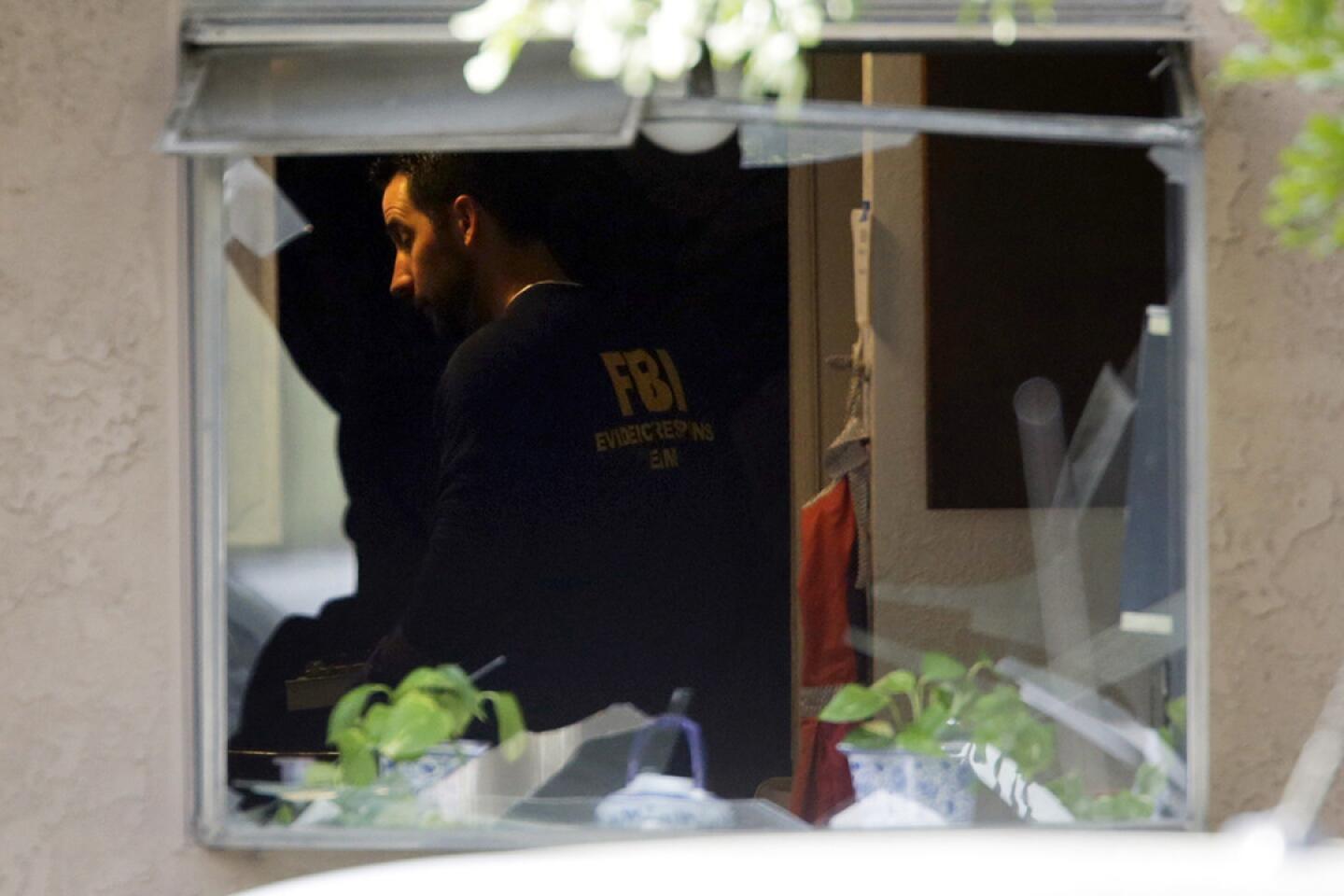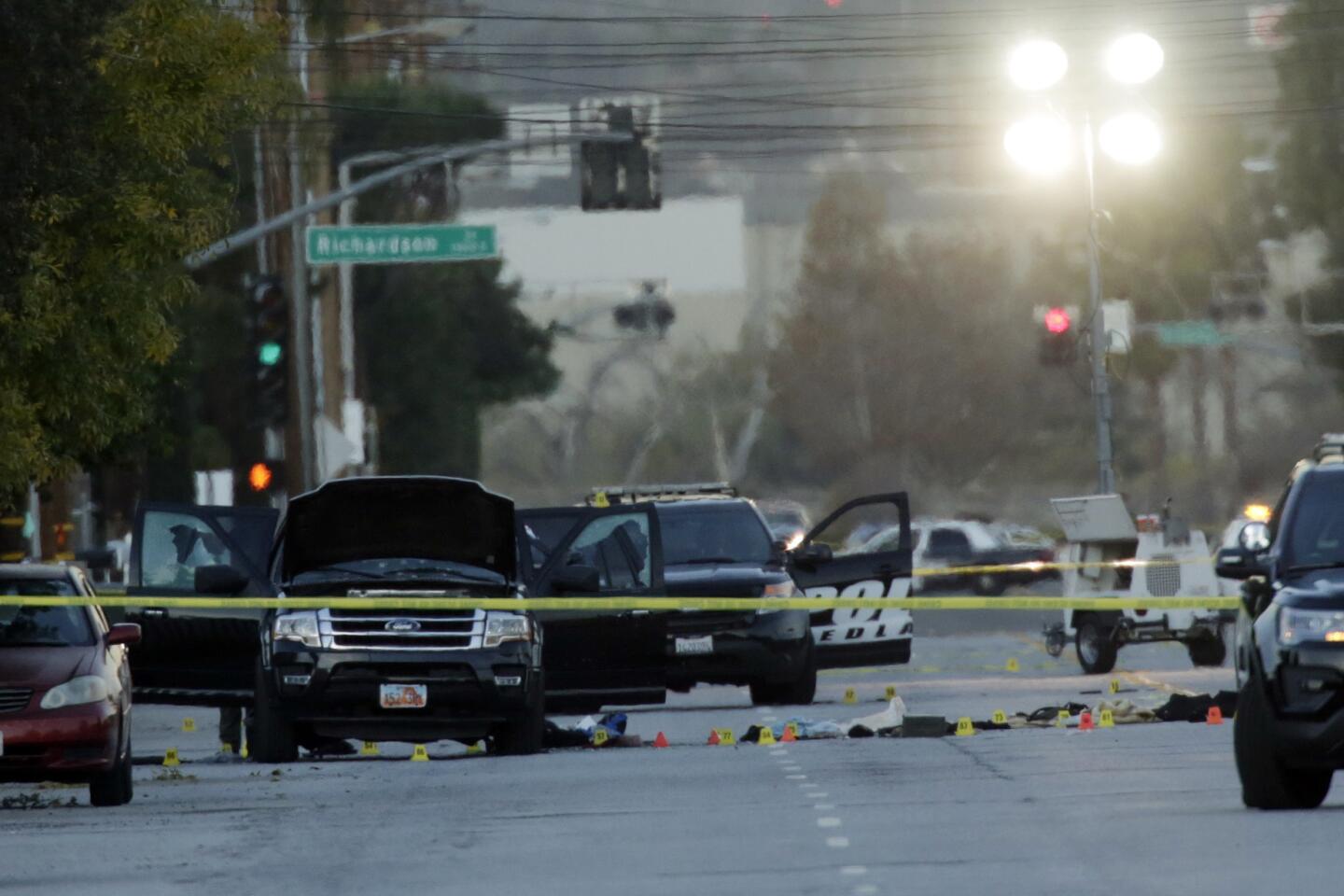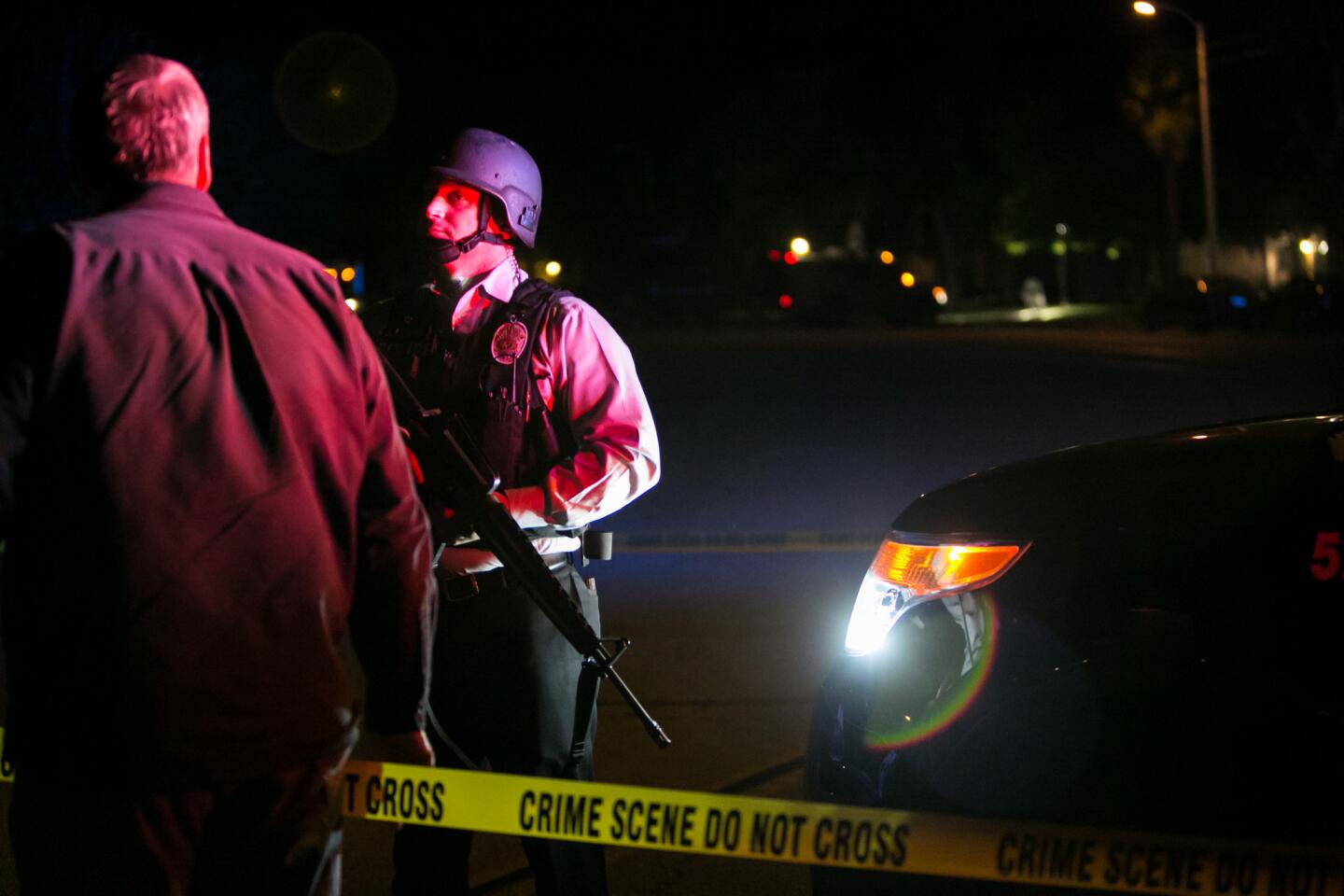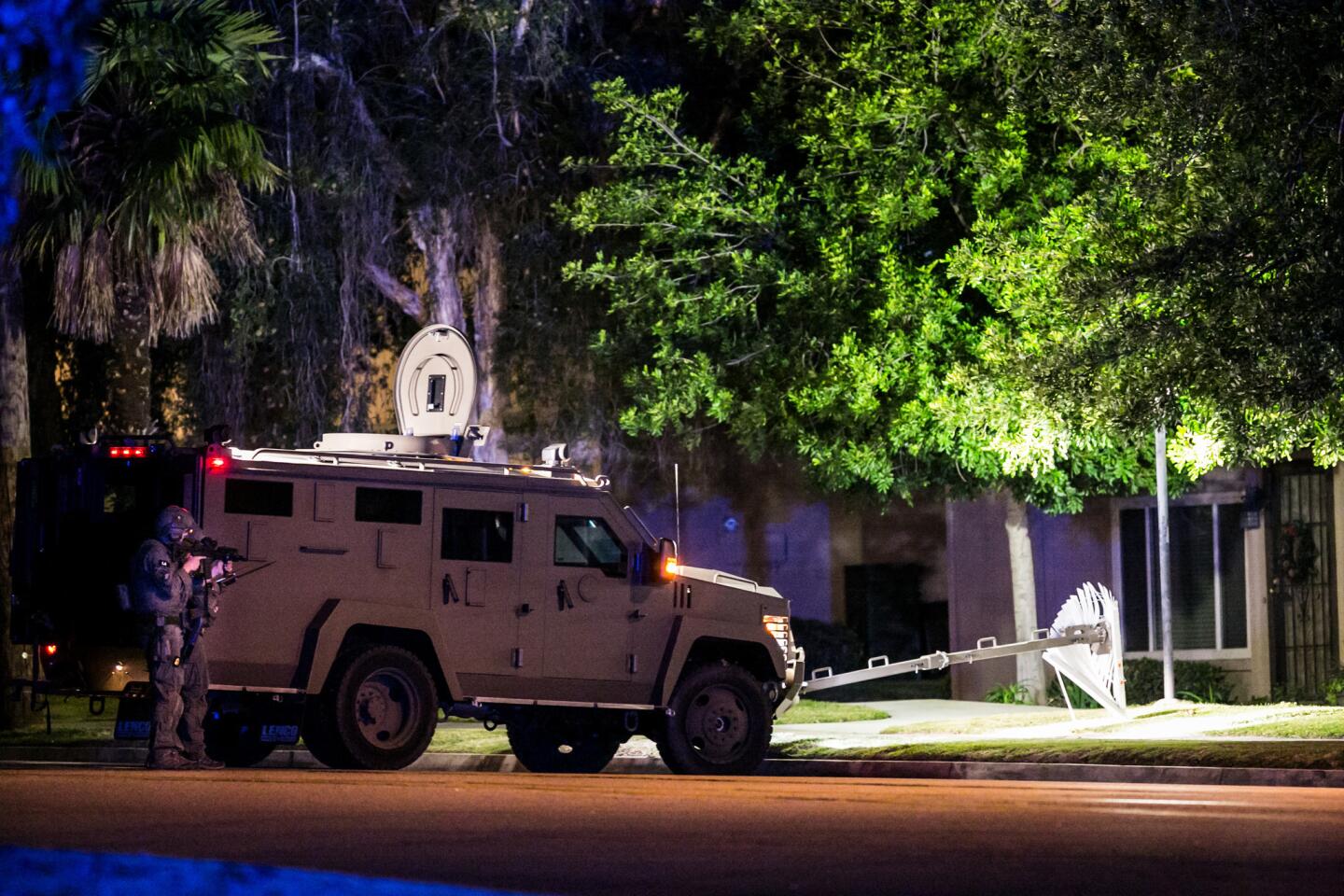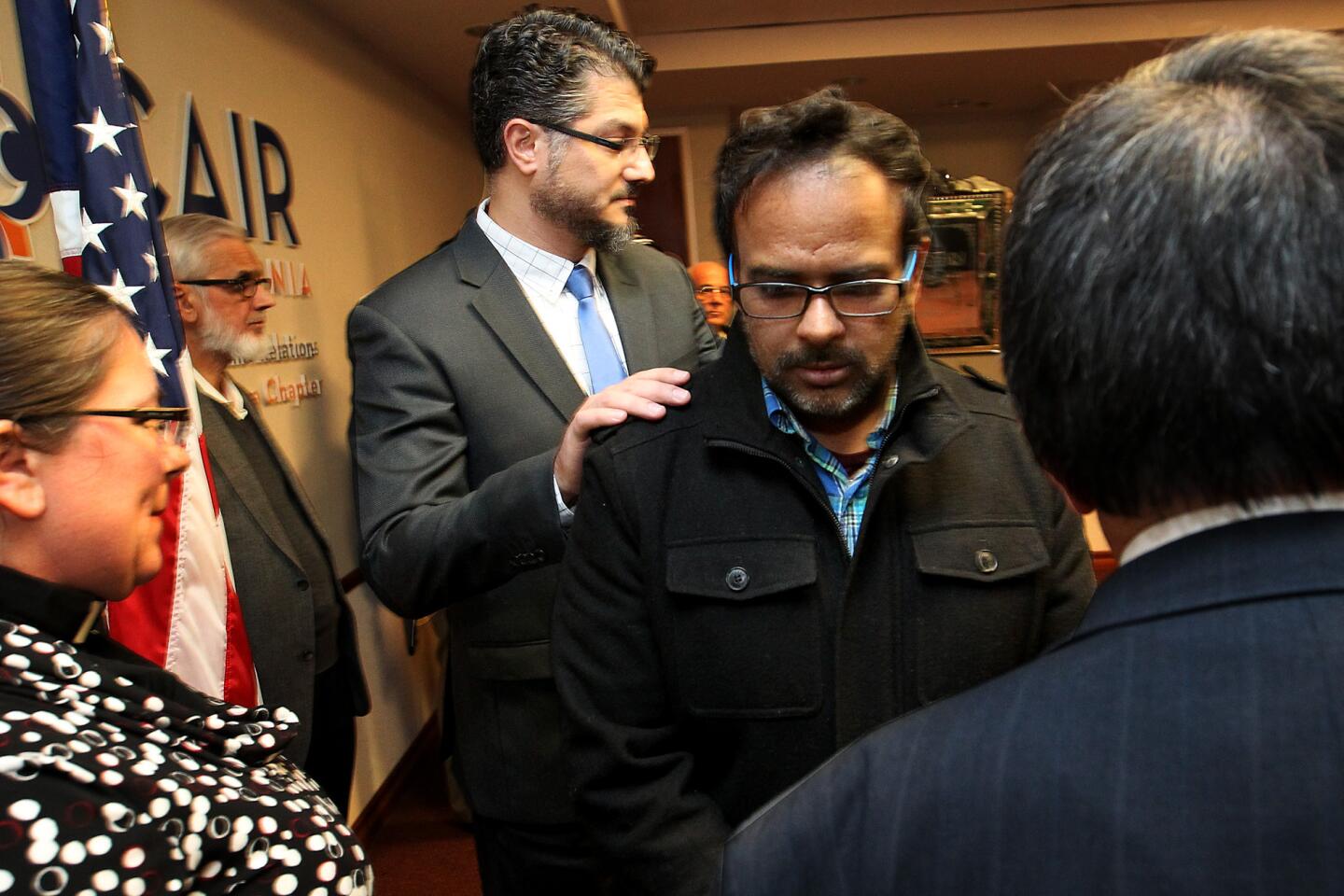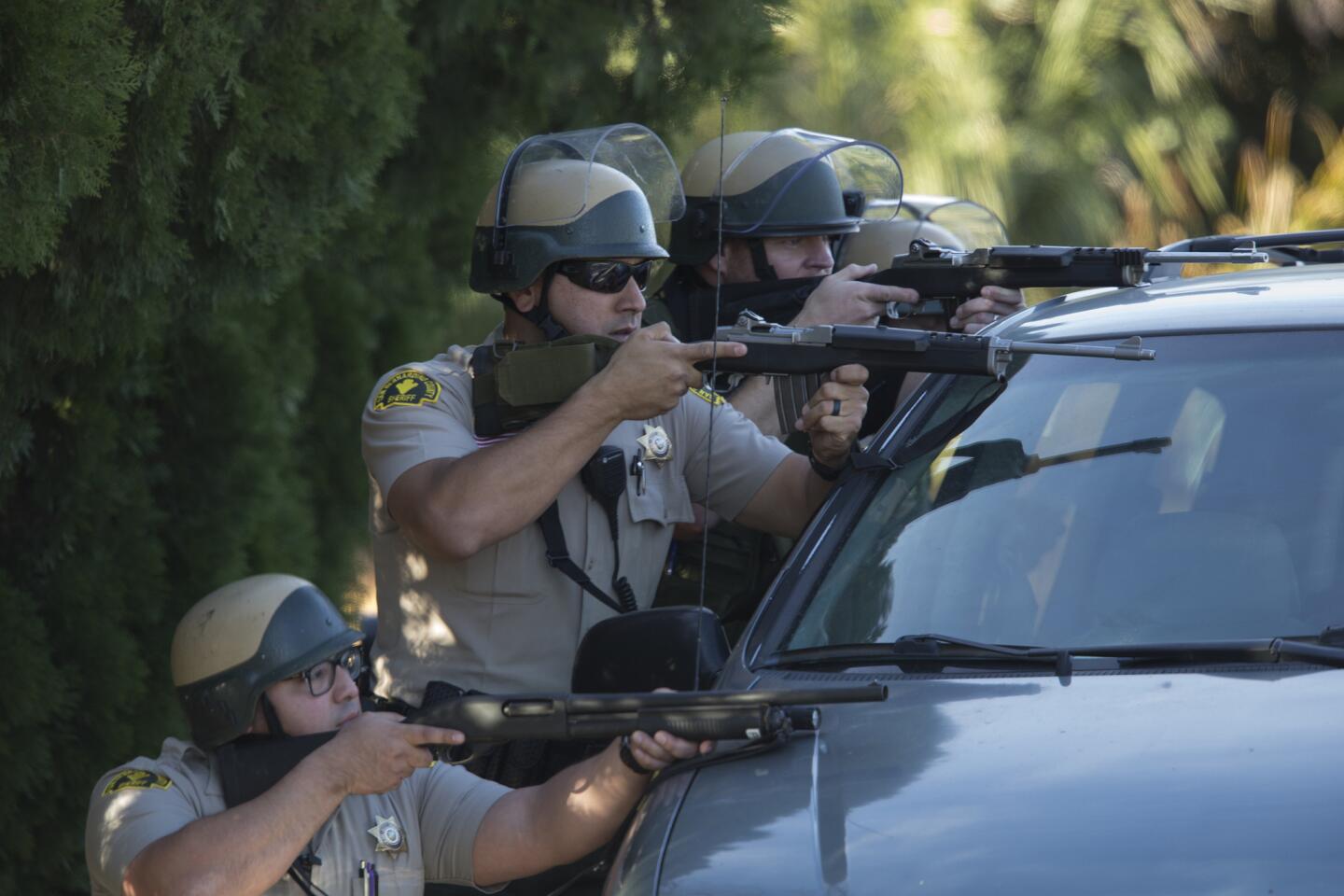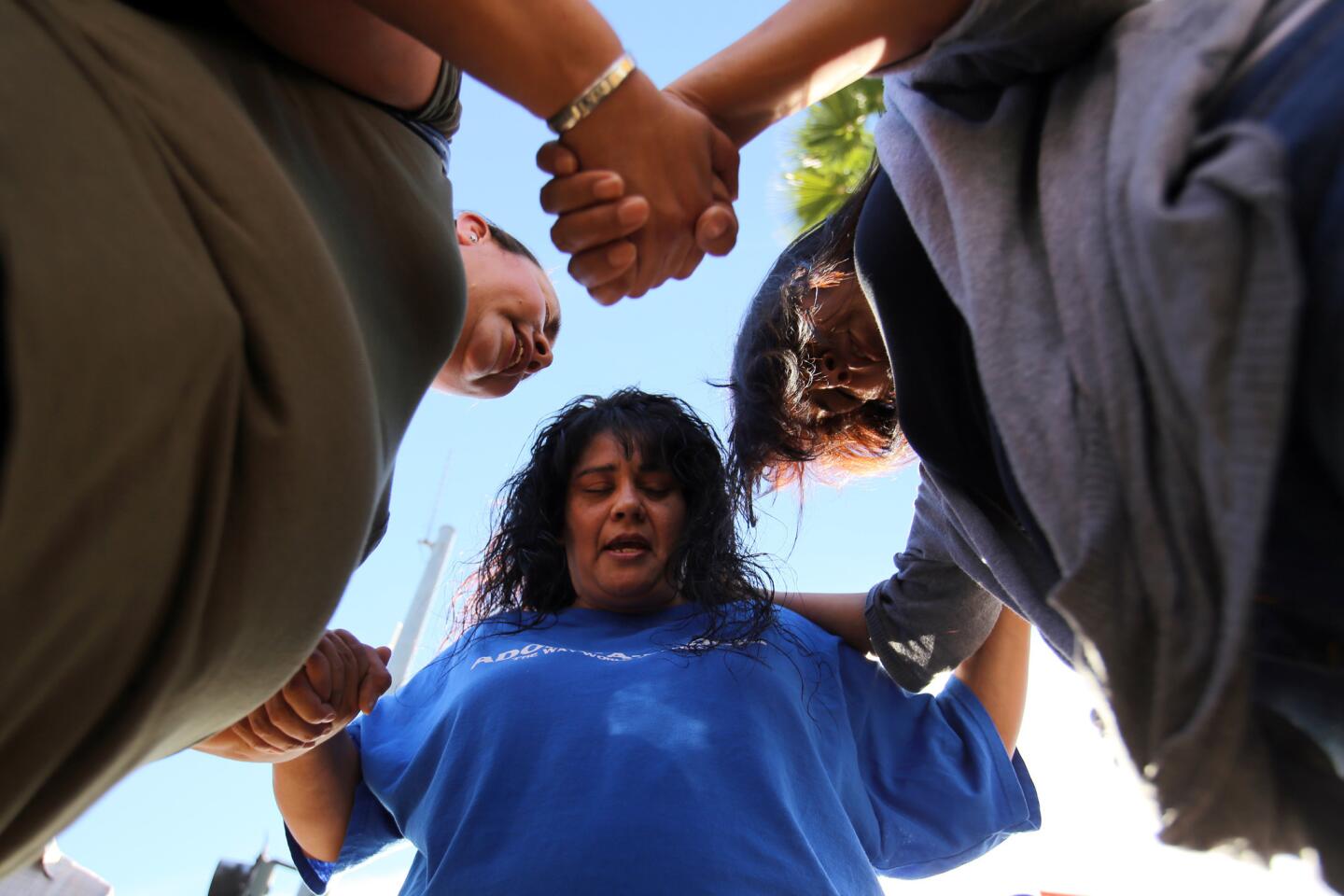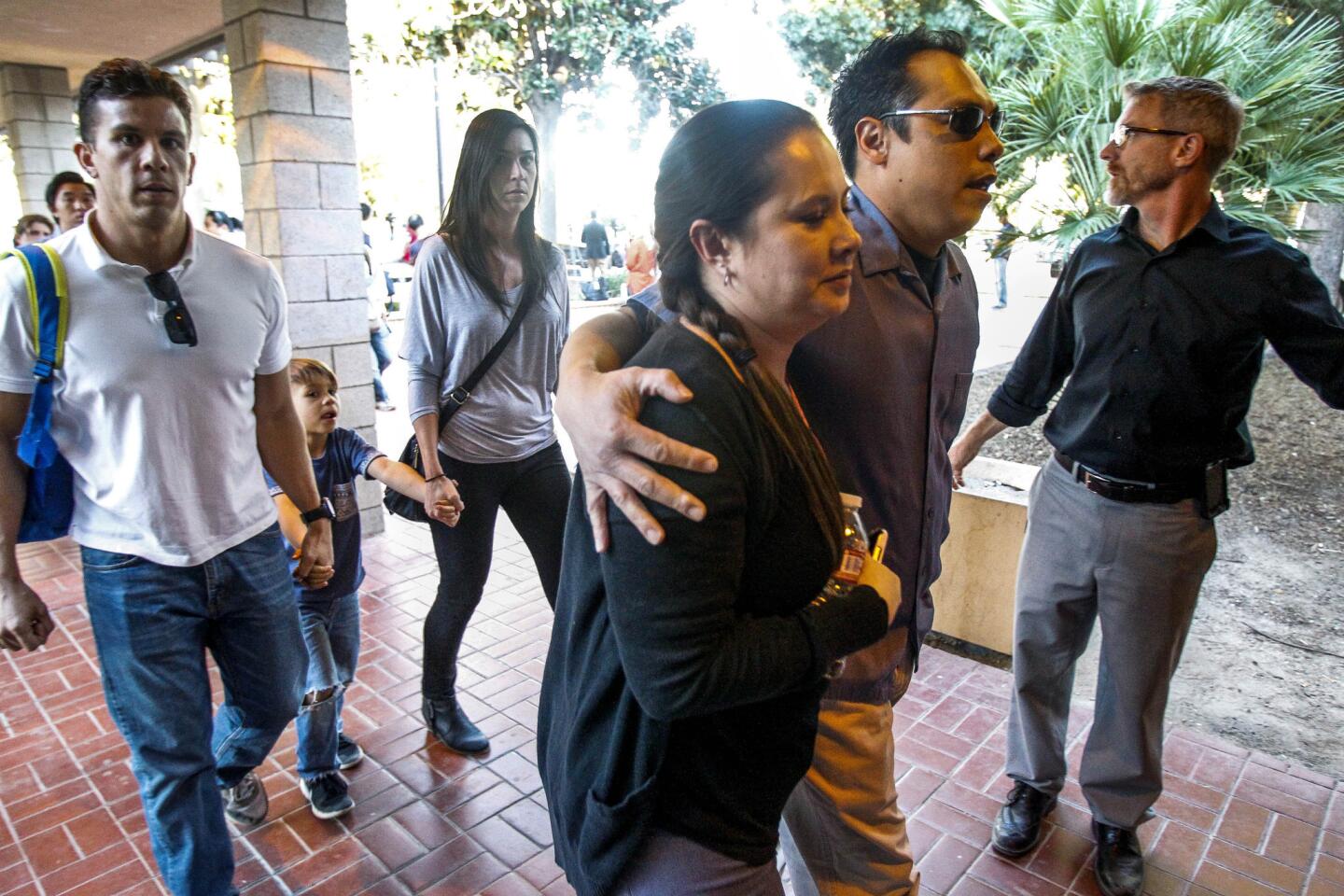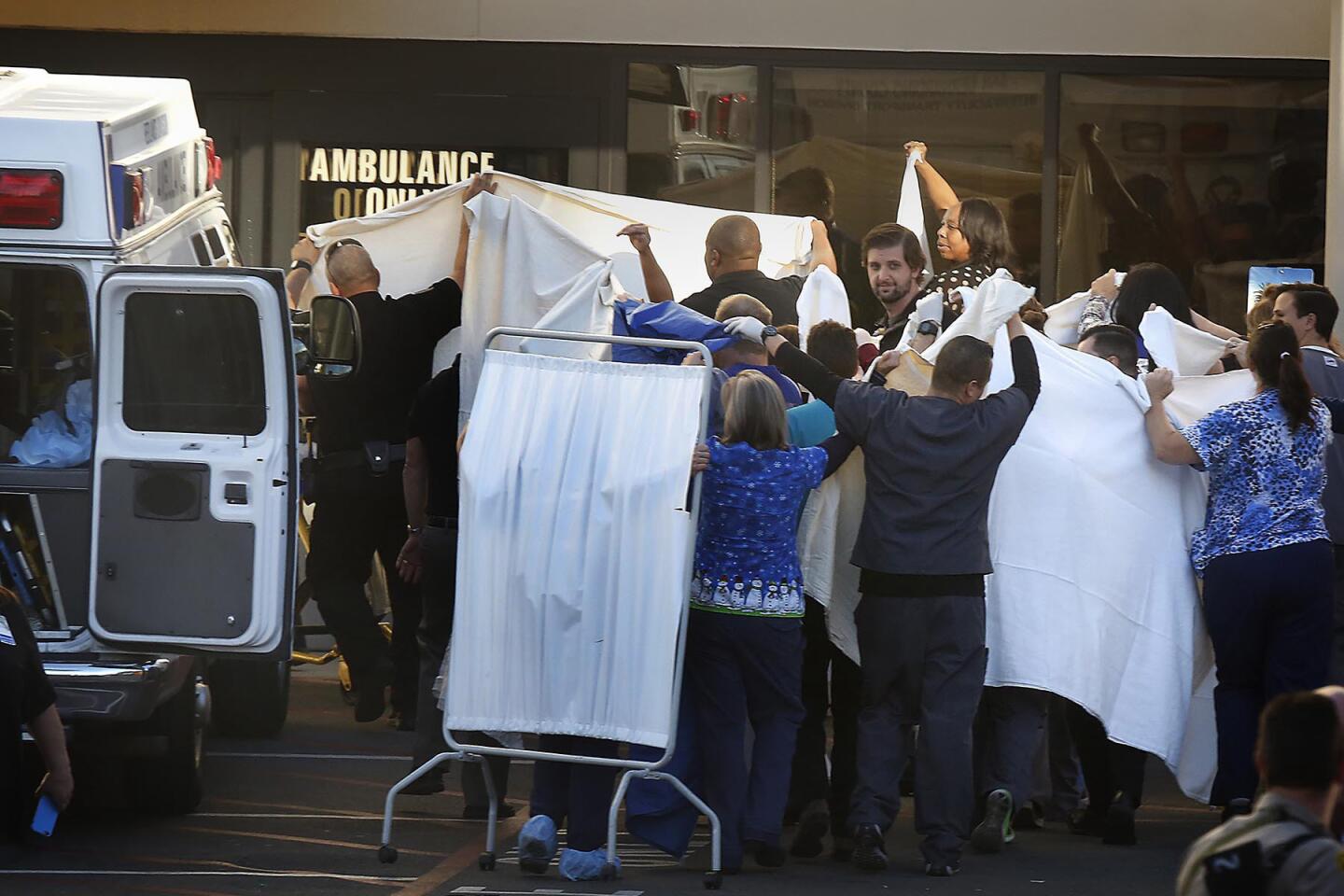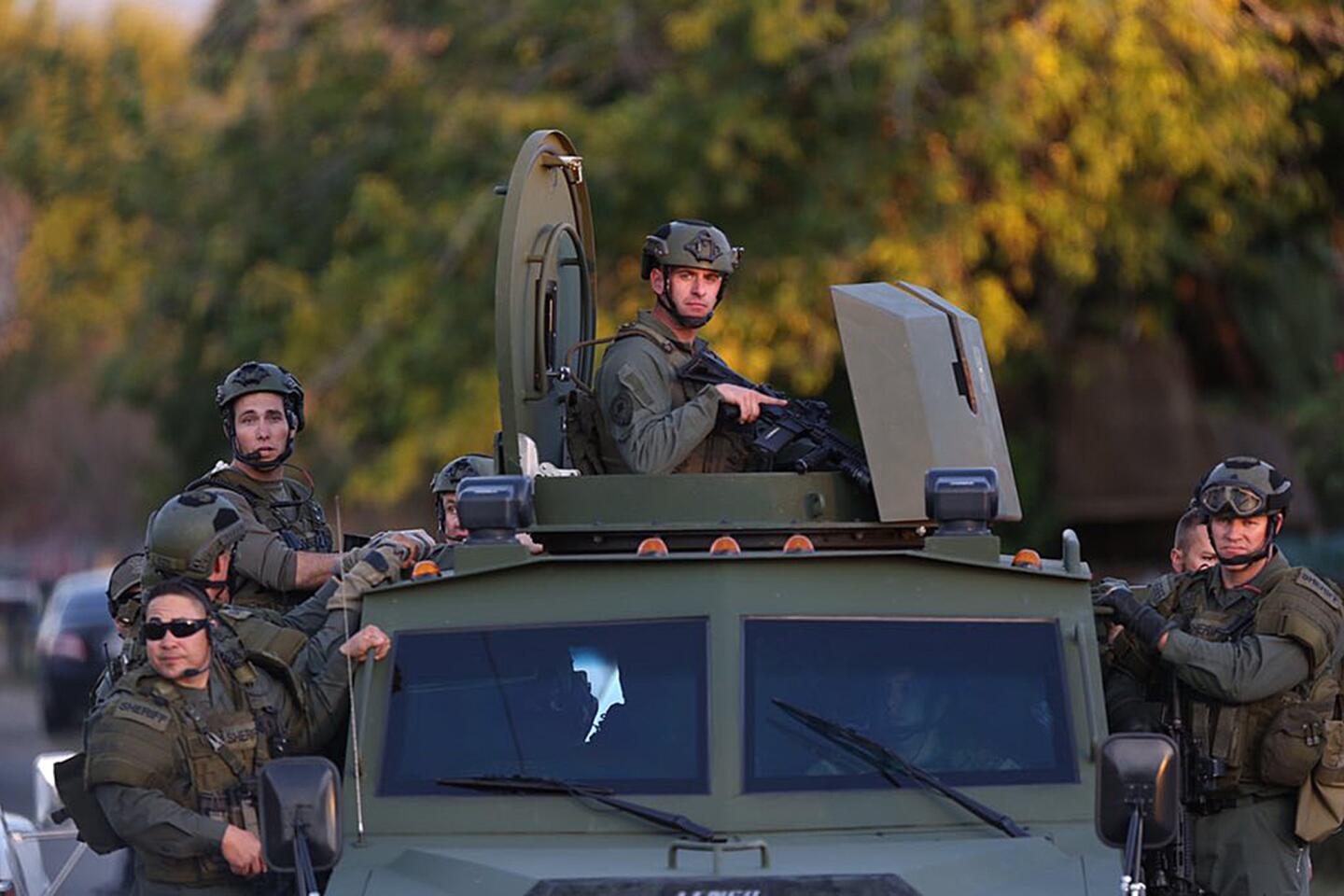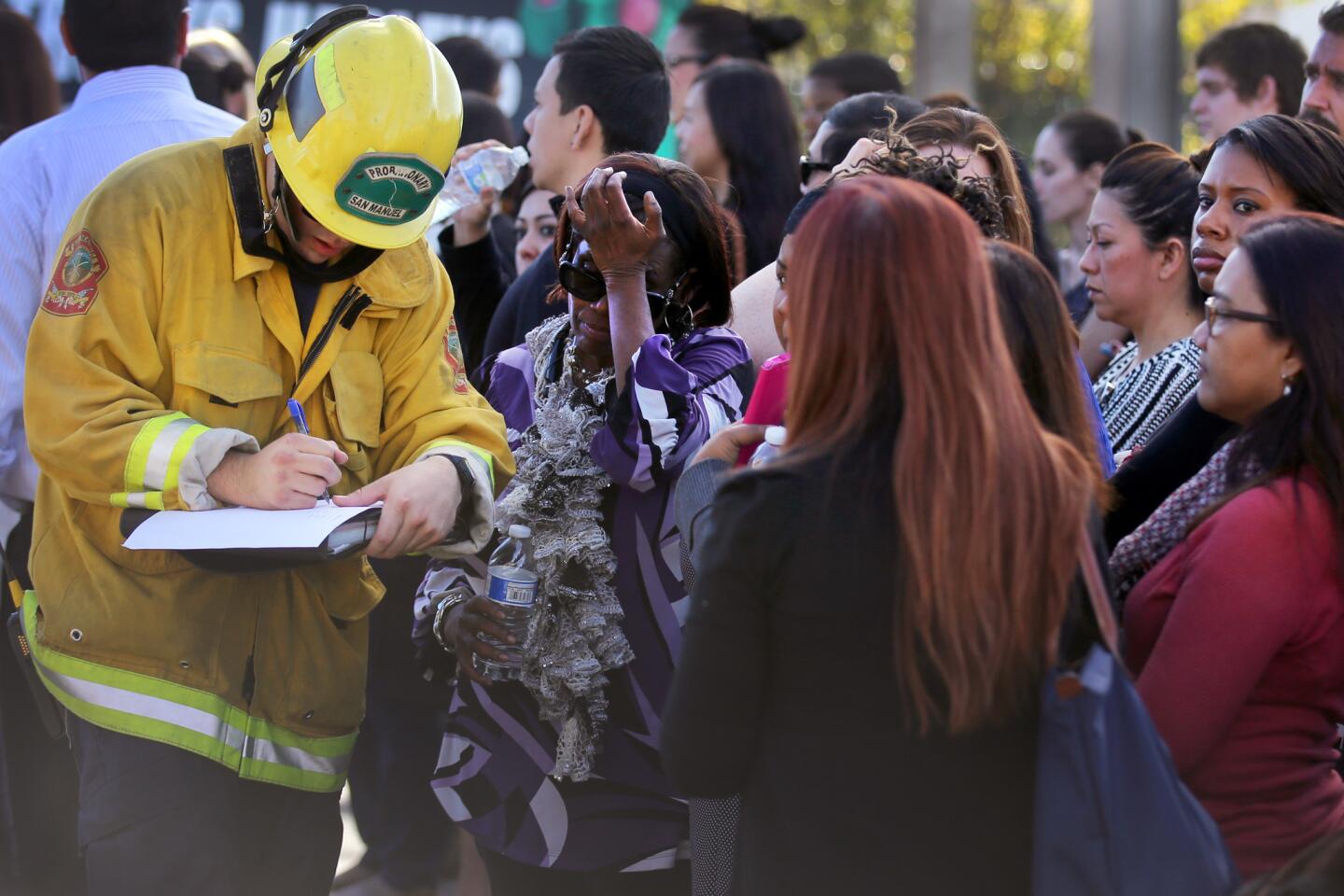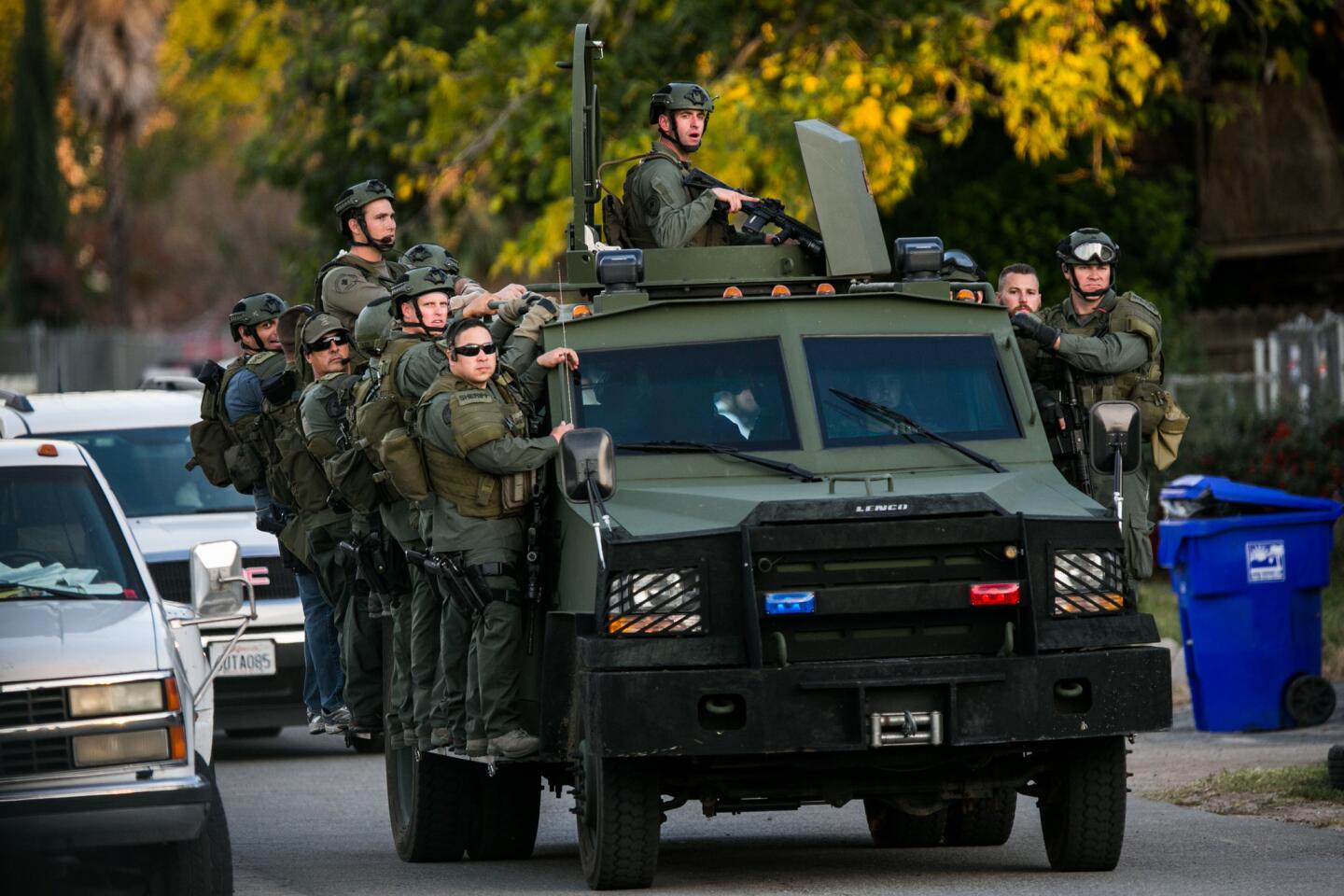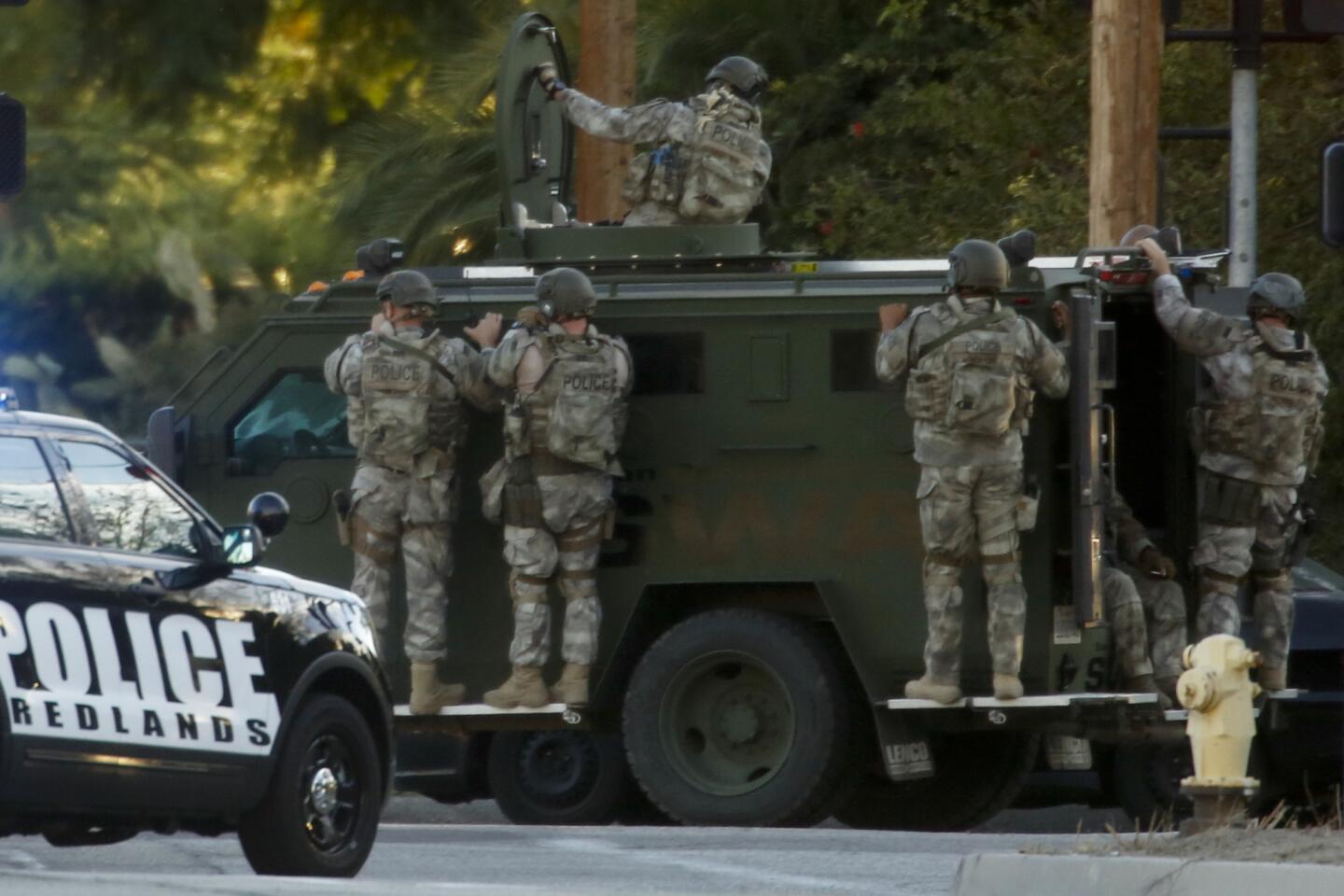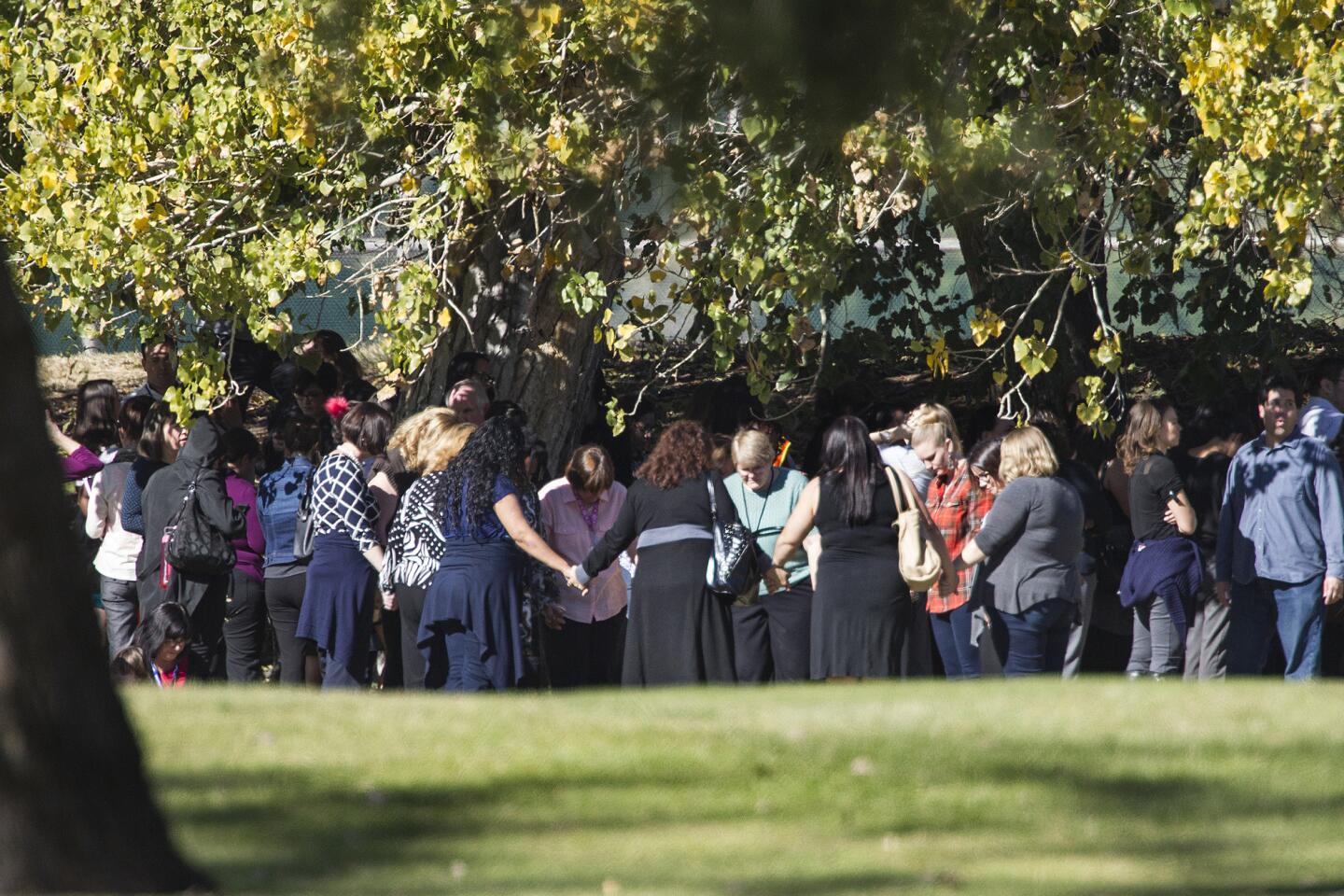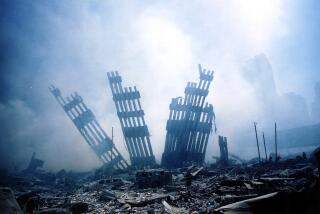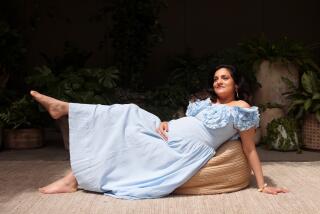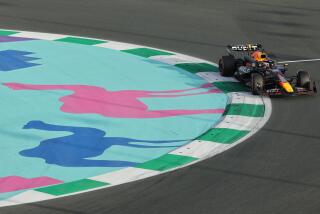reporting from RIYADH, Saudi Arabia — As a college student in Pakistan, she was known as a “Saudi girl,” her face shrouded in a black veil in the conservative style typical of women in the Persian Gulf kingdom where she spent most of her childhood.
But growing up in Riyadh, Saudi Arabia’s oil-rich and sometimes turbulent capital, Tashfeen Malik lived the life of a Pakistani girl, part of a large but often isolated guest worker community acutely aware of its outsider and second-class status.
Years before she and her husband killed 14 people in a torrent of gunfire inside the Inland Regional Center in San Bernardino, Malik straddled two very different countries and her identity spanned two worlds.
She was a brilliant and diligent student who traded school gossip and spoke of plans for a career in pharmacology. At the same time, she was quietly becoming an increasingly orthodox Muslim who shunned male classmates, urged her female relatives to be more religious and, in private Facebook messages, expressed a desire to take part in violent jihad.
Those who knew Malik, who was 29, are still struggling to understand what drove her and her husband to leave their 6-month-old child with relatives on Dec. 2 to don military gear and open fire on dozens of county government employees enjoying a holiday party.
Her family members in Saudi Arabia, who have given only limited statements to the media because they are afraid Saudi officials will revoke their guest worker status, say they are devastated and confused. At her university in Pakistan, former classmates say she had no close friends, but never gave signs that her religious studies were leading toward extremism.
What is clearer is that Malik grew up amid strict social constraints in politically charged lands. A teenager in Saudi Arabia at the height of Al Qaeda’s terrorism campaign against the country, she probably lived in the isolation typical of most expatriates here, particularly women. She left her parents and returned to Pakistan around 2005, barely into adulthood, as that country was gripped by rising anti-American sentiment and extremist violence.
Born in Karor Lal Esan, in a region of wheat and rice fields in Pakistan’s Punjab province, Malik moved to Saudi Arabia as a child after her father found work as an engineer there. She was, according to her brother and former high school teachers, a gifted and obedient student who stood out for her high marks but little else.
“She was the top of the class, always,” said her brother, Saad Malik. He said he and his family members are struggling to understand how Tashfeen became a radicalized killer in the faraway suburbs of California, where she’d moved with her new husband.
“We don’t have any idea about what happened over there.”
::
The Malik family’s path from the fertile fields of Pakistan to the sand-blown Saudi kingdom was not unique. Pakistani laborers have been making the journey since the discovery of vast oil reserves in the Persian Gulf almost a century ago. Of the 28 million people now living in Saudi Arabia, more than 2 million are Pakistanis.
Malik’s father, Gulzar, came to Riyadh in the early 1980s to work at a Saudi construction company. He was joined several years later by his wife, three sons and three daughters.
Relatives in Pakistan have said Gulzar appeared to become more religiously conservative and embrace more radical political beliefs while living in the kingdom. But Saudi officials say the engineer and his family never registered as a security threat.
“We are very careful who we allow to come to Saudi Arabia and who we allow to stay here because we are threatened by terrorism,” said Mansour Sultan al-Turki, a spokesman for the Saudi Interior Ministry. “There was nothing at all to suspect any of them.”
1/106
Friends and relatives of Sierra Clayborn gather for her funeral at Mt. Moriah Missionary Baptist Church in South Los Angeles.
(Luis Sinco / Los Angeles Times) 2/106
A memorial service was held for Nicholas Thalasinos on Saturday morning at the Shiloh Messianic Congregation in Calimesa.
(Michael Robinson Chavez / Los Angeles Times) 3/106
A Shabbat service was part of the memorial for Nicholas Thalasinos at Shiloh Messianic Congregation in Calimesa, where Thalasinos and his wife, Jennifer, were integral parts of the congregation.
(Michael Robinson Chavez / Los Angeles Times) 4/106
A hired mover carries out personal items from the home of San Bernardino shooters Syed Rizwan Farook and Tashfeen Malik.
(Gina Ferazzi / Los Angeles Times) 5/106
Residents turn out to greet President Obama’s motorcade in San Bernardino.
(Michael Robinson Chávez / Los Angeles Times) 6/106
President Obama and First Lady Michelle Obama greet San Bernardino Mayor R. Carey Davis, center, and Supervisor James Ramos outside Air Force One at the San Bernardino airport on Friday night.
(Wally Skalij / Los Angeles Times) 7/106
President Obama and First Lady Michelle Obama leave in a motorcade, after arriving at San Bernardino International Airport, to meet privately with the families of the victims of the San Bernardino terrorist attack.
(Gina Ferazzi / Los Angeles Times) 8/106
President Obama and First Lady Michelle Obama depart Air Force One at San Bernardino International Airport.
(Gina Ferazzi / Los Angeles Times) 9/106
San Bernardino residents Ashrie Matthews, left, Leah Brown and James Matthews line the street to cheer the president’s motorcade.
(Michael Robinson Chavez / Los Angeles Times) 10/106
President Obama stopped in San Bernardino on Friday evening to privately visit with the families of some of the victims of the Dec. 2 terrorist attack. Ashrie Matthews, left, Leah Brown and James Matthews joined others to cheer as the president’s motorcade passed.
(Michael Robinson Chavez / Los Angeles Times) 11/106
Anti-Obama protester Deann D’Lean, right, holds some of the many signs she brought to a small protest. In the background, Paul Rodriguez, Jr., with America First Latinos holds a bullhorn. Protesters were out on some San Bernardino street corners voicing their opposition to the president and Islamic State.
(Michael Robinson Chavez / Los Angeles Times) 12/106
People continue to visit the memorial just down the street from where the terrorist attack occurred.
(Michael Robinson Chavez / Los Angeles Times) 13/106
Family members and friends pay their respects to Robert Adams, one of the 14 victims killed in the San Bernardino shooting, during his graveside funeral service at Montecito Memorial Park in Colton.
(Gina Ferazzi / Los Angeles Times) 14/106
Summer Adams, center, grieves at the graveside ceremony for her husband, Robert Adams, at Montecito Memorial Park in Colton.
(Gina Ferazzi / Los Angeles Times) 15/106
A mourner sits on the curb with her head in her hands during the graveside ceremony for San Bernardino shooting victim Robert Adams at Montecito Memorial Park in Colton.
(Gina Ferazzi / Los Angeles Times) 16/106
Mourners embrace at the funeral for Aurora Godoy at Calvary Chapel in Gardena on Wednesday. Godoy was one of 14 killed in the attack in San Bernardino on Dec. 2. (Michael Robinson Chavez / Los Angeles Times)
17/106
Mourners embrace at the funeral for Aurora Godoy at Calvary Chapel in Gardena on Wednesday. Godoy was one of 14 killed in the attack in San Bernardino on Dec. 2.
(Michael Robinson Chavez / Los Angeles Times) 18/106
Mourners arrive for the funeral for San Bernardino shooting victim Aurora Godoy at Calvary Chapel in Gardena on Wednesday.
(Michael Robinson Chavez / Los Angeles Times) 19/106
Shemiran Betbadal, mother of Bennetta Betbadal, is hugged by family after funeral services at Sacred Heart Catholic Church in Rancho Cucamonga.
(Barbara Davidson / Los Angeles Times) 20/106
Pallbearers carry the casket of Bennetta Bet-Badal during funeral services Monday at Sacred Heart Catholic Church in Rancho Cucamonga. Bet-Badal was one of the 14 people killed in the San Barnardino shooting rampage.
(Barbara Davidson / Los Angeles Times) 21/106
The husband and children of Bennetta Bet-Badal hug Monday following her funeral services at Sacred Heart Catholic Church in Rancho Cucamonga.
(Barbara Davidson / Los Angeles Times) 22/106
Funeral services were held for Bennetta Bet-Badal, one of the 14 people killed in the San Barnardino shooting rampage, at Sacred Heart Catholic Church in Rancho Cucamonga.
(Barbara Davidson / Los Angeles Times) 23/106
Funeral services were held for Bennetta Bet-Badal at Sacred Heart Catholic Church in Rancho Cucamonga.
(Barbara Davidson / Los Angeles Times) 24/106
Funeral services were held for Bennetta Bet-Badal at Sacred Heart Catholic Church in Rancho Cucamonga.
(Barbara Davidson / Los Angeles Times) 25/106
Twelve days after the mass shooting attack at the Inland Regional Center in San Bernardino the flowers are beginning to wilt but hugs and paryers are still in abundance.
(Mark Boster / Los Angeles Times) 26/106
Gwen Rodgers, assistant pastor at the Church of Living God, hugs Cindy Quinones, cousin of the slain Aurora Godoy, during a vigil at the makeshift memorial for the victims of the terrorist attacks in San Bernardino, Calif.
(Marcus Yam / Los Angeles Times) 27/106
Visitors arrive to pay their respects at the makeshift memorial outside the fenced off Inland Regional Center, in the background, the site of the deadly terrorist attacks, in San Bernardino, Calif.
(Marcus Yam / Los Angeles Times) 28/106
San Trinh, the longtime boyfriend of Tin Nguyen, 31, one of the victims of the San Bernardino terrorist attack, is consoled by family members as Nguyen’s casket is loaded into a hearse at St. Barbara’s Catholic Church in Santa Ana.
(Marcus Yam / Los Angeles Times) 29/106
Cousins of Tin Nguyen -- Trang Le, left, Tram Le and Krystal Le -- hold onto some of her personal items and cry as they watch her casket being lowered into the ground at her funeral at the Good Shepherd Cemetery in Huntington Beach.
(Marcus Yam / Los Angeles Times) 30/106
Pallbearers stand guard over the casket of the Tin Nguyen, a Cal State Fullerton graduate, at the start of her memorial service at St. Barbara’s Catholic Church in Santa Ana.
(Marcus Yam / Los Angeles Times) 31/106
Van Thanh Nguyen shouts her daughter’s name during her funeral at the Good Shepherd Cemetary in Huntington Beach. Tin Nguyen was 31.
(Marcus Yam / Los Angeles Times) 32/106
Family members and friends write messages on the side of the Tin Nguyen’s burial vault.
(Marcus Yam / Los Angeles Times) 33/106
Van Thanh Nguyen places her hand on her daughter’s casket while surrounded by friends and family.
(Marcus Yam / Los Angeles Times) 34/106
The casket of San Bernardino shooting victim Isaac Amanios leaves the St. Minas Orthodox Church during his funeral service in Colton.
(Wally Skalij / Los Angeles Times) 35/106
Two women cry during Isaac Amanios’ funeral service at the St. Minas Orthodox Church in Colton. Amanios, 60, is survived by his wife and three children.
(Wally Skalij / Los Angeles Times) 36/106
Funeral goers cry during Isaac Amanios’ service. Amanios had shared a cubicle with the male shooter at the San Bernardino County Public Health Department.
(Wally Skalij / Los Angeles Times) 37/106
Frineds and family stand during the funeral service for Isaac Amanios.
(Wally Skalij / Los Angeles Times) 38/106
Trenna Meins, center with daughters after the funeral for her husband Damian Meins at St. Catherine Of Alexandria in Riverside.
(Mark Boster / Los Angeles Times) 39/106
Pallbearers escort the casket of Damian Meins at St. Catherine of Alexandria church in Riverside.
(Gina Ferazzi / Los Angeles Times) 40/106
Mourners gather at St. Catherine Of Alexandria in Riverside on Friday morning for the funeral of Damian Meins, one of 14 people killed in the San Bernardino shooting.
(Mark Boster / Los Angeles Times) 41/106
Trenna Meins places a cross on her husband’s coffin. Damien Meins was killed in a terrorist attack at the Inland Regional Center in San Bernardino.
(Mark Boster / Los Angeles Times) 42/106
Mourners gather for the funeral of Damian Meins.
(Mark Boster / Los Angeles Times) 43/106
Community members sing Amazing Grace during a candlelight vigil for Nicholas Thalasinos and the 13 other San Bernardino shooting victims at Fleming Park in Colton, Calif.
(Gina Ferazzi / Los Angeles Times) 44/106
COLTON, CA - DECEMBER 10, 2015: Jennifer Thalasinos,middle, fights back tears during a candlelight vigil for her slain husband Nicholas Thalasinos and the 13 other San Bernardino shooting victims at Fleming Park on December 10, 2015 in Colton, California.(Gina Ferazzi / Los Angeles Times) (Gina Ferazzi / Los Angeles Times)
45/106
A portrait of Yvette Velasco, one of the victims of the deadly San Bernardino terrorist attacks, is placed at her funeral service at Forest Lawn Memorial Park, in Covina, Calif.
(Marcus Yam / Los Angeles Times) 46/106
Robert Velasco, father of Yvette Velasco, consoles a family member during Yvette’s funeral service at Forest Lawn Memorial Park, in Covina, Calif.
(Marcus Yam / Los Angeles Times) 47/106
COVINA, CALIF.--December 10, 2015 - The coffin of San Bernardino shooting victim, Yvette Velasco, is carried to the hearse following a private viewing for family at Forest Lawn Mortuary in Covina, Calif.
(Barbara Davidson / Los Angeles Times) 48/106
An FBI dive team searches a lake located about two miles north of the Inland Regional Center in connection with last week’s terrorist attack and shootout that left the two attackers and 14 victims dead.
(Luis Sinco / Los Angeles Times) 49/106
An FBI dive team searches a lake near the Inland Regional Center in connection with last week’s terrorist attack.
(Luis Sinco / Los Angeles Times) 50/106
A memorial to victims of the terrorist attack in San Bernardino continues to grow near the Inland Regional Center, where the attack took place during a holiday party.
(Luis Sinco / Los Angeles Times) 51/106
One week after the mass shooting at the Inland Regional Center in San Bernardino, the public is posting signs of gratitude and thanks like this one found at the San Bernardino Police Department.
(Mark Boster / Los Angeles Times) 52/106
Family members and survivors paid their respects with a moment of silence at 11 a.m., exactly one week after the shooting occured at the Inland Regional Center.
(Mark Boster / Los Angeles Times) 53/106
Customers wait for the doors to open at Turner’s Outdoorsman in San Bernardino Wednesday morning.
(Wally Skalij / Los Angeles Times) 54/106
Speaking during a Dec. 8 news conference, dispatcher Michelle Rodriguez of the San Bernardino County Sheriff’s Department becomes emotional as she recounts the events of the deadly San Bernardino attack.
(Marcus Yam / Los Angeles Times) 55/106
Trenna Meins, right, of Riverside, hugs friends and family during a vigil t the Riverside County Health Complex for her husband, Damian Meins, and 13 others killed in the San Bernardino shooting rampage.
(Gina Ferazzi / Los Angeles Times) 56/106
On Dec. 8, people bring flowers, candles and remembrances to a memorial to the San Bernardino shooting victims near the Inland Regional Center, the scene of the attack.
(Brian van der Brug / Los Angeles Times) 57/106
Frank Cobet of the Get Loaded gun store in Grand Terrace shows a customer an AR-15 rifle on Dec. 8.
(Barbara Davidson / Los Angeles Times) 58/106
Monica Gonzales relights candles Tuesday morning at a memorial for victims of the shooting rampage in San Bernardino.
(Wally Skalij / Los Angeles Times) 59/106
Community members and students gather for a Dec. 7 vigil on the Cal State San Bernardino campus to remember the victims of the deadly attack in the city.
(Marcus Yam / Los Angeles Times) 60/106
Patricia Corona of Colton, Calif., holds her children, Dejah Salvato, 7, and Brandon Salvato, 9, as they attend a Dec. 7 vigil at the San Bernardino County Board of Supervisors headquarters to pay tribute to the victims of the city’s recent mass shootings.
(Rick Loomis / Los Angeles Times) 61/106
A prayer is said at the San Bernardino County Board of Supervisors headquarters to honor the victms of the city’s recent mass shootings.
(Rick Loomis / Los Angeles Times) 62/106
FBI agents put up a screen to block the view of onlookers as they investigate the building at the Inland Regional Center in San Bernardino.
(Joe Raedle / Getty Images) 63/106
Syed Farook, father of the suspect in the San Bernardino mass shooting, Syed Rizwan Farook, arrives at his home to a swarm of reporters in Corona, Calif.
(Marcus Yam / Los Angeles Times) 64/106
Roses are laid at the entrance to San Bernardino County headquarters as thousands of employees returned to work Monday, five days after Syed Rizwan Farook and Tashfeen Malik opened fire on a gathering of his co-workers, killing 14 people and wounding 21.
(Mark Boster / Los Angeles Times) 65/106
Trudy Raymundo, director the the San Bernardino County Department of Public Health, is surrounded by San Bernardino County supervisors as she addresses the media during a press conference Monday.
(Mark Boster / Los Angeles Times) 66/106
John Ramos of Riverside pays his respects Monday at a makeshift memorial site honoring Wednesday’s shooting victims in San Bernardino.
(Jae C. Hong / Associated Press) 67/106
Claudia Zaragoza writes a message on a banner at the ever-growing memorial site to the victims of the recent mass shootings near the Inland Regional Center.
(Marcus Yam / Los Angeles Times) 68/106
Caroline Campbell, from left, Jessie Campbell and Rylee Ponce embrace as they pay their respects at the ever-growing memorial site for the victims of the recent mass shootings.
(Marcus Yam / Los Angeles Times) 69/106
Caroline Campbell embraces her son, David Malijan, 6, as they pay their respects at the ever-growing memorial site to the victims of the recent mass shootings near the Inland Regional Center.
(Marcus Yam / Los Angeles Times) 70/106
The Zafarullah family of Chino, originally of Pakistan, watches Obama’s address. Arshia, at left, is holding her 18-month-old nephew, Sohail Ahmed.
(Barbara Davidson / Los Angeles Times) 71/106
One of several signs supporting the city of San Bernardino hang above the 215 Freeway on Sunday evening.
(Rick Loomis / Los Angeles Times) 72/106
Members of the Muslim community, such as Khadija Zadeh, lit candles and wrote messages to the families of victims of the San Bernardino shooting rampage during a memorial service at the Islamic Community Center of Redlands in Loma Linda.
(Barbara Davidson / Los Angeles Times) 73/106
Ajarat Bada prays during a memorial service at the Islamic Community Center of Redlands in Loma Linda to remember the victims of the San Bernardino shooting rampage.
(Barbara Davidson / Los Angeles Times) 74/106
Alaa Alsafadi, center, holds her son, Yousef, 4, during a memorial service at the Islamic Community Center of Redlands in Loma Linda.
(Barbara Davidson / Los Angeles Times) 75/106
Riders from the Christian Motorcycle Association in San Bernardino pray at a growing makeshift memorial for San Bernardino shooting victims near the Inland Regional Center.
(Allen J. Schaben / Los Angeles Times) 76/106
A candlelight vigil dubbed “United We Stand,” took place at Granada Hills Charter High School on Saturday evening. The event was organized by Muslim Youth Los Angeles and Devonshire Area in Partnership.
(Michael Robinson Chavez / Los Angeles Times) 77/106
Ryan Reyes, boyfriend of San Bernardino shooting victim Larry Daniel Kaufman, hugs members of Dar Al Uloom Al Islamiyah of America mosque who brought roses to a memorial at the Sante Fe Dam on Saturday.
(Wally Skalij / Los Angeles Times) 78/106
A bullet hole in the window of a pick up truck where the shootout took place on San Bernardino Avenue.
(Marcus Yam / Los Angeles Times) 79/106
A composite photo of the 14 victims of the San Bernardino shooting rampage. (Courtesy of family / Los Angeles Times)
80/106
People kneel in prayer for victims of the recent mass shootings at the Inland Regional Center, in San Bernardino.
(Marcus Yam / Los Angeles Times) 81/106
After sunset, people continue to arrive at the memorial site for the victims of the recent mass shootings at the Inland Regional Center in San Bernardino.
(Marcus Yam / Los Angeles Times) 82/106
The scene after landlord Doyle Miller opened the doors and allowed the news media inside the Redlands town home where Syed Rizwan Farook and Tafsheen Malik, suspects of the deadly the recent mass shootings in San Bernardino, lived.
(Marcus Yam / Los Angeles Times) 83/106
Josie Ramirez-Herndon, center, and her daughter, Chelsie Ramirez, bottom left, join other community members as they pray during a candlelight vigil.
(Marcus Yam / Los Angeles Times) 84/106
Fabio Ahumada, a San Bernardino EMT, attends a vigil at San Manuel Stadium
(Barbara Davidson / Los Angeles Times) 85/106
A couple embrace at the candlelight vigil to honor the victims of the mass shootings at the Inland Regional Center.
(Marcus Yam / Los Angeles Times) 86/106
Angel Meler-Baumgartner 11, who was a member of the Inland Regional Center, where the shooting occurred, attends a vigil at San Manuel Stadium for the victims.
(Barbara Davidson / Los Angeles Times) 87/106
The Ahmadiyya Muslim Community USA held a press conference and prayer vigil at Baitul Hameed Mosque in Chino. The group denounced the massacre.
(Michael Robinson Chávez / Los Angeles Times) 88/106
Amy Mahmood, right, holds hands with a woman named Shenaz during the vigil at San Manuel Stadium.
(Barbara Davidson / Los Angeles Times) 89/106
Ryan Reyes, center, breaks down after finding out his boyfriend of three years, Daniel Kaufman, 42, was one of those killed during Wednesday’s mass shooting at the Inland Regional Center in San Bernardino.
(Rick Loomis / Los Angeles Times) 90/106
Ryan Reyes holds an image of his boyfriend Daniel Kaufman who was confirmed as one of the 14 victims of Wednesday’s mass shooting at the Inland Regional Center in San Bernardino.
(Rick Loomis / Los Angeles Times) 91/106
Larry Jones, left, pastor of Crossover Outreach Church; Dr. Jeannetta Million, pastor of Victoria’s Believers Church; and Arnold Morales, pastor of King of Glory Church, pray for the victims and those involved in the mass shooting in San Bernardino.
(Marcus Yam / Los Angeles Times) 92/106
A coalition of church leaders comes together to pray for the victims and those involved in the San Bernardino shootings.
(Marcus Yam / Los Angeles Times) 93/106
FBI investigators inside the suspects’ Redlands home on Thursday morning.
(Irfan Khan / Los Angeles Times) 94/106
The investigation continues Thursday morning on San Bernardino Avenue, where two suspects in the mass shooting at the Inland Regional Center died in a shootout with police.
(Irfan Khan / Los Angeles Times) 95/106
Law enforcement stands guard at a police line as investigators work at a Redlands home after the San Bernardino attack.
(Marcus Yam / Los Angeles Times) 96/106
A SWAT team stands guard with a rifle pointed at a home that is being investigated by police after today’s San Bernardino’s mass shootings.
(Marcus Yam / Los Angeles Times) 97/106
Farhan Khan, second from right, who was identified as the brother-in-law of San Bernardino shooting suspect Syed Rizwan Farook, joins religious leaders during a news conference at the Council of American Islamic Relations in Anaheim.
(Luis Sinco / Los Angeles Times) 98/106
San Bernardino County sheriff’s deputies draw guns behind a minivan on Richardson St. during a search for suspects involved in the mass shooting of 14 people at the Inland Regional Center in San Bernardino.
(Gina Ferazzi / Los Angeles Times) 99/106
Marie Cabrera, Sonya Gonzalez and Christine Duran, all of San Bernardino, pray after the mass shooting in San Bernardino.
(Rick Loomis / Los Angeles Times) 100/106
A woman and a man enter the Rudy C Hernandez Community Center after they and other people, who were at the scene of a mass shooting, arrived by bus to be reunited with their familys.
(Hayne Palmour IV / San Diego Union-Tribune) 101/106
Emergency personnel bring in a wounded person into Loma University Medical Center after the shooting in San Bernardino on Wednesday.
(Barbara Davidson / Los Angeles Times) 102/106
A SWAT unit is on the move in San Bernardino.
(Marcus Yam / Los Angeles Times) 103/106
A member of the San Manual Fire Department takes the names of people evacuated from the scene of a mass shooting in San Bernardino before they are loaded onto buses and taken away from the area.
(Rick Loomis / Los Angeles Times) 104/106
Sheriff’s department SWAT members deploy on Richardson Street in San Bernardino on Wednesday.
(Marcus Yam / Los Angeles Times) 105/106
Sheriff’s department SWAT members deploy near San Bernardino Avenue and Richardson Street in San Bernardino on Wednesday.
(Mark Boster / Los Angeles Times) 106/106
Evacuated workers join in a circle to pray on the San Bernardino Golf Course across the street from where a shooting occurred at the Inland Regional Center.
(Gina Ferazzi / Los Angeles Times) Malik studied at the Pakistan International School from grades nine through 12, around 2002 to 2005, according to the Pakistani Embassy in Riyadh, which oversees the coed school of 10,000 students.
With classes in Urdu, instead of Arabic, and a curriculum based on the one back home in Pakistan instead of the Saudi system, the sprawling walled campus is something of a bubble, its administrators say. Students can choose from among three tracks — arts, pre-engineering or pre-medical, said Rahir Raza Abid, the school’s principal. Malik was on the math- and science-heavy pre-med track, and she flourished.
“She was a brilliant student,” Abid said.
But like all foreign nationals who come to Saudi Arabia from countries with few job opportunities, Pakistanis often live under strict controls, enjoying fewer freedoms and a poorer lifestyle than the Saudis who hire them. Even those in higher-paying jobs usually live in their own neighborhoods, study at their own schools and rarely mix socially with Saudi society.
“They could grow up here for years without ever meeting a Saudi, without ever having a Saudi friend,” said Khaled Almaeena, a former editor in chief of both of the country’s major English-language newspapers. “Some Americans are racist. We Saudis are double racist.”
The alienation can be especially acute for foreign women, who must adhere to the nation’s strict Islamic laws governing women’s dress, behavior and freedom of movement.
Barred from driving or socializing in places where there are men, they face lashes from the religious police if spotted without a long black cloak. Many families expect their women to wear the niqab, a black covering over the head and face with only a small slit for the eyes.
“Sometimes we feel isolated,” said Mehreen Zulfiqar, 35, a Pakistani living in Saudi Arabia with her engineer husband. He spends most of his time at work, she said, which means she rarely leaves the house.
The couple and their children were eating lunch at a Pakistani restaurant in downtown Riyadh — not far from the apartment that Malik and her family had shared — seated behind a partition designed to block women from public view.
“Everything is different here,” said her husband, Shoabi, 39. “The food, the gender separation. We are not mixing with Saudis. Their culture is different. We can’t. We don’t send our children to Arabic schools because we know one day we have to go back to Pakistan.”
Join the conversation on Facebook >>
::
Many Pakistanis embrace Saudi Arabia’s more conservative culture, which is shaped by Wahhabism, a strict branch of Sunni Islam. At the private Pakistani school Malik attended, female students are taught on a separate campus and cannot leave at the end of the day without a male family escort.
Nisma Rafiq, a Saudi-born woman of Pakistani origin who attended the same high school as Malik, said going home can be challenging. She faced taunts when she went to Pakistan for college, she said.
“We go to Pakistan and they call us ‘Saudi girls,’” she said. “You are judged by your family. They say you’re not the same.”
Malik graduated and returned to Pakistan around 2005, Abid said. Family members who greeted her in Punjab saw a young woman clearly changed.
Although relatives in Karor Lal Esan had remembered her as a “modern girl,” she now covered her face in a veil. She spoke Arabic — unlike many Pakistani expatriates — and occasionally would have conversations in Arabic online late at night, one relative said.
In 2007, Malik enrolled in the pharmacology program at Bahauddin Zakariya University, one of the most competitive in Punjab. Located in Multan, a bustling city renowned for its Sufi shrines, the private institution bills itself as “a progressive university.” Many female faculty members don’t cover their hair. In the pharmacology program that included several hundred female students, Malik was in a minority of about 10% who wore a veil, a professor recalled.
“I never knew what she looked like,” said Nazar Mohammad Ranjha, a lecturer who taught Malik in 2007. “The first time I saw her face was on CNN.”
She lived at a house her father owned in Multan’s Babar Colony, a neighborhood of law offices and single-family homes. On campus, she studiously avoided contact with male students and had few close friends, classmates said. But that did not stop her from taking note of romantic relationships among her peers.
When classmates discussed fashion and boys, she chimed in with the latest gossip in her familiar loud, nasal voice, said one female student who knew her.
“We used to discuss our classmates’ love affairs, and she had more information than any of us,” said the student, who did not want to be named discussing Malik. “She used to laugh loudly. We used to make fun of her voice, but she never complained about it.”
In the department, “everyone knew she was from Saudi Arabia,” said a professor, Nisar Hussain.
“She was religious, but a very normal person as well,” Hussain said. “She was a very hardworking and submissive student.”
In her spare time, she was throwing herself deeper and deeper into conservative Islam.
::
Multan, now a city of 3 million in southern Punjab, is known for towering, blue-tiled shrines to saints of Sufism, a mystical Islamic order that eschews violence. But in recent decades, the city and surrounding province, the most populous in Pakistan, have seen the growing influence of conservative Islamic schools, known as madrassas, and militant organizations.
In mid-2013, alongside her pharmacology studies, Malik began attending classes at Al Huda, a chain of modern madrassas that cater to upper-class urban women. Classmates said she was there almost every day, although she didn’t discuss what she was learning.
The institute teaches a deeply conservative strain of Islam, preaching that wives should obey their husbands. Al Huda’s founder, Farhat Hashmi, promotes anti-Western conspiracy theories and has argued that Osama bin Laden was “a warrior.”
Many students bring the institute’s teachings home with them, intending to indoctrinate other women in their family, analysts say. A relative of Malik’s in Karor Lal Esan, who asked not to be identified, said that toward the end of her university days, Malik “started asking women in the family and the locality to become good Muslims.”
From 2011 to early 2013, protests frequently erupted in Multan over U.S. drone strikes in Pakistan’s tribal belt, with demonstrators setting fire to likenesses of the American flag.
In March 2013, while Malik was a student at the university, Junaid Hafeez, a lecturer in the English department, was accused of making derogatory remarks about the prophet Muhammad. Hafeez was jailed on blasphemy charges, and a year later, two men walked into his lawyer’s office in Multan and shot and killed him.
“The university does have a liberal leaning, which makes one believe that any extremist influence on Malik — religious or otherwise — may have taken place before or on the side of her university studies,” said Fahd Humayun, research manager at the nonprofit Jinnah Institute think tank in Islamabad, the Pakistani capital.
But Pakistan was growing more unstable while Malik was there, Humayun said, “and Multan is not an exception.”
Saudi officials say immigration records show Malik visited from Pakistan in July 2008 and again in 2013. On the second trip, Saudi officials say, her stay in the country overlapped for about six days with that of Syed Rizwan Farook, a U.S. citizen of Pakistani descent who was there on hajj, the annual Muslim pilgrimage to Mecca. The following year, she would join Farook in the United States.
She would become his wife, the mother of his child, his partner in death.
Bengali reported from Mumbai, India, and Linthicum from Riyadh. Special correspondent Aoun Sahi in Islamabad, Pakistan, contributed to this report.
MORE ON THE SAN BERNARDINO TERROR ATTACK
Obama will travel to San Bernardino to mourn victims of massacre
San Bernardino seeks help to pay $1 million in costs from shooting
FBI chief: San Bernardino shooters did not publicly promote jihad on social media
